


7 Tips to Reduce Money, Time, and Stress Practical advice for utility-scale PV + BESS control system development and commissioning Pg. 14 Plus Show-in-Print Features: • RE+ 2022 Pg. 40 Pg. 86 Pg. 24 How V2G Reduces Emissions Pg. 104 Growing the Lithium Industry in North America Pg. 106 Grid Operators Prepare for the New Normal Pg. 116 Sustainable Path Towards Succession Pg. 8 US Offshore Wind Outlook Pg. 80 VOLUME 16 | ISSUE 5


APA
SOLAR RACKING


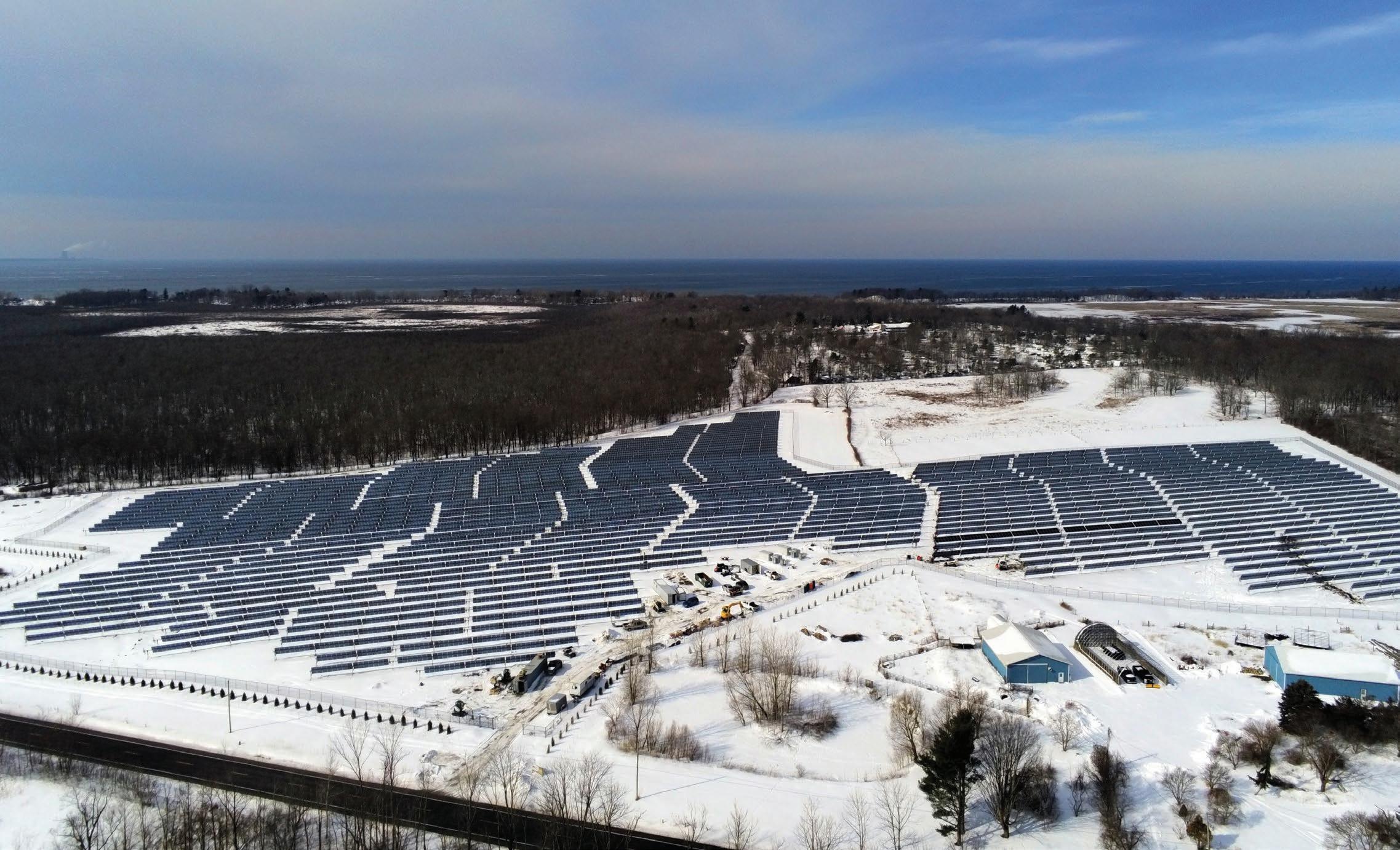
GROUND SCREW FOUNDATIONS ARE IDEAL FOR SITES WITH GLACIAL TILL, COBBLE, AND SOLID BEDROCK.


RACKING SYSTEMS DESIGNED TO FLOW WITH TOPOGRAPHY.

419.267.5280 | SALES@APASOLAR.COM
ENGINEERING FOR
TM
US AT #906 BOOTH
OPTIMIZED
EACH PROJECT.
SEE
On our cover…
Baja designs, engineers, supplies, and installs solar carport and RV canopy systems nationwide, which reduce greenhouse gases, promote sustainability, optimize performance, and generate solar revenue. Its flagship project, Oakley Executive RV & Boat Storage, built on 15 acres, houses over 260,000sq/ft of raised solar systems and produces 6,324,800kWh annually. Baja

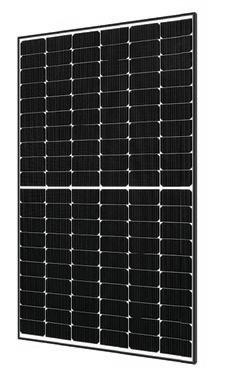

2022 SEPTEMBER• OCTOBER
meg@nacleanenergy.com


ART DIRECTOR Chris Van Boeyen production@nacleanenergy.com
SALES
Ian Stuart istuart@nacleanenergy.com

Quinn Stuart quinn@nacleanenergy.com
Don McIntosh dmcintosh@nacleanenergy.com
Keaton Spence keaton@nacleanenergy.com
Ben Mitchell ben@nacleanenergy.com
CIRCULATION MANAGER
James Vail circulation@nacleanenergy.com

ACCOUNTING
Alison Bell abell@nacleanenergy.com
255 NEWPORT DRIVE, SUITE 336 Port Moody, B.C. V3H 5H1 Phone: (604) 461-6223

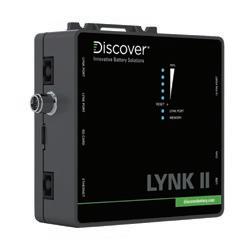
North American Clean Energy (USPS 1370) is publishing bi-monthly and distributed free by Action Media Ltd. Periodicals postage paid at Henry, IL. POSTMASTER: Send address changes to North American Clean Energy at 515 University Ave. Suite 1, Henry, IL 61537. Subscription updates can be made at circulation@nacleanenergy.com
North American Clean Energy accepts no responsibility or liability for reported claims made by manufacturers and/or distributors of products of services; the views and opinions expressed are those of the authors and not necessarily those of North American Clean Energy. No portion of this publication may be reproduced without the permission of the publishers.


Editorial, Advertising, Production, and Circulation are at 255 Newport Drive, Suite 336, Port Moody, B.C. V3H 5H1 (604) 461-6223. Subscriptions: $89 per year outside North America. Email: circulation@nacleanenergy.com
Volume 16, Issue 5 Twitter.com /nacleanenergy LinkedIn.com/Company /north-american-clean-energy
Carports
/ bajacarports.com 7 Tips to Reduce Money, Time, and Stress Practical advice for utility-scale PV + BESS control system development and commissioning Pg. 14 Plus Show-in-Print Features: RE+ 2022 Pg. How V2G Reduces Emissions Pg. Growing the Lithium Industry in North America Pg. 106 Grid Operators Prepare for the New Normal Pg. Sustainable Path Towards Succession Pg. US Offshore Wind Outlook VOLUME 16 ISSUE 5 8 Sustainable Path Towards Succession 10 Solving Solar’s Biggest Challenges 12 From Landfill to Solar Farm The unique challenges and opportunities of turning waste into a clean energy asset 14 7 Tips to Reduce Time, Money, and Stress Practical advice for utility-scale PV + BESS control system development and commissioning 16 Unique Roof Design with Minimal Environmental Impact 18 Corrosion in Solar Support Structures 20 Design for the Site, Not the Racking 22 Rooftop PV Project Permitting 24 Helping Tenants Access Clean Energy Market factors, demand, and favorable legislation will bolster growth for clean technologies across the single-family rental sector 26 DC-Coupled Solar plus Storage Electrical system design challenges 34 Solar Product Spotlight: Modules 38 Solar Spotlight: Architectural Solar 40 Show-in-Print: RE+ 2022 80 US Offshore Wind Outlook 82 Offshore Forecasting 84 Detect Lightning Blade Damage Early 86 Managing Wind Service in a Constrained Labor Market 88 Compliance with NERC = Higher Margins of Reliability 90 Make Your Wind Turbine Last Longer How foundation and tower monitoring can extend the life of a wind turbine 92 Can Vibrations be Good for Business? 94 GIS Speeds Up Site Selection The push to decarbonize energy infrastructure is a race against the clock. GIS offers a way to jump ahead. 96 Gauging the Wind Floating lidar and new wind energy frontiers 100 Wind Product Spotlight: Cranes & Heavy Lift 101 Wind Service Spotlight: Transportation & Logistics 104 How V2G Reduces Emissions 106 Growing the Lithium Industry in North America 108 Transitioning to Electric Equipment 110 The Story Begins with Energy Throughput 112 Power Outages, Resilience & Energy Storage Safety & transparency in battery energy storage systems (BESS): UL 9540A & 9540 116 Grid Operators Prepare for the New Normal 44 Show-in-print: RE+ 2022 36 Solar product spotlight: Modules 114 Energy storage product: Discover Battery Unique Roof Design for Minimal Environmental Impact 16 CONTENTS The Story Begins with Energy Throughput 110 Can Vibrations be Good for Business? 92 DEPARTMENTS 8 Top story 10 Solar energy 34 Solar product spotlight: Modules 38 Solar spotlight: Architectural Solar 40 Show-in-print: RE+ 2022 42 Wind power 100 Wind product spotlight: Cranes & Heavy Lift 101 Wind service spotlight: Transportation & Logistics 104 Energy storage 116 Energy efficiency 118 Events calendar & advertisers list 4 2022 SEPTEMBER• OCTOBER /// www.nacleanenergy.com SIGN UP FOR YOUR FREE SUBSCRIPTION Information will remain strictly confidential. FOLLOW US ON Visit our website for new subscriptions, renewals, or change of address. Pr nted on paper w h 90% ecyc ed ber P Recycled Logos_Layout 1 10/20/09 1:40 PM Page PUBLISHER Ian Stuart istuart@nacleanenergy.com
PUBLISHER Quinn Stuart quinn@nacleanenergy.com EDITORS Jill Walters editor@nacleanenergy.com
Lugaric
//
ASSOCIATE
Meg


1.800.366.9600 : BAJACARPORTS.COM : EWF@BAJACARPORTS.COM • Built better in the USA for over 40 years by our own unmatched Baja-Certified Construction Teams • Fully Integrated Solutions with in-house Baja Engineers for faster, easier projects • Pre-Fabricated Framing Systems with Bolted Connections - No field welding • Snow Loads from 20psf to 100psf - Wind Speed rated to 175MPH • Over 40MW built per year EXPERIENCE \ EXPERTISE \ ENGINEERING \ ABOVE ALL ELSE BAJA builds them better with in-house Sales, Engineering, Project Management and Installation Crews Since 1981 VISIT BAJA IN BOOTH #904 AT THE RE+ CONFERENCE IN ANAHEIM - SEPTEMBER 19-22ND OAKLEY EXECUTIVE RV & BOAT STORAGE OAKLEY, CALIFORNIA 269,714 SQ FT 551 SPACES 3.5 MW
The recent passing of H.R.5376, the Inflation Reduction Act (“IRA”), has extended the Investment Tax Credit (“ITC”) for solar, and reinstated the Production Tax Credit (“PTC”) for solar through at least the early 2030s. While this legislation is designed to offer tax credit monetization incentives that encourage investment in new utility scale solar projects, basic challenges that face developers remain.
A June 2022 Science Direct study examined 53 utility-scale wind, solar, and geothermal energy projects in 28 U.S. states, that were delayed or terminated between 2008 and 2021. Researchers found that 34 percent faced significant delays and difficulties securing permits, 49 percent were cancelled permanently, and 26 percent resumed after being stopped for several months or years.
A major challenge in project financing is the perception that renewable energy projects are high-risk. The statistics presented in the Science Direct study certainly justify this assumption. That is why due diligence and fatal flaw analysis are critical at the outset. A comprehensive risk analysis framework provides a decision-making matrix defining the critical factors that must be considered, in order to reach a sound decision. It addresses the goals of the investors to ensure that the financial realities of the project are clearly delineated at the outset, and transaction milestones are met. It instills stakeholder confidence, because vital data is easily accessible throughout the development and financing continuum.
Key factors in the decision-making matrix should include:
• Off-taker review and evaluation of the time required for the off-taker to build the transmission line to ensure that it meets project completion deadlines.
• Analyzing the regulatory and tax incentive environment of the project.
• Assessing high-level risk factors associated with the project.
• Examining site feasibility and identifying potential sources of public impact or opposition.
• Assessing the surface vs. subsurface of the land for mineral development.

• Evaluating project impact, if it includes indigenous or tribal lands.
• Conducting a transmission analysis, including load and transmission capacity, to obtain an energy yield assessment.
• Conducting a comprehensive permitting and jurisdictional review.
• Initiating a title search and review.
• Conducting a compliance review to ensure that the project adheres to relevant regulations.
• Overseeing site control to ensure that executed leases or options and easements are in place, and that power can be exported into the grid.

• Structuring a comprehensive timetable for various phases of development. A meticulous business case assessment recognizes the goals of the investors to ensure that the financial realities of the project are clearly addressed. This considers both technical viability and environmental impact, as well as long-term financial soundness. A detailed decision-making matrix diminishes the potential that risk factors will be overlooked. Vigilant due diligence is a critical investment in the success and resilience of every renewable energy project.
Our Guest Editor is Kimberlee Centera, CEO, TerraPro Solutions. Kimberlee is a leading risk management expert for the development and financing of largescale generator energy projects. Under her leadership, TerraPro Solutions has generated over 12 GWs in solar, wind, and energy storage.

TerraPro Solutions /// terraprosolutions.com
A ferry ride set to mark a new Guinness World Record

Electric ferry, Ellen, sailed 50 nautical miles (92km) on a single battery charge during the International Energy Agency’s 7th Annual Conference on Energy Efficiency. The distance marks a new world record. The islands of Ærø and Als in Southern Denmark are connected by Ellen, a long ranging fully electric ferry. Ellen set a new world record on June 9 just outside the windows in Sønderborg, Denmark, where leaders from industry, government, and civil society joined the International Energy Agency (IEA) for the 7th Annual Global Conference on Energy Efficiency. On her return from the conference, where participants explored how international ambition on energy efficiency can be translated into faster and stronger real-world progress, Ellen reached a total of 50 nautical miles (92km) on a single battery charge. Ellen does not emit carbon and operates at 24% lower cost than a new diesel ferry. She started sailing in 2019. Danfoss has supplied electric Editron drivetrains and propulsion motors for the ferry.
Danfoss A/S /// www.danfoss.com
Capture CO2 directly from the air
EDAC Labs is commercializing an electrochemical Direct Air Capture methodology, developed by Chao Wang, Associate Professor at Johns Hopkins University, that will capture CO2 directly from the air for utilization and sequestration. Dr. Wang’s team have devised a novel approach to DAC incorporating an electrochemical process which can be 100% powered by renewable energy sources. The resulting process greatly reduces energy consumption and the cost of carbon capture. The aim for this technology is to capture CO2 for less than $100 per ton. Following the successful lab-scale demonstration of its electrochemical DAC technology, Dr. Wang’s team will receive funding from the Johns Hopkins Ralph O’Connor Sustainable Energy Institute to build a demonstration project on campus that is capable of capturing approximately 40 tons of CO2 annually. EDAC Labs was awarded the $1000 grand prize from Maryland Department of Commerce at the Maryland Energy Innovation Accelerator Pitch Event.
Maryland Energy Innovation Accelerator /// mdeia.org
Mobile boombox
ROXBOX’s Coca-Cola BoomBox is a giant solar-powered boombox built out of an upcycled 20' shipping container and transforms into an interactive marketing experience at each location it stops. Key features of the BoomBox include: an interactive DJ experience where guests can learn to DJ, sound-activated LEDs, speakers that bump, a VIP rooftop deck, and interchangeable graphics for different Coca-Cola brands and marketing initiatives. The BoomBox is an immersive experiential marketing asset that is fully solar-powered so it can go anywhere.
ROXBOX Containers, Inc. /// www.roxboxcontainers.com

6
GUEST EDITOR'S NOTE
NEWS BITES 6 2022 SEPTEMBER• OCTOBER /// www.nacleanenergy.com
STEEL SOLUTIONS FOR A SUSTAINABLE FUTURE
As North America’s most diversified steel and steel products company, Nucor is committed to delivering quality, on-time reliability, and sustainability to the renewable energy market. Our Energy Solutions team is your partner in optimizing the design and installation of your next solar and wind projects.
Let’s work together to make your next project a success.

Sustainable Path Toward Succession
by Blaine Bagley
As a business owner, you've spent years building your business and hiring the right people for the right job. That responsibility doesn't end once you decide to step away; in
important. In this article, we'll take a closer look at some of the roadblocks
when creating a succession plan, as well as the steps that you should take to help ensure the future success of your business.
Common Roadblocks
…Starting
to plan too late
Chances are, you have a lot happening on any given day, and that may not include planning for succession — until it's too late. Before you start planning for retirement and beyond, you need to seriously begin thinking about what's going to happen once you're gone. While there's no cut-anddried answer on how long this can take, on average, you should plan on an effective succession plan taking anywhere from 12 to 36 months, from beginning of planning to completion.
…No formal plan in writing
Simply having verbal promises in place isn't enough for an effective succession plan. Everything pertaining to this plan should be put down in writing. A written process, such as who will be taking on what, what important aspects of the business will be affected, and the value of your company should be included here. Never assume that important information, such as internal processes, is widely known by others within your company. Include detailed information about your role and responsibilities within your succession plan.
…Not involving professionals
With a succession plan often comes legal implications. If you take the necessary steps to prepare for these issues as soon as possible, the smoother the transition will be. If you're not already working with a business attorney by the time you start planning succession, this is a great time to start. Moreover, when a business changes hands, there may be additional taxes that are owed, which correlate with the value of your company. When this valuation process is done correctly, with the help of professionals, it will make it much easier to figure out how much is owed.
…Choosing family as successor
77 percent of small businesses in the United States are familyowned. This can add an additional layer of difficulty when it comes to choosing someone to take over the company. In fact, almost 75 percent of family-owned businesses fail to pass beyond the first generation of owners; that number increases to 85 percent by the second generation, with 95 percent failing beyond that. These numbers can be tied back to a number of factors, including family conflicts, informal leadership roles, lack of communication, and more. Before you decide to have a family member take over, gauge their willingness and qualification to be a part of the next chapter.
…Pushback from the inside
If those within your business push back against your plan, the chances of it being successful narrow down. While there's no way to make every single person 100 percent happy, you can make compromises (where possible) to help ensure people are onboard. For example, you can identify more than one person to potentially take over a role, and then come up with a list of criteria with other decision-makers to give everyone a fair chance to take over.
5 Steps for Creating a Succession Plan

Because every business is built differently, there isn't a "one-size-fits-all" solution for succession. There are, however, general steps you can take to help ensure a smooth and easy process. A succession plan isn't a one-and-done process. It should be thought of as a living document that needs to evolve with your company when new challenges and issues arise.

1. List out the challenges that both your business and industry may face
You've been around long enough that you've faced and overcome a lot of adversity. By identifying the challenges your business may face in the future, you can come up with the right moves to combat them beforehand, helping you to save time and resources. Break these down into short-, mid-, and longterm issues. The more specific these are to your business and industry, the better prepared you'll be.
TOP STORY
8 www.nacleanenergy.com AXIblackpremium XXL Energy for a better world
&
fact, it becomes even more
that business owners face
25 YEARS Warranty
Performance
2. Identify important roles within the organization







Throughout your tenure, you've worked closely with many in your company, so you know which members of your organization are critical to your success. With some of these replacements, you may know in advance that a role will need to be filled (such as a planned retirement), but in other situations, it may be a surprise. Either way, it helps to have a contingency plan in place to replace these roles quickly, helping to reduce knowledge gaps.

3. Target potential replacements for these roles










Once you identify the employees that will potentially need to be replaced, you can come up with a plan to find the best fit for them. Don't forget that the right fit may not be too far away. There are several benefits when it comes to promoting from within, including improved company morale, lower costs associated with the hiring process, and more empowered employees. Don't forget to include back-ups in the event your first pick is unable to take over.


4. Implement a career development plan
Once the employees and proper replacements have been identified, come up with a plan that is as detailed as possible. This should include a handover period, where the new person works alongside their counterpart, taking on more responsibility over time. Not only will this provide an employee with the opportunity to gain first-hand experience in the role, but it'll help capture the knowledge needed to be successful in that role, so you don't lose anything during the transition.

5. Finalize a transition timeline




Now that you've collected all of the pieces, it's time to put everything together. While you've taken every precaution during the planning, the unexpected can still happen. By creating a plan that allows for these hiccups, you're more likely to stay on track. If plans keep getting pushed out, it may cause people to seek opportunities elsewhere, putting you and your plan back at square one.
Blaine Bagley is SVP, Consumer Home Improvement Lending Operations, at EnerBank USA. EnerBank has years of experience in home improvement lending, and has developed products and services designed to meet the specific needs of homeowners and contractors alike.


EnerBank USA /// enerbank.com
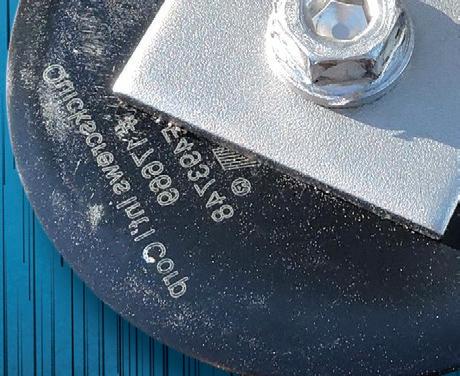








North American Clean Energy 9
Solving Solar’s Biggest Challenges
by Emily Obenauer
The supply chain issues and skilled-labor shortages plaguing the solar industry are very real, and they have indeed slowed the industry’s growth. But given the environmental, economic, and geostrategic forces aligning behind solar energy, the most pressing problem solar faces is to figure out how to deploy as many photovoltaic (PV) systems as humanly possible, as efficiently as possible.
Consider just a couple of data points. Experts estimate that, to get to net-zero greenhousegas emissions by 2050, we must install 455 gigawatts (GW) of additional solar capacity globally each year through 2030. For comparison’s sake, the total U.S. installed solar capacity stood at about 121 GW as of early 2022, and that of China – the world’s largest solar energy market – at perhaps 350 GW. In other words, each year, the world must now deploy roughly as much solar as has ever been installed in its two largest economies.

To get there, the solar industry must solve three major long-term challenges. First, it must reduce the soft costs that comprise more than 60 percent of residential solar PV system outlays. Second, it must turn projects quickly both to boost scale and stem the tide of project cancellations dogging the industry. Third, it must develop efficient supplier and subcontractor networks to enhance collaboration and efficiency.
Fortunately, a new class of intelligent software – collectively called solar deployment operations management – is arriving at just the right moment. These cloud-based solutions, which combine the strengths of project, asset, and work-management software, are capable of tracking and managing thousands of job sites, assets, and field crews in real-time, and much more. Let’s consider solar deployment management in the context of those three challenges.
1. Cut soft costs
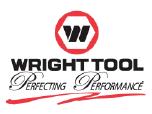
With respect to reducing soft costs, solar deployment management solutions include such features as standardized project templates, automated document generation, and easy-to-use mobile forms for field technicians. While every solar project has its unique


aspects (and these systems are customizable to reflect that), standardization along best practices cuts redundancy, avoids mistakes, and speeds the pace of work. These systems also manage site candidates, approvals, and drawings, and they match deployment assets with job sites to ensure that equipment is where it needs to be, when it needs to be there. They also centralize permitting workflows from submission to final approval, further cutting soft costs and shortening project timelines.
2. Turn projects fast
Shortening project timelines is an essential element of the second long-term challenge of turning projects quickly. The standardized templates and other features mentioned above also come into play here. So does the automation of complex business processes such as managing capital funding budgets, tax credits, and incentives, as well as the drawing approvals needed to get projects to closeout faster.
Solar deployment operations management systems do more than track. Their machine learning capabilities help forecast project milestones and overall completion times based on inputs from project managers, vendors, jurisdictions, and market conditions. Analytics deliver insights through tailored reports and dashboards, further improving project cycle times and field performance. These artificial-intelligence-powered systems can even help select the best vendors for specific jobs, and inform financing decisions.
Solar deployment operations management is playing a significant and growing role in financing, particularly in commercial solar. By providing granular visibility into dozens, hundreds, or thousands of projects, organizations can demonstrate a detailed track record and give lenders a true sense of the risks and probable ROI of signing on.
3.Build & sustain solar-deployment networks




Solar deployment management solutions also address the solar industry’s third longterm challenge of developing efficient supplier and subcontractor networks to enhance collaboration and efficiency. These systems bring contractors into the fold to enable collaboration on project schedules, job information and images, and site maps and history to deploy faster and at lower cost. Further, against a backdrop of skilled-labor shortages, these systems’ ability to place scarce resources at the right place at the right time is increasingly vital. The aforementioned standardized processes also embed industry and organizational knowledge into workflows that empower less-experienced staff to perform at higher levels, and with less supervision than otherwise possible.
Underpinning all the advantages of solar deployment operations management systems is the single source of truth their cloud architectures afford. Having one holistic system to manage sites, assets, field work, finance, and other functions brings far better visibility into operations, faster and more efficient deployments, and a quicker path to profitability than otherwise possible.
The days of relying on general construction management software, spreadsheets, or disparate systems for project management, financial management, asset management, field-crew management, and other functions must end if the solar industry hopes to achieve anywhere near the growth the market will embrace in the coming years. Solar deployment operations management systems will be essential in exploiting the vast opportunities – and overcoming the many challenges – ahead, as the solar industry strives to fulfill its enormous potential in realizing our clean-energy future.
Emily Obenauer is senior manager, Product Marketing, Energy, at Sitetracker. She has 14 years working across various facets of the energy and sustainability sectors. During that time, she’s worked with and for utilities, associations, government agencies and laboratories, endto-end smart grid vendors, Smart Cities, energy storage developers, renewable energy developers and brokers, green financing suppliers, and global sustainability consultancies supporting net zero ambitions.

Sitetracker /// www.sitetracker.com




SOLAR ENERGY 10 2022 SEPTEMBER• OCTOBER /// www.nacleanenergy.com
Primoris Renewable Energy is a leading power generation EPC (Engineering, Procurement, Construction) specializing in Utility and Commercial Scale Solar Power, Power Delivery, Solar Repower, Operations & Maintenance, and Energy Storage. We are dedicated to doing the right thing for our customers, our people and our planet
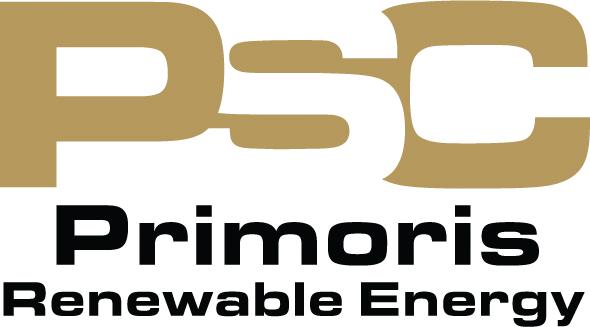
From our ESG commitment to building renewable energy facilities, we are shaping America for a more sustainable future for generations to come.
WHY WE'RE DIFFERENT WANT TO WORK WITH US?
Inspired by our customers, we are continuously growing our service offerings in Renewables. We have a unique ability to design/build beyond our core services by utilizing other Primoris specialized companies. We can combine or independently design/build Substations, Transmission, Renewable Fuels, and Blue/Green Hydrogen.
OUR RENEWABLE CAPABILITIES

- Project Feasibility
- Engineering & Design
- Energy Modeling
- Pre-Construction
- Supply Chain Procurement
- Self-Perform Construction
- Plant Testing & Startup
- O&M Services
- Repower Services
Primoris has a culture dedicated to our people, their safety, the quality of our work, and achieving operational excellence. We pride ourselves on shaping our service offerings that achieve the highest value for our clients.
We are growing excellent business leaders of tomorrow. Please send your resume to preopportunities@prim.com
From Landfill to Solar Farm
by Mythri Anumula and Paul Guzowski
What is one of the most intriguing U.S. solar development opportunities involving thousands of otherwise unusable sites ready for dozens of gigawatts’ worth of solar energy projects? The answer lies on oftenforgotten, vacant acreage found in communities around the country: solar farms on capped and closed landfills.
Rocky Mountain Institute’s recent report, “The Future of Landfills Is Bright,” puts the solar market potential of capped landfills at 63 GW in the near future—enough generation of power to light up 7.8 million U.S. homes. Yet, so far, only 500 megawatts (MW) of solar projects on landfills have been built. Most of these are in Massachusetts, Connecticut, New Jersey and New York. States like California, Texas and Illinois have yet to see many of these landfill sites developed for their clean energy generation potential.

Landfill solar benefits and challenges


In addition to the obvious positives - clean energy, decarbonization, and pollution abatement - there are other benefits of solar farms on landfills. The projects create construction and operational jobs, put otherwise unused or underused land to productive use, generate tax revenues for local and regional governments, and provide lease revenues for landowners. These projects also typically avoid landuse restrictions and challenges from NIMBYism that derail some clean energy projects.
But developing, building, and interconnecting solar arrays on landfills is not a cookie-cutter endeavor— no two projects are engineered alike. Each project requires careful and consistent coordination among local governments and communities, property owners, utilities and developers, engineering, procurement and construction (EPC) firms and their subcontractors, as well as other stakeholders in order to reach a successful outcome. Developers and EPCs that have experience in successfully deploying solar on landfills can help ease the challenges. Collaboration and clear channels of communication are critical, especially between the utility, developer, and EPC engineering teams, all the way from design to permission to operate (PTO).
Don’t mess with the membrane
When planning a solar project on any closed landfill site, there’s one golden rule: the membrane or liner of the capped landfill cannot be breached or compromised in any way during the construction and operation of the PV (photovoltaic) array. The release of methane, carbon dioxide, or other hazardous materials from the closed landfill would be a nonstarter, both in terms of safety and the structural integrity of the system. Site earthworks and grading must be limited, ground settlement accounted for and avoided where possible, and site characteristics such as shading, flood plains, and terrain undulation must be engineered into the system.
With these limitations, landfill sites require thoughtfully designed PV systems that do not penetrate the ground on the capped area, starting with ballasted racking systems with low weight loads. Inverters, transformers, and other equipment must be positioned for both maximum system performance and minimal site disturbance. For some landfill projects, the grid substation should be located close to the site; trenching and cabling often has to skirt the edge of the landfill caps to reach the interconnection points.
Case Study: Belleville Solar Landfill
One of the more notable recent capped landfill solar projects is located in Belleville, Ill. The 13.3 MW-DC ballasted, fixed-tilt ground-mount system is one of the largest of its kind in the U.S. It was completed and connected to the local utility grid in late 2021, and is now generating enough electricity to power more than 2,160 area households. The project involved a sub-transmission interconnection, which is a high-voltage system that takes power from the higher voltage transmission system and reduces it to a lower voltage for more convenient distribution to nearby load centers.
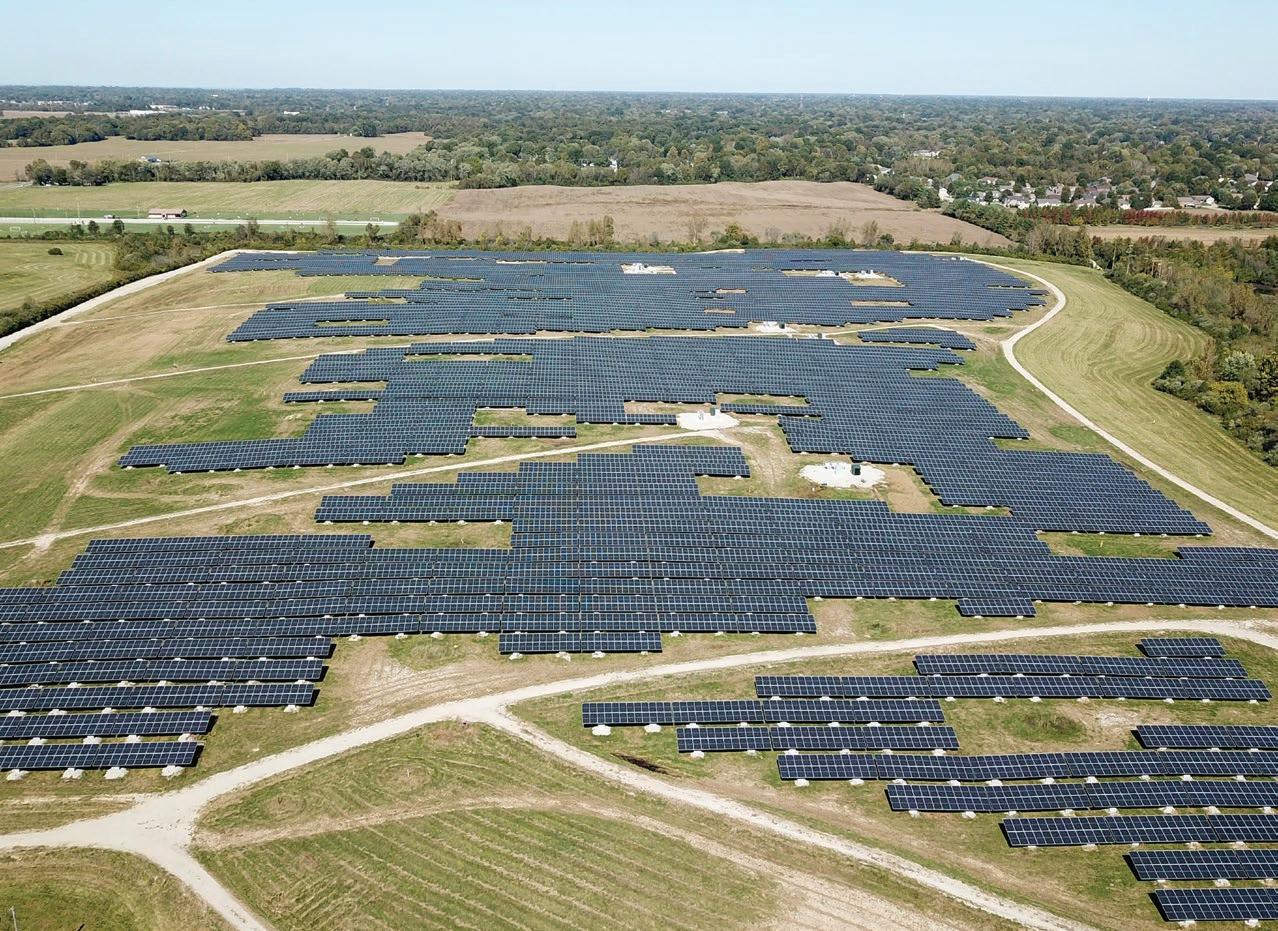
SOLAR ENERGY
The unique challenges and opportunities of turning waste into a clean energy asset
12 2022 SEPTEMBER• OCTOBER /// www.nacleanenergy.com
Close collaboration is key
During the course of the Belleville project, frequent communication became critical to share expertise in large-scale solar design and understand interconnection requirements. It took a year of close collaboration to finalize specific technical requirements, such as protection schemes and relay settings, before the project reached PTO and the system was ready for witness testing.
The Belleville project required the development of interconnection policies and procedures for the solar farm’s subtransmission system, which feeds power to the distribution grid. Since the output of the Belleville facility was large, it had to be put on a 34 kV system, the backbone for all the distribution-level voltages that directly serve the utility’s customers. The ultimate goal was to ensure that the project would maintain high service reliability levels.

Another key challenge on the Belleville site involved the line electronic recloser, a utility-scale circuit breaker designed to disconnect the site from the grid after detecting abnormalities. The size of the project required adding the recloser, which is typically not needed in smaller, more standard solar plants. The team had to determine the range of potential anomalies the recloser needed to detect for the required settings to be finalized. This complex process helped to reassure the developer that the implemented protection schemes would be effective.
Unique EPC challenges
Each capped landfill project presents its own set of unique engineering and construction challenges, and the Belleville site was no different. Here are some examples:
• Precast ballasted foundations were used to secure the arrays without penetrating the landfill.

• Eleven separate transformers were installed for this project to distribute the weight more evenly, rather than the one to three typically used for a non-landfill project of this size.
• Cable trays were employed instead of trenching or boring electrical wires.
During the construction process, the team had to be careful to not have any heavy machinery on the landfill site and work around the landfill cap. The facilities could only be built in designated areas, since trucks and equipment could only go through specific routes to install and maintain the facilities. Additionally, all the equipment to the site had to be transported using a specific type of dump truck instead of the cranes and larger trucks typically seen with non-landfill projects.
Lessons learned
The larger-scale Belleville project reinforced the benefit of establishing a collaboration between the utility and an experienced solar EPC in order to refine the process and mitigate challenges. As more utilities work with solar projects of this size, a focus on safety at all stages is critical to the project success, from the planning and construction to the policies and procedures for the system to operate. Finally, close collaboration between the EPC, utility, and system owners is a key indicator of overall project success.
Mythri Anumula and Paul Guzowski are electrical engineers at Borrego. Borrego has spent the last 40 years developing, optimizing, delivering, and maintaining large-scale solar and storage projects. The Belleville project was developed and is owned and operated by The AES Corporation (AES). Republic Services owns the landfill. The project is connected to the Ameren Illinois utility grid.
Borrego /// www.borregoenergy.com
North American Clean Energy 13
Tips to Reduce Time, Money, and Stress
Practical advice for utility-scale PV + BESS control system development and commissioning
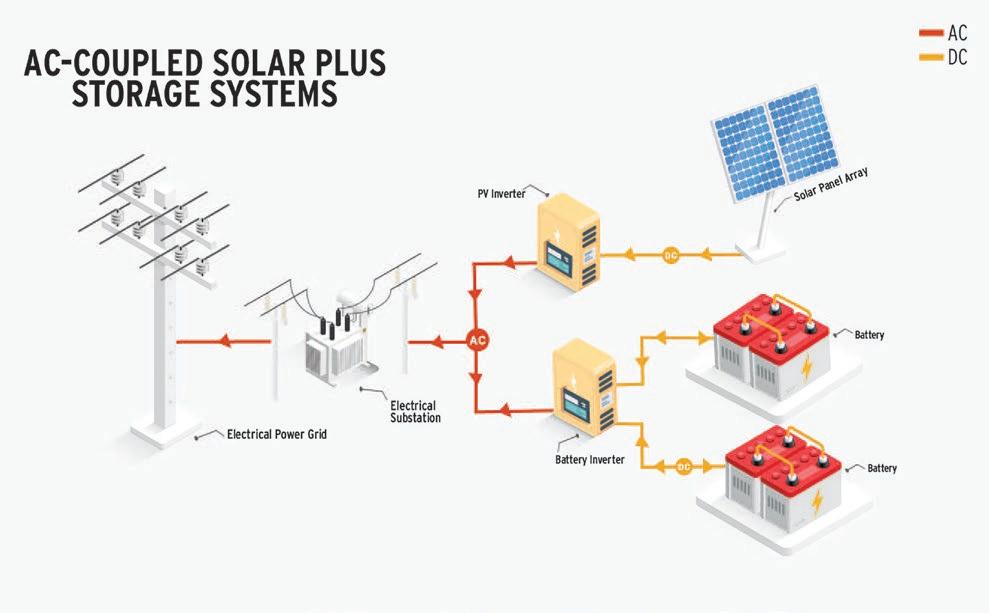 by Allan D. Evora
by Allan D. Evora
One of the keys to unlocking the full potential of renewable energy is battery energy storage. Nowhere is this more evident than when coupled with photovoltaic (PV) power plants. According to the U.S. Energy Information Administration, battery energy storage capacity tripled in 2021. Additionally, 93 percent of the battery capacity added last year was co-located with solar.

It’s said that the only thing better than learning from your own mistakes is learning from someone else’s. There are two primary architectures for coupling BESS with PV: DC-coupled and AC-coupled. The following tips are based on lessons learned from developing and commissioning AC-coupled BESS and PV projects (Figure 1).
Tip #1: A control system functional specifications is a must
Generally, the project design package will include a detailed design for the substation, the PV array, the BESS lineups, and communications for control and SCADA. Projects with the highest success levels will also include a comprehensive control system functional specification, a document detailing the control system's capabilities, constraints, appearance, and user interaction.
The requirements for how the controls system will meet interconnection agreement (IA) and power purchase agreement (PPA) power plant requirements will be contained
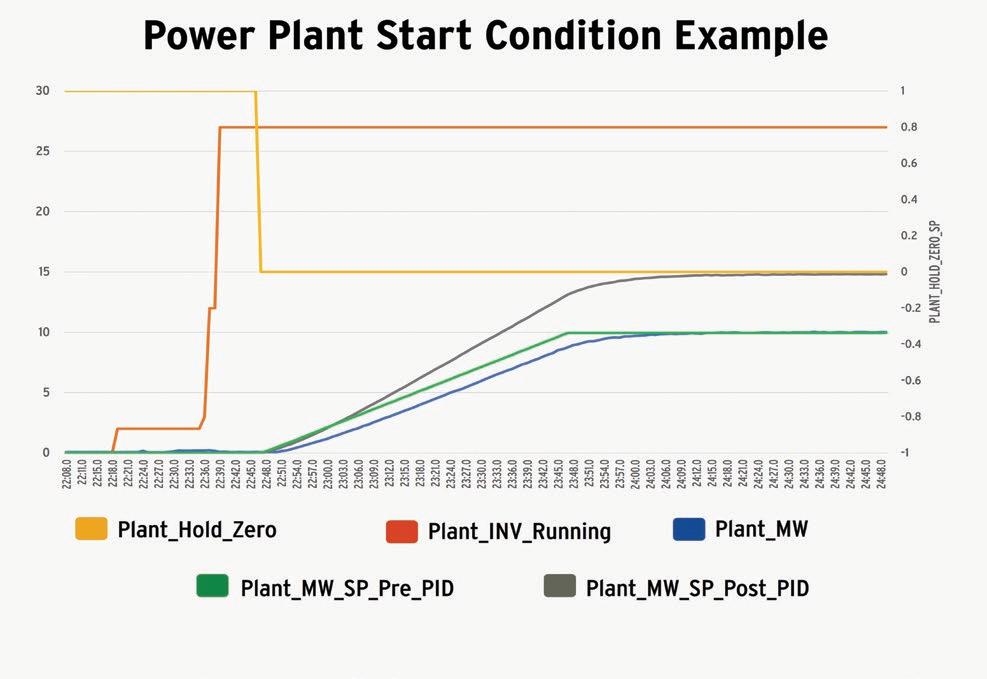
within the specification. Using the functional specification, the system integrator develops a detailed plant control narrative (PCN) and SCADA design, along with an itemized quality assurance checklist. System integrators that begin design and development without a functional specification will risk significant rework and project delays during system commissioning.
Tip #2: Require a Factory Integration Test (FIT) for new products
Lack of product maturity and market volatility represents a significant risk to system integrators. Executing a factory integration test (FIT) prior to, or within the project, is one way to mitigate this risk. Typically, the owner and engineer of record participate in the FIT. As part of the FIT, the system integrator will configure the SCADA system's power plant controller and elements to verify the factory's functionality and performance.
A detailed test procedure is developed and agreed to in advance by all parties. The system integrator and manufacturer conduct and document the test, making adjustments along the way. It's important to document the equipment firmware revision at the end of the test, as any modifications moving forward can significantly impact future commissioning. The FIT is also the perfect opportunity for the system integrator to develop a relationship with support personnel, thus, streamlining future support.
Tip #3: Pin down electrical metering early in development
Electrical metering is critical to the operation of any power plant – for both revenue tracking purposes, and providing the primary feedback variable for power plant control. Therefore, most designs include both primary and backup meters. In addition, virtual (calculated) meters may be required to satisfy the functional requirements. Additional considerations include using compensated or uncompensated values within the control algorithm.
Meters must be configured appropriately for voltage, current, and power flow direction. Furthermore, the correct assignment of analog outputs is important if hardwired inputs to the control system are required. Substation end-to-end testing is the ideal time to test and verify metering, as the engineer of record is typically on-site, and issues can be quickly resolved and easily documented.
Tip #4: Don’t forget about the mechanical systems¬
PV+BESS are predominantly considered electrical systems, but your power plant will operate at less than optimal if mechanical systems are not properly managed, operated, and maintained. For PV, this can include the tracker system. For BESS, this includes the container systems for climate control, fire suppression, and access. The system integrator should refer to the control system functional specification to determine the systems and points that need to be integrated for the mechanical systems.
SOLAR ENERGY
7
Figure 1: AC Coupled BESS and PV
14 2022 SEPTEMBER• OCTOBER /// www.nacleanenergy.com
Figure 2: Use High Resolution Trending to Tune Controls
Most of these systems will be provided as packaged systems. For systems that do not come with packaged controls, the system integrator may need to account for the control within the control system design and development. Like the electrical systems, the mechanical systems must be thoroughly commissioned. Tracker systems not operating properly will result in reduced system output; problematic BESS mechanical systems result in higherthan-expected auxiliary loads reducing battery system capacity. Lastly, don’t forget to test the fire suppression system, as this system is important to suppressing a thermal runaway condition.
Tip #5: Verify networks before hot commissioning of field equipment

This tip sounds intuitive, but it should be a high priority on the control system pre-startup checklist. Network cabling integrity is easy to confirm, and can significantly reduce time wasted isolating and troubleshooting communication issues, especially considering that most utility-scale solar farms are a minimum of 200 acres, with the largest plants in the 1000s. Reducing the time in the field, not to mention exposure to environmental conditions and safety hazards in extreme locations, will lead to a more positive commissioning experience.
Recommend that the data-comm installer provide reports as evidence that cabling has been terminated and tested. Get to know the field team that is performing cold and hot commissioning of the equipment; they can save you time in the field if they are able to assist with verifying equipment communications.
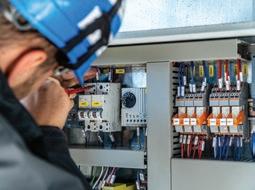

Tip #6: Take advantage of early power plant testing


Most plant controls can be tested with only partial operation. Electrical systems are generally organized based on substation feeders. Start plant control testing when the first feeders come on-line. This approach allows more time for verification, documentation, and remediation. Resources are more readily available at this point in the commissioning process. Additionally, starting early allows system integrators to work around unpredictable conditions, such as equipment failures or weather conditions.
If you do choose to wait until the end, be prepared to endure significant pressure. Once all equipment is online, all priorities will be focused on the commercial operation date (COD) milestone. Remember, time is money!
Tip #7: Use high-speed trending when tuning control loops
During power plant testing, high-resolution data analysis is required to understand and tune control. Avoid the temptation to use the SCADA system historian. The issue with using SCADA is the latency along with the data resolution. Instead, use the highspeed trending capability of the automation controller for optimal results. Figure 2 shows an example of a plot for verifying the startup of a PV plant.
Allan Evora is a leading expert in control systems integration, and has worked in every capacity of the power and energy management project lifecycle. With over 25+ years of industry experience, he worked at the Boeing Company and General Electric before establishing Affinity Energy in Charlotte, NC in 2002. Affinity Energy is a turnkey systems integrator that designs, programs, installs, commissions, and supports renewable energy systems and mission critical infrastructure systems, such as emergency power supply systems and central energy plants.
Affinity Energy /// affinityenergy.com

TRANSFORMER SERVICES, ASSEMBLY, COIL REWINDING, OIL TESTING LAB & PORTAL
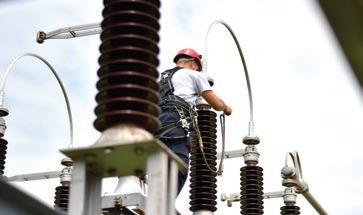

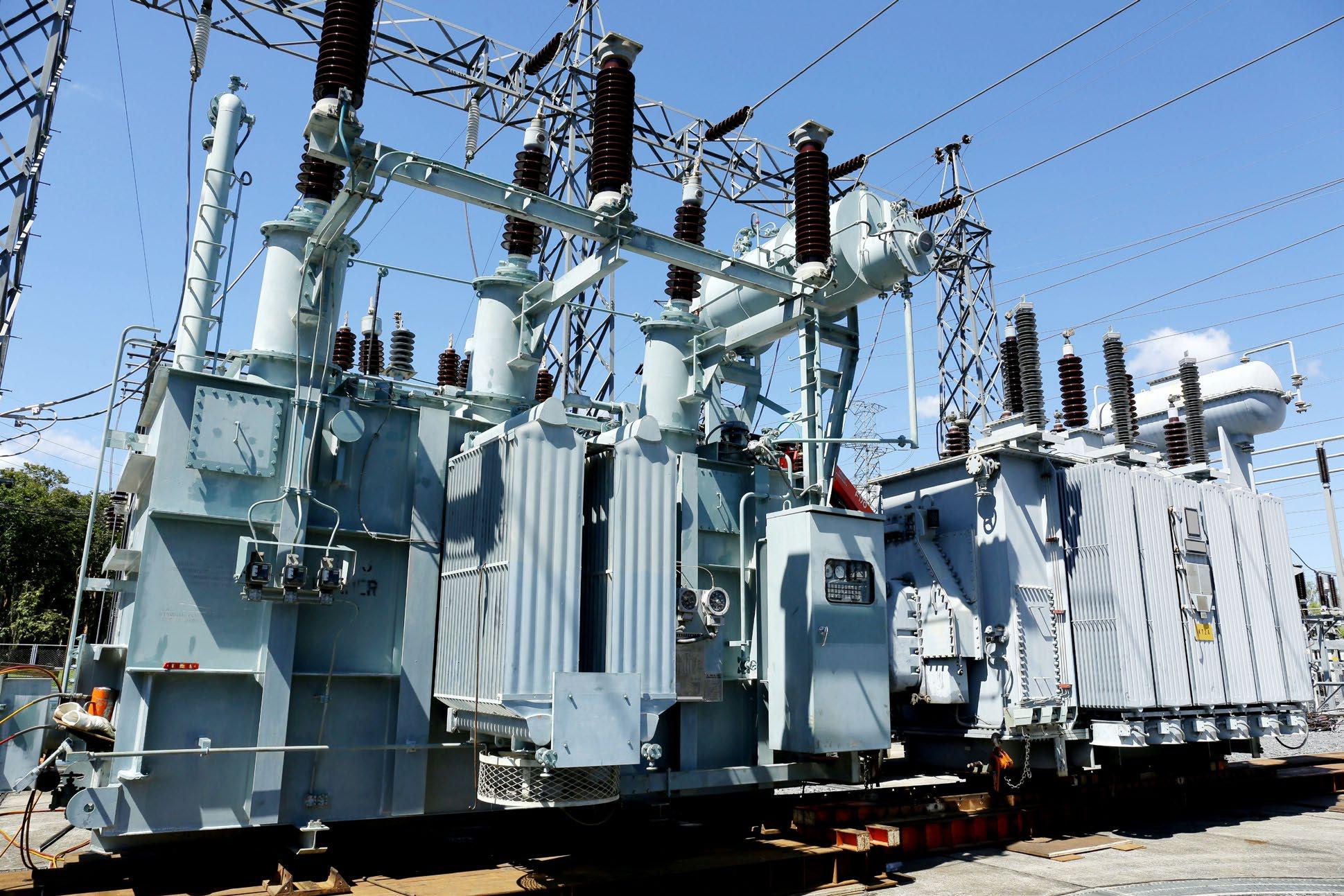
BROAD INVENTORY OF ELECTRICAL EQUIPMENT & COMPONENTS INCLUDING OLDER VINTAGE & HARD-TO-FIND
ACCEPTANCE TESTING, MAINTENANCE & REPAIR SERVICES
North American Clean Energy 15 MAKING TRANSFORMERS BETTER WITHOUT COMPROMISE Network with us on LinkedIn and follow us on social media as we routinely publish the most recent company news, share best practices, post open jobs, and more. www.resapower.com
RESA Power is the premier national provider of mission-critical power system solutions. Count on us to retro ll your transformer with biobased FR3® uid by Cargill for greatly improved re safety, more reliability, and up to 10 years of additional asset life. Ask us about FR3® uid for your next retro ll.
Unique Roof Design for Minimal Environmental Impact
 by Sam Everett
by Sam Everett
If reading, writing, and arithmetic are the hallmarks of excellent elementary school education, the Annie E. Fales Elementary School in Westborough, Mass., is one of the best, ranked in the top 20 percent for overall test scores among nearly 1,700 public schools in the Commonwealth. With its newly built, net zero-designed facility, the school has earned an A+ not only for the quality of education, but also for its impact on the environment.
The new school, designed by HMFH Architects of Cambridge, Mass., which specializes in educational facility design, is setting a precedent for energy-efficient design in educational facilities as the first net-positive energy public school in Massachusetts. In addition, the project has been recognized by a major roofing system manufacturer as a ‘2021 Project of the Year’ in the ‘Sustainability’ category for the outstanding roof installation by an approved contractor.
“The town of Westborough has a goal of becoming carbonemissions free by 2035,” said Caitlin Osepchuk, AIA, HMFH Associate. “The entire facility -- from its site on the side of a hill, and geothermal heating and cooling system, to its centralized energy management system designed to use one-third of the energy typically used in a school of this size, highly efficient curtain wall system, LED lighting, triple glazed windows, and its unique roof structure – was designed to minimize impact on the environment.”

The 58,000 square foot roof is indeed a unique aspect of the building, featuring 11 different raised sawtooth profiles each
designed to both “optimize the amount of natural daylighting in the classrooms, and to provide the best orientation for the building’s solar array,” said Osepchuk.
In total, the facility has over 1,350 solar modules, capable of producing 507.75 kw of electricity, said Stephen Coffrin, senior project engineer with Solar Design Associates of Harvard, Mass. The solar panels were installed on a rail-based system and secured to the steel deck with universal roof mounts.
The solar array was specified with modules rated at 375-watts each with half-cut cell technology to increase the energy output by reducing the size of the cells so more fit on the panel. Individual panels are ‘split’ in half, so the top of the panel operates independently from the bottom, which provides more energy even if part of the panel is in shade.
The modules are near the top of their class in overall efficiency at 21.4%, have industry leading warranties on their power output (25 years) and physical product (20 years), and are tested to withstand the increasing wind and snow loads associated with
New England weather (95 pounds-persquare-foot snow load, 55 pounds-persquare-foot wind load).
The monitoring system displays module level production, greatly increasing reliability, uptime, and reducing O&M costs. Consumption monitoring is also provided to allow load-to-generation ratios to be examined.

The roofing system, installed by Capeway Roofing Systems, Inc., of Westport, Mass., includes a 22-gauge metal deck, vapor barrier, two layers of 2.6-inch polyisocyanurate insulation, and a layer of tapered insulation over the top for positive drainage, all mechanically attached to the deck. A half-inch gypsum cover board is fully adhered over the top. The waterproofing layer is reflective gray 60 mil PVC membrane with an adhesive backing on the sloped portions of the roof, and 60 mil white PVC membrane on the flat sections.
We use lots of this membrane,” said Michael Correia, project manager for Capeway Roofing. “It’s a good time saver for us since you just lay it down and roll it in, and it’s easy to work with. Our guys really like it.”
The 11 sawtooth profiles range in overall length from 65- to 187-feet long, with slopes on the southern or solar panel side ranging from 21° to 30°, and slopes on the northern side for daylighting ranging from 54° to vertical. The individual sawtooth heights from the roof deck to the peak range from seven- to 12-feet.
SOLAR ENERGY
16 2022 SEPTEMBER• OCTOBER /// www.nacleanenergy.com
Courtesy HMFH Architects
The original goal for the Annie E. Fales Elementary School was to build a net-zero energy facility. Based on the early data collected, it is now fully expected that the facility will actually be net-positive energy by the end of the first year, using less energy than it generates, and earning a solid A+ on its first-year report card thanks to the great work by all involved.
Sam Everett is the Owner of SE Marketing. He spent over 13 years at OMG Roofing Products. OMG’s core business is manufacturing highly engineered roofing fasteners for virtually every type of roof substrate and roofing system. In addition, they manufacture insulation adhesives, roof drains, proprietary roofing technology, as well as various rooftop components including pipe supports and solar mounts.
OMG Roofing Products /// omgroofing.com

In addition to the membrane installation, the roofing contractor also installed about 1,600 of the universal solar roof mounts which can be used on any type of commercial roofing system and offer superb strength to resist tensile, shear, compressive and moment forces. The screws become load-bearing columns which work in both tension and compression, making the mounts ideal for managing moment forces created by gravity and snow load on a sloped roof. Additionally, the universal mount has two, independently functioning, water blocking systems designed to maximize long-term performance.
“We specified these mounts as they are ideal for the saw tooth application and offer the best strength and the best chance for the roof to remain watertight,” said Coffrin. “The product is designed with redundant barriers in the base plate and the top plate and then secured directly to the deck.”

Installing the 1,600 roof anchors on the slopes of the saw tooth structures meant that Capeway had to ensure that each was located properly for the solar rail system that would later be installed. Once the roofing membrane was installed, the solar specifier came back to the jobsite and snapped horizontal and vertical lines to precisely indicate where each universal roof mount was to be installed.
“Installation of the 1,600 solar mounts went faster than anticipated,” said Correia, who supervised the installation, “and we were impressed with the productivity. This was our first time with these specific units, and we liked the fact that there is nothing to heat weld, which made the installation more productive than we originally anticipated. It also helped the solar installation to start a bit early.”
Bracing, Anchoring & Cable Routing for Ground-Mounted Solar Arrays
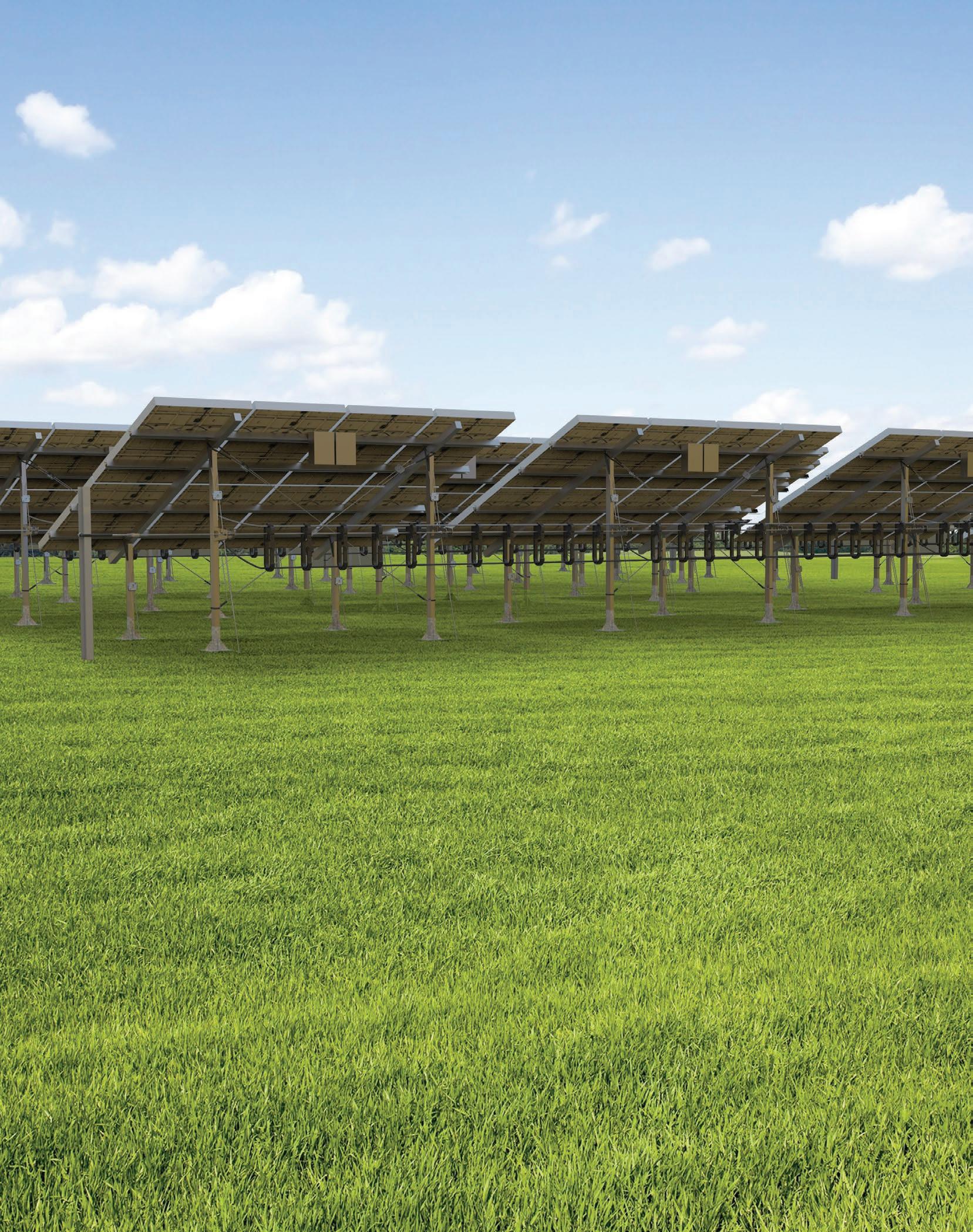
 Courtesy of Capeway Roofing Systems
Courtesy of Capeway Roofing Systems
Experience our full range of bracing, anchoring, and cable management products engineered to improve the stability and strength of ground-mounted solar arrays. Protects them against wind, storms, earth movements, and temperature expansion/contraction. Ready-to-use kits are easy to install, require only hand tools, and anchoring kits replace concrete methods. www.gripple.com SCAN THE CODE TO WATCH VIDEO PV Solar Bracing Kit PV Solar Anchoring Kit Cable Routing System Gripple Inc. 1611 Emily Lane Aurora, IL 60502 USA 1 866 474 7753
Corrosion in Solar Support Structures
by Mark Schlichting
Atopic of increasing interest in the fast-growing solar industry is corrosion abatement in solar support structures.


Corrosion is the deterioration of a material that results from a reaction with its environment. Experts estimate the economic impact of corrosion on an economy to be 3-6 percent of a country’s gross national product (GNP). According to the article "Economic Effects of metallic Corrosion in the United States", published in 1978 by the Battelle Columbus Institute and the NIST, contains calculation to determine the economic effect (equations), which was then used on data from 1995 to determine that year’s cost of corrosion: nearly $300 billion, or ~4.2 percent of GNP.
Since this early economic assessment, new coating technologies have been developed and applied to combat corrosion. These include metallic coatings such as zinc and zinc alloys, polymer-based coatings and paints, epoxies, sol-gel coatings, and hybrid coatings with high solids content applied by liquid or dry powder spray techniques.

Additionally, construction, assembly and building practices have evolved to combat corrosion, as has component design. This is particularly true for the automotive and construction industries. Designs are increasingly engineered for easy water runoff and drying, and there has been a significant reduction in metallic seams, laps, and joints where water, dust, and other contaminates can create corrosion cells.



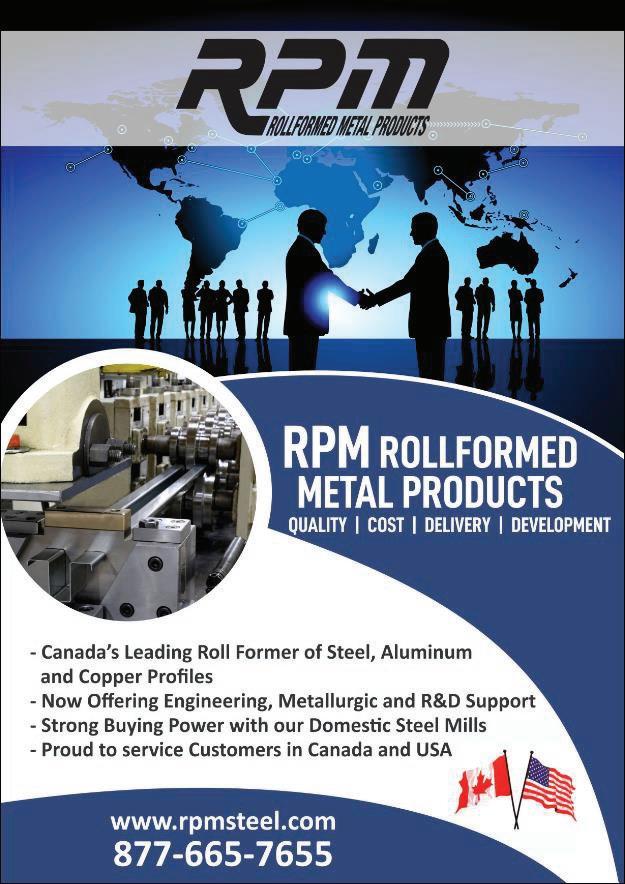

Figure 1 below depicts a solar pile, to which solar modules would be attached, where it is driven into the ground. Three primary zones of corrosion are shown – atmospheric, ground level, and below ground – each with differing rates of corrosion.

Atmospheric
In atmospheric corrosion, one should consider the location-based wet-dry cycles due to normal weather patterns. Locations near the ocean (< 2 kilometers) may be subject to chlorine ions from salt spray. In locations near industrial areas and highways, pollutants like sulfur increase atmospheric corrosion. Furthermore, higher ambient temperatures increase corrosion rates.
SOLAR ENERGY
RPM ROLLFORMED METAL PRODUCTS www.rpmsteel.com 877-665-7655 YOUR GO TO TEAM • Forming Steel-Stainless-Aluminum-Copper-Brass • Custom Profiles and Standard Shapes for Solar Racking • Take Advantage of the Strong US Dollar
Figure 1: various zones of corrosion.
The Alliance for Clean Energy New York Building New York’s Clean Energy Future
ACE NY, our partner organization the New York

O shore Wind Alliance (NYOWA), and our more than 100 member organizations celebrate another year of clean energy progress.
enough electricity to power more than 620,000 homes and spur $2.7 billion in private investment, creating an estimated 3,000 new jobs across New York State.

Anne Reynolds, ACE NY Executive Director, said:
“The announcement of 22 new clean energy project awards demonstrates that New York State continues its strong commitment to clean our electric grid, and the renewable energy industry is seriously stepping up to develop


New York State announces its third o shore wind solicitation: a minimum of 2 gigawatts leveraged with $500 million in public investments in ports and supply chain development. (New York already has five o shore wind projects under contract, with one under construction.)

Fred Zalcman, Director of the NYOWA said:


“This exciting announcement puts New York in position to achieve its ambitious, nation-leading o shore wind targets well ahead of schedule and frontloads the opportunities for the state to capture new supply chain opportunities and create high road jobs, all while addressing the existential threat of climate change.”

North American Clean Energy 19
Design for the Site, Not the Racking
by Arash Yazdani
As the solar industry looks to build in more challenging terrains, particularly colder climates, the potential for high impact and costly errors when designing must be considered in pre-project planning. Across the Northeast states and Canada, geotechnical investigations have identified several common project design pitfalls that can be avoided by following a set of best practices.


1. Prioritize risk management and reduce costs through proper site assessment
The entire industry is facing narrowing margins. As a result, managing risk and reigning in costs are key to a project’s success. One way to achieve this is to thoroughly understand your solar project site conditions; bringing in a well-trained geotechnical engineer early on in the project cycle will reduce the number of unexpected or unforeseen issues with materials procurement and site construction. This individual should have experience with the site’s climate and potential subsurface conditions, especially if you are going to be building in a colder climate, areas subject to high wind conditions, or those affected by seismic activity.
Geotechnical engineers will also help you to optimize your foundations; these are an untapped source of cost savings, and can provide outsized value for the cost of investment. Even such minor optimizations as pile lengths can result in significant savings when multiplied over the size of the site. Partnering with an engineering firm specializing in solar foundation design not only prevents issues, but is also proactive in increasing the value of your site.
2. When to bring in a geotechnical engineer
As a general rule, the larger the solar project, the more potential there is for site variations and complex subsurface conditions. For a microgrid site (300-600 kW), a modified geotechnical investigation is the recommended course of action, since the upfront investment in a comprehensive geotechnical investigation may not result in corresponding savings and risk reduction. The modified geotechnical investigation would typically result in more conservative recommendations. For any site smaller than 300 kW, a preengineered system should perform sufficiently well and not gain any savings from a geotechnical investigation.
Utility-scale sites (those larger than 600 kW) will benefit from a comprehensive geotechnical investigation; this provides a greater return on investment through reducing the steel costs, as well as greater confidence in the performance of the foundations. The cost of a geotechnical investigation is generally a smaller portion of the budget. A comprehensive geotechnical investigation includes soil testing on-site, in-situ pile testing, and a refined design optimized to the site’s particular conditions.
3. Let the site do the talking (not the racking supplier)
You may hear from a racking supplier that they recommend groundscrews or helical piles for a colder site. But, without a geotechnical report in hand, these recommendations may be more aligned to the foundations that fit their racking rather than the foundation design that will perform best when considering the site-specific subsurface conditions. Other solutions for colder climates, such as using technologies to reduce frost uplift through a frost sleeve or rigid insulating the pile with foam board, may result in embedment reductions that will often reduce cost while meeting engineering requirements.
4. Climate considerations
There are three primary climate considerations that can result in minor to severe damage to a solar project: frost and wind uplift, gravitational loading, and seismic loading. A seasoned foundation engineer will consider climatic loading in conjunction with subsurface conditions.

You can compensate for increases in frost or wind uplift loads by increasing the foundation size in two ways. Either embed the foundation deeper, or increase the cross-section size of the foundation. An additional measure to address frost uplift involves insulating the foundation, or installing a frost sleeve. This can reduce the load percentage to as low as 20 percent. It’s also an economical solution for weak soils.
A quick note on seismic loading: While generally less of a concern in the Northeast, even in areas with frequent seismic activity, its impact tends to be minor. Seismic loading results in fatigue over time through cyclical oscillations. It typically does not exceed racking tolerances. If this is a concern, larger foundations will help to stabilize projects in areas with high seismic loading.
5.
Subsurface considerations
Subsurface conditions can vary considerably from site to site, and even within the site itself. A geotechnical engineer will review the subsurface conditions and engineering classification of site soils, presence of obstructions or other deleterious materials, and groundwater conditions. For example, if the engineer finds organic-rich materials (which are often problematic for all foundation types), then the design considerations will be impacted.
The subsurface conditions impact several parameters of foundation design, including adfreeze pressures, frost design depths and susceptibility, corrosive nature, constructability, and in-situ moisture conditions.
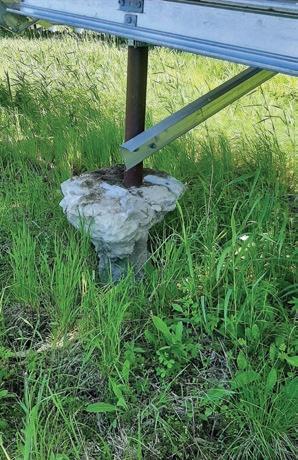
The climate (how cold the winters get and for how long) is important when designing for frost heave, but soil composition will also affect how deep frost penetrates the ground. Coarser, gravelly sands are more prone to frost penetration than less porous, fine-grained materials. The depth or size of the foundation will have to compensate for the soil conditions in addition to the temperature.
6. Types of foundations
The recommended primary and secondary foundations will differ depending on the climate, soil, and loading considerations mentioned above. Driven piles are the preferred solution, but for sites where you are unable to reach the required skin friction, helical piles will be a good alternative. The most versatile foundation type is a groundscrew; the riskiest is a micropile.
Before you decide on your solar foundation design, bring in a qualified geotechnical engineer early to the project. A qualified professional can help you understand the site conditions and manage the risk. Without engineering expertise, you may end up facing costly rebuilds or repairs.
Arash Yazdani is Director of Engineering for PRI Engineering, which has over 100 years of combined experience providing comprehensive geotechnical consultations, testing, and design for infrastructure, energy, environment, water, and resource management projects.

PRI Engineering /// priengineering.com
SOLAR ENERGY 20 2022 SEPTEMBER• OCTOBER /// www.nacleanenergy.com




Fluke tools are evolving to meet today’s needs…and tomorrow’s Accurate, reliable and safe tools for the solar workforce © 2022 Fluke Corporation. 08 / 2022 220557-en Visit Fluke at RE+ booth #173 Learn more about Fluke solar testers: solar.fluke.com
Rooftop PV Project Permitting
by Richard J. Pantel, P.E.
The solar PV permitting process has been involved in an evolutionary struggle: in the early years, from AHJ’s having essentially little or no understanding of PV installations, to now with many AHJ’s developing a full understanding of the details and all of the nuances required to properly evaluate and permit projects. One of the unique aspects of rooftop installations is the guaranteed integration of both verification of building structural adequacy and electrical design upgrades. Recent ASCE code updates have also adopted the SEAOC method of calculating under module lift forces.
As more PV and ESS projects have come through their doors, AHJ’s have increased their understanding of PV system components, fastening methods, and required electrical upgrades (based on the uptick in PV rooftop applications). Incidentally, the review time frames required to permit a PV or PV with ESS project have grown to match that of standard construction projects.
Anything that can be done to shorten the overall permitting time period should be done.
NREL has developed software, “SolarAPP +”, to help AHJ’s more quickly evaluate and permit these projects. Amazingly, in the most populous solar state of California, only 25 out of a possible 530 AHJ’s have signed on to use this standardized permitting platform.
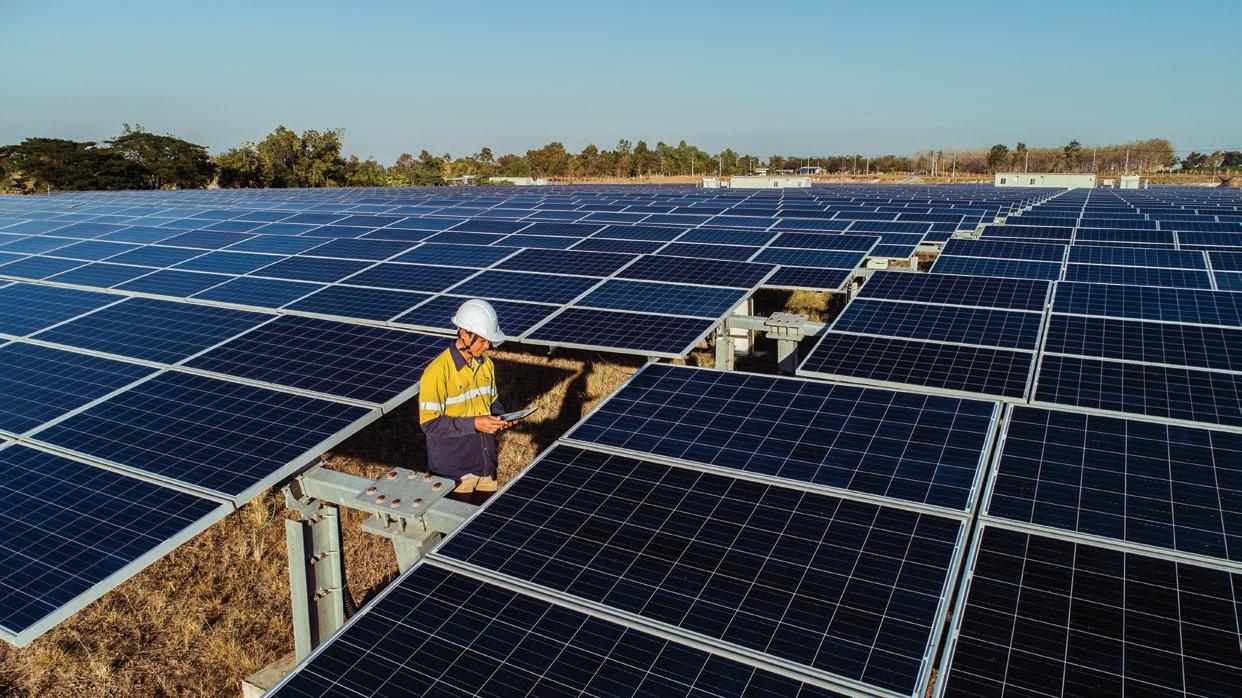

While many US based installers have in-house staff to prepare their own plan sets, a large percentage of the PV plan preparation has shifted overseas (most notably, to India) owing to a combination of lower wage rates and, more importantly, the half day time shift from mainland USA. That time shift allows a project submitted today to receive simple residential plan sets the following morning.
Along with that relatively fast plan set preparation, installers seek additional services to be returned on a short time basis. Specifically, part of the plan submission requires a Professional Engineer (PE) prepared and sealed rooftop structural evaluation and report, along with PE signed/sealed electrical calculations. Interestingly enough, some engineering firms providing rooftop structural engineering evaluations use incorrect methods because they are easy to prepare, not because the results are correct. In areas with little or no snow, using the IBC 5 percent or CBC 5 percent method – essentially weighing the roof in its present condition, and comparing that weight to the roof and solar weight combined – can be a correct evaluation method. Areas with as little as 5 psf snow loading require a different analysis
be individually analyzed. Standard roof framing systems require individual framing member structural analyses, while roof trusses require preparation of a Finite Element Analysis (FEA) demonstrating the entire truss system’s ability to adequately

SOLAR ENERGY
support the new concentrated loads.
While it is possible for such structural analyses to be done by hand using custom made, proprietary spreadsheets, such analyses can be costly and time consuming, taking over a day, and costing $125 to $250 per single family roof structural analysis along with plan review/sign/seal. Many AHJ’s electrical plans also require an engineer’s approval, which can cost an additional $150 to $250 complete.
Alternate, far less expensive and faster services exist which, for a single low fee, allow PV Designers to enter basic existing building, framing, and electrical information, along with proposed PV design information; within an instant, a structural analysis report is generated, along with any recommended structural upgrades and electrical calculations.
One interesting feature of such services is that these reports can be used by the PV Designer as a design and cost reducing tool by trying different PV module arrangements to minimize or eliminate new structural support requirements, simply by moving PV modules to different parts of a roof’s span.

Once those reports are created, they are followed by a PE’s review of the project’s photographs and drawings demonstrating fealty between the input data, actual field conditions, and the PV design. The customer can expect a return of a finished structural report and reviewed/stamped/ sealed/eSigned structural and electrical plans, in as little as 3 hours.
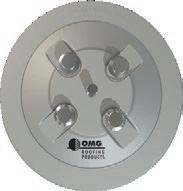
Complete PE services can be provided directly by entities offering this service, or by third party engineers using these same software platforms.
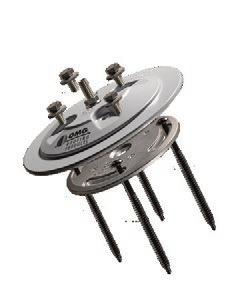


The advent of the acceptance of third-party signature authentication, or eSignatures, has also revolutionized the permitting process for rooftop PV solar. Many AHJ’s now have portals that allow an organized submission of project applications and drawing sets

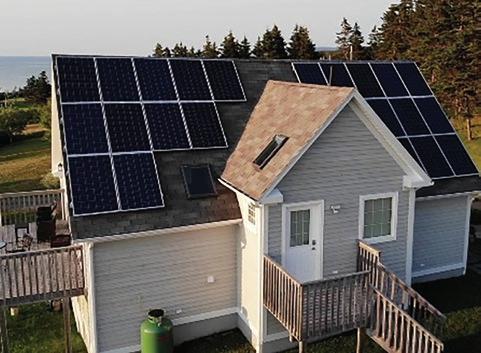
electronically, in PDF format. Drawing sets and engineering reports can have Professional Engineer’s seals and signatures applied electronically. The 3rd party authentication of the eSignatures allows AHJ’s to be certain that the documents received are indeed those signed and sealed by the Professional Engineer. At present, the time it takes to get a PV solar construction permit is long, but it can be shortened. And the associated savings in time relate to savings in application and approval costs.
iRooFA /// www.iroofa.com

 Richard Pantel, P.E., is President of TectoniCorp, which offers the Instant Roof Framing Analysis iRooFA engineering service. His can be reached at rpantel@iroof.solar / 908-507-5500.
Richard Pantel, P.E., is President of TectoniCorp, which offers the Instant Roof Framing Analysis iRooFA engineering service. His can be reached at rpantel@iroof.solar / 908-507-5500.
North American Clean Energy 23 ... and no membrane to weld! OMG offers a full line of PowerGrip Solar Mounts for securing solar arrays on commercial roofs. PowerGrip Universal 7 is one of the strongest mounts available in the industry, can be used on any commercial roof, and does not require membrane welding for a secure, watertight, installation! Please visit us at RE+ ANAHEIM, booth 2290, to see the latest innovations in solar mounts, as well as our line of conduit supports for commercial and residential roofs! SOL A R ROO F M O U NT S 800 633 3800 - www.OMGSolar.com
Helping Tenants Access Clean Energy

 by Greg Fasullo
by Greg Fasullo

In June 2022, the Biden Administration announced new executive actions to spur clean energy manufacturing, including invoking The Defense Production Act (DPA) to accelerate domestic production of technologies such as solar panels and building insulation. Historically, the U.S. has struggled to compete with foreign manufacturing of clean energy components, which require a robust supply chain. U.S. energy manufacturing involves investors, scattered suppliers, labor competition, and transportation costs; it’s no wonder that nations who have better optimized their supply chains have won the price competition battle.



The impact of these recent executive actions may not be felt immediately. However, forward-thinking real estate leaders have an immediate opportunity to ride this momentum, and to leverage future investments made in domestic clean energy production. These groups have an opportunity to act now to adopt solutions like solar, home energy efficiency, and monitoring - at scale - to accelerate this U.S. transition to clean energy, one rental property at a time.
More Power to Homeowners, Managers, and Investors

In the next decade, it's predicted that 12 percent of all new homes built in the U.S. will be single family rentals (SFR). Many of these homes are owned by larger investment groups and management companies. The DPA will reduce the costs of adopting clean energy for individual residential customers, as well as property managers owning and operating portfolios of single-family homes.
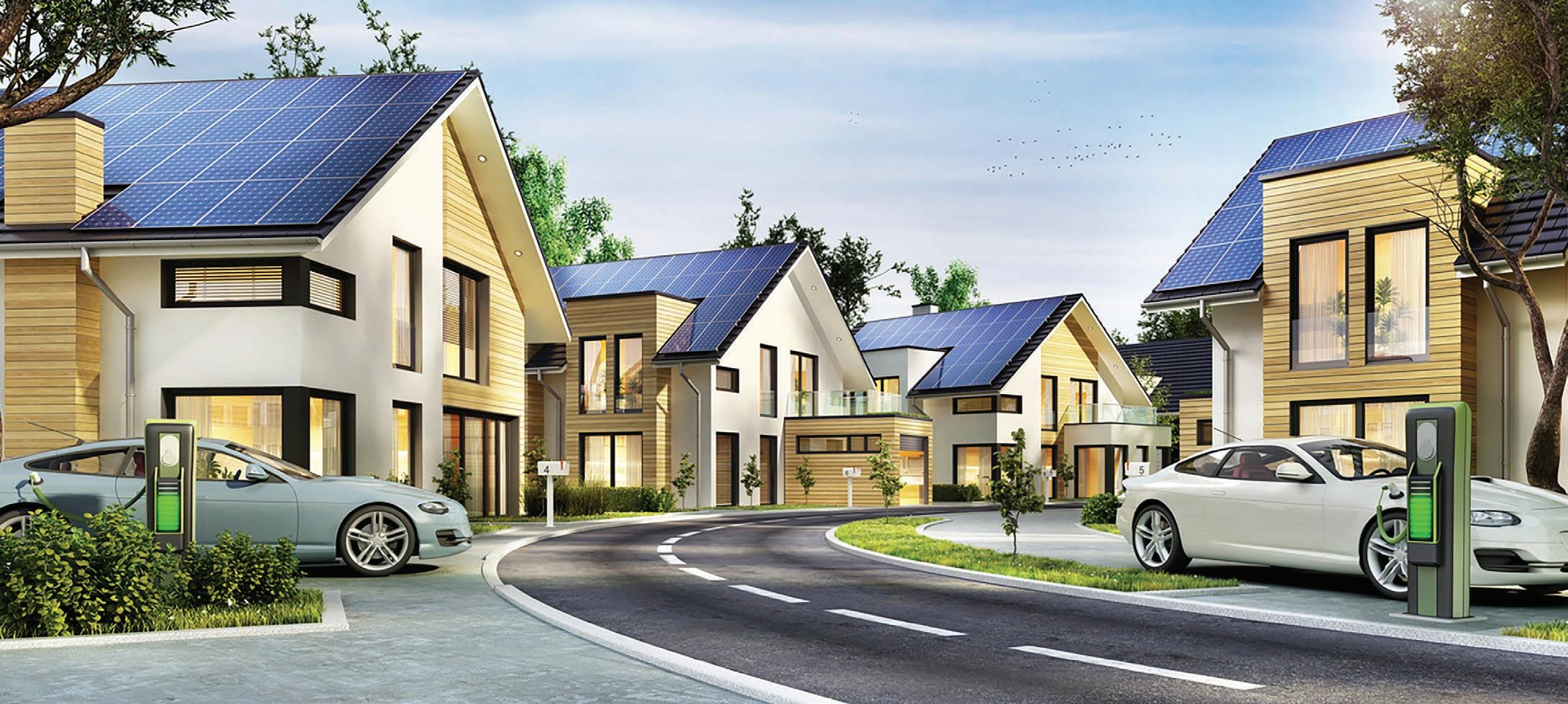
Lower costs and higher availability of materials will make energy efficiency retrofit projects in the SFR market more viable. Homes that have been upgraded with renewable generation, efficient appliances, and energy monitoring are transformed from sources of strain on the grid, to potential assets for decarbonization and utility support. What’s more, reducing emissions produced by millions of single-family homes will propel the real estate industry toward a more sustainable future.
Amid all the momentum driven by legislation and heightened private sector innovation, many American renters are still left out of the equation when it comes to residential clean energy technologies. Supply chain and cost barriers aside, we have an abundance of options for retrofitting homes to increase energy efficiency and boost clean energy production. Since renters do not own their homes, most don’t know how or if they can approach these upgrades. By leveraging local and national incentives and price structures to bring these technologies to entire portfolios at scale, SFR owners and management companies are not only lowering their carbon footprint, they are introducing more Americans to the benefits of a sustainable and efficient home. Owners that pursue clean energy projects in their rental communities are

SOLAR ENERGY
Market factors, demand, and favorable legislation will bolster growth for clean technologies across the single-family rental sector
24 2022 SEPTEMBER• OCTOBER /// www.nacleanenergy.com
investing in the planet, and laying the foundation for their renters to one day become homeowners with mindful energy-efficient habits.

The DPA makes the integration of clean technology more accessible, both through new home construction and existing home upgrades. Many of the materials needed to complete these projects will be manufactured in the U.S., eliminating international fees or tariffs, and shortening wait times for production and delivery. And, with a two-year bridge on select solar imports from countries like Cambodia, Malaysia, Thailand, and Vietnam (currently in effect), any essential technologies or components that cannot be sourced from U.S. manufacturers will also be lucrative options for maintaining momentum of clean energy projects.
More reliable access to quality materials, from a broad variety of U.S. and international PV and battery technology manufacturers, will help SFRs reduce the carbon footprints of their portfolios - and better utilize the clean energy they generate and store. Opportunities for improving energy efficiency in SFRs are widespread; they extend beyond just energy generation and addressing inefficiencies such as improper insulation or outdated appliances. The emissions reductions that come with clean energy sourcing and enhanced energy efficiency can also serve as strong ESG proof points in real estate portfolios for investors and developers.
Taking Efficiency from Rental Communities to the Grid



U.S. reliance on foreign countries (i.e., China) has disrupted the energy supply chain, and significantly impacted the clean energy industry by extending the timelines for residential and commercial clean energy projects designed to lower emissions and support utilities in their efforts to modernize grids. The DPA will strengthen our domestic solar and grid manufacturing industries, and help lower utility costs. Coupled with low- or no-tariff imports of components from international suppliers, we’ll see increased availability and a greater variety of technologies; even small-scale retrofit projects, like those
owned by SFRs, will be able to contribute to meaningful change in clean energy generation and smarter energy use.
As the industry, and society at-large, waits to see how the DPA will go into effect, SFR operators must act on this opportunity to lead meaningful change. These executive actions have been introduced at a time of increased consumer demand for clean energy and home efficiency technologies. Heightened awareness of the lasting impact inefficient homes can have on the environment presents the perfect opportunity for property managers to invest time and resources into upgrading the efficiency of their portfolios.
Greg Fasullo is CEO of Elevation, a fullyintegrated residential energy solutions company, and an executive and entrepreneur with three decades of experience achieving positive change in the human condition through technology, innovation, and ethical capitalism.
Elevation /// www.poweredbyelevation.com

North American Clean Energy 25 TERRASUN SOFTWARE WILL BE THE CONTROL MANAGEMENT SYSTEM FOR THE IHITerrasun.com/replus GEMINI SOLAR + STORAGE PROJECT 690 MWAC SOLAR + 1.4 GWH STORAGE INCREASE REVENUE REDUCE OPERATIONAL COSTS PERFORMANCE BACKED BY WORLD CLASS GUARANTEES 25 Year LTSA Controls, Monitoring & Optimization DC-Coupled Solar + Storage
DC-Coupled Solar Plus Storage
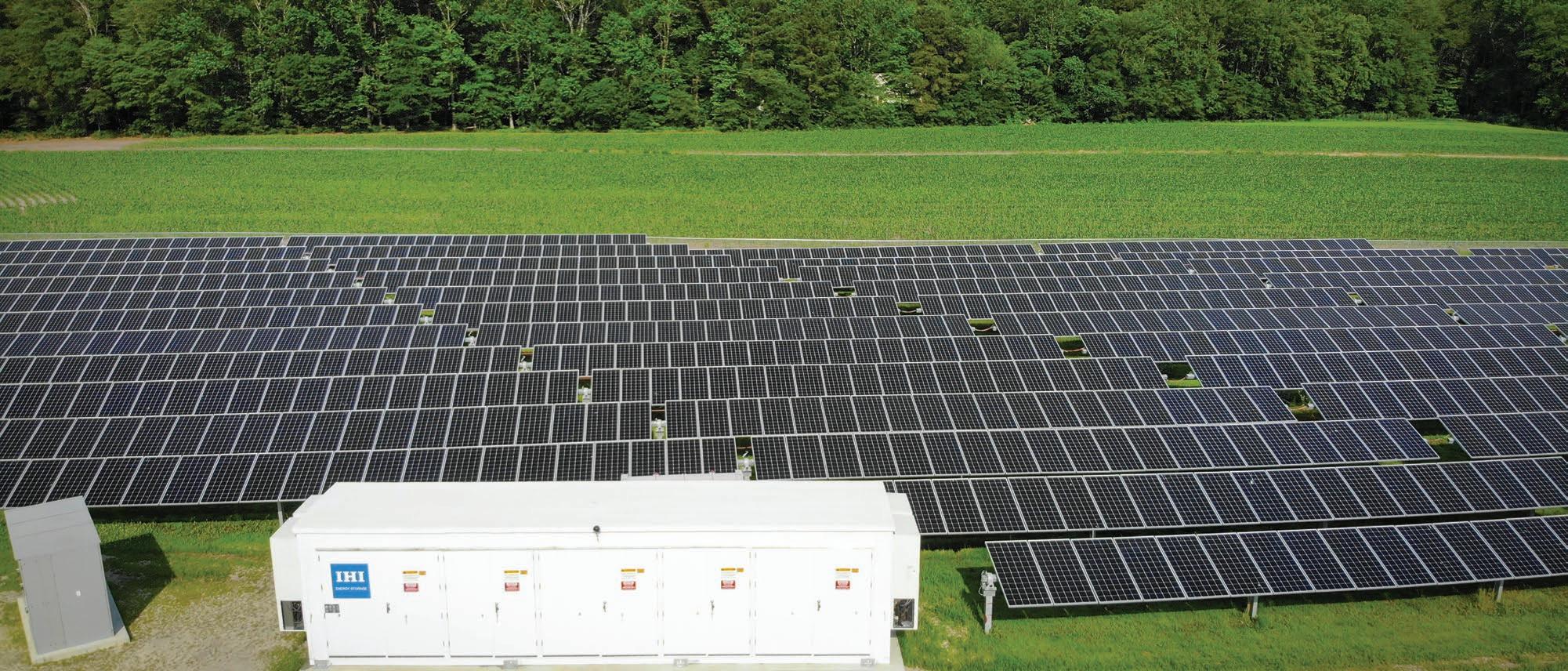
Electrical system design challenges
by Hoss Darvish and Ray Saka
At the very start of the process, a DC-coupled electrical system design is a challenge that requires complex analysis. The batteries need to be balanced across the DC/DC converters, and each converter should be balanced through the photovoltaic (PV) DC/AC inverters. In a typical AC-coupled system, AC inverters range in size from 3MW to 4MW, if a central inverter is being utilized. Currently for DC-coupled systems, the most readily available commercial DC/DC converter is 500kW, or a 1/6th to a 1/8th of the size, which creates restricted battery sizing requirement and requires design analysis. As such, it is difficult to appropriately size the battery racks to account for the energy duration the system requires. Fortunately, more battery vendors are offering modular DC block systems that allow integrators to size the system at a more granular level; on the converter side, there are development efforts for larger systems that will also provide design flexibility for larger battery pairing.
In designing the system, it is essential to consider rack usable energy rating (how much energy can be output from a given battery) and DC-converter size. As shown in Figure 1, low converter power rating paired with high energy battery system


will yield increased inefficiency in the system, leading to lower optimization capability, while higher power converter rating will provide more optimal design considerations with increased design efficiency and design flexibility. Pairing a 2500kWh battery system on a 250kW converter is certainly not the best configuration or design (500kWh energy required for 2-hour and 1000kWh required for 4-hour systems). Evaluating optimal converter and battery system pairing is critical to system design considerations while targeting optimal levelized cost. Larger converter sizes and smaller battery unit energy rating provides more design flexibility for more optimal design factors.

Any DC/DC converter is limited by its maximum rated current, as is the case with any power conversion system. Much like a photovoltaic (PV) inverter, which is dependent on the DC
voltage condition of the PV, the DC/DC converter for the battery is limited by the maximum power that can be output. This, in turn, may be affected by temperature-based power de-rate factors that could be 10 percent or more. This requires careful project level analysis based on battery charging and discharging characteristics, as well as solar operational voltage.
While converter sizing is a microdesign consideration that needs careful study, finding DC to AC ratio, also known as Inverter Loading Ratio (ILR), is critical to optimize DC-coupled projects. DC/AC ratio is defined as the nameplate DC power of the modules versus the rated nameplate AC power of the inverter. The maximum DC power is limited by land constraints, and the maximum AC power is limited by interconnection agreements for solar power plants. Optimizing the DC-coupled solar plus energy storage is more complicated, as additional PV clipped energy that can be captured by the energy storage system needs to be
SOLAR ENERGY
26 2022 SEPTEMBER• OCTOBER /// www.nacleanenergy.com
Hoss Darvish, P.E., is the Manager of the Design & Engineering team, and Ray Saka is Vice President of Sales, Product Management, and Services at IHI Terrasun Solutions, a solar + storage systems integrator, control system developer, and lifecycle services provider for utility-scale projects.
IHI Terrasun /// www.ihiterrasun.com
taken into consideration. An in-depth analysis of the DC cost of the system versus the value of clipped energy is needed to minimize the Levelized Cost of Energy (LCOE) of a solar-plusstorage project, while maximizing the megawatt-hours (MWh) of solargenerated electricity fed into the grid. For example, as the cost of DC systems or PV modules goes down, developers tend to choose a higher DC to AC ratio. In addition to the financial considerations above, engineers on the project need to make sure they are not exceeding the maximum short circuit of PV inverters.

Technical challenges: shortcircuit analysis
After determining the PV DC and AC sizing, a short circuit study is required to ensure that the short circuit current requirements are met. The NEC code 690.8(A) addresses these requirements. The engineer of record (EOR) must evaluate and review PV panel spec, DC/ AC ratio, number of strings per inverter, string sizing, and detailed project drawings. In many cases with the PV inverters available in the market, the DC converters are connected directly to the inverter’s internal DC busbar, so the Battery Energy Storage System (BESS) short circuit needs to be added to the overall short circuit withstanding of the power conversion system. An initial easy approach – to ensure that we are not exceeding the peak fault of the inverter –is to multiply the peak fault current rating from the battery vendor by the number of battery units in parallel, to see if this is less than the allowed fault current at the DC/AC inverter terminal. In addition to peak fault current calculation, fuse rating studies need to be performed to ensure the proper overcurrent protection of the energy storage system design.

In analyzing these design challenges for a DC-coupled solar plus storage system, an engineering and design team can find the right balance between available space for the project and the cost of the PV and battery system, to determine optimal levelized cost of energy for the solar and energy storage plant. The addition of storage to a solar project, though increasing design considerations and complexity, creates dispatchable power plants that can improve grid reliability and stability all over the world.

North American Clean Energy 27
Virtual central distributed inverter stations

The EPEC PICS product offering now makes string inverter technology affordable for large utility scale plants. The PICS 500 (.5MW) and PICS 1000 (1MW) are “virtual central” distributed inverter stations certified for use with multiple UL 1741 string inverter brands (output voltages from 660Vac to 800Vac). Available completely factory integrated: PICS rack, combiner, cable, and inverters arrive completely assembled for plug and play installation or purchase only the PICS AC combiners and follow a prescribed cable size, type, and length for self-perform inverter cluster installation. Up to (5) 1MW PICS units can be tied to one MV transformer, allowing for up to 5MW power block size. With the PICS product line developers and EPCs can now reap the O&M benefits of string inverter technology for large scale installations.
EPEC Solutions

/// www.epecsolutionsinc.com
25A rapid shutdown products
The new 25-Amp Tigo TS4 devices offer plug-and-play support for all solar modules up to 700W (one module for TS4A-F 25A and two 700W modules for TS4A-2F 25A) and rated for a maximum short current of 25A and a maximum input voltage of 80V per module; compliance with NEC 2017 and 2020 690.12 Rapid Shutdown specifications when installed with the Tigo RSS Transmitter and UL PVRSS certified inverter or an inverter with a built-in Tigo-certified transmitter; reliable frame mounting requiring only 10 seconds for installation; industry-standard MC4 connectors with an IP68 enclosure rating for maximum durability; IEC and UL certified for global acceptance; reduced labor time by connecting to two modules to the TS4-A-2F 25A, which enables 16% fewer connections on a 14-panel string compared to singlechannel MLPE. Tigo’s rapid shutdown devices provide first-responder safety, and deliver design and installation flexibility for solar installers and EPCs.
Tigo Energy, Inc.
/// www.tigoenergy.com
Comfort and vision protection
Brass Knuckle’s new Spike eye protection combines a two-pronged strategy for vision protection with a legion of comfort features for the ultimate in customizable, longwear glasses. As part of Brass Knuckle’s new anti-fog collection, Spike includes BK-Anti-Fog+, technology that’s fused directly to the lens to deliver long-lasting, fog-free protection. Spike exceeds the EN 166/168 standard and ANSI Z87.1/U6 ultraviolet protection to eliminate 99.99% of damaging UV rays. Finally, loads of extra features to create an easily customizable fit for virtually any face. The star of the show is a five-step angle-adjustable temple. Earpieces ratchet up and down with a five-click adjustable temple joint for the ultimate in custom fit. Also, floating, reinforced-rubber nosepieces conform to the bridge of the nose, an integrated soft brow guard bring greater fit, and soft rubber at ends of earpieces add extra flexibility and all-day wearability. Plus, the rimless lenses and green/black zebra striping look plain cool. With Spike, workers never have to sacrifice style for the ultimate in custom comfort and protection.

Brass Knuckle /// www.brassknuckleprotection.com
Lightweight hi-vis pullover hoodies

Pyramex has expanded its summer offerings to include its new RLPH1 Series of lightweight pullover hoodies that combine UPF 50+ sun protection with lightweight moisture-wicking fabric to keep workers well protected and cool this summer. With two bright colors available, the new RLPH1 hoodie allows workers to be clearly visible by others around them during the day as well as in low light conditions. The new Pyramex RLPH1 pullover hoodie is made from a polyester and spandex blend which makes it lightweight with moisturewicking capabilities. Long workdays under harmful sun exposure are no longer an issue thanks to the hoodie’s UPF 50+ rating, keeping skin well protected from the sun’s harmful rays. Plus, wearers can extend the protection to the top of the head as well as shield the ears by simply pulling up the incorporated hood. The long-sleeve hoodie also comes with an outer pocket to keep smaller items like smart phones handy and within reach. The RLPH1 pullover hoodie is available in three colors: hi-vis yellow, hivis orange, and dark gray; and is available in a wide range of sizes from small to 5XL.
Pyramex Safety
/// www.pyramexsafety.com
Renewable Energy Today
Learn more at: graniteconstruction.com/granite-industrial

SOLAR ENERGY
28 2022 SEPTEMBER• OCTOBER /// www.nacleanenergy.com
Granite offers civil, structural, and mechanical construction services to utility scale solar and battery energy storage projects. Our extensive resume of self-performing work makes Granite the subcontractor of choice for renewable energy projects throughout the country.
Solverde Solar Project, CA
Centralized DC:DC converter
Alencon Systems LLC has launched the CUBE - its newest line-up of high power, high voltage DC:DC converters for alternative energy applications. The CUBE - (Combined Universal Buck/Boost Power Electronics) is a compact, centralized DC:DC optimizer. The CUBE is available to support both 1000V and 1500V DC:DC applications. The CUBE is available in two modalities – the CUBE-PV for solar applications and the CUBE-ES for battery energy storage applications. The CUBE offers a high level of power density achieved via a silicon carbide-based power train. The CUBE is currently patent pending with the United States Patent Office. For large scale PV plants, the CUBE-PV provides distributed energy harvesting to increase energy yield for projects using larger central inverters. By operating at higher voltage and lower current, the CUBE-PV allows for less copper to be used in the balance of the system. Additionally, the CUBE-PV allows PV plants to be “storage ready.” The CUBE-PV can also be a tool for repowering older PV arrays. For battery energy storage applications, the CUBE-ES offers a highly dense, costeffective package for integrating batteries into DC coupled solar plus storage projects. The CUBE-ES is a solution for stepping up voltage from lower voltage batteries to higher voltage power conversion systems (PCS). As a result of its high switching frequency, the CUBE provides little additional fault current contribution to a battery energy storage system.

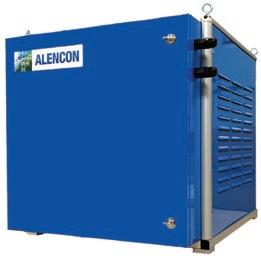
Alencon Systems, LLC

/// www.alenconsystems.com
Solar powered bluetooth headset
Blue Tiger USA is now shipping the Solare headset, a solar-powered communications headset. Suitable for hands-free driving and home or office use, the powerful Solare headset harvests light from any source, including indoor or outdoor, for continuous use and a virtually unlimited battery life. The Solare military-grade Bluetooth headset combines patented solar technology to convert any kind of light into energy for virtually unlimited use without recharging, with powerful 97% noise cancelation technology and high-quality speaker components, all powered by a flexible solar cell for a seamless driving and work communications experience. Solare continuously self-charges when exposed to indoor or outdoor light, eliminating the worry about battery life, so everyone can receive and transmit essential communications clearly. Solare employs patented Powerfoyle solar technology, a nano material innovation that transforms any outdoor and indoor natural or artificial light into clean, endless energy. Inspired by the natural principle of photosynthesis to harvest light, Solare incorporates a thin, nontoxic, printed, flexible plastic solar cell with zero emissions production, durable for comfortable long-time use. The solar cell technology uses light from a wide variety of angles and works equally with indoor or outdoor light.
Blue Tiger USA, LLC /// www.bluetigerheadsets.com

3-phase C&I microinverter
APsystems’ new 3-Phase microinverter for C&I applications, QT2, connects to up to 4 PV modules, is rapid shutdown and UL 1741 SA (CA Rule 21) compliant, and comes in 1728W (208V) and 1800W (480V) output models, maximizing energy production while providing all the benefits of modular-level power systems (MLPE). A new cooling topology allows the QT2 to reach levels of high efficiency power conversion while embedded 2.4GHz ZigBee wireless communication provides high speed data transfer of production data. Solar installers can now offer their C&I customers all the benefits of MLPE in an easy-to-install, plug-and-play, native 3-Phase microinverter package.
APsystems /// usa.apsystems.com
Pitched roof mounting system

With the ClickFit EVO Hanger Bolt, users can quickly install solar panels on various types of pitched roofs. This straightforward system consists of just four components and can be installed on both existing and new roofs. The hanger bolt is provided pre-assembled and the flexible adapter easily and quickly compensates for roof irregularities up to 10°. Using the universal ClickFit EVO click connection fitted to the hanger bolt as standard, installers can simply carry on working with familiar components from the ClickFit EVO product line, such as universal rails, module clamps, and end caps. The hanger bolt can be rotated by 360° and is available in 5 different sizes.
ESDEC /// www.esdec.com
North American Clean Energy 29 E m a i l : t e c h i n f o @ k g t e c h n o l o g i e s . n e t w w w. k g t e c h n o l o g i e s . n e t
Above ground cable routing system






Gripple’s CR-System range comprises of overground cable routing devices which are lightweight but strong, able to hold 46.1in2 of cables and have the potential to be stacked to increase capacity.

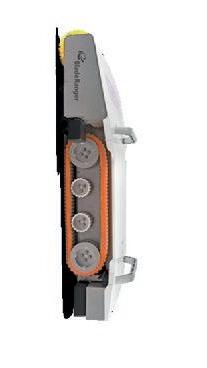

Manufactured from polycarbonate UV Stabilized corrosion-resistant material, their installation causes less disturbance to the environment and the free-air position can assist at design stage to derate and reduce the CSA on cabling used, providing further savings on project costs, as well as fewer fire safety issues, O&M rectification works, and plant extensions.
Gripple /// www.gripple.com/solar-solutions
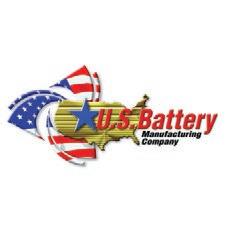
Power station for large-scale solar plants and storage systems
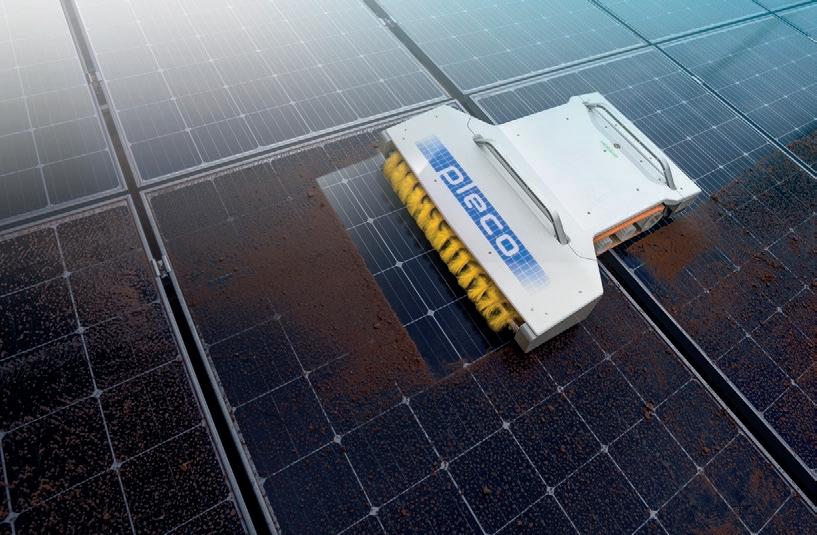

Ingeteam’s new INGECON SUN FSK power stations for photovoltaic plants and storage systems is a solution for large-scale projects due to its high power rating, which can reach up to 7.65MW output power at medium voltage. This new design was produced to make installation and connection work in the field as easy as possible, supplied as a "turnkey" solution with all the elements placed on a single full skid or steel platform and pre-connected at the factory. In addition, this solution can be transported both by land and by sea, as it can be placed directly on the trailer of a truck or inside a 40ft container, enabling it to be installed anywhere in the world. This solution can integrate one or two 1500Vdc inverters (solar or battery), enabling Ingeteam to adapt to different project configurations and sizes. In addition to the inverters, this power station also includes the LV/MV power transformer, the transformer oil tank, medium voltage switchgear, and ancillary services, thus optimizing the use of available space.
Ingeteam /// www.ingeteam.com
Rapid, reliable connections
The levers on WAGO’s new 2734 Series MULTI CONNECTION SYSTEM MINI (MCS MINI) provide rapid, reliable connections in the field. In addition to the intuitive lever operation, these connectors come with a versatile locking system, providing an extra layer of safety and protection against mismating. The MCS MINI PCB connectors are for applications including those with small cross-sections from 26 to 14AWG and a pin spacing of 3.5mm. One of the added benefits is that extra board space is not required, giving this system the edge for device connections such as drive controls.
WAGO /// www.wago.com
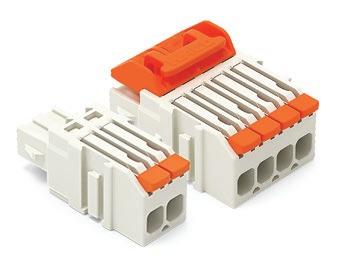
SOLAR ENERGY
30 2022 SEPTEMBER• OCTOBER /// www.nacleanenergy.com WWW.USBATTERY.COM Scan to learn more Power You Can Depend On! USBattery_NACE_422.indd 1 4/14/22 1:27 PM just got a whole lot cleaner www.bladeranger.com Clean Energy Say hello to PLECO™ Come see the future of solar cleaning for yourself at: Let the The world’s lightest, fully autonomous, waterless solar panel cleaning robot, designed to meet the unique safety and productivity challenges of rooftop and commercial solar panel installations. By making continuously dirt-free panels a reality at scale, PLECO ushers in a bright new era of yield optimization for the solar energy industry. and meet the BladeRanger team
Flexible and affordable gutter taps
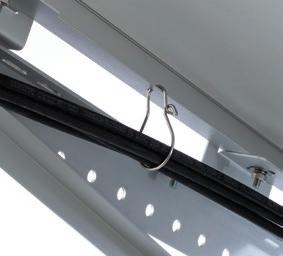
New KPU series gutter taps from Hubbell BURNDY offer the ability to tap parallel or perpendicular to the main run for additional flexibility and savings. The updated KPU connector design makes tapping main runs easy. Openings allow the tap wire to be inserted parallel or perpendicular to the main run, without changing how the connector attaches to the main run. And the ports are isolated from one another, so dissimilar metals can be used without worry. Both copper and aluminum conductors can be connected. The floating design offers flexibility. Without having to mount the connector to a fixed structure, the tap can be handled anywhere along the main run. An insulated cover encloses the energized surfaces. The connector and cover are available together or separately. Mechanical, rather than compression, securing of the main and tap conductors makes this connector range-taking. Three sizes of updated KPU gutter taps are available, covering a wide range of conductor sizes with fewer SKUs. The KPU can be used vertically or horizontally to tap off large conductors for machines, store fronts, or other commercial and industrial applications.
Hubbell BURNDY
/// www.hubbell.com/burndy
DIN-Rail mount adaptor kits with metal clips




SCHURTER now offers DIN-Rail mount adaptor kits with metal clips. The kits provide a simple solution for converting panel mount block filters to DIN-Rail mount for use inside control cabinets. Simply affix the clip to the filter using the screws provided in the kit, then snap the converted filter onto the DIN-Rail. The DIN-Rail mount adapter kit fits with SCHURTER’s compact range of EMC filter series: FMAB NEO, FMAB HV, FMBB NEO, FMBB EP, and FMAD CP. It is also suitable for use with other panel mount filters, provided the mounting holes are the same.
SCHURTER Inc. /// www.schurter.com


Solar cable management


The Panduit Solar Wire Hangers are easy to install, durable, and can be reused should future maintenance of the cable runs be needed. Suitable for PV cable management in solar construction, these Solar Wire Hangers are cULus Listed to UL1565, which is key to meeting installation requirements.

Panduit Renewable Energy /// pages.panduit.com/solar.html















North American Clean Energy 31
by

An Artificial Intelligence Solution

Providing Virtual Assistance for Cable Inventory Management.
Helping customers evolve towards the 4.0 Industry, Prysmian Group presents Alesea, a new IoT innovative solution taking cable inventory management to the next level. Let us introduce you to Alesea, its components and usage in the North American market.

We have heard about the “4.0 Industry” for many years now, a fourth industrial revolution driven by digital technology which gives birth to the highly anticipated “smart factory,” fully computerized manufacturing through the Internet of Things (IoT). Alesea, Prysmian Group's latest innovation contributing to the 4.0 Industry, is our answer to the "smart factory." An IoT solution providing virtual assistance for cable inventory management through a smart device installed on cable reels, Alesea delivers a cloud-based platform that tracks reel management, data storage and processing within an intuitive web platform.

Alesea was developed in a collaboration between Prysmian Group and the Corporate Hangar, a team devoted to developing state-of-the-art solutions for multiple sectors seeking digital transformation. Equipped with a GPS tracker, environmental sensors, motion detectors and multi-network mobile communications, Alesea allows worldwide coverage. The system lets customers track realtime reel location, identify potential theft and manipulation, assess whether there has been any use and track the amount of cable remaining on a reel. Most importantly, no user installation or maintenance is required. Upon service activation, data is automatically stored on the cloud, retrieved at any time and accessed through customizable mobile and desktop platforms.
As a result, Alesea offers a comprehensive inventory management service while helping to reduce the total cost of cable management and reduce the time each reel spends empty and unused, all thanks to its improved asset usage and enhanced operating efficiency. As the device is installed on the reels during cable production, it is no longer necessary to intervene on-site resulting in optimized logistics and cable waste reduction, improved pick-up and transport of empty reels by collecting multiple reels and minimizing the environmental impact.
“Alesea transforms cable drums into smart assets, achieving a higher performance in terms of operating efficiency and sustainability,” said Maura Nespoli, VP of Sustainable Solutions at Prysmian Group North America. “We are currently already in the process of implementing and deploying Alesea devices into all our North American steel reels. This will translate to direct reductions in the industry’s carbon footprint by reducing the number of reels used and maximizing the efficiency in reels’ transportation.”
By 2030, Alesea aims to reduce CO2 emissions by 21%. Thanks to the device and the real-time data it provides, customers will reduce reels’ cycle time and improve the circularity and recycling of steel reels. Together, this will reduce the need for steel production and optimize logistics and transportation, translating into lower emissions.
Smart innovation with sustainability and the environment in mind. That’s our reel revolution.
ADVERTORIAL
32 2022 SEPTEMBER• OCTOBER /// www.nacleanenergy.com




33 North American Clean Energy
Modules
SEE AD ON PAGE 8
Efficient design and a high-yield performance are key factors in any solar energy project. Regardless of the project size - whether for a residential project, commercial building, or utility-scale application - selecting the right module is extremely important. To help you find the right choice for your solar project, we’ve highlighted some of the top contenders in the industry.
SEE AD ON PAGE 37
Tests/Certifications: ETL (UL STD 61730)
Warranty: 25-year product and performance warranty
Key Features:
• Guaranteed positive power tolerance;
• 100 % visual electroluminescence inspection;
• High quality junction box and original MC4 connectors. www.axitecsolar.com/us
AXITEC LLC

Product: AXIblackpremium 400MH/108VB
Application: Residential, commercial
Maximum Power (Pmax): 400Wp
Maximum Power Point Voltage (Vmpp):
31.01V
Maximum Power Point Current (Impp):
12.9A
Open Circuit Voltage (Voc): 37.07V
Short-Circuit Current (Isc): 13.79A
Module Efficiency: 20.48%
Operating Temperature: -40°F to 185°F
(-40°C to 85°C)
Normal Operating Cell Temperature
(NOCT): 45°C +/-K
Max. System Voltage: 1500V
Power Tolerance: +5Wp
Cell Type: 108 monocrystalline high efficiency




cells
Glass: 3.2mm hardened, low-reflection white glass
Frame: 30mm all black aluminum frame
Weight: 47.4lbs (21.5kg)
Dimensions: 67.8" x 44.65" x 1.38" (1722mm x 1134mm x 35mm)

Max Load: 5400Pa
SunWize Power & Battery
Product: SunWize SWPB-24-195W-C1D2
Solar Module
Application: Industrial
Maximum Power (Pmax): 195W
Maximum Power Point Voltage (Vmpp): 41.08V
Maximum Power Point Current (Impp): 4.74A
Open Circuit Voltage (Voc): 48.70V
Short-Circuit Current (Isc): 5.03A
Module Efficiency: 18.9%
Operating Temperature: -40°F to 185°F (-40°C to 85°C)
Normal Operating Cell Temperature (NOCT): 110.8°F (48.3°C)
Max. System Voltage: 600V
Power Tolerance: -0% to +3%
Cell Type: Monocrystalline
Frame: Aluminum
Weight: 30.7lbs (14kg)
Dimensions: 59.6" x 26.8" x 1.97" (1515mm x 680mm x 50mm)
Tests/Certifications: UL 1703, Class 1
Division 2 Group A, B ,C, D
Warranty: 5-year material warranty, 20-year performance warranty www.sunwize.com
Mission Solar Energy
Product: MSE PERC-66 385W
Application: Residential Maximum Power (Pmax): 385W Maximum Power Point Voltage (Vmpp): 36.93V
Maximum Power Point Current (Impp): 10.42A
Open Circuit Voltage (Voc): 45.03V
Short-Circuit Current (Isc): 10.97A
Module Efficiency: 19.3%
Operating Temperature Range: -40°F to 185°F (-40°C to 85°C)
Normal Operating Cell Temperature
(NOCT): 43.75°C +/-3.7%
Max System Voltage: 1000Vdc
Power Tolerance: 0/+3%
Cell Type: P-type mono-crystalline silicon
Glass: 3.2mm tempered, low-iron, antireflective
Frame: 40mm anodized
Weight: 50lbs (22kg)
Dimensions: 75.1" x 41.1" x 1.6" (1907mm x 1044mm x 40mm)
Max Load: 5400Pa
Tests/Certifications: UL 61730, IEC 61215, IEC 61730, IEC 61701
Warranty: 25-year warranty for power and manufacturing defects www.missionsolar.com


Key Features:
• Patented DNA technology boosts power performance and module efficiency;
• Advanced split cell technology with 10 ultra-thin busbars allows for less resistance and more photon capture;
• Robust product design is resilient in extreme weather;
• 25-year product warranty, 30-year power performance warranty. www.aptossolar.com
Auxin Solar
Product: AXN10M Series 540W
Application: Residential, commercial, industrial, utility-scale, rooftop
Maximum Power (Pmax): 540W
Maximum Power Point Voltage (Vmpp): 41.65V
Maximum Power Point Current (Impp): 12.97A
Open Circuit Voltage (Voc): 49.65V
Short-Circuit Current (Isc): 13.85A
Module Efficiency: 20.9%
Operating Temperature: -40°F to 185°F (-40°C to 85°C)
Normal Operating Cell Temperature (NOCT): 45°C
Max. System Voltage: 1500V
Power Tolerance: +3%
Cell Type: Mono or bifacial cells
Glass: 3.2mm
Frame: Anodized aluminum frame, silver and black
Weight: 63.27lbs (28.7kg)
Dimensions: 89.72" x 44.61" x 1.57" (2279mm x 1133mm x 40mm)
Max Load: 5400Pa (front), 2400Pa (rear)
Tests/Certifications: UL61730, UL1703
Fire Type 2, IEC61730PID, IEC62804 1000V, IEC61701, TCLP, Carbon Footprint
Warranty: 30-year power output warranty, 12year product guarantee www.auxinsolar
Aptos Solar Technology

Product: DNA-120-MF10-440W
Application: Residential
Maximum Power (Pmax): 440W
Maximum Power Point Voltage
(Vmpp): 34.16V
Maximum Power Point Current (Impp): 13.17A
Open Circuit Voltage (Voc): 41.34V
Short-Circuit Current (Isc): 13.80A
Module Efficiency: 20.85%
Operating Temperature: -40°F to 185°F (-40°C to 85°C)
Normal Operating Cell Temperature (NOCT): 45°C
Max. System Voltage: 25A
Power Tolerance: 0~+5W
Cell Type: Monocrystalline
Glass: 3.2mm antireflection coating, high transmission, low iron, tempered glass
Frame: Anodized aluminum alloy
Weight: 52.9lbs (24kg)
Dimensions: 74.92" x 44.6" x 1.4" (1903mm x 1134mm x 35mm)
Warranty: 25-year product warranty, 30-year power performance warranty
Sonali Energees USA, LLC
Product: SS-M-440
Application: Residential, commercial, carports, solar farming, balconies, awnings, street lights, fences, canopies
Maximum Power (Pmax): 440W
Maximum Power Point Voltage (Vmpp): 34.5V
Maximum Power Point Current (Impp): 12.74A
Open Circuit Voltage (Voc): 41.2V
Short-Circuit Current (Isc): 13.54A
Module Efficiency: 20.4%
Operating Temperature: -40°F to 185°F (-40°C to 85°C)
Normal Operating Cell Temperature (NOCT): 800W/m2, 43± 2° C
Max. System Voltage: 1500V
Power Tolerance: 0 / +%
Glass: Monocrystalline tempered, low iron
Frame: Black anodized aluminum alloy
Weight: 52.91lbs (24kg)
Dimensions: 75.2 x 44.65 x 1.38 (1910mm x 1134mm x 35mm)
Max Load: 3600Pa wind, 5400Pa mechanical Tests/Certifications: MNRE, IEC 61215, 61730-1, 61730-2, 61701, UL 1703, UL 61730, ISO 9001:2008, ISO 14001:2004, 18001:2007
Warranty: 12-year product warranty, 10year up to 90%, next 15-year up to 80% performance warranty www.sonalisolar.com
34 2022 SEPTEMBER• OCTOBER /// www.nacleanenergy.com
SEE AD ON PAGE 39
Panasonic Life Solutions Company of America

Product: Panasonic EverVolt
EVPV360K
Application: Residential Maximum Power (Pmax): 360W
Maximum Power Point Voltage (Vmpp): 36.7V
Maximum Power Point Current (Impp): 9.82A
Open Circuit Voltage (Voc): 43.9V
Short-Circuit Current (Isc): 10.49A
Module Efficiency: 20.6%
Operating Temperature: -40°F to 185°F (-40°C to 85°C)
SEE AD ON PAGE 62
LONGi Solar
Product: Hi-MO 5, 54-cell
Application: Residential, commercial Maximum Power (Pmax): 535W
Maximum Power Point Voltage (Vmpp): 41.5V
Maximum Power Point Current (Impp): 12.9A
Open Circuit Voltage (Voc): 49.35V
Short-Circuit Current (Isc): 13.78A
Module Efficiency: 20.9%
Operating Temperature: -40°F to 185°F (-40°C to 85°C)
Normal Operating Cell Temperature (NOCT): 45°C +/-2°C
Max. System Voltage: DC1500V (IEC/UL)
Power Tolerance: 0 ~ 3%
Cell Type: 144 (6x24)
Key Features:
• Module efficiency of 20.6% allows maximum power production with less roof space;

• With low annual degradation rates, power output of at least 92% is guaranteed after 25 years;
• EverVolt solar panels produce energy on hot days in warm climates with a 0.26%/°C temperature coefficient;
• Half-cut cells with heterojunction technology minimizes electron loss, maximizes conversion efficiency, and produces high power output. na.panasonic.com/us/evervoltsolar
Atlantic Clean Energy Supply, LLC (ACES)
Product: Solar Panel
Application: Residential, commercial, industrial, utility-scale
Maximum Power (Pmax): 380W
Maximum Power Point Voltage (Vmpp): 34.6V
Maximum Power Point Current (Impp): 10.99A
Open Circuit Voltage (Voc): 41.7V
Short-Circuit Current (Isc): 11.98A
Module Efficiency: 20.9%
Operating Temperature Range: -40°F to 185°F (-40°C to 85°C)
Normal Operating Cell Temperature (NOCT): 25°C
Max. System Voltage: 1500VDC
Power Tolerance: 0 / +5V
Cell Type: PERC
Glass: Tempered glass
Frame: Aluminum
Weight: 43lbs (19.5kg)
Dimensions: 69.1" x 40.9" x 1.4" (1755mm x 1038mm x 35mm)

Max Load: 5400Pa
Tests/Certifications: UL, ETC
Warranty: 12-year quality warranty, 25-year performance warranty www.atlanticces.com
Lion Energy
Product: Lion 100W 12V Solar Panel
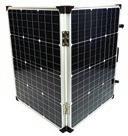
Application: Portable solar Maximum Power (Pmax): 100W
Maximum Power Point Voltage (Vmpp): 18V
Cell Type: Monocrystalline
Glass: Airtight tempered glass
Max. System Voltage: 1000V
Power Tolerance: 44°C (±2°C)
Cell Type: N-type
Weight: 43lbs (19.5kg)
Dimensions: 67.8" x 40.0" x 1.2" (1721mm x 1016mm x 30mm)
Max Load: (-)²: 83psf, 4000Pa (wind); (+)²: 146psf, 7000Pa (snow)
Tests/Certifications: UL 61730; IEC61215-2:2016 [Hailstone 35mm]
Warranty: 25-year workmanship and linear power output warranty
Trina Solar
Product: VERTEX BIFACIAL DEG21C.20
Application: Commercial. industrial, utilityscale
Maximum Power (Pmax): 665W
Maximum Power Point Voltage (Vmpp): 38.3V
Maximum Power Point Current (Impp):
17.39A
Open Circuit Voltage (Voc): 46.1V
Short-Circuit Current (Isc): 18.5A
Module Efficiency: 21.4%
Operating Temperature Range: -40°F to 185°F (-40°C to 85°C)
Normal Operating Cell Temperature
(NOCT): 43°C ± 2°C
Max. System Voltage: 1500Vdc (UL & IEC)
Power Tolerance: -0W / +5W
Cell Type: Monocrystalline
Glass: 2.0mm high-transmission, AR coated, heat strengthened glass
Frame: 1.38" (35mm) anodized aluminium alloy
Weight: 85.3bs (38.7kg)
Dimensions: 93.86" x 51.3" x 1.38" (2384mm × 1303mm × 35mm)
Max Load: Up to 5400Pa positive load, 2400Pa negative
Tests/Certifications: IEC61215, IEC61730, IEC61701, IEC62716, UL61730, CEC, CSA
Warranty: 12-year product workmanship
warranty, 30-year power warranty www.trinasolar.com/us
Frame: Double walled aluminum
construction
Weight: 22lbs (9.979kg)
Dimensions: 26.5" x 40" x 1" (unfolded);
26.5" x 20" x 1" (folded)
Warranty: 1-year warranty
www.lionenergy.com
Warranty: 25-year power warranty
Key Features:
• Based on M10-182mm wafer, suitable choice for ultra-large power plants;
• Advanced module technology delivers superior module efficiency;
• Excellent outdoor power generation performance;
• High module quality ensures longterm reliability. www.longi.com/us

Sky Energy
Glass: Single glass, 3.2mm coated tempered glass
Frame: Anodized aluminum alloy frame
Weight: 60lbs (27.2kg)
Dimensions: 88.8" x 44.6" x 1.4" (2256mm x 1133mm x 35mm)
Max Load: Front side 5400Pa; Rear side 2400Pa
Tests/Certifications: IEC 61215, IEC 61730, UL 61730, ISO9001:2015: ISO Quality Management System, ISO14001: 2015: ISO Environment Management System, ISO45001: 2018: Occupational Health and Safety, TS62941: Guideline for module design qualification and type approval
Product: Lightray Solar Module
Application: Residential, commercial, industrial, utility-scale
Maximum Power (Pmax): 100W
Maximum Power Point Voltage (Vmpp): 19.8V
Maximum Power Point Current (Impp): 5.05A
Open Circuit Voltage (Voc): 23.4V
Short-Circuit Current (Isc): 5.35A
Module Efficiency: 20.60%
Operating Temperature Range: -40°F to 185°F (-40°C to 85°C)
Renogy
Product: RSP5500-144 550W
Monocrystalline Solar Panel



Application: Residential, commercial
Maximum Power (Pmax): 550W
Maximum Power Point Voltage (Vmpp): 41.97V
Maximum Power Point Current (Impp): 13.11A
Open Circuit Voltage (Voc): 49.1V
Short-Circuit Current (Isc): 14.05A
Module Efficiency: 21.03%
Operating Temperature Range: -40°F to 185°F (-40°C to 85°C)
AIONRISE
Product: All BLACK PERC AION66G1
Application: Residential, commercial
Maximum Power (Pmax): 360Wp
Maximum Power Point Voltage (Vmpp): 38.05V
Open Circuit Voltage (Voc): 46.43V
Short-Circuit Current (Isc): 10.09A
Module Efficiency: 19.6%
Operating Temperature: -40°F to 185°F (-40°C to 85°C)
Normal Operating Cell
Temperature (NOCT): 45 ± 2°C
Max. System Voltage: 1000V / 1500V
Max. System Voltage: 1000Vdc (IEC)
Power Tolerance: ±3%
Cell Type: Monocrystalline
Glass: Tempered
Frame: Aluminium
Weight: 13.67lbs (6.20kg)
Dimensions: 33.27" x 26.38" x 1.18" (845mm x 670mm x 30mm)
Tests/Certifications: 100%EL
Warranty: 10-year warranty, 25-year service life warranty www.sky-energy.com
Normal Operating Cell Temperature (NOCT): 45±2ºC
Max. System Voltage: 1500Vdc
Cell Type: PERC Monocrystalline

Glass: Tempered glass
Frame: Anodized aluminum alloy
Weight: 62.8lbs (28.5kg)
Dimensions: 89.7" x 44.6" x 1.4" (2279mm x 1134mm x 35mm)
Tests/Certifications: CE, ISO9001
Warranty: 10-year material and workmanship warranty, 5-year 95% output warranty, 10-year 90% output warranty, 25-year 80% output warranty
www.renogy.com
Power Tolerance: +5Wp
Cell Type: Monocrystalline
Glass: 3.2mm double layer, AR coated, iron-free
Frame: Black anodized aluminum frame
Weight: 45.19lbs (20.5kg)
Dimensions: 72.05" X 39.5" x 1.6" (1830mm x 1002mm x 40mm)


Max Load: 5400Pa
Tests/Certifications: IEC 61215, 61730, 62716, 61701, UL 61730
Warranty: 25-year extended warranty
www.aionrise.com
SOLAR PRODUCT SPOTLIGHT: MODULES
North American Clean Energy 35
37
Aptos Solar Technology

Product: DNA-108-MF10-400W
Application: Residential
Maximum Power (Pmax): 400W
Maximum Power Point Voltage
(Vmpp): 28.46V
Maximum Power Point Current
(Impp): 10.47A
Open Circuit Voltage (Voc): 36.94V
Short-Circuit Current (Isc): 13.6A
Module Efficiency: 20.47%
Operating Temperature: -40°F to 185°F (-40°C to 85°C)
Normal Operating Cell Temperature
(NOCT): 45°C
Max. System Voltage: 25A
Power Tolerance: 0~+5W
Cell Type: Monocrystalline
Glass: 3.2mm antireflection coating, high transmission, low iron, tempered glass
SEE AD ON PAGE 39
Panasonic Life Solutions Company of America

Product: Panasonic EverVolt EVPV370 WBS
Application: Residential
Maximum Power (Pmax): 370W
Maximum Power Point Voltage
(Vmpp): 37.4V
Maximum Power Point Current
(Impp): 9.90A
Open Circuit Voltage (Voc): 44.1V
Short-Circuit Current (Isc): 10.55A
Module Efficiency: 21.2%
Operating Temperature: -40°F to 185°F (-40°C to 85°C)
Normal Operating Cell Temperature (NOCT): 44°C (±2°C)
Max. System Voltage: 1000V
Key Features:
• Patented DNA technology boosts power performance and module efficiency;
• Advanced split cell technology with 10 ultra-thin busbars allows for less resistance and more photon capture;
• Robust product design is resilient in extreme weather;
• 25-year product warranty, 30-year power performance warranty. www.aptossolar.com
CertainTeed
Product: Apollo II Solar Roofing System
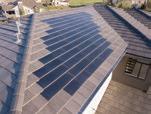
Application: Residential, commercial, industrial
Maximum Power (Pmax): 63W
Maximum Power Point Voltage (Vmpp): 7.27V
Maximum Power Point Current (Impp): 8.67A
Open Circuit Voltage (Voc): 9.28V
Short-Circuit Current (Isc): 9.25A
Frame: Anodized aluminum alloy
Weight: 48.5lbs (22kg)
Dimensions: 67.8" x 44.6" x 1.4" (1722mm x 1134mm x 35mm)
Max Load: 5400Pa
Tests/Certifications: UL61730-1, UL61730-2
Warranty: 25-year product warranty, 30year power performance warranty
Q CELLS
Product: Q.PEAK DUO BLK ML-G10+
Application: Residential
Maximum Power (Pmax): 405W
Maximum Power Point Voltage (Vmpp): 37.39V
Maximum Power Point Current (Impp): 10.83A
Key Features:
• Module efficiency of 21.2% allows maximum power production with less roof space;
• With low annual degradation rates, power output of at least 92% is guaranteed after 25 years;
• EverVolt solar panels produce energy on the hot days in warm climates with a 0.26%/°C temperature coefficient;
• Half-cut cells with heterojunction technology minimizes electron loss, maximizes conversion efficiency, and produces high power output.
na.panasonic.com/us/evervoltsolar
Canadian Solar
Product: HiKu6 (All-Black) CS6R-MS-HL
Application: Residential
Maximum Power (Pmax): 405W
Maximum Power Point Voltage
(Vmpp): 31V
Maximum Power Point Current
(Impp): 13.07A
Cell Type: N-type
Weight: 43lbs (19.5kg)
Dimensions: 67.8" x 40.0" x 1.2" (1721mm x 1016mm x 30mm)

Max Load: (-)²: 83psf, 4000Pa (wind); (+)²: 146psf, 7000Pa (snow)
Tests/Certifications: UL 61730; IEC61215-2:2016 [Hailstone 35mm]; Fire Type 2 (UL 61730); Salt Mist [IEC 61701]; PID [IEC 62804]; Ammonia Resistance [IEC 62716]
Warranty: 25-year workmanship and power output warranty
Silfab Solar
Product: Silfab Elite SIL-410 BG
Application: Residential
Maximum Power (Pmax): 410W
Maximum Power Point Voltage (Vmpp): 38.07V
Maximum Power Point Current (Impp): 10.77A
Normal Operating Cell Temperature (NOCT): 55.6°C
Max. System Voltage: 600V
Power Tolerance: +/-3%
Weight: 12lbs (5.4kg); 2.7lbs per sqft
Warranty: 25-year limited power warranty, 10-year limited product warranty www.certainteed.com
AIMS Power
Product: 130W Foldable Portable Solar Panel pre-wired



Application: Residential, commercial, industrial, portable
Maximum Power Point Voltage (Vmpp): 22V
Maximum Power Point Current (Impp): 5.91A
Open Circuit Voltage (Voc): 26.4V
Short-Circuit Current (Isc): 6.35A
Module Efficiency: 19.7%
Cell Type: Monocrystalline
Weight: 7bs (3.18kg)
Dimensions: Expanded 20.6" x 56" x 0.19" (523.2mm x 1420mm x 4.8mm)
Max Load: 130W
Tests/Certifications: CE, ETL, TUV, RoHS
Warranty: 5-year warranty www.aimscorp.net
Open Circuit Voltage (Voc): 45.34V
Short-Circuit Current (Isc): 11.17A
Module Efficiency: Up to 20.6%
Operating Temperature: NMOT: 109 ± 5.4°F (43 ± 3°C)
Max. System Voltage: 1000 IEC/UL Power Tolerance: ±3%
Cell Type: 6 x 22 monocrystalline


Q.ANTUM solar half-cells
Glass: 0.13" (3.2mm) thermally prestressed glass with anti-reflection technology
Frame: Black anodized aluminum
Weight: 48.5lbs (22kg)
Dimensions: 74" x 41.1" x 1.26" (1879mm x 1045mm x 32mm) including frame
Max Load: Max. Design Load, Push/ Pull [lbs/ft^2]: 75(3600Pa)/55(2660Pa)
Max. Test Load, Push/Pull [lbs/ft^2] 113 (5400Pa)/84(4000Pa)
Tests/Certifications: UL 61730, CEcompliant, Quality Controlled PV - TÜV
Rheinland, IEC 61215: 2016, IEC 61730: 2016, U.S. Patent No. 9,893,215 (solar cells), QCPV Certification ongoing Warranty: 25-year product and linear performance warranty www.qcells.com/us
Open Circuit Voltage (Voc): 37V
Short-Circuit Current (Isc): 13.93A
Module Efficiency: 20.7%
Operating Temperature: -40°F to 185°F
(-40°C to 85°C)
Normal Operating Cell Temperature
(NOCT): 42 ± 3°C
Max. System Voltage: 1500V (IEC/ UL); 1000V (IEC/UL)
Power Tolerance: 0/+10W
Cell Type: Monocrystalline

Glass: 3.2mm heat tempered glass with anti-reflective coating
Frame: Anodized aluminum alloy
Weight: 49.4lbs (22.4kg)
Dimensions: 67.8" x44.6" x 1.38" (1172mm x 1134mm x 35mm)
Max Load: +8100/-5000Pa
Tests/Certifications: ISO 9001:2015; Quality management system, ISO 14001:2015; Standards for environmental management system, ISO 45001: 2018; International standards for occupational health and safety, IEC 61215, IEC 61730, CE; UL 61730, IEC 61701, IEC 62716, Takee-way
Warranty: 25-year product warranty on materials and workmanship, 25-year linear power performance warranty www.csisolar.com/na
Open Circuit Voltage (Voc): 45.02V
Short-Circuit Current (Isc): 11.35A
Module Efficiency: 21.4%
Operating Temperature Range: -40°F to 185°F (-40°C to 85°C)
Normal Operating Cell Temperature (NOCT): 43.5°C
Max. System Voltage: 1000V
Power Tolerance: 0W to +10W
Cell Type: 66 high-efficiency mono-PERC
MWT c-Si cells 6.53” x 6.53" (166mm x 166mm)
Glass: 3.2 mm high transmittance, tempered, DSM anti-reflective coating 0.126" high transmittance, tempered, DSM anti-reflective coating
Frame: Black anodized aluminum
Weight: 20.8±0.2 45.8±0.4lbs
Dimensions: 73.4" x 40.5" x 1.4" (1864mm x 1029mm x 35mm)
Max Load: 5400Pa rear load / 5400Pa front load, 112.8 lb/112.8 lb/ft2
Tests/Certifications: CEC listed, UL 61215-1/-1-1/-2, UL 61730-1/-2, IEC 61215-1/-11/-2. IEC 61730-1/-2, CSA C22.2#61730-1/-2, IEC 62716 Ammonia Corrosion, IEC61701:2011 Salt
Mist Corrosion Certified, UL Fire Rating: Type 1
Warranty: 25-year product warranty, 30year linear performance warranty www.silfabsolar.com
SOLAR PRODUCT SPOTLIGHT: MODULES
SEE AD ON PAGE
36 2022 SEPTEMBER• OCTOBER /// www.nacleanenergy.com
Warranty: 25-year power warranty
Key Features:
• Based on M10-182mm wafer, suitable choice for ultra-large power plants;
• Advanced module technology delivers superior module efficiency;
• Globally validated bifacial energy yield;
• High module quality ensures longterm reliability. www.longi.com/us

LONGi Solar
Product: Hi-MO 5, 72c bifacial




Application: Utility-scale
Maximum Power (Pmax): 530W
Maximum Power Point Voltage (Vmpp): 41.35V
Maximum Power Point Current (Impp): 12.82A
Open Circuit Voltage (Voc): 49.20V
Short-Circuit Current (Isc): 13.71A
Module Efficiency: 21.5%
Operating Temperature: -40°F to 185°F (-40°C to 85°C)
Normal Operating Cell Temperature (NOCT): 45°C +/-2°C
Max. System Voltage: DC1500V (IEC/UL)
Power Tolerance: 0 ~ 3%
Cell Type: 144 (6x24)
Glass: Dual glass, 2.0+2.0mm heat strengthened glass
Frame: Anodized aluminum alloy frame
Weight: 71.2lbs (32.3kg)
Dimensions: 88.8" x 44.6" x 1.4" (2256mm x 1133mm x 35mm)
Max Load: Front side 5400Pa; Rear side 2400Pa
Tests/Certifications: IEC 61215, IEC 61730, UL 61730, ISO9001:2015: ISO Quality Management System, ISO14001: 2015: ISO Environment Management System, ISO45001: 2018: Occupational Health and Safety, TS62941: Guideline for module design qualification and type approval
SEE AD ON PAGE 8
AXITEC LLC

Product: AXIbipremium 540MBT/144V
Application: Residential, commercial, industrial, utility-scale
Maximum Power (Pmax): 540Wp
Maximum Power Point Voltage
(Vmpp): 41.64V
Maximum Power Point Current (Impp): 12.97A
Open Circuit Voltage (Voc): 49.60V
Short-Circuit Current (Isc): 13.86A
Module Efficiency: 20.9%
Operating Temperature: -40°F to 185°F
(-40°C to 85°C)
Normal Operating Cell Temperature (NOCT): 45°C +/-K
Max. System Voltage: 1500V
Power Tolerance: +5Wp
RenewSys India Pvt. Ltd.
Product: RenewSys DESERV Extreme
144 540Wp
Application: Residential, commercial, industrial, utility-scale, pumping applications, floating solar
Maximum Power (Pmax): 540Wp
Maximum Power Point Voltage (Vmpp): 41.84V
Maximum Power Point Current (Impp): 12.92A
Open Circuit Voltage (Voc): 49.82V
Short-Circuit Current (Isc): 13.68A
Module Efficiency: 20.79%
Operating Temperature Range: -40°F to 185°F (-40°C to 85°C)
Allesun Industries, Inc.
Product: Solar cell, panel, system
pack
Application: Commercial, industrial, utility-scale, off-grid
Maximum Power (Pmax): 600W
Maximum Power Point Voltage
(Vmpp): 45.2V
Maximum Power Point Current
(Impp): 13.27A
Open Circuit Voltage (Voc): 54.10V
Short-Circuit Current (Isc): 14.08A
Module Efficiency: 21.66%
Operating Temperature: -40°F to 185°F (-40°C to 85°C)
Normal Operating Cell
Temperature (NOCT): 5+-2°C
Normal Operating Cell Temperature (NOCT): 401.88
Max. System Voltage: 38.27V
Power Tolerance: +/- 5%
Cell Type: Monocrystalline bi-facial

PERC solar cells (multi busbar)

Glass: 3.2mm thick low iron tempered glass
Frame: 35mm anodized aluminum alloy
Weight: 63.3lbs (28.7kg)
Dimensions: 89.92" x 44.76" x 1.37" (2284mm X 1137mm x 35mm)

Max Load: 5400Pa
Warranty: 10-year product warranty, 25-year power warranty www.renewsysworld.com
Tests/Certifications: ETL (UL STD 61730)
Warranty: 15-year product warranty, 25year performance warranty
Key Features:
• Up to 25% more power output with an efficiency 31.05%;
• 100 % visual electroluminescence inspection;
• High quality junction box and original MC4 connectors. www.axitecsolar.com/us
Cell Type: 144 bifacial-monocrystalline high efficiency cells
Glass: 3.2mm hardened, low-reflection white glass
Frame: 35mm aluminum frame
Weight: 61.73lbs (28kg) with frame
Dimensions: 89.72" x 44.65" x 1.38"
(2279mm x 1134mm x 35mm)
Max Load: 2400Pa
Vikram Solar US, Inc.
Product: Paradea 670W
Application: Commercial, industrial, utility-scale
Maximum Power (Pmax): 670W
Maximum Power Point Voltage
(Vmpp): 40.9V
Maximum Power Point Current (Impp): 16.39A
Open Circuit Voltage (Voc): 48V
Solaria Corporation
Product: Solaria PowerX 400W
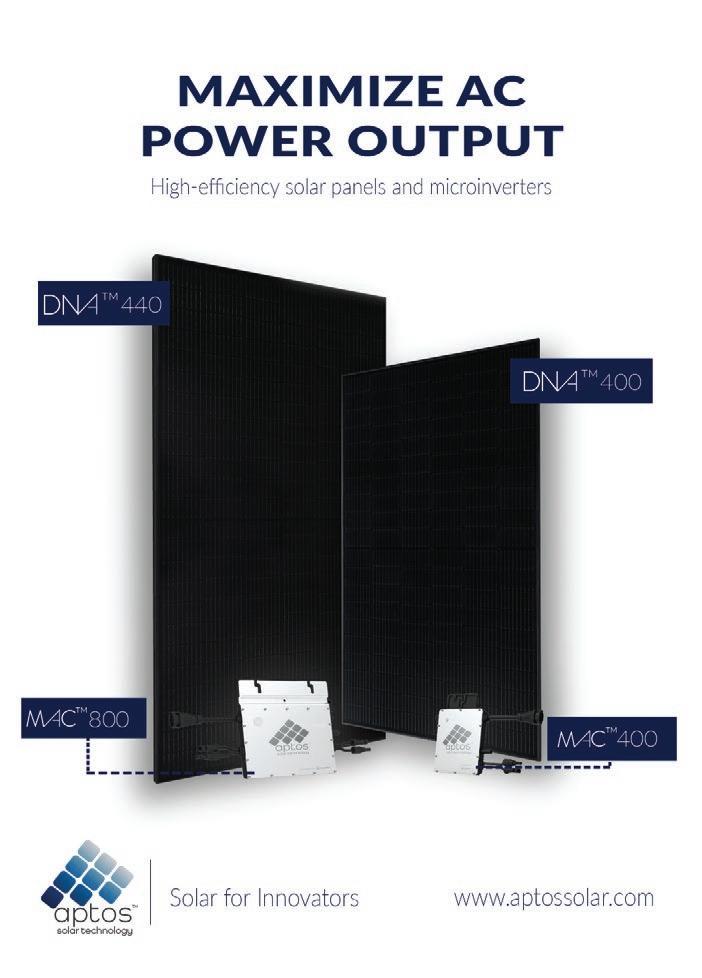
Performance Panel
Application: Residential, commercial
Maximum Power (Pmax): 400W
Maximum Power Point Voltage
(Vmpp): 31.0V
Maximum Power Point Current
(Impp): 12.9A
Open Circuit Voltage (Voc): 37.3V
Short-Circuit Current (Isc): 13.68A
Module Efficiency: 20.5%
Operating Temperature Range: -40°F to 185°F (-40°C to 85°C)
Normal Operating Cell Temperature
Short-Circuit Current (Isc): 17.55A
Module Efficiency: 21.51%
Operating Temperature Range: -40°F to 185°F (-40°C to 85°C)
Normal Operating Cell Temperature (NOCT): 45°C ± 2°C
Max. System Voltage: 1500V
Power Tolerance: 0-4.99W
Weight: 87.08lbs (39.5kg) www.vikramsolar.us
Max. System Voltage: 1500V
Power Tolerance: +%
Cell Type: Mono 182mm
Glass: Tempered glass
Frame: Anodized aluminum alloy
Weight: 68.34lbs (31kg)
Dimensions: 961.8" x 446.4" x 13.8"
(2443mm x 1134mm x 35mm)
Max Load: 1800Pa
Tests/Certifications:
ETL(UL61730), CEC (California Energy Commission) Listed
Warranty: 25- to 30-year power output warranty (10-year off-grid), 10to 15-year workmanship warranty www.allesun.com
(NOCT): 45 +/-2°C
Max. System Voltage: 1000V
Power Tolerance: -0% / +3%
Cell Type: Monocrystalline silicon
Glass: AR coated, tempered, 3.2mm
Frame: Black anodized aluminum
Weight: 48.7lbs (22.1kg)
Dimensions: 67.8" x 44.7" x 1.4" (1723mm x 1134mm x 35mm)
Max Load: 5400Pa, 113psf (front); 2400Pa, 50psf (rear)
Tests/Certifications: UL 61730, IEC
61215, IEC 61730, Fire Type (UL 1703) 2
Warranty: 25-year power, parts, and labor
warranty
www.solaria.com
SOLAR PRODUCT SPOTLIGHT: MODULES
SEE AD ON PAGE 62
North American Clean Energy 37
Architectural Solar
SEE AD ON PAGE 7
Architectural solar is increasingly being used in the construction and renovation of commercial and residential buildings. Many options are available to supplement or fully provide the building’s electrical power including glass, tiles shingles, skylights, facades, and windows. Herein we highlight some of the architectural solar options on the market today…

Nucor
Product: PowerShingle Solar
Structure
BIPV form: Shingled solar panel for pitched roofs
BIPV type: Bi-facial monocrystalline module
Power density (W/sqft): 17.48W/sf (panel),16.67W/sf (system in place)
Power (Pmax): 320W (frontside)
Open Circuit Voltage (Voc): 41.84V
Short Circuit Current (Isc): 10.52A
Max Power Voltage (Vmp): 33.47V
Max Power Current (Imp): 9.56A
Max length: 66.9" (1700mm)
Aplus Energy Co., Ltd.
Product: AP-PVROOF-522
BIPV form: Pitched roof
BIPV type: Crystalline silicon
Power density (W/sqft): 270W
Power (Pmax): 270W
Open Circuit Voltage (Voc): 32.2V
Short Circuit Current (Isc): 10.48A
Max Power Voltage (Vmp): 27.5V
Max Power Current (Imp): 9.92A
Max length: 81.1" (2060mm)
Max width: 34.25" (870mm)
SunTegra
Product Name: SunTegra Shingle Solar Roofing System
BIPV Form: Solar shingle
BIPV Type: Crystalline silicon
Power Density (Watt/sqft): 15.9W
Power (Pmax): 114W
Open Circuit Voltage (Voc): 15.52V
Short Circuit Current (Isc): 9.68A
Max Power Voltage (Vmp): 12.78V
Max Power Current (Imp): 8.92A
Max Length: 52 5/8" (1336mm)
Key Features:
• Panels form a water shedding roof structure that can be installed over light gauge purlins;
• Bifacial panels allow light into the structure;
• Panels are manufactured in the USA;
• Panels are supplied with framing utilizing Nucor steel that is manufactured and fabricated in the USA.
www.nucorbuildingsgroup.com


GAF Energy
Product: Timberline Solar
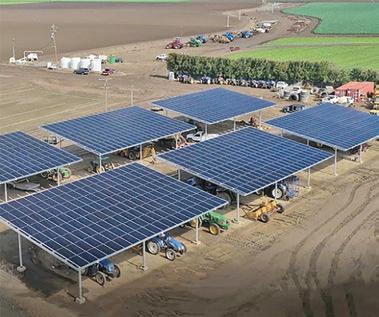

BIPV form: Pitched roof
BIPV type: Crystalline silicon
Power density (W/sqft): 14W
Power (Pmax): 46W +/-5%
Open Circuit Voltage (Voc): 10.9V +/-5%
Short Circuit Current (Isc): 5.40A +/-5%
Max Power Voltage (Vmp): 9.03V +/-5%
Max Power Current (Imp): 5.16A +/-5%
Max length: 64.25" (1632 mm)
Max width: 17.13" (435mm)
Max thickness: 1.02" (26mm)
Weight: 10lb (4.5kg)
Customizable options: Amount of energy shingles, color of surrounding asphalt shingles
Certifications: Fire Certification: UL 790
Class A; Wind Classification: ASTM D3161
Class F; Rapid Shutdown: Article 690.12 NEC, UL 3741; Module Certifications: UL 61730-1, UL 61730-2, Assessed to UL 61215; BIPV
System Certification: UL 7103; Impact

Resistance: UL 2218 Class 1; UL Listed BIPV


Roof Covering E520385; ETL Listed PV Hazard Control 5022515
Warranty: 25-year warranty (energy shingles), 50-year warranty (asphalt shingles) www.gaf.energy
Max width: 39.4" (1000mm)
Max thickness: 0.22" (5.6mm)
Weight: 49.8lb (22.6kg)
Transparency (Vlt): 12%
Customizable options: Spans of 20ft to +200ft possible
Certifications: UL
Warranty: 25-year warranty
Stellaris Corporation
Product Name: ClearPower BIPV window components
BIPV Form: Curtain wall
BIPV Type: Crystalline silicon
Power Density (Watt/sqft): 14.5W/ft2
(155W/m2)
Power (Pmax): Depends on window size
Open Circuit Voltage (Voc): 32.0V
Short Circuit Current (Isc): Depends on window size
Max Power Voltage (Vmp): 25.3V
Max Power Current (Imp): Depends on window size
Max length: No limits
Max width: No limits
Max thickness: 0.24" to 0.35" (6 to 9 mm)
Weight: Depends on window size
Transparency (Vlt): Up to 88% depending on angle of incidence or viewing angle
Customizable options: Can be made to fit virtually any size window
Certifications: Pending
Warranty: Pending www.clearpower.energy
Max thickness: 0.03" (0.85mm)
Weight: 34.2lbs (15.5kg)
Transparency (Vlt): Yes
Customizable options: Yes
Certifications: IEC 61215
Warranty: Synchronized PV and roof warranty, 10-years limited warranty of 90% and 25-years limited warranty of 80% power output www.apluspvt.com
Aesthetic Green Power Corp.
Product: Solar electric roofing tiles with thermal underlayment
BIPV form: Shingle
BIPV type: Crystalline silicon SunPower cells
Power density (W/sqft): 12.73W
Power (Pmax): 17W
Open Circuit Voltage (Voc): 4.03V
Short Circuit Current (Isc): 6.26A
Max Power Voltage (Vmp): 2.95V
Max Power Current (Imp): 5.29A
Max length: 15.75" (40cm)
Max width: 12.2" (31cm)
Max thickness: 0.314" (8.55mm)
Weight: 9lb (4.08kg)
Customizable options: Can select larger format with 6" SunPower cells
Certifications: UL 790, UL 1703, IEC/EN 61215
Warranty: 10-year product warranty, 25-year product warranty
www.aestheticgreenpower.com
Max Width: 23 1/8" (58mm)
Max Thickness: 1.5" (38mm)
Weight: 18lbs (8.2kg)
Transparency (Vlt) %: Opaque
Customizable Options: Can be off-set by use of 1/2 or 1/4 dummy panel
Standards and/or certifications: UL1703, UL1897, UL 790, TAS-100-95
Warranty: 10-year product warranty, 25-year power warranty www.suntegrasolar.com
Onyx Solar Energy S.L.
Product: BIPV Glass

BIPV form: Facade
BIPV type: Crystalline silicon
Power density (W/sqft): 11W
Power (Pmax): 773W
Open Circuit Voltage (Voc): 91V
Short Circuit Current (Isc): 9.09A
Max Power Voltage (Vmp): 76V
Max Power Current (Imp): 8.54A
Max length: 115" (2922mm)
Max width: 56.7" (1440mm)
Max thickness: 5.4" (13.8mm)
Weight: 277.8lb (126kg)
Transparency (Vlt): 5%
Customizable options: 100% customizable
Certifications: UL, IEC, MCS, UNE-EN, ANSI Z97.1-2015, ISO 9001, ISO 14001, AENOR, IQNET
Warranty: 80% output power value; after 10 years measured under standard conditions www.onyxsolar.com


SOLAR SPOTLIGHT: ARCHITECTURAL SOLAR
38 2022 SEPTEMBER• OCTOBER /// www.nacleanenergy.com
Let’s take your business to profitable new levels together.
Grow faster with a stronger solar + storage partner


High efficiency solar panels

AC & DC coupled energy storage system with 17.5kWh capacity

Complete 25-year warranty on solar panel systems, 10 years on battery storage
Long-term brand power and support from one of America’s most trusted and recognized brands
Learn more about powering the future of your business with Panasonic. Visit us at RE+, booth 1438.

SOLAR SPOTLIGHT: TRAINING North American Clean Energy 39
RE+ 2022
September 19 th -22nd , 2022
Anaheim Convention Center
Anaheim, CA
www.re-plus.com
RE+ brings the modern energy industry together to foster a cleaner future for all. The largest and most comprehensive event in North America for the clean energy industry, RE+ is comprised of: Solar Power International (their flagship event), Energy Storage International, RE+ Power (including wind, and hydrogen and fuel cells), and RE+ Infrastructure (electric vehicles and microgrids) and brings together an extensive alliance of renewable energy leaders for multiple days of programming and networking opportunities.
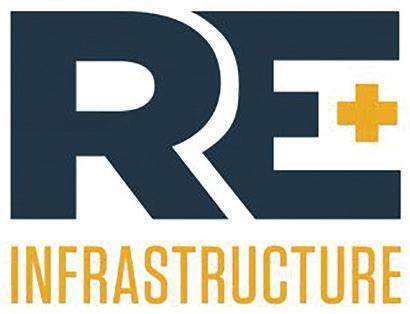


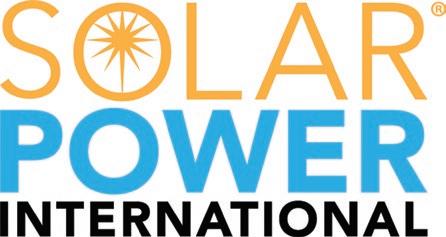
Features just some of the companies and technologies attendees will see at this year’s show.

Solar roofing solutions


CertainTeed’s Solstice Solar System combines the efficiency and affordability of traditional solar products with CertainTeed's comprehensive warranty, which covers the full system and its professional installation for up to 25 years. The Apollo II solar roofing system packs sleek yet powerful solar energy production into a low-profile roofing system, featuring easy to install solar shingles, without the bulky look of racks and panels.
CertainTeed
www.certainteed.com/solar
Booth 520
SHOW IN PRINT
SECURE CRITICAL BOLTED JOINTS

Wind, Solar, Energy Storage Tech—HEICO Fastening Systems has precise, proven and reliable solutions to ensure critical bolted joints stay secured under dynamic loads, thermal extremes, high vibration environments and tight spaces.

Ground screw solutions

American Ground Screw solutions effectively anchor solar arrays without concrete footings or deep foundations. Their system of ground screws are adaptable to any terrain and racking system, and are compatible with all static and tracking photovoltaic systems. American Ground Screw solutions are easy and affordable to install, building code-compliant, and accessible to people however they need it. American Ground Screw solutions are International Code Council (ICC) certified.
American Ground Screw


www.americangroundscrew.com
Booth 1963
Solar warning labels

PV Labels now offers an 85-piece 2020 NEC Requirement (ANSI 535.4) Label Pack. This will help the homeownerinstaller or contractor fulfill final inspection requirements with ease. PV Labels’ NEC Packs are premium labels manufactured to withstand the most demanding outdoor environments. They offer high quality vinyl and reflective materials. When paired with outdoor rated, UV resistant lamination, users can be assured their high resolution, screen-printed labels will last through any environmental demands. 2020 NEC Packs are in stock and ready to ship same day.
PV Labels
www.pvlabels.com
Booth 566
Adaptive, easy to install racking system
AceClamp is a manufacturer of non-penetrating clamps for rooftop snow retention and solar mounting systems for SSMR. Their patented, nonpenetrating sliding-pin clamp design secures to the seam without traditional set screws and does not penetrate the panel. The AceClamp comes fully assembled and installs fast, saving on labor costs. Solar Snap by AceClamp is an adaptive, robust solar racking system built to withstand harsh High-Velocity Hurricane Zone winds up to Cat 5. Designed to work with any of AceClamp's metal roof clamps, it's a solution for SSMR, Island Style Cement Cover Board Roofing, Asphalt, and Single-Ply. The unique cross-platform design adapts to all roof types, meaning there is less inventory to maintain.
AceClamp

www.aceclamp.com
Booth 1876, 1977
40 2022 SEPTEMBER• OCTOBER /// www.nacleanenergy.com
www.HEICO-LOCK.us • 888.822.5661 • Hickory, NC HEICO-TEC®
HEICO-LOCK®
Tension Nuts
Wedge Lock Washers


Solar cable management

Located in Western Pennsylvania, USA, the Cambria County Association for the Blind and Handicapped provides employment and rehabilitation services to over 500 persons with disabilities and manufactures the CAB Solar Cable Management System. The customdesigned hangers offer the simplicity of the Integrated Grounding system as messenger wire acts as the EGC and GEC. Installation of this reliable system is simple and straightforward.
CAB Solar
www.cabproducts.com
Booth 1371
Racking and bonding solutions
DynoRaxx offers solutions for pitched and flat roof ballasted solar racking and also provides the DynoBond UL2703 module to module grounding product. The flat roof racking is designed to work with all framed modules and does not require tools for assembly or installing which reduces install labor. The DynoBond grounding is used in carports, ground mounts, and other racking products which helps to reduce electrical grounding costs.

DynoRaxx
www.dynoraxx.com
Booth 1270
Reliable, safe, high quality components
Stäubli's MC4 Cable Coupler for 6 AWG cable is a UL 6703 certified product and is rated to 95A and 1500VDC. With these ratings, it meets the critical need for cable components suited to today’s higher-output photovoltaic (PV) systems.
Stäubli Electrical Connectors

www.ecs-ecart.com
Booth 1650
Locking systems to prevent bolt selfloosening
HEICO Fastening System’s family of wedge lock washers ensures the durability of BOS components over the 25-30 year lifecycle of an installation. HEICO-LOCK Wedge Lock Washers, Wedge Lock Nuts, and the recently introduced Combi-Washer prevents loose bolts under severe environmental conditions, and avoids the costly consequences of loose bolts for the life of the application. They are reusable and allow for future system upgrades, without requiring costly or fragile tools, and without damaging component surfaces.
HEICO Fastening Systems
www.heico-lock.us
Booth 154
Reliable electromechanical equipment

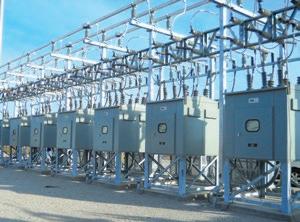
EMA is the designer and manufacturer of the highspeed grounding breaker. This equipment is designed to switch and ground solar and battery storage applications. It provides safety by cable de-energization, TOV mitigation, minimizes reverse power flow, replaces the need of grounding transformers, and lowers CAPEX and OPEX for inverter based resource operators. EMA also offers Power Distribution Centers (PDC), conventional vacuum grounding breakers, and switchgear for indoor and outdoor, including pole-mounted applications.
EMA Electromechanics
www.emaelectromechanics.com
Booth 3036
Touchless, hydraulic snow removal

Buffalo Turbine has been manufacturing turbine style blowers since 1945, which are made using high-precision machined components, resulting in long-lasting dependable products. These turbine units are being used worldwide in a variety of applications. The diverse product line provides its customers with the ability to choose a product that best suits their application and various budgets. The newest of all the applications is touchless snow removal with its stacked hydraulic unit that quick attaches to most skid steers.
Buffalo Turbine
www.buffaloturbine.com
Booth 238
Ground-mount solar racking system
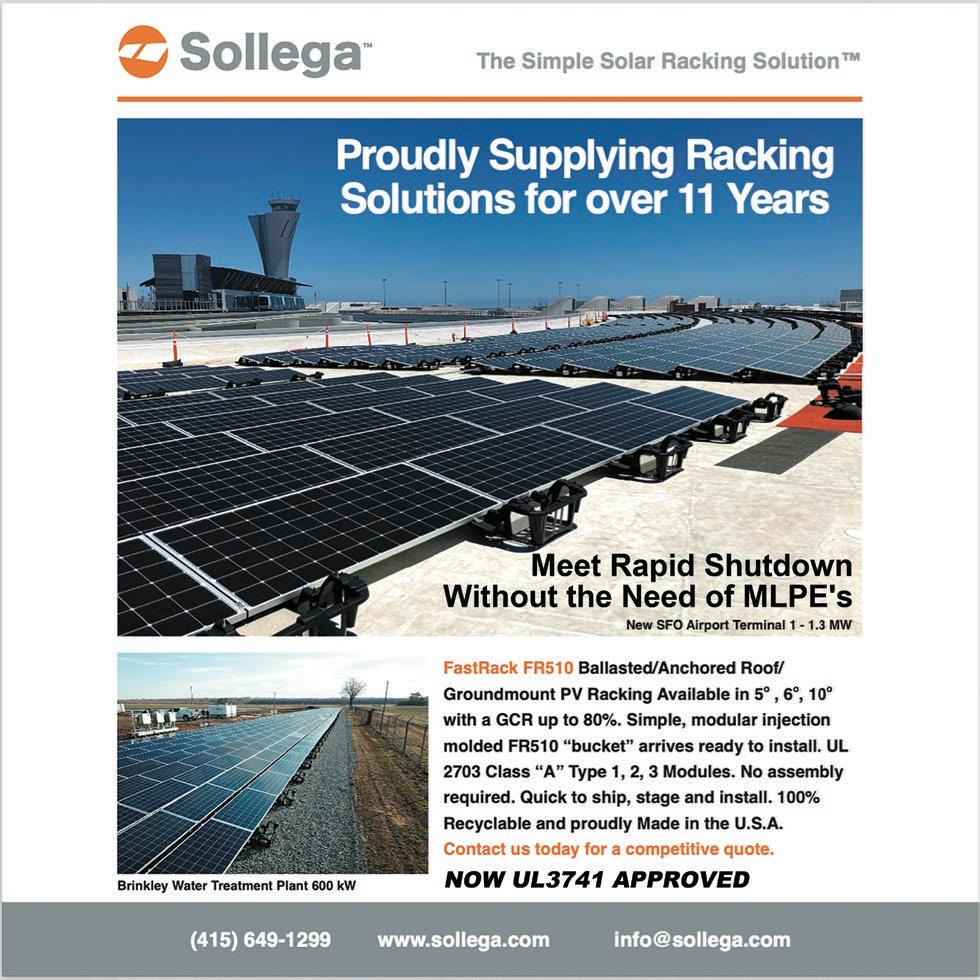

Full Tilt, developed by BCI, is an optimized fixed tilt racking solution designed to meet the installation challenges of any job site. Coupled with manufacturer direct pricing and design flexibility, Full Tilt can accommodate any module size and offers several key design features which include selfaligning Longhorn panel rails and cinch clip compatibility along with the option to install modules in the flat position. In addition, structurally independent tables are self-squaring, eliminating the need for adjustment and increasing compatibility with steep terrains.
Full Tilt
www.ft.solar
Booth 245
RE+ 2022
42 2022 SEPTEMBER• OCTOBER /// www.nacleanenergy.com
Parking lots
Energy land consultant
Lemoine Landman Services, Inc. provides land and right-of-way acquisition, title abstraction and curative, and due diligence services for greenfield and existing projects in the renewable energy and fossil fuels industries.

Lemoine Landman Services, Inc.
www.lemoineland.com
Booth 2296
transformed
into sustainable solar energy

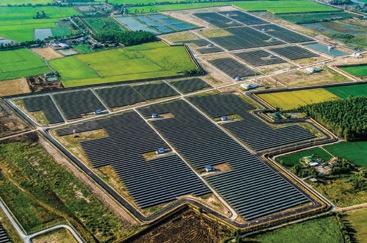
Baja designs, engineers, and installs prefabricated solar steel carports nationwide. They engineer to specific design criteria (from 20lb live load to 175mph wind to 90lb snow load) to meet customers’ unique project requirements, providing a costeffective layout utilizing different steel products, cold form steel, 3 plate, hot rolled wide flange, etc. Their in-house project team of engineers, project managers, and certified installation crews selfperform all aspect of solar steel carport construction to deliver from initial design to project execution. They work nationwide.
Baja
Carports
www.bajacarports.com
Booth 904
EMPOWERING A BETTER WORLD
Strong galvanized steel tubing

Allied Tube & Conduit manufactures various shapes and sizes of Gatorshield galvanized steel tubing. Their process produces corrosion resistance by utilizing a triple layer of protection. First 99.99% pure zinc is applied followed by a conversion coating. Finishing the process is a clear organic topcoat that seals in the protection and produces a smooth shiny appearance. Gatorshield’s zinc coating makes it suitable for outdoor or high moisture applications.
Gatorshield galvanized steel tubing is capable of being fabricated using several different methods including hole punching, cutting, flattening, bending, and more without cracking, flaking, or damaging the integrity of the coating. Their products have a minimum 50 ksi yield and 55 ksi tensile products with the ability to achieve higher properties with different steel chemistry.
Allied Tube & Conduit
atkore.com/atcm
Booth 320
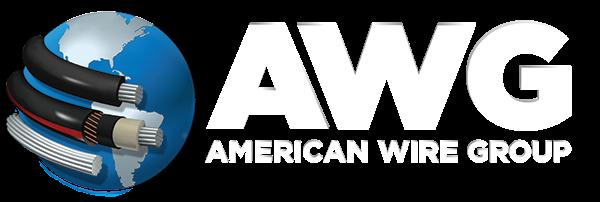
buyawg.com • sales@buyawg.com • 800.342.7215
C M Y CM MY CY CMY K AWG NACE Ad 2022 7.5x10.pdf 1 4/12/2022 10:44:59 AM
Established in 2001, AWG has become the leading material supplier of wire, cable, and accessory solutions for the power transmission, distribution, substation, solar, wind, battery energy storage, and EV infrastructure markets.
Unique asymmetrical dual post system
APA’s TITAN Duo dual post system with ground screws was designed specifically for projects with glacial till, dense soils, and rock. The system features telescoping posts to adjust for topography and has liberal slope tolerances. Rock screws mitigate foundation risk and are designed to combat frost heave. Pre-drilling, if necessary, is done with standard equipment and can streamline the installation. The racking is a continuous row design to optimize every layout and owners will appreciate the aesthetics. It is an installers’ choice for ease of stringing and has integrated wire management. APA provides turnkey mechanical installation with a large fleet of equipment. The TITAN hardware is also available with a single driven pile.
APA Solar Racking (APA)
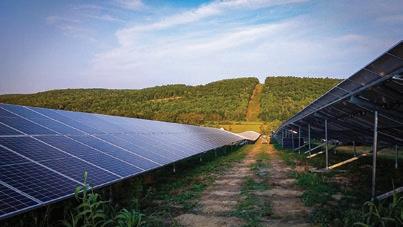
www.apasolar.com
Booth 906
Solar mounting sheathing attachment
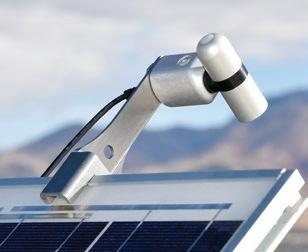

Zilla's Double Stud XL Flashing Assembly attaches directly to sheathing while also providing the option for structural members if necessary. As a between rafter attachment, the Zilla Double Stud XL eliminates rafter splits, standardizes design and installation processes, achieves optimum speed and flexibility in the field, and makes it possible to complete more projects in less time and cost. In addition, Zilla Double Stud XL features the original installation method of attachment first, flashing second, and waterproof seal third creating a dependable foundation on comp shingle roofs. Made in the USA, the Zilla Double Stud XL is compatible with other solar mounting systems and is purpose-built to drive performance and deliver better bottom-line results.
Zilla Corporation
www.zillarac.com
Booth 488
Low-cost, high-quality albedometer
Apogee Instruments’ new SP-722SS Modbus Albedometer features ISO 9060:2018 Class C pyranometers with accuracy comparable to Class A models at a fraction of the price. Designed as a low-cost, high quality alternative to expensive glass-dome albedometers, the SP722-SS is a choice for monitoring bifacial panel performance via digital RS485 / Modbus. Apogee Instruments, of Logan, Utah has been building sensors for over 25 years. Other sensors include silicon-cell pyranometers, Class C thermopile pyranometers, back-ofpanel temperature sensors, aspirated ambient air temperature monitors, and photosynthetic light sensors for monitoring the light levels of the vegetation growing under panels. Sensors come in many different output options for maximum compatibility with different systems.
Apogee Instruments
www.apogeeinstruments.com
Booth 1987
High performing data availability
The Hukseflux SRA30-M2-D1 ISO 9060 spectrally flat Class-A digital albedometer features a maintenancefree internal ventilation system which circulates heated air between the sensor inner and outer domes, suppressing dew and frost deposition on the sensor optics. The SRA30M2-D1 albedometer is suited for solar resource assessment campaigns and utility scale bifacial PV systems performance monitoring. Standard SRA30-M2-D1 features include digital tilt, humidity, pressure, and case temperature sensor readouts. All critical sensor data, including sensor serial number and calibration data, are all available via RS485 RTU / Modbus polling. The sealed maintenance-free housing and internal ventilation system design result in minimal ownership cost over the life of the sensor. Local ISO/IEC 17025 accredited calibration support is also available.

Hukseflux USA, Inc.
www.huksefluxusa.com
Booth 1376
Sales enablement platform
SOLO is a sales enablement platform for the solar industry. Providing dynamic proposals with integrated lenders and closing documents, full CAD plan sets, engineering services, and more, SOLO supports the growth that companies need in today’s competitive conditions. Additionally, SOLO partners with a diverse group of organizations providing complementary technologies, solutions, and services designed to accelerate user’s business’ ascent.

SOLO
www.gosolo.io
Booth 754

RE+ 2022
44 2022 SEPTEMBER• OCTOBER /// www.nacleanenergy.com
Wire and cable solutions
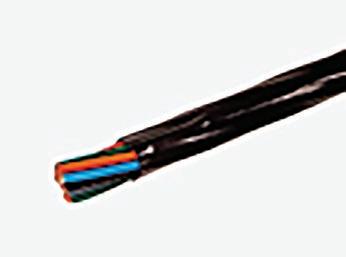
American Wire Group (AWG) offers a one-stop shopping for their customers. AWG specializes in providing wire and cable solutions for use in wind, solar, and other renewable energy applications. The renewable energy sector relies on the wind and solar wire and cable products including communication





High accuracy power metering equipment
Continental Control Systems, a wholly owned subsidiary of Socomec Benfeld France, specializes in high accuracy PV production, consumption, and export limiting power metering equipment. New current transformers are revenuegrade (ANSI C57.13 Class 0.6 and Class 0.3) ACTL split-core CTs (0.2% and
Versatile drilling machine
The WORD Skid Steer Attachment is suitable for the installation of helical anchors and ground screws or pre-drilling a solar site. The WORD Skid Steer Attachment is a versatile machine that will get the job done. Equipped with a unique motor mounting system, this one

Pitched roof mounting system
SunModo introduces the SMR Pitched Roof System, a value solution for pitched roof mounting. The SMR System’s optimized design makes the SMR Rails light and strong. With fast and easy PopOn Clamps and L-Foot adaptors, professional installers can mount,

EPEC PICS
PROTECTED INVERTER COMBINER STATION
The dawn of a new day in utility-scale solar! FINALLY, string inverter BoS CAPEX is on par with central inverter technology when you use the EPEC PICS! Plus, capitalize on the superior long-term O&M advantages that string inverter installations provide.

Introducing the EPEC PICS ‘virtual central’ product family:

• 660Vac to 800Vac balance of system technology
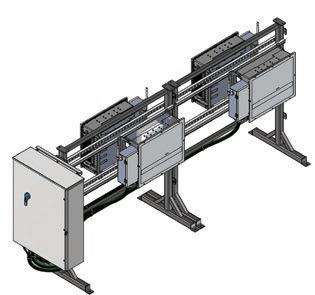
• PICS 500 (500kW) & PICS 1000 (1000kW) – UL 1741 group certified ‘virtual central’ & distributed inverter station solutions
• Approved for use with multiple UL 1741 string inverter brands


• Supports power block sizes of up to 5MW (65kAIC @ 800Vac)

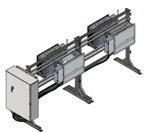




• Available completely factory integrated: PICS rack, combiner, cable, & inverters arrive completely assembled for plug and play installation

• Or, purchase the PICS combiner and follow prescribed cable size, type and length to install yourself
PICS 500
North American Clean Energy 45 PICS
1000
PICS Topology 4MVA Power Block
Typical
epecsolutionsinc.com
Innovative solar mounting solutions

QuickBOLT’s combination of QB2 + BoltSeal technology make solar installation on asphalt shingle roofs efficient. This Miami-Dade accepted mount prevents water intrusion with or without chemical sealants. The smooth torque of QB2 + BoltSeal helps installers get their jobs done quickly and protects roofs from install onward. QuickBOLT’s mounts are designed in partnership with metal roof manufacturers Decra, Westlake Royal Roofing, Isaiah, and many others and their SCS roof mounts work on all metal tile profiles and will help installers establish new lines of income for their solar install business.

QuickBOLT
quickbolt.com
Booth 880
Energy-dense battery
The EVLO 1000 Battery Energy Storage System offers advanced safety systems, simplified installation, and a powerful EMS for web-based remote control and monitoring. The EVLO 1000 is scalable for multiMWh applications. Ruggedized BESS with a lifespan of up to 20 years, it’s suitable for utility applications, including capacity adequacy, static and dynamic peak shaving, frequency regulation, renewable energy integration, and T&D investment deferral. Designed to NFPA 855 requirements, the EVLO 1000 features proprietary LFP battery chemistry and thermal stability. It also comes equipped with multiple safety features, including a patentpending emergency venting system, NFPA 69-designed active ventilation, dry pipe sprinklers, and more.

EVLO Energy Storage Inc.
evloenergy.com
Booth 4164
Solar tracking solutions

PVH offerings are made to handle all types of terrain and environmental conditions, and they use wind tunnel testing to ensure safety and high LCOE. Axone Duo optimizes capital costs, is easy to install, has low O&M, and handles 80% of projects worldwide. Monoline+ 1p is designed to withstand high winds, steep slopes, and inclement weather, while Monoline+ 2p is made for difficult or limited terrain and high slopes. Together, these offerings provide their clients with options for any site development. As a Gransolar group company, PVH began its solar tracker activity in the USA more than ten years ago. With a large portfolio of projects from Safe Harbor agreements, it has delivered hundreds of megawatts, and continues to expand in North America.
PVH
www.pvhardware.com
Booth 1472
Compact, customizable inverter station
Ingeteam’s Full Skid Power Station is a UL 9540 and UL 1741 SA compliant medium voltage turnkey solution which integrates all the devices required for a system of up to 7.650 MVA into a single skid platform. Available with INGECON SUN PV inverters or INGECON SUN STORAGE battery inverters, this compact, customizable station is reliable, easy to transport and install, and offers a flexible design which can fit up to two inverters on one skid. Combining Ingeteam’s expertise in the power conversion field (+75GW supplied worldwide) with plant control technology, and monitoring solutions, its highly efficient electronic conversion, and protection devices allow for efficiency values of up to 98.9%.

Ingeteam
www.ingeteam.com
Booth 720
Grid control software for utilities and C&I

PXiSE Energy Solutions enables utilities, campuses, and communities to reach their clean energy goals by giving grid operators the control they need to manage growing renewables and distributed energy resources, while providing safe and reliable power. The company offers three core products: Microgrid Controller, DERMS, and Renewable Power Plant Controller.
PXiSE Energy Solutions
pxise.com
Booth 854
Metal roof mount attachments
Solar Connections International is a provider of roof mount attachments for metal roofs, including standing seam, corrugated, and R-Panel/Ag style metal roof panels. An L-Foot can be easily attached for a rail install or use their patented, UL 2703/1703 Solar Connection Kit which is a fully rail-less solution.

Solar Connections International
www.solarconnections.com
Booth 1964
RE+ 2022
46 2022 SEPTEMBER• OCTOBER /// www.nacleanenergy.com
OPTIMIZE ENERGY STORAGE FOR RELIABILITY AND ROI


SCORE VALUE WITH A ONE-SOURCE ENERGY SOLUTIONS PARTNER
Utility-scale energy storage is on the rise. Analysts forecast U.S. deployment will double by the end of 2023 to 10GW, spurring innovation and opportunities.

To take advantage of this, developers and asset owners must consider various Lithium-ion battery technologies and optimize use-case scenarios to maximize returns. They need out-of-the-box thinking and smart strategies to lower total cost of ownership and ensure they get the most competitive energy storage solutions.
KEY CONSIDERATIONS FOR ENERGY STORAGE
› Work with a technology and vendoragnostic partner who can match products with needs to optimize yield
› Focus on achieving cost and revenue advantages with systems value-engineered for LCOS, CapEx, OpEx, IRR, and total cost of ownership

OPTIMIZE BESS FOR SUCCESS
› Review use cases to either generate revenue, such as energy arbitrage or frequency regulation, or avoid costs like resiliency, supply capacity, or transmission relief
› Consider EPCs with global procurement strength to help mitigate supply risks and ensure competitive pricing
DEPCOM’s proprietary system optimization helps developers maximize returns on stand-alone storage and hybrid PV+ BESS. Our sophisticated controls and modeling achieve success with maximum performance and ROI.


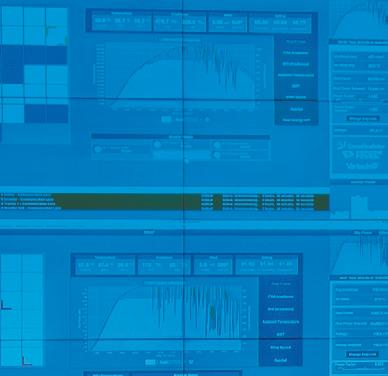

Evaluating multiple battery technologies, designs, and grid requirements, DEPCOM designs systems to meet specific goals:
› Reduce CapEx
› Minimize OpEx

› Optimize battery augmentation
› Safely achieve best lifetime system LCOS

In a recent project, DEPCOM modeled 15 battery systems with varying technologies and system configurations against local requirements to save millions in avoided installation, augmentation, and replacement costs. This optimization resulted in anticipated total savings of $19 million over the system’s 25-year lifespan.




SCORE VALUE AND BANKABILITY
Leverage the full spectrum of DEPCOM’s in-house EPC and O&M capabilities. With a track record deploying 4 GWs of utility-scale solar and more than 750 MWh of energy storage, DEPCOM delivers safe, e cient and reliable systems.




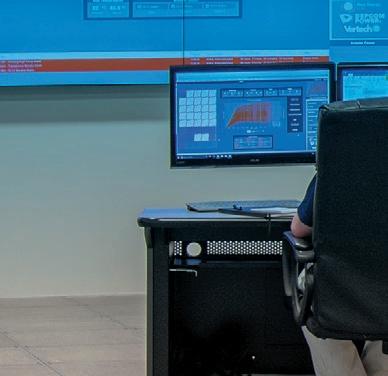
As a Koch Engineered Solutions company, we access next-generation storage technologies across the value chain. Our global logistics expertise provides customers the most bankable storage solutions.
DEPCOM means value and the peace of mind that comes from working with a vertically integrated partner, backed by the second largest privately held company in the US.
North American Clean Energy 47depcompower.com
Transactional legal services
McCauley Lyman is a transactional law firm dedicated to helping businesses grow and thrive in the renewable energy arena. They help their clients negotiate contracts, obtain permits, acquire real estate, arrange financings, and purchase and sell energy-related businesses and their assets. By leveraging their network of resources and decades of experience in the industry, they are able to provide representation while maintaining a close eye on costs. They give practical advice, have good judgment, and play well with others.
McCauley Lyman LLC
www.mccauleylyman.com
Booth 1988
Agnostic solutions by way of augmented reality
At RE+, Terrasmart features select products and services through the lens of Augmented Reality (AR). From project optimization to foundation selection and integrated racking to electrical wiring and installation, Terrasmart delivers true agnostic solutions to support every stage of a project’s lifecycle. Products shown via AR include: GLIDE Agile and GLIDE Wave ground mount racking that fit ground screw and driven pile foundations. GLIDE accommodates high slopes, undulating terrain, and has fewer parts allowing for ease of install; TerraTrak, their patent pending A-frame tracker, compatible with driven pile and ground screws, allows for ultimate adjustability on all terrains; canopy and rooftop structures present the ability for full customization in commercial and industrial sectors; various eBOS wiring solutions performing a quick plug-and-play in the field; and demos of SIFT, Terrasmart’s Solar Instant Feasibility Tool, will be available showing how the project optimization software is used for fast feasibility studies, ensuring users select the right products and maximize IRR.
Terrasmart
www.terrasmart.com
Booth 1104
Roof mounts with no membrane welding required
OMG offers a full line of PowerGrip roof mounts to secure solar arrays to commercial roofs. The newest PowerGrip, the Universal 7, requires no membrane flashing. Features and benefits include redundant water blocking systems; compatible with any commercial roof: TPO, PVC, EPDM, coated single-ply, Mod Bit, BUR, and PUF (sprayed polyurethane foam); compatible with roofs that can’t accept a membrane flashing: acrylic, urethane and silicone coated roofs, PUF, etc. This mount does not transfer compressive forces to the roof assembly, making it suitable for roof assemblies that cannot handle weight, and is also suitable for roofs that are subject to high weight, such as from snow load. A unique feature that resists moment (overturning) forces, making it suitable for parapet walls as well as sawtooth, barrel, and other roofs with higher slope.
OMG
Roofing Products
omgsolar.com
Booth 2290
Reliable solar tracking products and services
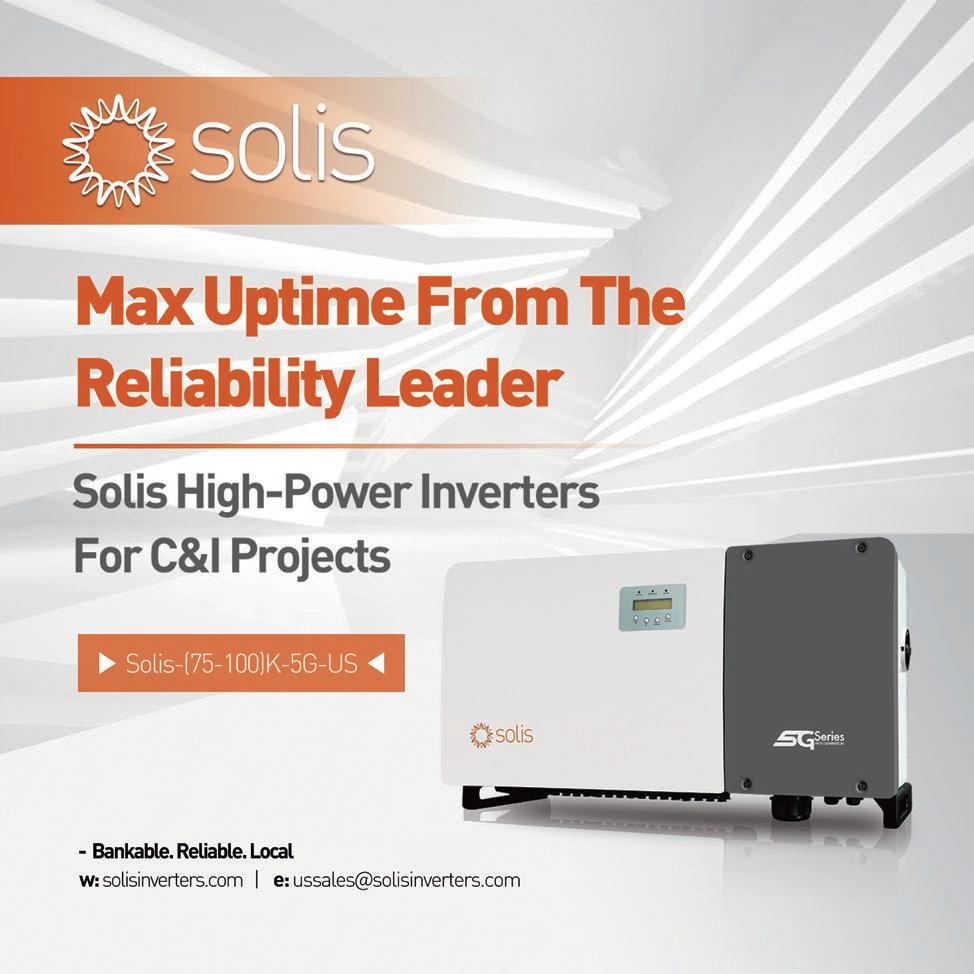


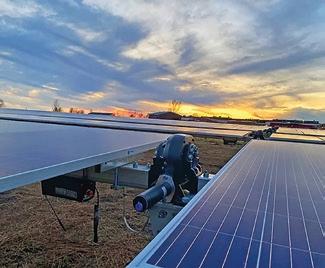
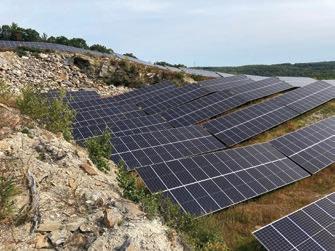
Made in the USA power transformers
Virginia-Georgia Transformer Corp designs and builds power transformers that are reliable and resilient, and offers a short lead time in North America for both Main Power and Pad Mount Transformers.


Virginia-Georgia Transformer Corp.
www.vatransformer.com
Booth 315
FlexTrack Trackers and Solar FlexRack’s full suite of solar project services and support for commercial and utility-scale solar installations. From the preliminary layout and design, through geotechnical engineering, construction, and commissioning, and for the life of the system, FlexTrack solar Trackers provide a reliable solution that reduces installation time and cuts operations and maintenance costs.
Solar FlexRack

solarflexrack.com
Booth 704
RE+ 2022
48 2022 SEPTEMBER• OCTOBER /// www.nacleanenergy.com































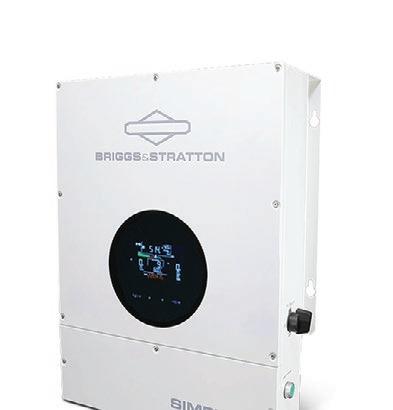











North American Clean Energy 49 ENERGY STORAGE SYSTEM
SCALABLE & VERSATILE ENERGY STORAGE SYSTEM Introducing the SimpliPHI™ Energy Storage System from the power experts at Briggs & Stratton®. The most advanced safety-certified system available, it delivers true energy independence on or o the grid. Engineered and Manufactured in California, USA. Briggs & Stratton has a policy of continuous product improvement and reserves the right to modify its specifications at any time and without prior notice. Please visit BRIGGSandSTRATTON.com for the latest information. Copyright © 2022 Briggs & Stratton. All rights reserved. Learn more at BRIGGSandSTRATTON.com/SimpliPHI + + SimpliPHI™ Battery SimpliPHI™ Hybrid Inverter EnergyTrak ™ Control System MODULAR COMPONENTS Scalable system for all primary or backup power storage needs. EASY TO INSTALL Flexible options for AC or DC coupling with IP65 rating for indoor or outdoor use. SMART CONTROL Easy system installation, configuration, and management via smartphone app.
THE MOST
Advanced circuit protection
SIBA designs and manufactures advanced circuit protection fuses for a wide range of applications, such as BESS, PV, AC and DC semiconductor applications, Traction, AC, and new 1000VDC UL drives, Transformers: dry, under-oil, and overhead, capacitors, filter and harmonic banks, and their line of circuit level SMD and miniature fuses.
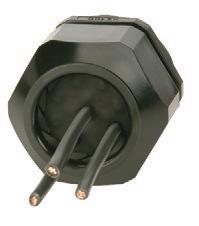

SIBA Fuses, LLC



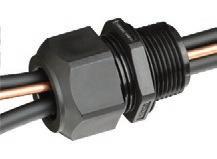

www.siballc.net

Booth 1212
Real time solar data acquisition
Often referred to as reference cells in North America, IMT Solar's Silicon Irradiance Sensors fill a crucial role in enabling PV system owners to acquire real-time solar data, moment by moment, and in the most cost effective method possible through the monitoring system of their choice. These sensors are used by government agencies around the world and have some special characteristics that differ from Pyranometers and are suitable for PV monitoring. Available with Modbus or Analog output signals and made in Germany, these robust outdoor rated sensors have been in use for over 25 years. Modbus Versions of their sensor have optional wind speed and temperature sensors available.

IMT Solar www.imtsolar.com
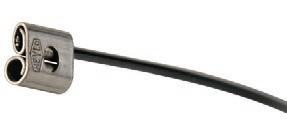

Booth 1993
Global power system engineering and consulting



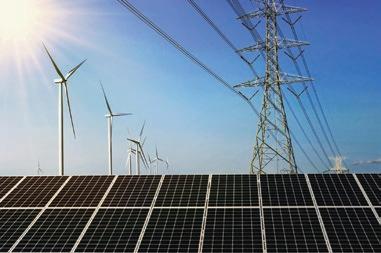
Electric Power Engineers is a global power system engineering and consulting firm. EPE’s capabilities and services cover the full spectrum of transmission, distribution, generation, and technology needs from key client groups. EPE’s expertise and skillsets span Utility Engineering, Grid and Resource Integration, Reliability and Compliance, and Software and Grid Analytics. They tailor their services to ensure each project’s success.
Electric Power Engineers (EPE)
epeconsulting.com
Booth 4480

RE+ 2022
50 2022 SEPTEMBER• OCTOBER /// www.nacleanenergy.com (800) 837-5707 | sales@trachteusa.com trachteusa.com Collector Station Controls Interconnect Substations SCADA Enclosures Communications Buildings Switchgear Enclosures w w w . h e y c o . c o m “Stay Connected with Heyco” Power Components Box 517 • Toms River, NJ 08754 • P: 732-286-4336 • F: 732-244-8843 For FREE samples or product literature, call toll free 1-800-526-4182, or visit heyco com HEYCO® Wire Management Solutions for Solar Installers & Integrators... Heyco® Solar Products Warranty Visit www heyco com for information about Heyco’s 20 Year Limited Warranty on our solar products Heyco® SunBundler® Stainless Steel Wire Cable Ties Aircraft grade 302/304 stainless wire w/UV protected vinyl jacket and stainless steel crimp sleeve, 8 (203 mm) to 20 (508 mm) lengths
HEYClip™ SunRunner® Double-compression design holds from (1) 12 gauge USE-2 to (2) 8 AWG cables up to 8,3 mm OD
Cordgrips
Enphase Q Cable Heyco now offers 1/2˝ NPT and 3/4˝ NPT cordgrips compatible with the Enphase Q Cable Use the 1/2˝ NPT for just 1 Enphase Q Cable or the 3/4 NPT for 2 Enphase Q Cables PLUS a #8 solid Grounding cable Heyco Edge Clips Heyco Edge Clips provide high panel retention forces while req low inser tion forces Ideal soluti for applications where holes are not available or temperatures are too extr for adhesive solutions NEW & Heyco Heavy Duty Lockit P Clamp Available in three different sizes to accommodate a variety of cables ranging from 1 5 to 3 in diameter Unique design allows for installation of Heavy Duty Lockit P Clamps to be independent of cable installation while release feature allows for ser viceability or field maintenance Heyco®-Tite Solar Masthead® II Liquid Tight Cordgrips Now accommodates #6 AWG cables! T
skinned-over technology allows installers to use the same par t for multiple applications/cable configurations
liquid tight Now for #6 AWG! 3487 Heyco_NA 3.5x10_Layout 1 7/19/22 3:49 PM Page 1
Heyco®
Heyco®-Tite
for
unique,
while remaining
MC4 CONNECTORS
Small Components. Big Impact.
Your bankable partner
Our more than 25 years of experience and impressive track record in connecting complex photovoltaic (PV) systems worldwide enable us to create long-term value. With quality product solutions and services for eBoS (electrical Balance of Systems) applications in PV plants, we make your project reliable and efficient. Individually tailored to your needs, we provide you with all the relevant elements for perfect collaboration as your partner of choice.

The MC4 family of PV connectors are rated up to 1500 V UL, 95 A, and are available for 14 through 6 AWG cable configurations. Visit our website for a complete product portfolio, including in-line fuses UL rated up to 1500 V, to 30 A.

Shop online: www.ecs-ecart.com
Contact us today
ec.us@staubli.com | (707) 838-0530
Attending SPI this September in Anaheim, CA? Visit us at booth #1650

North American Clean Energy 51 Stäubli is a trademark of Stäubli International AG, registered in Switzerland and other countries.© Stäubli 2022 FAST MOVING TECHNOLOGY
Stainless steel fasteners
Marine Fasteners is a supplier of stainless steel and non-ferrous fasteners, in U.S. and metric threads. They stock a full line of 304 and 316, Magni 565, Delta-Protekt, hotdip galvanized, and their very own chrome plating line. Stocking well over $24 million worth of fasteners in nationwide locations, with another $4-6 million on order every day, they maintain customer requirements in stock. If not, their sales staff, with over 700 years of combined fastener experience, can supply competitive parts or custom manufacture to meet their customer’s delivery needs.

Marine Fasteners

www.marfas.com
Booth 1471
Mechanical solar tubing

Lock Joint Tube, manufactures their mechanical solar tubing at tube mills that can hold extremely tight tolerances. LJT manufactures a complete line of solar mechanical tube and fence tubing to secure solar facilities. LJT has over 350 different OD’s to choose from and can roll up to 52ft lengths. They offer a wide variety of coatings from HRPO, galvanized, and their signature galvanized clear coat, Lock-On-Galv. LJT's pre-galvanized coil, allows the same amount of galvanized coverage on the inside as well as the outside of the tube. Also, LJT’s Lock-OnGalv clear coat helps protect their customer’s investment in the field.
Lock Joint Tube


www.ljtube.com
Booth 1277
Liquid tight solar mastheads

Heyco Products Corp. has recently expanded their line of Solar Mastheads to support #6AWG cables. Heyco's Solar Mastheads provide liquid tight protection in their installations. The unique, skinned-over technology provides installers with the flexibility of using the same part number for multiple applications since no two jobs are ever the same. Use as many, or as few, holes available in the cordgrip without compromising the IP rating. Simply pierce the skin and feed the cable through the holes, unpierced holes will remain liquid tight. The new additions can accommodate cables as large as 10.3mm in diameter and include the following sizes: 1 1/4" NPT (up to 5 cables), 1 1/2" NPT (up to 7 cables), and 2" NPT (up to 8 cables).
Heyco www.heyco.com
Booth 1491
Virtual central skid solutions

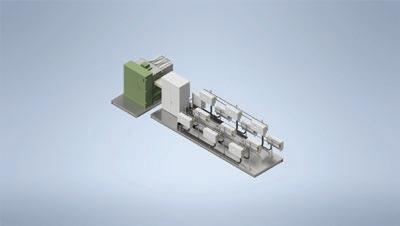
EPEC Solutions announces virtual central and inverter cluster skid solutions to enhance their line of balance of system equipment for AC string inverter systems. The virtual central skid features string inverters that are pre-mounted and cabled to an EPEC UL 891 AC switchboard. The switchboards are available with a direct connection to the MVT. The skids are designed for customer required wind and snow loads and are available with PE stamping. Auxiliary power center and SCADA cabinets are included as customer requirements dictate. Virtual central and inverter cluster designs from 500kW through 3MW. The virtual central skids incorporate EPEC Solutions UL 891 certified switchboards for solar. Solar switchboards are available through 800VAC, from 400 to 4000A, with direct connection to the most major brands of MV transformers.
EPEC

Solutions
www.epecsolutionsinc.com
Booth 354
RE+ 2022
52 2022 SEPTEMBER• OCTOBER /// www.nacleanenergy.com Get 20 module options in 20 seconds Better procurement for large-scale solar projects. Goodbye RFPs. Hello Anza. Try it out at anzarenewables.com/modules
OMCO Solar and Moss:
A Utility-Scale Success Story
Together, OMCO Solar and Moss completed the largest racking portfolio in OMCO Solar’s history and one of the largest utility-scale fixed-tilt portfolios in the United States.

LOCATION: Southern Florida
PROJECT SPECS:
6 sites ranging from 450 acres to 550 acres
OMCO SOLAR SOLUTION: OMCO Choice™ FactoryDirect Mounting System
TOTAL CAPACITY: 650+MWdc
TOTAL SOLAR PANELS:
1.85 million
“What I like about OMCO Solar is that they lived up to their word; they made a commitment to us, and they executed on that commitment. Even with challenges, they were open and honest and we worked together as a team to solve them.”
• Pierceton, IN
• Phoenix, AZ
• Wickliffe, OH
Shortest Lead Times - Low Freight Costs - Precision-Engineered - Customizable Solutions

North American Clean Energy 53
omcosolar.com
America’s Premier
- Direct
of Solar
and
- Tilt Solutions
Factory
Manufacturer
Trackers
Fixed
• Talladega, AL Nationwide Manufacturing Footprint
–Edwin Perkins, President of Moss Solar Watch a video about the project at:
Multiport power converter
CE+T America’s Stabiliti 30C3 Converter is a compact 3 ports (AC/DC/DC), lightweight, and innovative multiport power converter with a 480VAC, three phase AC port that is galvanically isolated from its two DC ports, each with a Zero to 1000VDC range. All ports are bi-directional, for protection and easy interconnection between power sources including AC grid, PV, wind turbine, and batteries. Stabiliti 30C3 offers Solar UPS for energy saving and power resilience and will perform peak shaving, power augmentation, microgrid, and reduce stress on the grid in EV charger applications.

CE+T America

www.cet-america.com
Booth 3486
Cable triplexing solution
The VelociWrapper is an MV cable triplexing solution that is fast, cheap in materials, and provides a finished product with a tightly wrapped, triplexed bundle. Self-powered and self-operating, the machine requires no external power connections, has no motor, and is rotated by the twine being pulled through a patented pulley system. The VelociWrapper idea came when a couple of guys with a lot of wind farm and solar farm experience, as well as equipment design experience, came together to figure out a way to triplex and bundle cable.
VelociWrapper
www.velociwrapper.com
Booth 4466
Fully autonomous waterless panel cleaning
PLECO is a light, fully autonomous, waterless solar panel cleaning robot. PLECO robots are designed to maximize electricity yields while at the same time providing a human-safe and cost-optimized solution for the specific challenges facing rooftop and commercial solar panel installations. PLECO users get close to 100% output efficiency thanks to anytime autonomous cleaning even with challenging topologies, 45o sloping roofs, and inhospitable climates and working conditions. PLECO robots can deliver up to 500kW coverage per day, just press “go”, there are no operators or joystick needed.
BladeRanger
www.bladeranger.com
Booth 4470
Energy asset monitoring

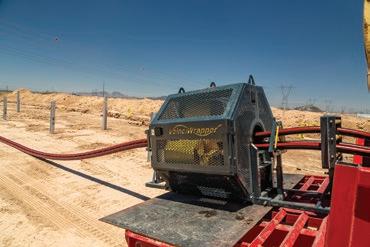
Indji Systems’ Indji Watch product line monitors over 650 energy assets globally including solar farms. Indji Watch enables informed decisions for solar operations through intelligent monitoring of assets, accurate alerts, and high-resolution model forecasts. For the 2022 storm season they introduced high impact alerts for damaging hail and high winds. These alerts arrive before the damaging storm impacts their client’s solar assets allowing them ample time for mitigative action. Indji Watch ensures users have the best possible picture of how the weather will impact operations, allowing them to drive efficiencies, improve outcomes, and increase safety.
Indji Systems
www.indjiwatch.com
Booth 4364
Energy & Solar Projects

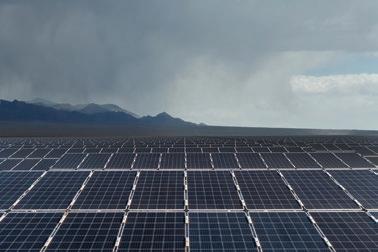
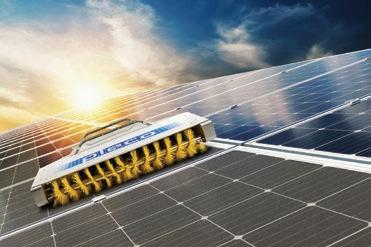
We work with construction firms, contractors and developers transporting, storing, transloading, consolidating and coordinating all types of energy & solar projects that are operating, under construction or under development.



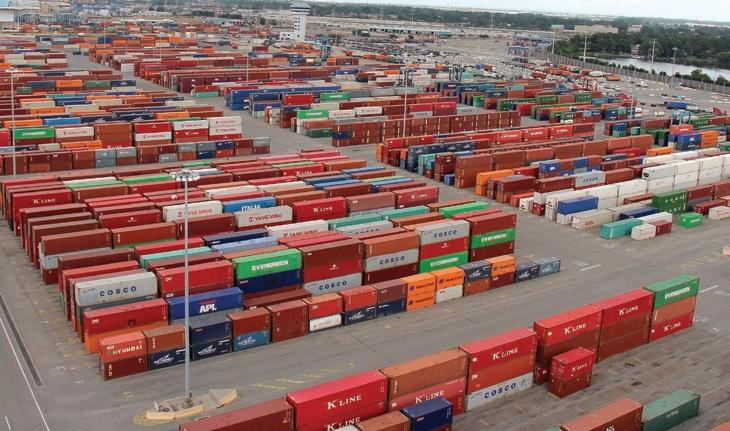

RE+ 2022
E: cs.energy@cornerstone-systems.com • P: 800.393.4933 cornerstone-systems.com/services
• Project Management Expertise • Time Critical Deliveries • Warehouse Storage/Inventory Management • Transload/Consolidation Capabilities • Container, Vans, Flatbeds, LTL & more • Flexibility to Adjust to Job Site Requirements We Keep Energy & Solar Construction Sites Supplied With What They Need When They Need It
Would you like to know more, find us at SPI #1416
The third-generation HEM platform takes renewable energy to the next level, integrating advanced features for energy storage on AC & DC coupled projects.
4.2MW AC output. Ready to connect up to 4.8MW DC coupled BESS. Full power at 1500Vdc. iCool 4 system. Up to 4 independent inputs for AC coupled BESS. Most powerful DCDC 1.2MW converter.

Apprenticeship and training programs

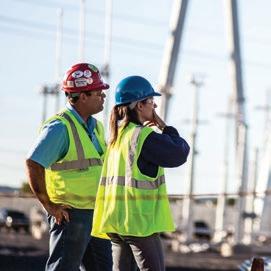
Powering America’s team, consisting of craftspersons who are members of the International Brotherhood of Electrical Workers and their signatory contractors, including those who are members of the National Electrical Contractors Association, can help design highly efficient, even “Zero Net”, construction projects, perform energy audits, and ensure the right electrical systems are installed, so customers can lower their energy costs and quickly recover their investments.
Powering America
poweringamerica.org
Booth 3288
Solar solutions for ground-mount installations

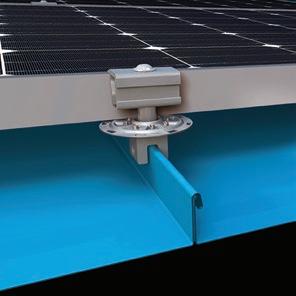

Gripple’s Cable Routing system is designed to suspend data and power cables creating an easy way to install, manage, and maintain without the need for heavy equipment to dig trenches. Their fast and easy Bracing Kits are designed to reduce deflection and stress on the ground-mounted steel frame and can be installed initially or retroactively to create a safe and robust structure. Finally, in order to simplify while maintaining a secure mount, Gripple provides engineered anchoring kits to replace concrete ballasts. Their anchors are suitable for all soil types to prevent uplift, lateral movements, and overturning of the ground-mounted solar arrays.
Aesthetic, high power module
LONGi’s new Hi-MO 5, 54-cell module delivers high power generation performance and high module efficiency with an aesthetic appearance for rooftop distributed generation projects. The new module comes with a power boost at more than 400W per module, allowing installers to reduce system costs.

The modules use the same larger cell technology found in LONGi’s HiMO 5 modules designed for utility scale. The Hi-MO 5, 54-cell comes in an all-black design, as well as black with a white backsheet with a 12-year warranty for materials and processing and a 25-year warranty for extra linear output. This module is compatible with mainstream smart module-level power electronics (MLPE) devices such as Enphase microinverters and Solar Edge optimizers. Customers looking for a more rugged module with added resiliency from the glass-glass design and 30-year warranty will benefit from the power boost in the bifacial module option.
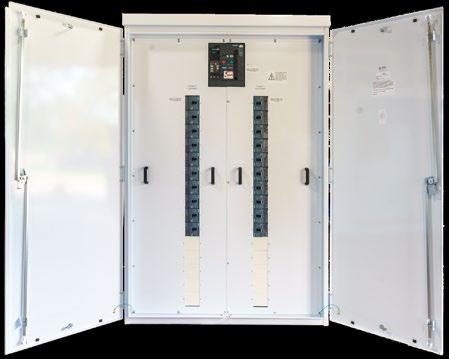

LONGi
www.longi.com
Booth 1604
Direct-attach mounting components

Solar installation is quick and convenient with direct-attach. PVKIT 2.0 utilizes clamps or brackets and a grab system to marry the module to the built-in rails. Lower the weight of the entire system, reduce logistics and shipping hassles, off and on the roof, while saving significantly in install time and labor. The S-5! PVKIT 2.0 comes pre-assembled, requiring only a single tool to install the S-5! clamp and PVKIT. Featuring aggressive bonding teeth for better grounding, this UL 2703 listed solar module mounting solution requires fewer lugs/ground wires, helping customers save time and money when flush mounting.
S-5!
www.s-5.com
Booth 804
USA-made solar tracker and racking solutions

OMCO Solar’s Origin Bifacial Tracker features an open-back, 2-inlandscape design, which offers 20% more back side production to meet utility-scale demands for increased energy yield. Both Origin and OMCO's CHOICE Factory-Direct Mounting Solutions are domestically manufactured with high-strength roll-formed steel. OMCO Solar offers short shipping times due to four strategically located U.S. plants.
OMCO Solar omcosolar.com
Booth 528
RE+ 2022
56 2022 SEPTEMBER• OCTOBER /// www.nacleanenergy.com ANAHEIM, CA Solar optimization one row at a time SOLAR SPECIFIC UL 891 SWITCHBOARDS OFFER ADVANTAGES! • UL certified 480Vac through 800Vac • 800A through 4000A (Main breaker & Main Lug Options) • Direct bus connection to MV Transformer • No nuisance tripping! Electronic trip breakers on main & all feeders • Reduce cable sizing! 100% rated MCCBs • Compact! Main Breaker & up to 30 feeders in 90” x 60” x 36” epecsolutionsinc.com







O&M,
provides comprehensive startup, commissioning, EPC, O&M, and electrical testing services. The KE team can design the layout, procure the panels, build the site, maintain and monitor operations, and more. Knobelsdorff www.keway.com Booth 1968 Clean energy storage system For over 100 years, Kohler Generators have powered America’s homes, and now, Kohler is offering www.americangroundscrew.com Simple. Solid. Sustainable. • Specified for Use With IronRidge, SnapNrack and Other Leading Racking Systems • First Building Code Certified Screw Foundation System in The U.S. • Year-Round Installation • No Concrete & No Excavation • Environmentally Friendly • Immediately Loadable • Cost Effective
EPC,
and power services Knobelsdorff
AI powered design and sales tool
Fully automated bird repellant
AVIX Autonomic is a fully automated laser bird repellent that keeps birds away 24/7. Birds perceive the moving


American made dualglass modules
PowerShingle from Nucor is a solar panel technology with an innovative water-shed design to keep everything
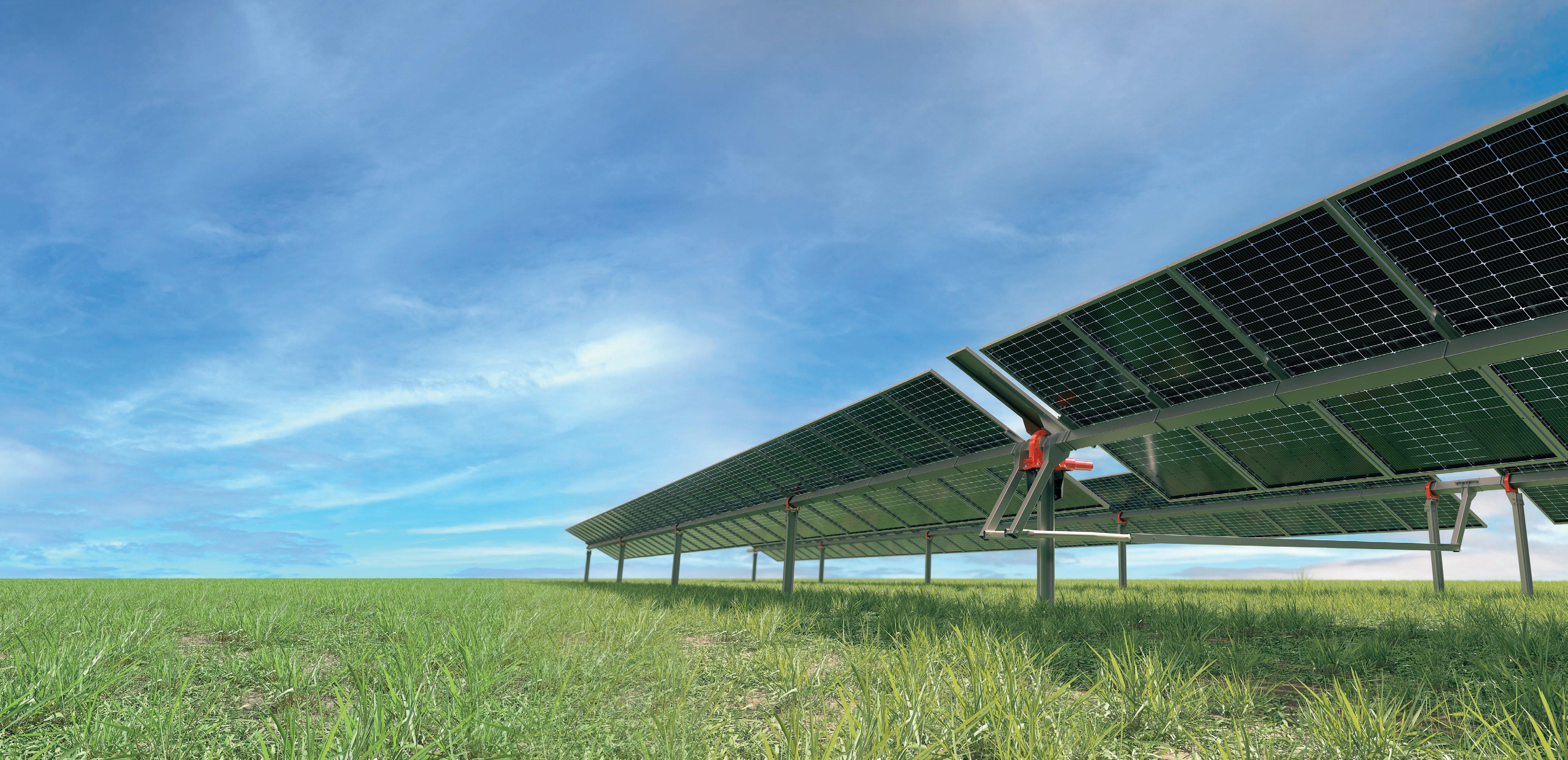
Automated structural and electrical engineering for rooftop solar iRooFA, is Instant Roof Framing
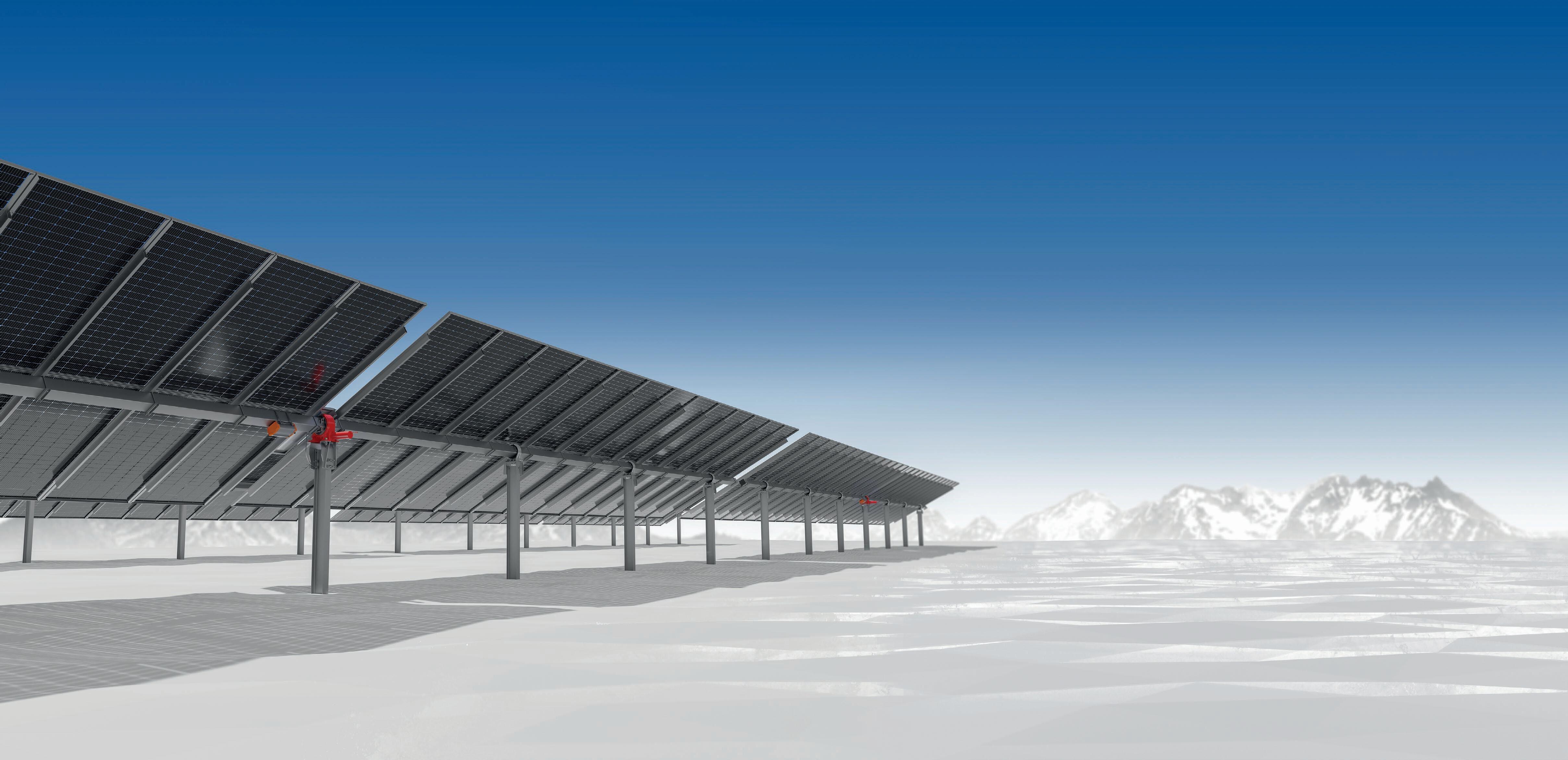
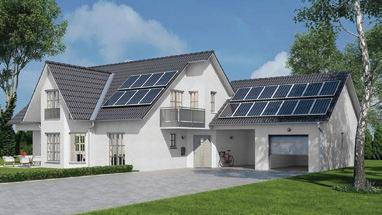


RE+ 2022
Powered by Aurora Solar’s computer vision algorithms, Aurora AI generates 3D models in 30 seconds




Electronic test tools and software










Fluke can provide solar clamp meters, solar irradiance meters, and photovoltaic testers for residential needs, commissioning of a new PV array, routine maintenance on a solar farm or photovoltaic power station, and electrical vehicle charging stations and battery testing and inspection systems testers.
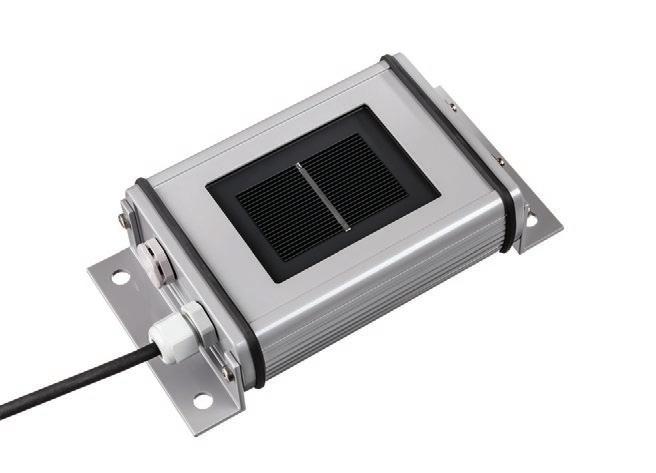



Fluke






www.fluke.com





Booth 173
and enclosures






Trachte, LLC manufactures modular, prefabricated substation control buildings, and electrical equipment enclosures for electric utility and renewable energy applications.


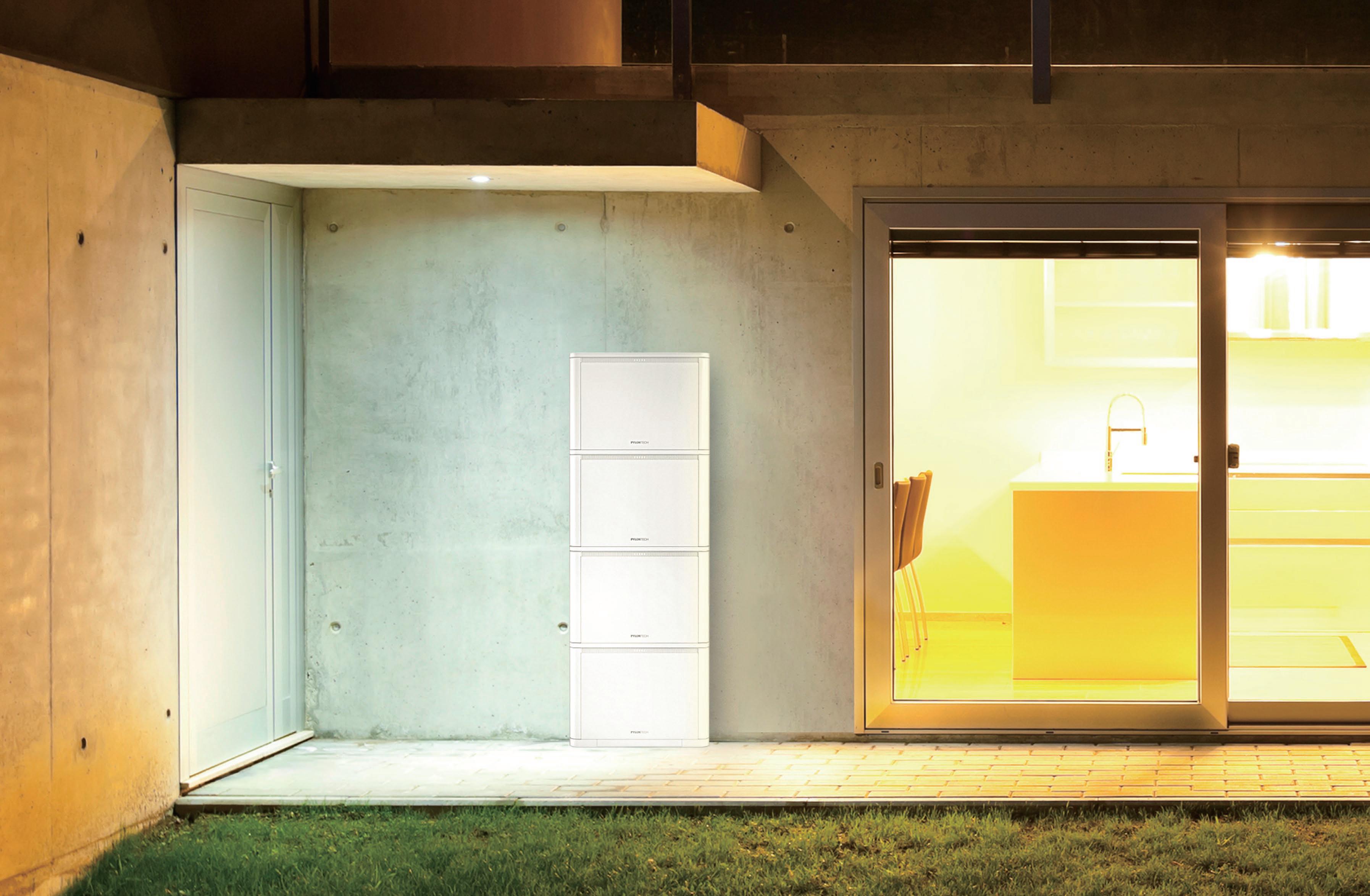
Trachte’s customer substation buildings are constructed for clients’ requirements and site location with the electrical, HVAC, service equipment, cable tray, and grounding, etc. pre-installed prior to shipping.
Trachte, LLC









www.trachteusa.com


Booth 4386

RE+ 2022
60 2022 SEPTEMBER• OCTOBER /// www.nacleanenergy.com
Sensors for Solar Technology Modbus - Analog - Irradiance Wind - Temperature - Ambient Back of Module and more... MADE IN GERMANY Serving North America For 20 Years Introducing IMTSOLAR.COM +1 (716) 276-8466 Si-RS485TC-2T-v-MB Modbus Weather Station TM
IMT SOLAR™
The Classic PV Reference Cell (Silicon Irradiance Sensor)
YOUR FAVORITE PROPOSAL IS ALSO THE MOST ACCURATE CLOSE MORE DEALS WITH SOLO
Si-RS485TC-T-MB
FIND US AT SPI BOOTH 754





North American Clean Energy 61
Electrical protection

American Polywater provides products such as sealants designed to keep out rodents, snakes, insects, water, and gases from entering transformers, combiner boxes, inverter boxes, EV charging stations, and enclosures. InstaGrout seals out enclosure pad openings to prevent electrical outages and disruptions. FST and AFT 2 part foam conduit sealants prevent water from entering critical electrical equipment. Polywater | Hauff-Technik mechanical are excellent solutions for substations and structure entrances to provide entrances for conduits, sleeves, cables and bus bar. Solar Panel Wash cleans solar panels by lifting dirt and debris up and off the panels. Compatible with solar panels and their coatings.
American Polywater
www.polywater.com
Booth 388
BENEFITS OF CERTIFYING AND RATING SOLAR HEATING & COOLING PRODUCTS
• SRCC certifications satisfy the requirements of the model codes (like the IBC and IRC) for solar water heaters.

• SRCC performance ratings are accepted by incentive and regulatory programs
• SRCC’s listing program addresses compliance with local codes and standards used in the U.S., Canada and Mexico.

• Code professionals, incentive programs and consumers throughout North America trust and rely on SRCC
Visit us at Booth #3366 at RE+!
solar-rating.org srcc@solar-rating.org | 888-422-7233
ICC-SRCC is a program of the ICC Evaluation Service (ICC-ES)
Efficient ground-mount solar farm cleaners


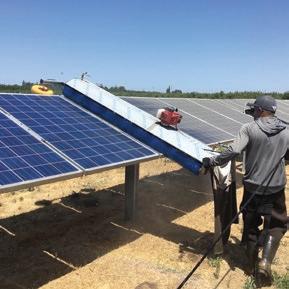
The original KSolara FK2/FK3 series, and the all new California models are designed to clean any groundmount solar system quickly with low water usage, low labor requirements, and low cost. All of these units hang on the top edge of the panels and clean side to side. The original FK2/ FK3 series units have two counter rotating brushes which allows the units to clean twice in one pass and makes the unit float on the panels without any wheels or any directional preference. The all new California model uses a single brush to reduce weight and is modular. The single brush pulls in one direction, so the user holds it from going too fast one direction and pushes it the other direction. The modular design allows it to clean any size system.
Premier Water Cleaning Systems
www.premsc.com
Booth 119
Module frameintegrated wire management
SoftPaw is a module integrated wire management device that makes wire clips and zip ties obsolete. Being part of the solar panel’s frame wall, SoftPaw eliminates maintenance costs and reliability issues typically associated with wire management solutions. The module’s leads come preloaded into SoftPaw at typical use locations eliminating wire management in most cases. SoftPaw is sized to manage all cables within the array including those from the j-box, optimizer, microinverter, and homeruns at a cost equivalent to a few clips.
TECSI Solar
www.softpawpv.com
Booth 3991
RE+ 2022
62 2022 SEPTEMBER• OCTOBER /// www.nacleanenergy.com
22-21721
22-21721_SRCC_Revise_ NACE_Third_Sq_AD_FINAL.indd 2 8/10/2022 1:22:45 PM
Solar inverters



Sungrow Power Supply Co., Ltd. (Sungrow) is an inverter brand which provides research and development of solar inverters and has a broad product portfolio offering PV inverter solutions and energy storage systems for utility-scale, C&I, and residential applications.
Sungrow Power Supply Co., Ltd.


us.sungrowpower.com
Booth 1612
New carport solutions
DCE Carport Systems are designed by architects and engineers with more than 100MW of carport design experience to deliver high value performance and structural needs. The Heavy Gauge Carport features high clearances, wide column spacing, integrated wire management, tapered beams, and high-quality structural materials and coatings. The fully integrated carport solution, the Light Gauge Carport includes concealed electrical components, plug-and-play inverters, and corrosion-resistant steel finishes, resulting in durability, reliability, and safety. The Long Span Canopy brings the flexibility of the garage top solution to ground lots. Each structure covers two parallel parking rows and an internal drive aisle using a single contiguous PV-covered canopy, maximizing energy production.
DCE Solar


www.dcesolar.com






















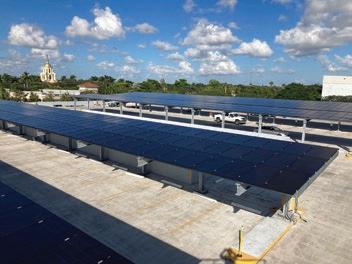
Booth 277
Outdoor-rated home battery storage system


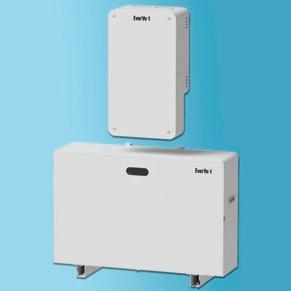
The outdoor-rated EverVolt 2.0 home battery storage system offers a modular design and usable storage capacity of 17.5 - 25.65kWh per system. The weatherproof power cell delivers continuous output of 7.6kW off-grid and 9.6kW on-grid. AC- and DC-coupled models work with new and existing solar systems. Monitor and manage system operation with the EverVolt mobile app. Includes complete EverVolt AllGuard 10-year warranty from Panasonic.
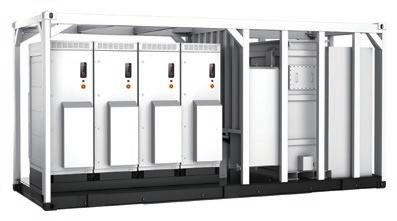
Panasonic Eco Solutions North America





na.panasonic.com/us/evervolt
Booth 1438

North American Clean Energy 63 C M Y CM MY CY CMY K 469 - NACE Mag Ad - V1- with bleed - FA.pdf 1 8/4/22 10:34 AM
Efficient solar pile installation
Solar Pile International introduces the Solar X-Blade Pile (SXBP). The SXBP installs at shallow depths, suitable for frost heave and reactive zones. It penetrates hard soils and cobble to eliminate pre-drilling.
Solar Pile International solarpileint.com
Booth 144
MORE POWER.

Precise measurement products
DEWESoft has developed dataacquisition solutions to perform measurements both accurately and efficiently. DEWESoft has an array of products as well as specifically developed software that cater to all power measurement requirements such as the power quality, direct and diffuse solar radiation data, as well as converter and overall efficiency to name a few. All their equipment and testing criteria follows international standards such as the IEC-61000-430 Class A.
DEWESoft
www.dewesoft.com


Booth 4383
HPS has developed a reputation as one of the most capable manufacturers of standard and custom dry-type magnetics in the world. With multiple manufacturing facilities located throughout North America and Asia, HPS offers a broad range of products for many solar applications.

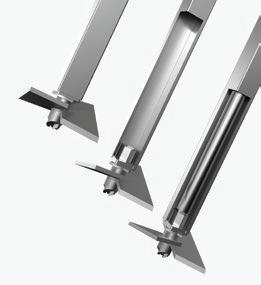
Our extensive and durable line of VPI and Cast Resin transformers and reactors provide you with a complete magnetic solution for all your solar energy needs. Visit

Utility-scale power solution
Designed for large ground-mount installations, the SolarEdge utilityscale solution is comprised of the 330kW inverter and H1300 Power Optimizer, suited for both virtual central and distributed deployment topologies, providing reduction of Levelized Cost of Energy. This is achieved due to high energy production with module-level MPPT, 200% DC oversizing, and built-in PID rectifier. Additionally, design flexibility lowers Balance of System costs by enabling fewer strings than traditional string inverter solutions. The solution includes comprehensive safety features, touch-safe DC voltage and advanced arc-fault protection improving personnel and property safety, while maximizing system uptime, safety and reducing operations and maintenance costs with their module-level Monitoring Platform.

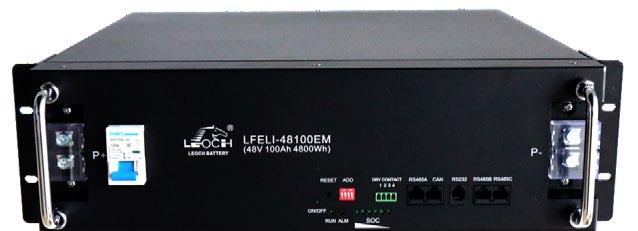



SolarEdge Technologies

www.solaredge.com
Booth 2416
RE+ 2022
64 2022 SEPTEMBER• OCTOBER /// www.nacleanenergy.com
LEOCH® 48V LIFEPO4 BATTERIES Size Your Next Energy Storage Application with LEOCH LFELI Series: www.LeochBatterySizer.com LEOCH® BATTERY CORPORATION 20322 Valencia Circle, Lake Forest, CA 92630 1.949.588.5853 www.leoch.us Reliable Power Solutions +
HPS at booth 4038
Managed wireless solutions
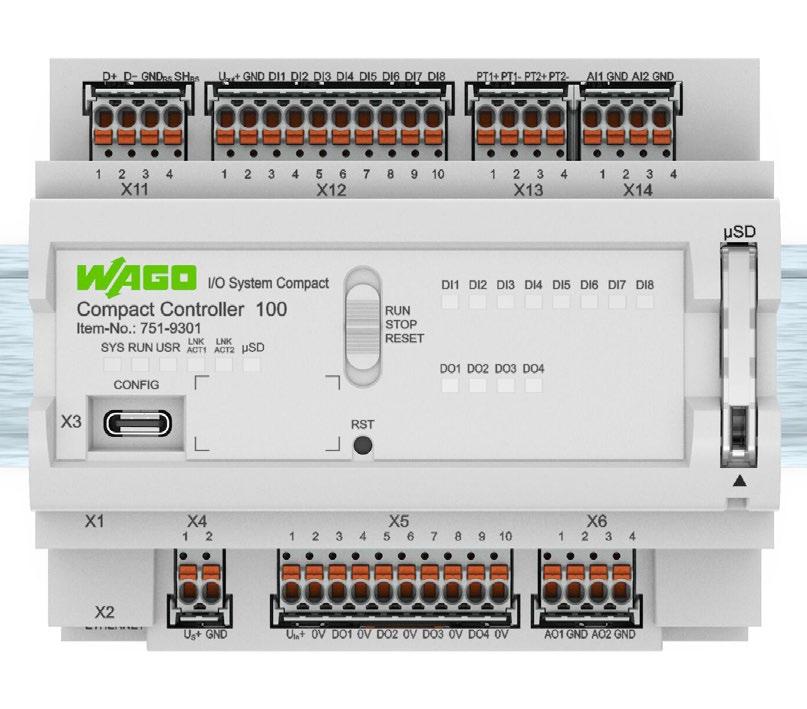
OptConnect’s fully-managed connectivity service solution provides everything their customers need to streamline deployments, reduce downtime, and save time and money. Their cloud-based connectivity services are available 24x7x365.
OptConnect
www.optconect.com
Affordable alternative to lockable metal cabinets
Fibox expands the ARCA - IEC series with three new sizes: ARCA No-MP303021, (12"x12"x8") ARCA No-MP404021 (16"x16"x8"), and the ARCA No-MP505021 (20"x20"x8"). These new sizes offer the same features as the ARCA - IEC product family, including high impact resistance (IK 10) and an IP 66 ingress protection rating is UL listed and rated NEMA 4X. Radio transparent polycarbonate eliminates the need for an external antenna. ARCA



-IEC also features UV stabilized polycarbonate so it won't delaminate or rust in the field, delivering a long, dependable field life.
Fibox Enclosures
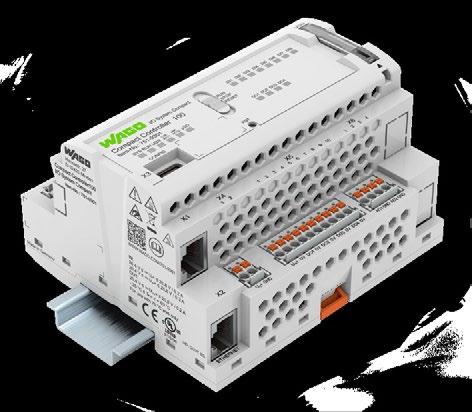


www.fiboxusa.com/arcasquared
Booth 4374
Integrated solar business management software



SolarSuccess by Blu Banyan is a cloud-based business management software designed to meet the specific operational needs of residential, commercial, and utilityscale solar installers and developers.
SolarSuccess integrated solar business management software provides complete oversight on cash flow, sales, costs, profitability, project status, inventory, updates and alerts, and other functions key to a solar installer’s success.

Blu Banyan
www.blubanyan.com

Booth 183
• Powerful controller
• Built in digital and analog I/O
• Dual Ethernet ports
www.wago.us/
Programmedwith


North American Clean Energy 65
100
NEW COMPACT CONTROLLER
Max performance in minimum space
discover-PLCs
• Ideal for small machine control and IIOT applications CODESYS 3.5
The New Standard in Large Scale Project Design
Single SKU residential solar array


Solvari SR is an all-in-one solar panel for installation on asphalt shingle roofs that ships ready-to-install. The module is pre-engineered and includes onboard all the mounts, hardware, flashing, power electronics, and wire management needed to install the panel and complete the array. No additional components are required no matter the array’s size or complexity. Just screw them down and electrically connect them. Solvari SR is quick to install, allowing companies to install more MW with the same resources. In addition, due to the simplicity of the install, solar training is no longer a requirement expanding the available labor pool. Solvari SR also reduces back office resources and operational requirements by practically eliminating inventory management, inventory loss, system design, BOM generation, installation tools, and warehouse space. It even simplifies the sales process, increasing sales conversions and lowering customer acquisition costs.


Solvari Solar
www.solvarisolar.com

Booth 3991
Engineered components
Component Solutions Group specializes in manufacturing, supplying, and distributing specifically engineered products designed for original equipment manufacturers. Core capabilities include design assist engineering, precision machining, fastening systems and tooling, routing management, light assembly, sorting and containment, and global sourcing. CSG is an authorized distributor for HellermannTyton, Bollhoff, Southco, Sherex, and BUMAX. CSG facilities and operations are ISO 9001:2015 and AS9120 B certified.

Component Solutions Group


www.componentsolutionsgroup.com
Booth 4053
Terrain agnostic tracking solutions
With their core product, the All Terrain Tracker (ATT), Nevados can adapt to all natural terrain environments, whether flat, sloped, or rolling, without the need for grading. Their proprietary controls solutions allow for individual row, and even string, level optimization, generating efficiencies in overall system cost and energy production. Their TRACE software solutions make it possible for developers to accurately model production on non-flat terrain.
Nevados Engineering, Inc.
www.nevados.solar
Booth 4056
Modern solar hot water system
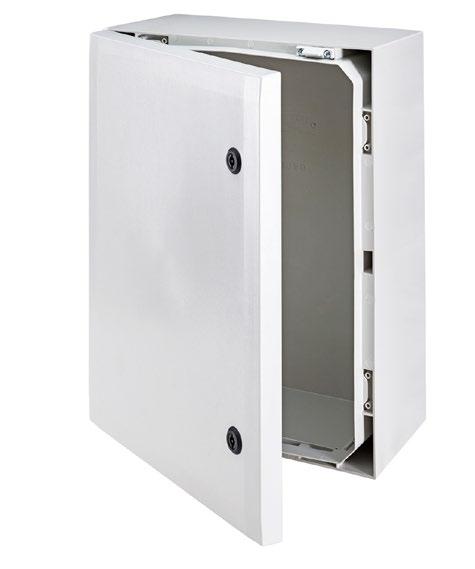
The SunHopper-D from GreenPWR is modernizing solar hot water systems. Coming later this year, the SunHopper inverter includes a learning algorithm which monitors usage, weather conditions, electricity rates, and installation parameters to minimize energy cost to the homeowner while providing a reliable hot water source using backup electricity or fossil fuels. The SunHopper uses a dedicated PV array and wires to off-the-shelf electric immersion storage water heaters to make installation simple and reduces energy consumption by as much at 80%. The SunHopper also supports off-grid installations to provide a simple renewable water heating system.
GreenPWR
www.greenpwr.com
Booth 2966

RE+ 2022
66 2022 SEPTEMBER• OCTOBER /// www.nacleanenergy.com NEMA 4X Rust Free UV Resistant Wi-Fi Friendly High Impact Resistance JIC Sizes up to 24”x24”x10” IEC Sizes up to 32”x24”x12” Lockable, Watertight Design Non-Conductive Electrically Insulated
410.760.9696 Fiboxusa.com Upgrade your next NEMA 4X design with a lightweight, robust polycarbonate enclosure for less than stainless steel.
Residential BESS
Pylon Technologies’ Pelio 5.12kWh provides high energy density in about 0.1sqm footprint for 20kWh of BESS installation. The high efficiency 4kw continuous/6.1KW@15min/1
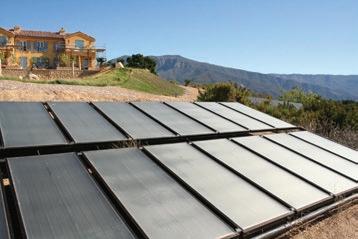
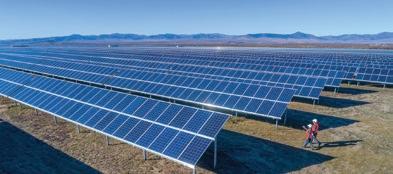
0.2KW@15sec is available for unit module. Benefit from the modular design concept, it is expandable up to 20pcs (5.12Kwh per module, scalable up to 104kWh) of installation capacity per system. Pelio can be flexible and installed by wall-mount or floor-mount concept in either indoor or outdoor environment. Users can monitor 24/7 with their Intelligent Monitoring Platform. Certified to UL9540A, UL1973, IEC62619, and IEC63056/CE with the purpose of top safety.

Pylon Technologies
www.pylontech.com/cn

Booth 3120
North American ratings and certification
The Solar Rating & Certification Corporation (ICC-SRCC), a program of ICC Evaluation Service (ICC-ES), is a certifier and standards developer for solar heating and cooling products in North America. Their certifications and listings are designed to help manufacturers comply with regulatory requirements in the U.S., Canada, Mexico, and Caribbean Region. Their performance ratings provide independent measure of the performance of products used by incentive programs and consumers. They certify solar thermal collectors, solar water heaters, solar pool heaters, and solar air heaters, and offer listings for major codes and standards applying to solar heating and cooling products in North America.
ICC Evaluation Service (ICC-ES)
www.icc-es.org
Booth 3366
Power delivery services
Electrical Consultants Inc. (ECI) is a power delivery engineering firm which brings power delivery services through 500kV to their clients. ECI provides services including overhead and underground transmission engineering, substation and switchyard design, industrial power systems design, land survey and construction staking, right-of-way services, environmental planning, project management, construction management, and procurement services to utilities.
Electrical Consultants, Inc. (ECI)
www.eciusa.com
Booth 2854
North American Clean Energy 67
single-axis tracker
SFONE is the new 1P single-axis tracker by Soltec. This tracker combines mechanical simplicity with Soltec’s over 17 years’ experience. Specially designed for larger 72 and 78 cell modules, this tracker is self-powered thanks to its dedicated module, which results into a low cost-operational power supply.

Soltec www.soltec.com/sfone
Booth 1638
Stainless steel clips, made in the USA

In addition to their proprietary line of stainless steel, module level wire management clips, Nine Fasteners also provides a variety of balance of system components, ranging from wire to connectors, jumpers, etc. All clips produced by Nine Fasteners are UL Listed to scope 1565 in both the U.S. and Canada. On top of the UL Listing, all clips are produced in the United States with U.S. milled steel and a rolled outer edge for maximum wire safety. With a variety of standard, 90° and 180° clips, Nine Fasteners offer a solution to any application.
Nine Fasteners

www.ninefasteners.com




Booth 2865
Flexible, powerful inverter




The new Solis US 75-100 kW PLUS PV string inverters continue the Solis tradition of multiple, independent MPPTs with very wide operating ranges. The new Solis US 75-100K inverter family, certified to UL 1741 SB in 2022, will be familiar to Solis US installers but will include new features and solutions that will add profit to the bottom line by reducing material costs and time on site. New features include: 8/9/10 dynamic, independent MPPTs optimize PV string production; high current input at each MPPT accepts full MPPT current (32 Impp, 50 Isc), Y-connector compatible; P66 enclosures with redundant fan/conductive cooling adapts to the environment; and intelligent PV string monitoring provides remote, precise fault location and fault identification. www.solisinverters.com



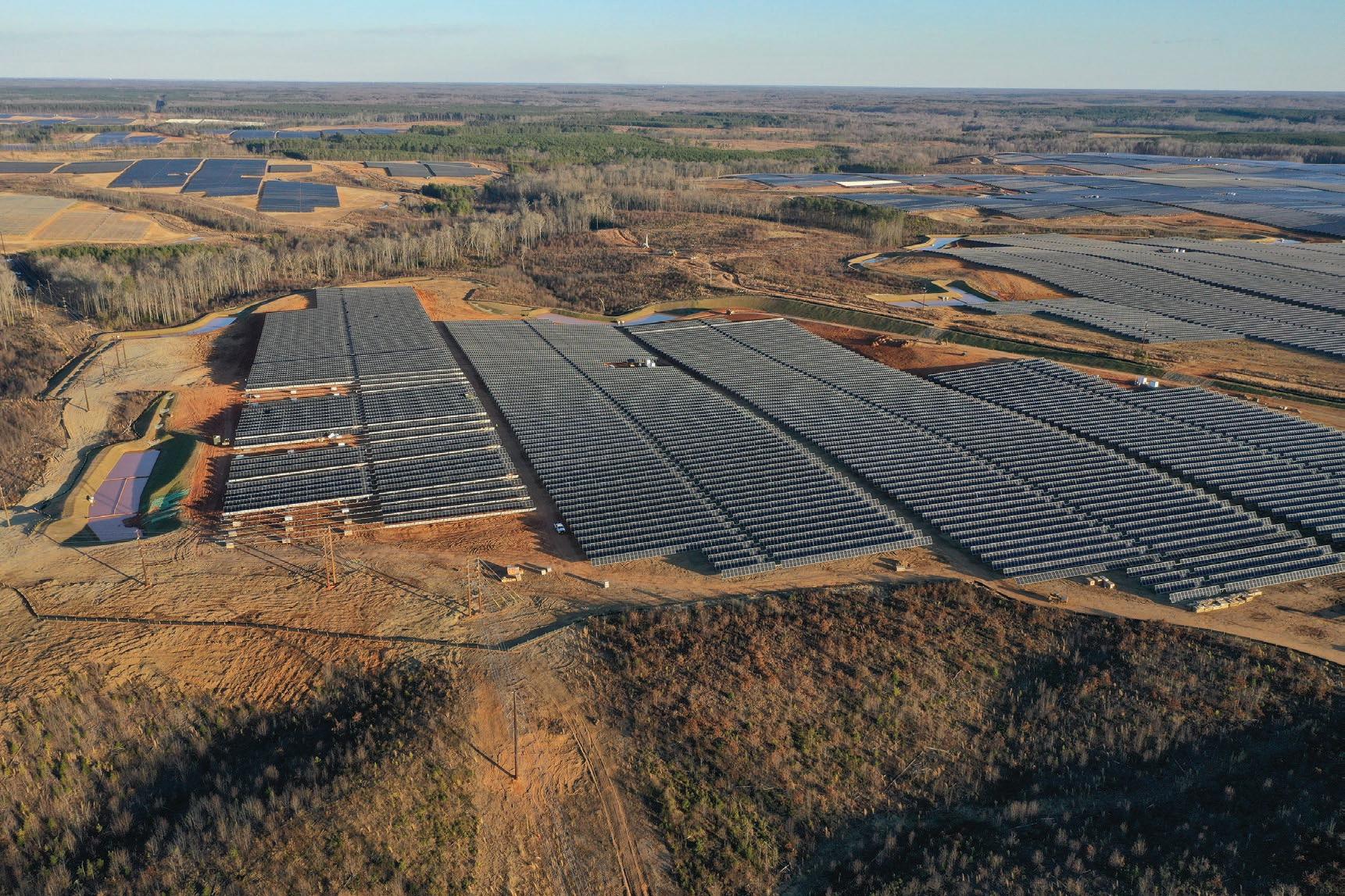

Booth 2650
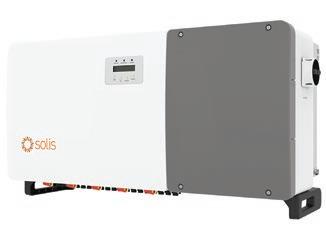
RE+ 2022
1P
Heavy Civil Contractors Delivering Renewable Energy Across The Southeast brent.us (770) 461-8603 YOUR PARTNER IN SOLAR & FENCE TUBING ljtube.com 1-800-257-6859 Booth #1277 Solutions to meet your solar tubing framework needs,
with fence tubing to protect your perimeter. WATTNODE ® METER 1-888-WattNode (928-8663) • ctlsys.com Energy Meters & Current Transformers Colorado, USA Revenue-Grade Energy Meter for Class 0.5 PV production & consumption Revenue-Grade, economical, customizable for OEM applications NEW C0.2 accuracy Split-core revenuegrade current transformers NEW DESIGN! Rogowski coil installations Solid-core revenuegrade current transformers for inverter installations Visit us at SPI • Anaheim, CA• Booths 1960, 3428
along
Complete transparency of solar + storage assets
Trusted monitoring software providing real-time insights into the operational performance and savings of solar + storage systems. ETB Monitor enables participation in demand response programs, manually dispatching of the system, and full control of the energy storage asset. Directly connected to the modeling and control software.

Energy Toolbase
www.energytoolbase.com
Booth 2682
Large capacity, high output battery


Mango Power Union is a largecapacity (6.9kWh), high power output battery (4000Wac and 350Wdc) modular power station with a heavyduty home base and a smaller, detachable unit at the top. With its 19 ports, it can safely be removed anytime through patented mLink technology and taken on road trips. Up to 10 of them can be stacked together into a micro-grid, providing up to 69kWh. Its in-built PV inverter makes it easy to charge by solar panels, power grid, or others. Mango charges to 80% in just 1.5 hours and 100% in 2.5 hours.
Mango Power
www.mangopower.com
Booth 2977
Made in the USA cable management products
Snake Tray is a manufacturer of innovative cable management for solar installations. Solar Snake Max XL is a utility-grade cable management system that manages cables from 350 to 1250Kcmil in a safe, trenchless system which installs as fast as 22,000ft in a day. Solar Snake

Max XL manages cables with easy snap together clips that maintain code compliant air separation so no need to derate cables which allows cables to harvest up to 8% more energy. Solar Snake Max XL versatile design installs on any terrain. Solar Snake Tray 407 Series hand bendable cable tray is a solution for rooftops and car parks offering labor-saving features to secure and protect cables from all types of weather and environments. All Snake Tray products are made in the USA and are supported 24/7 by a team of sales engineers.
Snake Tray
www.snaketray.com
Booth 2782
North American Clean Energy 69
All-in-one energy storage system



The FlexTower is the new all-in-one energy storage solution from Fortress Power. Built on the foundation of the DuraRack battery cabinet, the FlexTower combines the battery, charge controller, and inverter into a single unit. The FlexTower is easy to install and carries IP65/NEMA3R ratings for indoor or outdoor installations. Add on optional dinrail heater for maximum efficiency even in colder climates.
Fortress Power
www.fortresspower.com


Booth 3614
NFI-Hanger

Maintenance-free LFP battery
Rolls new R-Series 12V and 24V LFP (LiFePO4) lithium models offer a maintenance-free, lightweight alternative to flooded and sealedlead acid (AGM) batteries in standard BCI case sizing. Designed for true drop-in replacement, Rolls R-Series LFP offer exceptional cycle life (>6000 cycles @ 80% DOD, >3000 cycles @ 100% DOD), fast charge/discharge capability, feature a built-in customized BMS with operating protections, and allow up to 4x series and 4x parallel connectivity for 48V system configuration. Rolls R-Series LFP models are backed by a 3-year full replacement manufacturer warranty.

Rolls Battery Engineering
www.rollsbattery.com
Booth 3230
Customized EBOS services


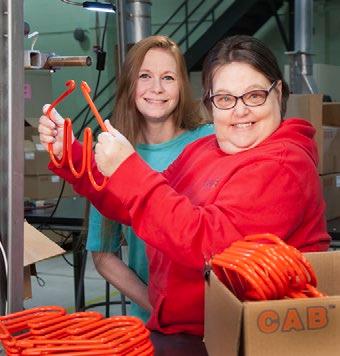
Voltage, LLC is a utility scale EBOS solutions provider based in Chapel Hill, NC. Voltage is a combination of professional discipline, innovative focus, and agility that is responsive to the needs and recommendations of its customers. The team at Voltage is engaged from pre-construction, customized engineering, and manufacturing through to the delivery and installation of every project supplying over 12GW of products nationwide. Voltage utilizes 3D rendering/modeling programs in a variety of applications.
Voltage, LLC


www.voltage-llc.com

Booth 2820

RE+ 2022
70 2022 SEPTEMBER• OCTOBER /// www.nacleanenergy.com 233A South Street | Hopkinton, MA 01748 | 800.539.3939 www.ninefasteners.com
For FREE product samples, please reach out to Vin Marino vin@ninefasteners.com or 800.539.3939 GROUND MOUNT WIRE MANAGEMENT
Most cost-effective ground mount wire management option on the market
Holds 25+ PV wires in a single Hanger (tested using #8 PV wire, 7.95mm dia.)
Opening/Closing function means NO NEED TO EVER REPLACE
Round material = no sharp edges ever coming in contact with cables NEW www.cabproducts.com (814) 472-5077 Visit us at Booth #1371 Cambria County Association for the Blind and Handicapped Proudly Manufactured by Persons with Disabilities with Integrated Grounding System Cambria County Association for the Blind and Handicapped Patented Solar Cable Management Patent Protected
•
•
•
•
Wide variety of mounting solutions
Come see the wide array of solutions for pitched roof; comp, tile, metal, flat roof; attached and ballast, and ground mount applications. New products this year include JayBox solar junction box and Contour array trim kit. Also featured is an end-to-end solar project management solution set from proposal to permit pack, and a free-to-installers
Certification Program designed to train and deploy the solar heroes of tomorrow.
IronRidge

www.ironridge.com
Booth 3014
Recyclable batteries made with 100% renewable energy
Every battery made by Crown Battery is over 99% recyclable, and with the company’s closedloop production process, 80% of materials used in its new batteries was previously recycled. Crown Battery provides a comprehensive line of renewable energy storage solutions for consumer, commercial, and government use. Their batteries include C-Force Active Mass, heavy-duty plates and precision engineering for performance and longevity; cast-on strap and terminal post structures manufactured in an automated process to deliver electrical efficiency and durability; lowmaintenance reliability ensures less frequent and low preventative maintenance costs; fixed handles or lifting lugs on batteries also enables flexible installation with or without battery racks

Crown Battery
www.crownbattery.com

Booth 3204
Meet your new smart assistant: Aurora AI

Turnkey engineering, fabrication, and construction

From concept to as-built, TorcSill’s turnkey engineering, fabrication, and construction approach is suited for the challenges faced by the renewables industry. In addition to the value-added through its vertical integration, TorcSill’s modular helical pile foundations offer its customers countless advantages throughout the project development and execution processes, such as no spoils or vibrations, a sustainable footprint, and schedule compression.
TorcSill
www.torcsill.com
Booth 2984
It can’t shake your hand,
it can shake up your solar business. Find out how Aurora AI can estimate your customer’s consumption, create a solar design in 30 seconds, and help you close on the spot. See Aurora AI in action
but
Renewable energy transformers
HPS offers HPS Sentinel Solar Duty transformers for the renewable energy industry. These transformers are available for applications where voltage adjustments are necessary between solar generation system and the utility service. HPS Sentinel solar duty transformers are intended for bi-directional use in utility-interactive generation systems where power may flow to or from the grid.
Hammond Power Solutions (HPS)

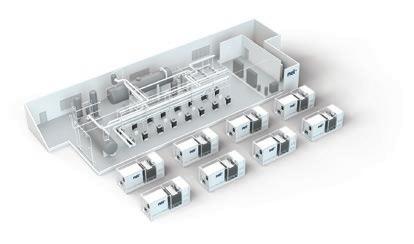
www.hammondpowersolutions.com
Booth 4038
High-performance, dual-unit microinverter
The MAC-800 is a high-performance, dual-unit microinverter. Designed for optimal pairing with Aptos solar panels, the MAC-800 is compatible with 120 and 144 cell PV panels and upgraded for streamlined integration. The MAC-800 is equipped and ready for system monitoring and trend tracking through Aptos Solar Technology’s cloud based software.
Aptos Solar Technology

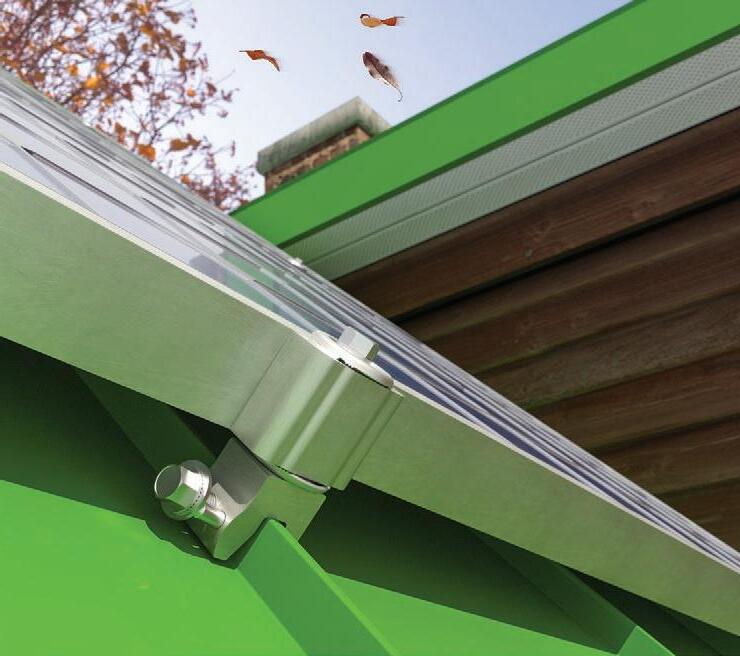

www.aptossolar.com
Booth 3356
Green hydrogen
Nel Hydrogen manufacturers Alkaline and Proton Exchange Membrane (PEM) water electrolysers, which when connected to a source of renewable energy, produce from 0.27 Nm3 to 19,400 Nm3 of Green Hydrogen per hour. Units can be grouped together into electrolyser plants for even larger production rates. Electrolysers are used to store excess energy (electricity) from renewable resources in the H2 bond. The hydrogen can then be sold to industry (converting curtailed power to cash), or burned in a turbine or run through a fuel cell to put the stored energy onto the grid during periods of low generation or peak demand. Due to their fast response times the PEM electrolysers are also used by renewable energy plants to balance the power put onto the grid.
Nel Hydrogen
www.nelhydrogen.com
Booth 3834
Whole-home solar backup


The Sol-Ark 15K is a solution for solar whole-home backup. A single 15K unit outputs 15kW of AC power (30kW peak) to help homeowners and business owners eliminate any overloads. A 200A UPS transfer switch allows this inverter to integrate easily with the main service panel. If more power is needed, users can run twelve (12) of these inverters in parallel, providing an AC output of 180kW. Sol-Ark hybrid inverters can use any 48V battery chemistry and are also generator (240V) agnostic. With three MPPTs at 26A (500V) each, users can run up to 19.5kW and six strings of solar with a 15K unit. The installation location is flexible as the housing is NEMA 3R outdoor-rated.

Sol-Ark
www.sol-ark.com

Booth

RE+ 2022
3638 72 www.nacleanenergy.com 888.825.3432 | www.S-5.com Solar Mounting for Metal Roofing Go Rail-less & Save Up to 30-50% in Installation Time RibBracket™ I-V w/ PVKIT® UptoCAT5Strength RACKING TWO GREAT WAYS TO INSTALL SOLAR ON SSMR NEITHER USE SET SCREWS Cost-Saving RACKLESS 860-773-4150 AceClamp.com SOLAR PV KIT Series
Full-service EPC and BOS contractor
American Helios Constructors, LLC (AHC) is a full-service EPC and BOS contractor serving the utility scale solar market. Their corporate offices are in Baltimore, MD with staff throughout the US to support their project needs. They provide construction services and are primarily focused on supporting project developers and DOD/ Federal renewable projects. Together with their sister company, Tennessee Valley Infrastructure Group, Inc., which provides wind construction services, they have completed over 30 projects and 1GW of installed capacity of various sized wind and solar projects.
American Helios Constructors, LLC (AHC)
www.americanhelios.com
Booth 3927

Innovative racking solutions
Polar Racking is introducing a new product line to its mounting solutions, the Sol-X Single AxisTracker. It has a simple design with fewer components that makes installation easy and efficient. With a terrain following of up to +/- 10% and adaptable table lengths, the Sol-X delivers high performance in steep and challenging terrain. Polar Racking has extensive experience in its two additional product lines, the PRU fixed-tilt ground mount solar racking and PRP solar carport. All products are supported by engineering services specializing in cold weather and challenging terrain, and installation services.
Polar Racking
www.polarracking.com
Booth 3380
Grid-tied and off-grid LFP solutions
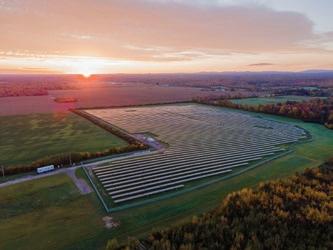

Dyness is a battery manufacture headquartered in China. They specialize in grid-tied and off-grid LFP battery solutions for residential applications. Their battery products are produced in accordance with international standards, and have obtained CEC, CE, IEC, EMC, ROHS, and other certificates.
Dyness Renewable Energy Group Co., Ltd
www.dyness-tech.com
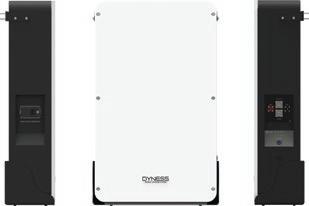
Booth 2926
LIGHTWEIGHT BATTERIES HEAVYWEIGHT POWER & PERFORMANCE



North American Clean Energy 73 ROLLSBATTERY.COM HIGH PERFORMANCE LITHIUM
PHOSPHATE
BATTERIES
IRON
(LIFEPO4)
Rolls NEW R-Series 12V & 24V LFP models provide a lightweight drop-in SLA replacement with fast charging/discharging capability, compact case design, exceptional cycle life, and 48V connectivity.
Residential energy storage units
e-On Genesis UL1973 listed 9.8kWh residential energy storage units combine e-On Batteries’ software platform and a safe UL9540A cell compound to deliver maximum thermal protection, maintain long cycle life, limit self-discharging loss, and provide needed certifications to simplify the installation and permitting process. Their proprietary internal BMS algorithms monitor operational status and relay real time alarms, maintaining operation within established safety and performance parameters, while seamlessly integrating with a wide range of inverters. Up to eight units can be parallel-connected for up to 78.4kWh.
e-On Batteries
www.e-onbatteries.com
Booth 3668
Deep insights into renewables
Rystad Energy is an independent energy research and business intelligence company providing data, tools, analytics, and consultancy services to global clients exposed to the energy industry. Their renewables solutions offer granular data tools for solar, wind, hydrogen, and energy storage such as utility-scale projects, cost dynamics, production assets, GIS, capacity while deep diving into the supply chain (e.g. ancillary) of the renewable sector.
Rystad Energy
www.rystadenergy.com
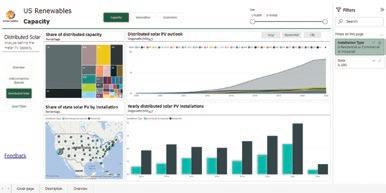
Booth 4133
One-source energy solutions partner


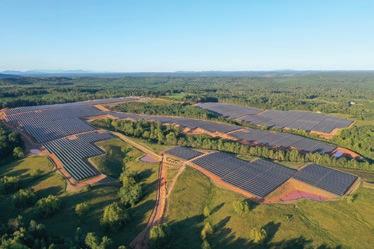
With more than 4GW of utility-solar experience, DEPCOM integrates development support, EPC, O&M, energy storage, and repowering services to maximize performance and returns. Developers and asset owners benefit from end-to-end support that includes proprietary engineering and system optimization maximize revenue opportunities and deliver a low total cost of ownership; established supply partnerships with top manufacturers offer optimal component pricing and availability; 24/7 operational crews are quick to deploy with legacy experience building and operating solar since 2014; NERC/FERCcompliant network operations center and 99.4% average fleet availability ensure systems run at peak performance. As part of the Koch Engineered Solutions family, DEPCOM brings value, bankability and project success. With DEPCOM, customers get the peace of mind that comes from working with an integrated partner, backed by a large, privately held company.
DEPCOM
www.depcompower.com
Booth 3150
All-in-one storage system
The battery pack is compact, easy to install, and could be deployed to the building block of the energy storage system by being assembled in parallel. It can be applied in home applications, small C&I energy storage systems, as well as telecom stations. The all-in-one system with Sol-Ark inverter is UL9540 recognized and fits into 1-6 batteries for flexible options.




Pytes Energy (USA), Inc.

www.dig-battery.com
Booth 4346
RE+ 2022
74 2022 SEPTEMBER• OCTOBER /// www.nacleanenergy.com EXPERIENCE THE MOST INNOVATIVE SOLAR MOUNTING PRODUCTS EVER MADE DOUBLE STUD XL + ELECTRICAL PASSTHROUGH 100% U.S. MADE 720.880.6700 ZILLARAC.COM SPI BOOTH 488 pxise.com PXiSE is a vision for how to make the electrical grid work DERMS Microgrid Controller Renewable Power Plant Controller
Products designed for wind and solar applications
SPI has variety of products designed for wind and solar applications such as their Petro-Plug, PetroPipes, the Pump Thru Barrier (Oil Water Separators), Sealed XR-5 Containment Liners and more. One of their newest innovations is the SPI Oil Containment Shield which is an oil containment application for small to mid-sized transformers with a capacity of under 750 gallons. Each SPI product has been designed to allow rainwater to drain while completely filtering out all hydrocarbons, vegetable oils, natural ester oils that are soy based, and fuel sheen to non-detectable levels. In the event of a major spill, SPI-Oil Containment Systems will totally shut down and prevent all flow from discharging. It will then back the spill into the containment area preventing an environmental release. SPI products are currently being used at wind and solar farm operations around the world.
Solidification Products International, Inc. (SPI)


www.oilbarriers.com

Booth 380
High power, energy dense batteries
LEOCH 48V LFELI Series, Lithium Iron Phosphate (LIFEPO4) batteries offer exceptional cycling performance of 10,000 cycles @ 50% DOD, 3500 cycles @ 100% DOD, and can be put into parallel for 48VDC, 1600AH capacity. These batteries are equipped with a built-in Battery Management System (BMS) and optional LCD screen for hassle-free maintenance.

LEOCH Battery Corporation
www.leoch.us
Booth 3352
Grid-connected energy storage solutions
LS Energy Solutions, an LS Group company, is a provider of grid-connected energy storage solutions. LS Energy Solutions has over 15 years of experience in energy storage and related technologies. LS Energy Solutions’ AiON-ESS is a flexible, modular AC energy storage solution for 1-hour to 6-hour applications. They also offer the BRiC bidirectional string inverter.

LS Energy Solutions
www.ls-ess.com
Booth 3820
OPTIMIZE PV PERFORMANCE & EFFICIENCY
Weather Monitoring Solutions for Solar Installations


The
Why Choose a PVMet Weather Station?
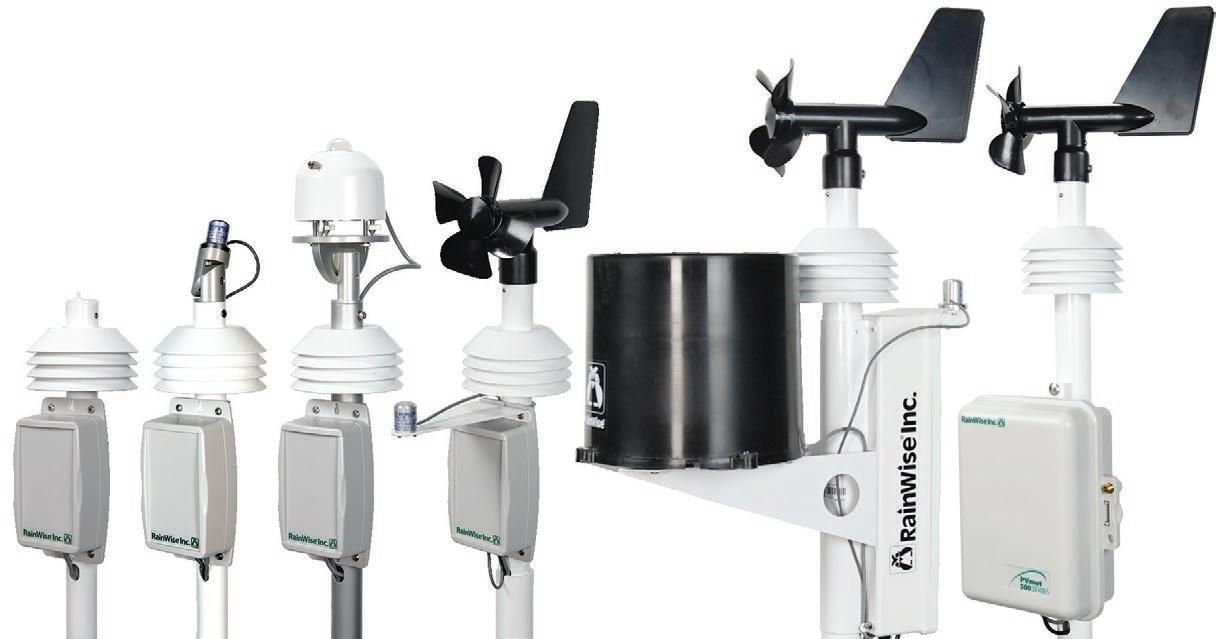
www.PVMet.com 2 TWO-YEAR L I MITEDWARRANT Y
PVMet™ line of weather stations offers the widest range of customizable options for solar power system monitoring. Multiple configurations and customization of irradiance, temperature, wind, rain and humidity sensors ensures you can meet your project’s needs and budget.
Personalized experience based on your project requirements Customizable solutions with a wide range of sensor options Pre-Configured stations for quick & easy installation System integration via MODBUS RTU and TCP SunSpec certified or compliant Meets IEC 61724-1 Standard for PV System Performance Monitoring PVMet 75 PVMet 100 PVMet 150 PVMet 200 PVMet 330 PVMet 500 Transform weather uncertainty into operational confidence with the accuracy and reliability of PVMet. Request a Quote Today! Eric Rollins erollins@rainwise.com
Reconditioned and new transformers
Maddox produces and stocks high quality fully reconditioned and new transformers. They stock popular voltages and units commonly used in renewable applications including wye-wye dry type units for rooftop inverters, grounding transformers, and solar duty padmounts with electrostatic shields for large solar fields. Maddox has what renewables companies need to get their solar and wind projects done on time.
Maddox Transformer


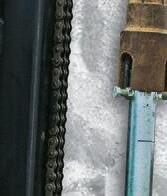






www.maddoxtransformer.com






Booth 3250
Modular battery design
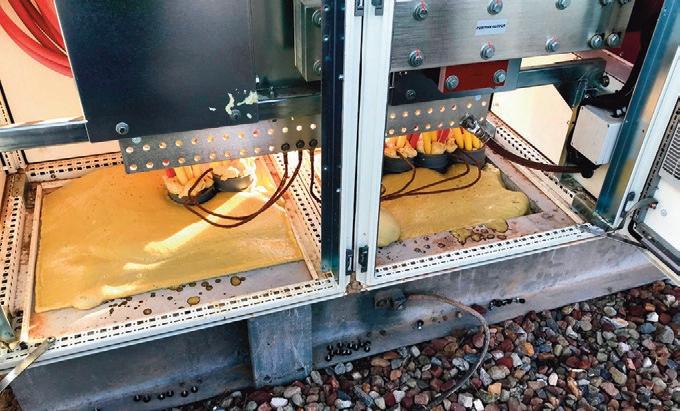
MK Battery introduces the DEKA Duration DD5300, a 48V, 5300Wh battery module utilizing Lithium Iron Phosphate Technology. Tested and validated, and branded with the DEKA name from East Penn Manufacturing Co., this modular design allows for either wall mount or floor mount installation and is stackable up to eight modules high. Stocked in the U.S., the DD5300 is a universal module that has a programmable BMS, dual usage, for low voltage and high voltage applications. Low voltage (48V, 5.3kWh, 212kWh). High voltage (150 to 1000V, 21.2kWh to 763kWh). Remote monitoring and firmware updates are just one click away on any smart phone, utilizing a proprietary app.


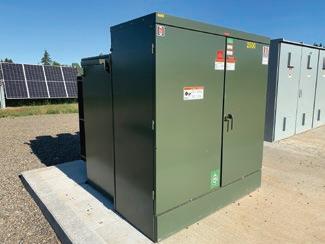
MK Battery
www.mkbattery.com


Booth 3348
Reliable O&M partner




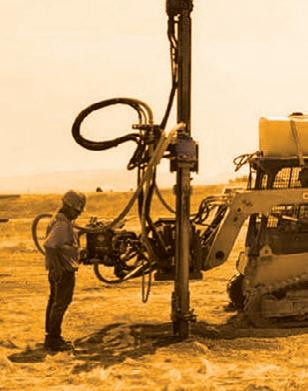

Borrego O&M is a national thirdparty service provider in the distributed generation market, and now entering utility-scale. With over 1.6GW under management, they provide comprehensive solar O&M services that maximize their customers' asset performance and value. Borrego works with customers to meet long-term goals and ensure strong returns. They utilize robust customer-focused technology and leverage their deep bench of engineering and technical specialists. Borrego offers a broad range of renewable energy services for large solar and energy storage projects throughout the U.S.
Borrego O&M

www.borregoenergy.com







Booth 2360

RE+ 2022
76 2022 SEPTEMBER• OCTOBER /// www.nacleanenergy.com Polywater ® InstaGrout™ Enclosure Pad Sealant • Keeps out rodents, snakes, insects and water • Easier to use and safer than concrete grout • No water needed 651-430-2270 www.polywater.com wordrockdrills.com | 1.336.584.6700 GROUND SCReWS? HeliCAL ANCHORS? RefUSAL HOleS? Rock Drilling Attachments Get the Job Done.
Underground cable reliability
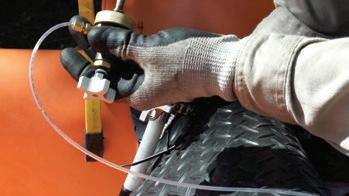
Southwire’s innovative underground cable rejuvenation technology can help provide new life to aging cables at a fraction of the cost of a full cable replacement program. Southwire provides a suite of products, services, and solutions uniquely designed to overcome challenges in a safe and effective manner.
Southwire www.novinium.com
Booth 3467
Advanced lithium batteries and ESS
Discover Battery offers AES and HELIOS advanced lithium batteries for solar+storage applications and now introduces the ELEMENT Energy Storage System. ELEMENT

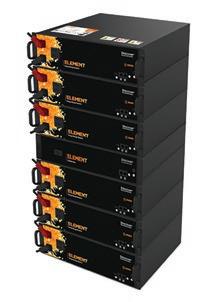
ESS features 100Ah / 5.12kWh 48V nominal 19'' (3U) rack mount battery modules with or without heating. It features capacity to start loads and energize transformer-based inverters with 3C peak power and 1C continuous discharge; ultra-fast 1C dynamic charging with voltage compensation; operation from 77°F (55°C) down to -4°F (-20°C); and LiFePO4 Safety certified to UL1973 and IEC62619. ELEMENT systems are easy to specify, quick to install, and simple to certify. They feature pre-assembled indoor and outdoor enclosures, battery combiner modules, economical Quick Stack racking options; advanced closedloop communication integration with all major brands of power electronics using the all-new LYNK II Gateway; straightforward commissioning, monitoring, and diagnostics with LYNK ACCESS software; and UL9540 BESS and UL9540A certifications for rapid permitting with all major brands of power electronics.
Discover Battery
www.solv4ex.com

Booth 3180
Vertically integrated energy storage system
SimpliPhi Power’s portfolio of energy storage solution includes their new SimpliPHI ESS 6kW Hybrid Inverter, SimpliPHI 4.9kWh battery, and EnergyTrak mobile app, which optimizes monitoring and control for residential and commercial systems.

SimpliPhi Power, a Briggs & Stratton company www.simpliphipower.com
Booth 3680
A COMPLETE PORTFOLIO OF


COMPREHENSIVE ENGINEERING, PROCUREMENT, CONSTRUCTION MANAGEMENT & TESTING SERVICES FOR PROJECT DEVELOPMENT
For More Information: info@eciusa.com
www.eciusa.com
North American Clean Energy 77
VISIT OUR BOOTH #2854 AT THE 2022 SOLAR POWER INTERNATIONAL TRADE SHOW
Customizable multi-point monitoring solution



The PVMet 500 delivers a customizable, multi-point monitoring solution that provides reliable energy management on any solar project. Choose up to three Irradiance Sensors and three Back-of-Panel Temperature Sensors along with three standard sensor options and an optional Ultra Sonic Anemometer, Mini Aervane, or Rain Gauge. Simple to install on any solar project, the PVMet 500 connects to Modbus RTU Communication with an ethernet TCP option available. Ships fully assembled and factory calibrated.
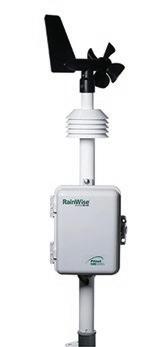

Rainwise
www.rainwise.com

Booth 2251
lemoineland.com

241 Hwy. 43, Independence, LA 70443
Brian R. Lemoine, CPL (President)
O: 985.748.5544 M: 504.430.0073
Sola-Tecs
•Uses
•Cleans

KSolara FK2/FK3
Collaborate across solar Raptor Maps offers advanced analytics, insights, and productivity software for the entire solar lifecycle. The Raptor Solar software platform features a digital twin of solar sites, aerial thermal inspections, data standardization and normalization, serial number mapping, warranty claim features, equipment records, mobile tools, and more, all powered by their data model. With intelligence for the entire solar industry, asset owners, managers, O&M, engineers, EPCs, financiers, and OEMs, users can standardize and compare data across installations, increase performance, reduce risk, and ultimately lift ROI.
Raptor Maps
www.raptormaps.com
Booth 2380
Battery energy storage cabinet

The NEMA3R cabinet BESS with built-in HVAC/transformer/aux power is compatible with most lithium-ion battery systems based on 90-280Ah battery cell. With the newly released PWS2-30P bidirectional storage inverter, optional 3MPPT DCDC PV charger, and optional smart transfer switch, it is compatible with flexible power up to 90kW and energy of 140-240Kwh, with the support of connecting to 45-135kWp PV system. The smart transfer switch offers automatic and fast transfer switch between gridtied and off-grid, which is suitable for commercial and large residential applications. Plug-and-play design on both AC and battery systems could save on cost of installation and commission for BESS.
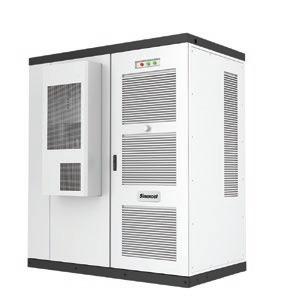
Sinexcel

www.sinexcel.us

Booth 3738
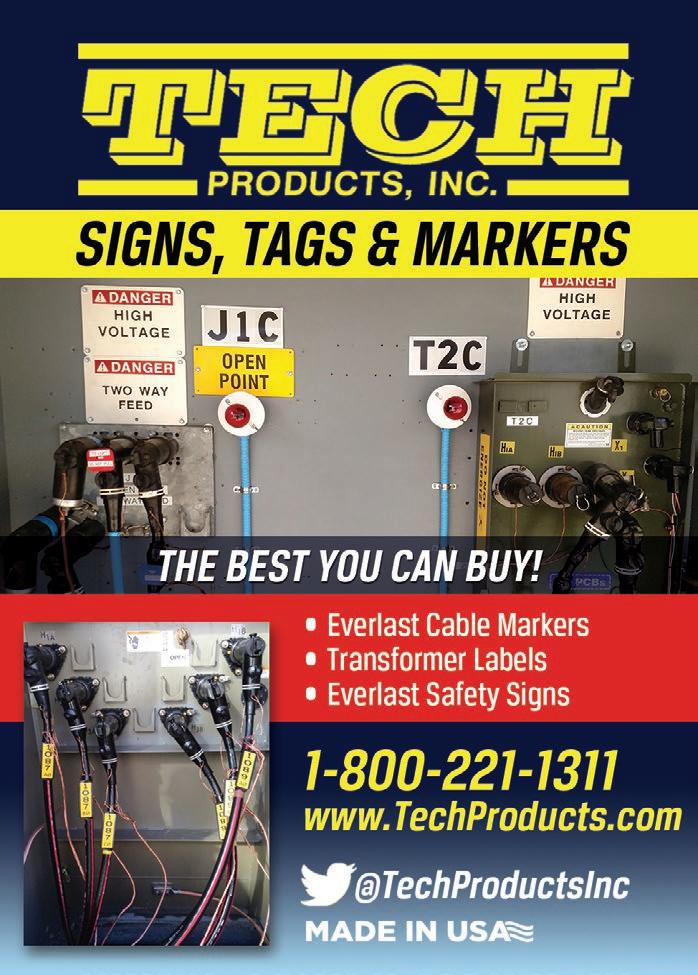
RE+ 2022
COMPLETE SUPPLIER FOR ALL TYPES OF SOLAR PANEL CLEANING EQUIPMENT AND ACCESSORIES
C Series Brush
up to 40% less water than other available alternatives
be customized
site
faster and can
to work on almost any
•Faster cleaning of ground mount systems
•Cleans a range of panel sizes configurations
(530)407-7927 info@premsc.com | www.premsc.com
Landman Services for Renewables and Fossil Fuels Projects • Utility + Community Solar • • Site Selection • Battery Storage • • Land + Right of Way Acquisition • • Title Abstraction, Curative + Due Diligence • • Government Agency Permitting • • GIS Mapping •
•Less labor and water to clean panels
Comprehensive
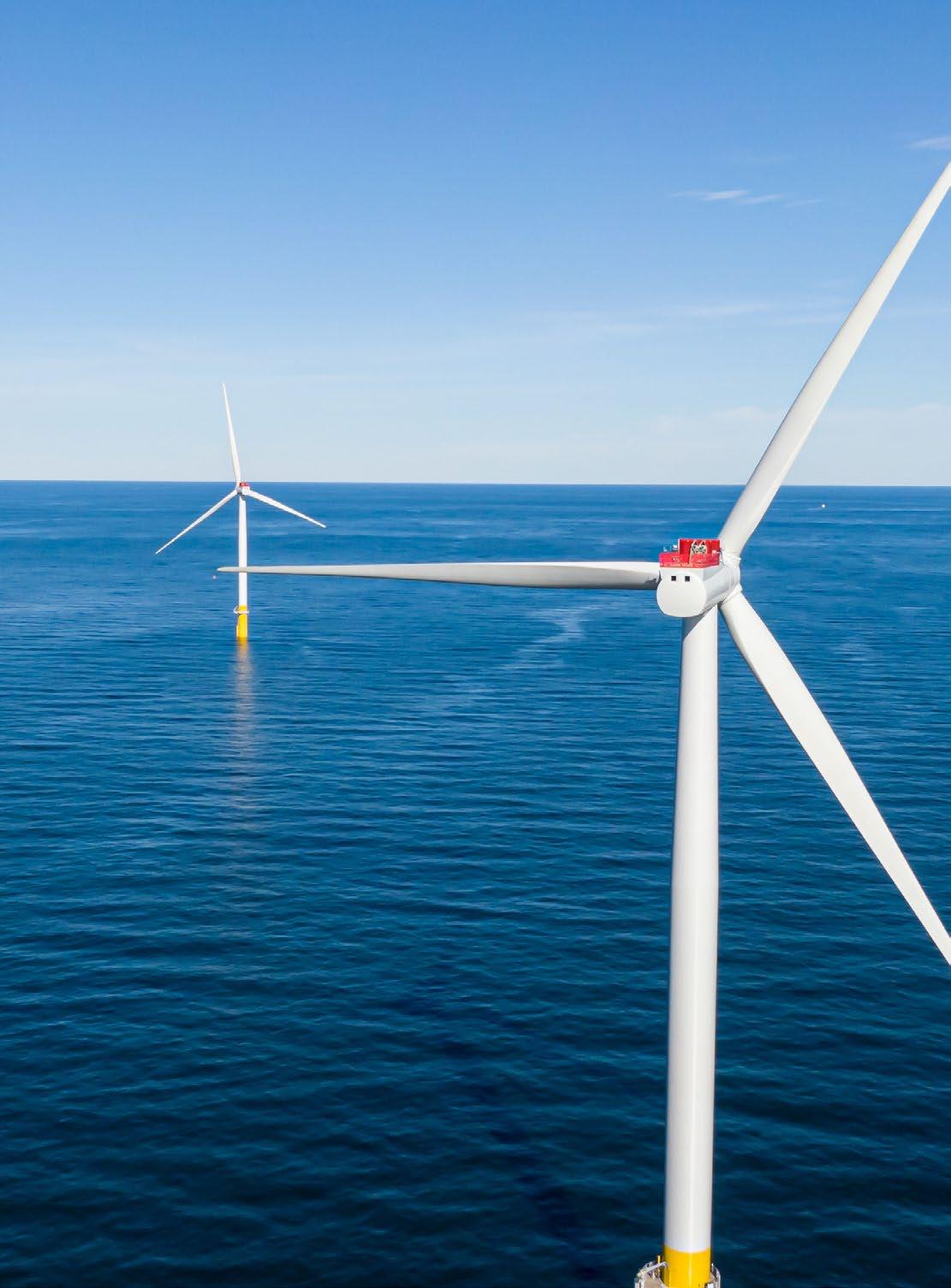
cleanpower.org/offshore Register Now Join a dedicated and thriving global community of top developers, experts and policymakers for ACP’s largest Offshore WINDPOWER conference & exhibition yet as our industry prepares for major growth in the coming decade. Offshore wind is
next major energy source.
America’s
US Offshore Wind Outlook
by Phaedra Taiarol and Mark Stobart

Energy generated by wind turbines is a sustainable resource that can produce enough electricity to power major cities around the world. Lately, the focus has shifted to offshore wind power, where large farms of wind turbines are installed in bodies of water (usually the ocean) to take advantage of higher and more consistent wind speeds. This helps to generate substantially more electricity than onshore wind turbine facilities.
Historically, the US hasn’t been that invested in offshore wind power. But that is changing as the 2021 Infrastructure Bill is making bold investments in clean energy. As of today, there are only two offshore wind projects operating in the US, one of which is a small pilot project. However, there are plans to develop many more in the coming years, both on the east and west coasts. In fact, only a few months ago we celebrated the ground breaking of South Fork Wind, a 130-megawatt (MW) wind farm off the coast of Long Island that will produce enough energy to power 70,000 homes and displace six million tonnes of carbon dioxide. South Fork Wind is expected to be in service by the end of 2023.
As the energy industry embraces offshore wind as a viable— and reliable—source of clean power, let’s look at some of the key considerations for developing these kinds of projects.
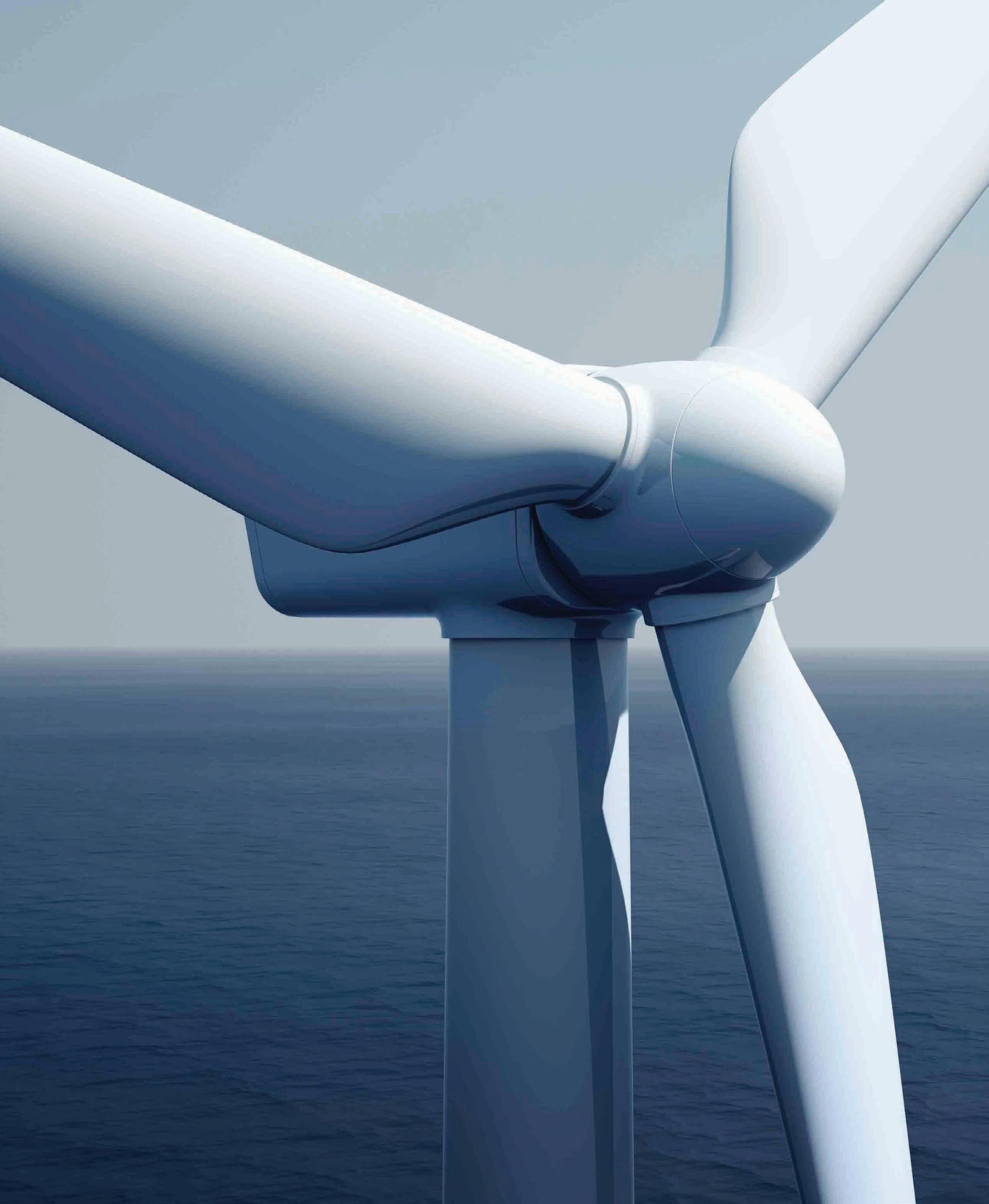
Procuring vital offshore transmission cables— and protecting them

An important consideration in the development of offshore wind is the procurement and protection of the cables needed to transmit the power into the onshore power grid.
Several factors need to be considered when selecting appropriate transmission technology and optimizing efficiency and costs. These include the distance from shore, amount of power, and ultimate development scenarios for offshore wind in the area. High voltage direct current (HVDC) technology can
transmit larger amounts of power over longer distances with lower losses, as compared to high voltage alternating current (HVAC) cables. Submarine and underground cables are required for transmitting power from the wind farms, no matter which technology is chosen.

Currently, cable manufacturers worldwide are operating at full capacity due to the high demand for power cables. The demand is not just for offshore wind farms, but also for transmission development and the integration of renewables in general. This means that procuring the cable systems for wind farms can take longer than usual. So, it’s important to engage project developers and cable manufacturers early in the process. This way both parties are aware of timelines and able to plan out the project accordingly.
Because the offshore wind cables take longer to procure, it makes them even more critical to protect. Cables can also be very costly to repair. It’s not just the price to repair the cables, but also the lost revenue from the outage. It can take months to repair or replace a damaged cable, so implementing measures to protect them is very important.
One mitigation measure for protecting cables from damage is burying them in the sea bed. This is done using either simultaneous lay and burial, or post lay burial techniques. This helps to reduce damage from anchors, fishing gear, and dredging. The specific protection measures should be evaluated during the design phase of the project.
Installing cables while protecting the environment





It’s not just about protecting the cables, but also about protecting the environment. When installing cable systems, it’s critical to mitigate impacts to the surrounding environment by reducing disruptions to the sea floor, sensitive coastal environments, and marine life. Burying cables will create a temporary disturbance of the sea bed. During the permitting process, the species and plants that live on the sea floor need to be documented, and the design and installation of the offshore wind farm must minimize impacts on the marine life. Environmental impacts must also be minimized throughout installation and design, such as any installations in high erosion areas.
Offshore wind projects must also consider avoiding sensitive habitats wherever possible, both offshore and onshore. This is where the use of horizontal directional drilling (HDD) comes into play for landing points and onshore installation. HDD helps to avoid sensitive shoreline resources and habitats by drilling below them. That way, when the cables reach the shoreline, they won’t just be running up and along a beach; they’ll be buried under the shoreline to ensure no disruption to the surrounding environment.
Cable installation must also account for other ocean uses such as fishing interests, sand borrow areas, artificial reefs, and navigation channels. Burial must be at sufficient depth in or around these areas to mitigate potential impacts.

As you can see, a lot of consideration goes into how cable systems are designed. Protecting the cables and protecting the environment must go hand-in-hand.
Barriers facing the offshore wind industry
While we are witnessing the development of more offshore wind projects in the US, we are still seeing several barriers facing the industry. An expensive price tag is not the only challenge that offshore wind projects face. Apart from the harsh offshore conditions that require equipment designed to withstand extreme weather, another challenge is connecting the power into the onshore grid. Foresight, good planning, integrated engineering/
WIND POWER
80 2022 SEPTEMBER• OCTOBER /// www.nacleanenergy.com MORE INNOVATION. LESS RISK. LOGISTICUSGROUP.COM | 864.659.3461 | @LOGISTICUSGROUP ROUTE ASSESSMENT | TRANSPORTATION | TURBINE STORAGE | REPOWER | TECHNOLOGY | CIVIL ENGINEERING MAKE ALL THE RIGHT MOVES. FULL SERVICE TRANSPORT FOR PROJECTS OF ANY SIZE
environmental evaluation, and efficient design are all critical success factors. Permitting and environmental hurdles to offshore wind in the US also exist. In order for offshore wind projects to obtain permitting approvals, rigorous environmental and engineering studies need to be done. These studies must demonstrate that the selected design, route, and installation methods minimize and mitigate adverse environmental impacts. The intermittent nature of offshore wind power—not unlike most renewables such as solar power—is also often brought up as a concern. Critics question the effects that offshore wind has on the grid, as well as the ability to regularly meet our fluctuating electricity demands. In reality, offshore wind and solar power can work together to help with these fluctuations.
The integration of renewable power generation, which relies on electronics to interface with the power grid, is changing the nature of the electrical grid. Transmission planners, operators, and developers need to consider these changes and upgrade the transmission system accordingly. This is critical to maintaining the reliability of the power system, given the significant increase of renewables that is expected in the future.
As experience grows and new technologies come into play, we will learn more about balancing the grid, and begin to focus on the numerous benefits offshore wind power can provide.
A greener future with offshore wind

Although there are several challenges to these bold projects, investment in offshore wind energy is still very important. Why? Because offshore wind can help guide us through the energy transition, and lead us to a cleaner energy future. Exciting developments we are seeing in the industry include:
• Further development of HVDC systems using equipment and control systems from multiple vendors, making multi-terminal HVDC systems and HVDC grids more viable and more economic.

• Improvements in manufacturing technology and capacity, as well as cable installation vessel equipment, to support the development of more projects.


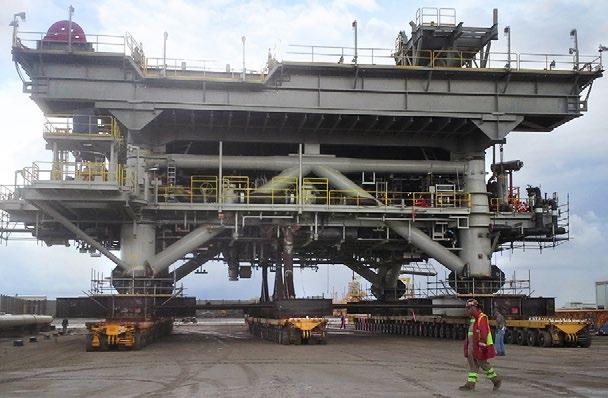
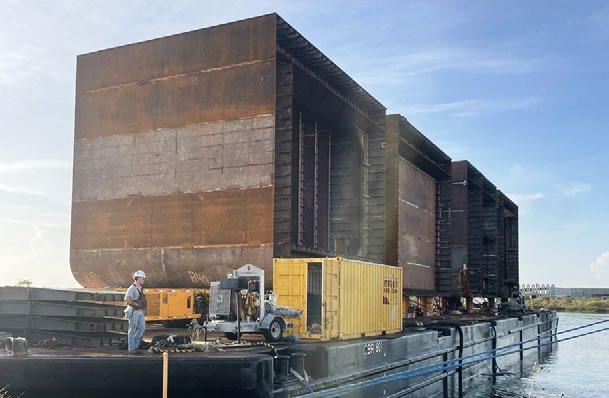
• The extension of the onshore grid to create integrated points of interconnection at wind energy areas. This will help reduce connection costs and improve the overall reliability of offshore wind.

• The development of new cable designs using improved insulating compounds that support higher voltages and currents. This will increase the amount of power that can be exported on a cable circuit and lead to cost efficiencies.
• The increased use of HVDC systems to facilitate larger wind farms located farther from the shore.
• The development of higher voltage dynamic cables to support the growth of floating offshore wind in deeper waters.
• Technology advances in wind turbine designs leading to each individual wind turbine being able to generate more power (the current maximum is 15 MW per turbine).

As we head forward, it will be interesting to watch the offshore wind industry grow and evolve in the US. And, if the US is truly committed to reaching 30 gigawatts of offshore wind power by 2030, we should see many more wind turbines being installed offshore in the coming years.
Phaedra Taiarol is a Supervising Engineer, and Mark Stobart is a Product Engineer at Stantec, which provides integrated and innovative solutions to help our clients adapt and advance as they transform to the new reality of a lower-carbon future.

Stantec /// www.stantec.com

What’s behind the Deep South promise? An award winning heavy lift & heavy haul contractor with the breadth of services and depth of experience to be your go-to partner for projects of every size. With safety at our core, we put it all together with start-to-finish turnkey solutions that get your heavy cargo from fabrication facility to final destination. To learn more, please visit us at DEEPSOUTHCRANE.COM
CRANES
Home of the U.S.-built 3,000T VersaCrane™
81 North American Clean Energy
/ TRANSPORTERS / SPECIALTY RIGGING / JACKING / SKIDDING GANTRIES / STEEL MATTING / BRIDGE
SYSTEMS
Offshore Forecasting
 by Anna Hilden
by Anna Hilden
Offshore wind is taking off in the U.S. Declining offshore wind costs, rising demand for renewable energy, and increasing government actions have accelerated the evolution of the U.S. offshore wind sector. According to the Office of Energy Efficiency and Renewable Energy, the U.S. offshore wind energy pipeline increased by 24 percent from 2019 to 2020. Moreover, the U.S. has set its sights on 30 GW of offshore wind capacity by 2030.
As U.S. wind developers and operators increasingly explore offshore locations, it is essential to understand the critical role the weather plays in the operations and maintenance of offshore wind farms. Not only does weather determine the output from the turbines, it also governs when you can safely access offshore locations for installation and maintenance.
Strong winds and high waves may limit the accessibility of offshore locations, causing difficulties when loading, transporting, and installing wind turbines during construction. Lightning and thunderstorms may also threaten the safety of technicians during installation and maintenance work.

Offshore weather can be extreme, and conditions change rapidly. Throughout all phases of developing and operating an offshore wind farm, understanding the on-site weather conditions is key.
Accurate Weather Forecasts for Efficient Offshore Development


Offshore wind projects always involve a tradeoff between the cost of equipment, logistics setup, and weather downtime. With these three factors in place, weather becomes the limiting factor for offshore operations. Wind developers and operators rely on location- and industryspecific weather forecasts for better installation and maintenance scheduling, and increased safety of every crew member when at sea. For example, during the construction of one of the first offshore wind projects in the U.S. – the Coastal Virginia Offshore Wind project

– accurate weather forecasts were used extensively to give different suppliers and stakeholders the information they needed to work efficiently and safely.

In development projects of this scale, local weather expertise can often be overlooked, leading to project delays - even safety incidents as logistics setups are pushed to the limit. Experienced offshore wind developers know the pitfalls; one European-based offshore wind installation contractor leveraged accurate weather forecasting to define weather windows for installing components like wind turbine blades during the pre-assembly and installation phases. Thanks to precise weather forecasts, the developer could plan ahead to have a blade rigged in time to take advantage of weather windows that often were as brief as two hours.
Safer Far-shore Operations with Weather Intelligence

In a remote far-shore location in the North Sea, wave heights can reach 10 meters and wind speeds can top 24 m/s. Yet, several wind turbines power nearly 400,000 homes every year with clean and sustainable energy. Each turbine requires regular maintenance to continuously supply this energy to the grid. As access and work on these turbines must be carefully planned, weather intelligence dictates scheduling logistics and safety.
Technicians access the turbines by service operation vessel (SOV) or helicopter, according to specific safety thresholds. For the SOV, the most important threshold involves wave height; the maximum safe limit is two meters. In fact, when landing, just 20 centimeters can make a big difference.
Site-specific and timely weather forecasts help to simplify planning. The operations team uses daily forecasts every morning to decide how many teams to send out, and when they need to bring them back to stay within their thresholds. In five years, they have never had a situation where they had to leave anyone on the turbine - everyone has been delivered safely back on the vessel.
Advanced weather forecasting is also an essential tool for the service teams when they are out on a turbine. Certain tasks require specific weather thresholds. When onsite, the technicians can check these thresholds and plan a job accordingly. Craning up a turbine from the outside, for example, needs calm weather.
Advanced weather intelligence keeps technicians safe, both physically and mentally.

The Importance of Understanding the Weather
The development of offshore wind in the U.S. today closely parallels the development of offshore wind in Europe only a few decades ago. Both markets have adopted ecofriendly energy policies in response to climate change pressures and public interest. However, while recent offshore wind projects in Europe compete with other energy sources without the need for government subsidies, operational offshore wind projects in the U.S. are still small demonstrations meant to showcase the industry’s potential.
As offshore wind power catches on in the U.S., developers and operators can learn valuable lessons from their European counterparts – especially the importance of understanding the weather during the planning, construction, and operation phases. When working offshore, good weather is a precious resource. Accurate forecasts ensure offshore wind developers and operators are ready to go as soon as a weather window opens - improving efficiency, ensuring the turbines are well-maintained, and keeping operating costs at a minimum.
Anna Hilden has over a decade of industry experience, and been coordinating StormGeo’s offshore wind team since 2008. With a background of working in meteorology, as well as experience from a leading wind turbine OEM, Anna helps drive meteorological services to clients in the renewable energy sector for safer and more efficient offshore operations. StormGeo is a global provider of weather intelligence and decision support services. More than 12,000 ships rely on StormGeo software or services for navigational planning, route optimization, weather routing, and fleet performance. StormGeo is a part of Alfa Laval.
WIND POWER
StormGeo /// www.stormgeo.com 2022 SEPTEMBER• OCTOBER /// www.nacleanenergy.com 82
The Port of Lake Charles is delivering America’s energy future. Our experience and our central U.S. Gulf Coast location make us an ideal choice for partners ready to take the next step.
The Port of Lake Charles offers the capacity, capability and on-site rail system to move clean energy components efficiently to their destination. (We’ve handled more than 1,600 wind turbine blades, for example.) We’re also located near Gulf of Mexico regions that are identified as ideal future sources for wind power.
The
Port of Lake Charles is the experienced choice with a forward-thinking location for partners in Americas clean energy future.
The journey to a clean energy future goes through the Port of Lake Charles.
LAKE
PORT OF LAKE CHARLES portlc.com • marketing@portlc.com
A cargo ship arrives at the Port of Lake Charles carrying wind turbine blades.
CHARLES, LOUISIANA, USA
Cutting-Edge




North American Clean Energy 83
Blade Monitoring Technology
When It Matters Most A Blade Integrity Revolution Introducing Sensoria™ – the new 24/7/365 blade monitor performance and reliability. Sensoria™ remotely detects, reports, and visualizes blade damages, giving you Edge-to-Edge Intelligence on your blade integrity anytime, anywhere. • Remote Blade Integrity Monitoring • Real-Time Damage Notifications • Advanced Acoustic Emission (AE) Technology • Intuitive Web Data Portal w/ Mobile Accessibility Blade Data View Site Data View Fleet Data View Copyright © 2021 MISTRAS Group, Inc. All Rights Reserved. Turbine Data View +1-833- TRY - SENSORIA | sensoriawind.com Keep Your Blades Spinning. Call or Visit:
Reliability
Detect Lightning Damage Early
by Matthew Stead
Incidences of lightning strikes globally are on the rise, just another of the many consequences of climate change. It’s been estimated that countries like the US could see a 50 percent increase in the number of strikes by the end of the century. When it comes to wind energy, lightning is a huge risk factor in that it often causes damage to turbine blades. Plus, its unpredictable nature makes it a silent and ever-present threat. Insurers are dealt a tricky conundrum – if the blade already had latent defects, whose responsibility is it to pay for these acts of God? And yet, how can the damage be proved to have resulted from a strike without accurate monitoring of the turbine?

A wind operator in Brazil stated that, at the end of the lightning season, 35 percent of their wind turbine blades had experienced some lightning damage. It’s a perfect storm – wind turbines attract lightning because of their passage through air, and their structure is increasingly being designed to be taller, thus making them more vulnerable. Couple this with global warming increasing the likelihood of such incidents, and it is crucial that strategies are put in place to minimize the downtime and repair costs when lightning strikes.
The majority of blades do have receptors built in that are designed to attract lightning, which is then sent down through the conductor, all the way through the tower, and into the earth. Unfortunately, this system is not fool-proof, partly due to developments in blade design, such as increased length of blades, as well as general wear and tear of blades and lightning protection systems. In other words, damage still can occur. Unfortunately, the most troublesome aspect of lightning is its unpredictability. While there is nothing that can be done to control such adverse weather events, repairing damage caused in a timely manner can mitigate damage. But how does an operator know that damage has even occurred, particularly if the turbines are in remote sites, on and offshore? There are currently a number of ways sites can be monitored, but each has pros and cons.
Drone and robot inspection
Technology has come a long way, and the use of drones and robots is becoming increasingly more commonplace in wind turbine inspection. These advances in technology afford operators with a visual record of the state of the blade; they can be deployed on infrequent intervals, allowing for an accurate understanding of changes over time. But operators will not be able to implement the technology on a daily basis. This means if anything should change soon after inspection, there will be zero visibility, and it could be months before damage is picked up – leaving you open to more expensive repairs or risk of structural failure.

FTS 350i-2
↗ 25kA surge protection
↗ ADLS compatible
↗ Certified L-864(L) (FAA AC 70/7460-1M)
↗ Infrared LEDs (FAA AC 150/5345-43J)

↗ Fresnel optics minimize ground scatter
↗ Only 3 lbs. and less than 5” tall
↗ 5-year parts warranty
800.821.5825
flashsales@spx.com
flashtechnology.com/wind
Technician inspection via Rope Access, Ground Cameras, and Platforms
While technology can be your friend, the alternative is to have damage inspected by a skilled technician. However, this involves costly time, as well as challenges finding a skilled technician or engineer, and additional problems associated with accessing turbines in remote locations or offshore.
Rope access provides an alternative to truck-mounted platforms and other blade access platforms. These provide advantages in that they don’t require specialist mechanical lifting equipment. However, they can’t be carried out frequently, due to obvious resourcing constraints.
Consider that a lightning strike occurs and damages a blade in a site that just recently had its regular maintenance check in person. You could be waiting up to 12 or 24 months before that damage is discovered. Meanwhile, any damage worsens and escalates over time, leading to the failure of the entire blade. In worst case scenarios, the entire tower is destroyed. There are reported instances where a blade (weighing many tons) has separated from a wind turbine due to exposure to a lightning strike. Whilst this is a rare occurrence, it doesn’t take much imagination to consider the repercussions, let alone the potential replacement cost (a tower replacement can be in the order of $7 million). Aside from this ‘worst case scenario’, incremental and immediate damage can be costly if not addressed immediately.
Continuous monitoring
Monitoring on a regular basis means notification of damage when it occurs. Early detection is vital to minimize long term harm that will inevitably intensify if damage is not addressed in a timely manner. It will have wider impacts, and, crucially, can be extremely dangerous.
Lightning damage to a blade was identified on two of the 48 turbines monitored for an operator in North America. The lightning tracking system showed there was a +61kA strike on one of those turbines. This early detection ensured a technician (with a groundbased camera, drone, or rope access) could attend to the site immediately to assess the damage. Without continuous monitoring, it could have been months before it was discovered, during a manual inspection by a technician. By then, however, damage may have escalated, forcing repair costs significantly higher, and making blade replacement necessary, or – in the worst case – requiring complete replacement and/or tower failure. Regardless of the monetary impact, no operator or OEM wants to leave themselves vulnerable to litigation or skyrocketing insurance costs. It’s a no brainer to invest in monitoring equipment that protects an owner/operator’s biggest asset – the wind turbine blade. Without it, you may face damages that can have devastating and potentially worsening consequences.
The US set an ambitious climate target of reaching net-zero carbon emissions by 2050. To do this, renewable energy will have to be ramped up. The 30 gigawatts of offshore wind being developed in the next eight years shows that the will is there. But with this pledge comes myriad issues; ensuring the effective operations of renewable energy providers is paramount in order to meet these targets. Rather than waiting for the impact of weather incidents to have irreparable consequences, continuous monitoring is one option that helps minimize downtime, maximize output, and boost productivity.
Matthew Stead is co-founder and CEO and Co-founder of Ping Services, and brings over 20 years of experience in acoustics and working with wind turbines. This unique combined experience led to the formation of Ping, when a wind farm operator challenged Matthew to make a device that could hear blade damage just like technicians can hear on site. Matthew has a bachelor’s degree in Engineering (first class honors) and a master’s degree in Engineering Science (Acoustics).
Ping Services /// pingmonitor.co
WIND POWER
84 2022 SEPTEMBER• OCTOBER /// www.nacleanenergy.com
Designed to withstand environmental extremes, the FTS 350i-2 features 25kA lighting protection and a weather-resistant polymer construction.
Contact us today for a quote
Shaping the future securely, with a view of what‘s to come
Windenergy 5.0 – Our Competence. Our Responsibility.
Wind Turbine Automation
More than 130,000 wind turbines automated.
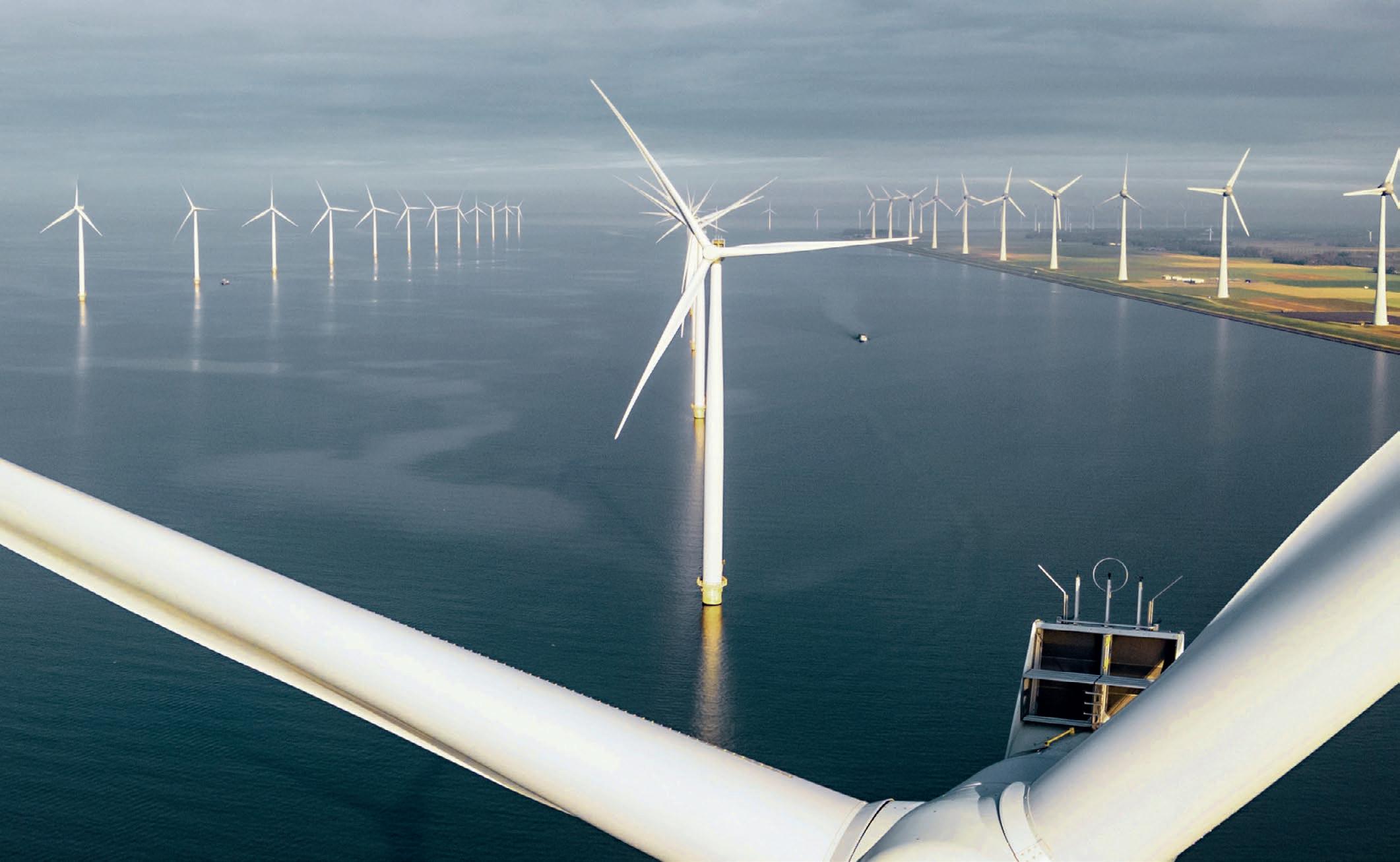
Condition Monitoring
Comprehensive protection for your operating assets.
Retrofit
Extend turbine lifecycles.
www.bachmann.info energy.industry.maritime.

Grid Potection and Control
Safe, fast and stable power management.

Windpower SCADA
Access protection and operation control. We are attending and look forward to your visit
Offshore WINDPOWER October 18-19, 2022 Providence Rhode Island, USA Electricity Transformation Canada October 26-28, 2022 Toronto, Canada
Managing Wind Service in a Constrained Labor Market
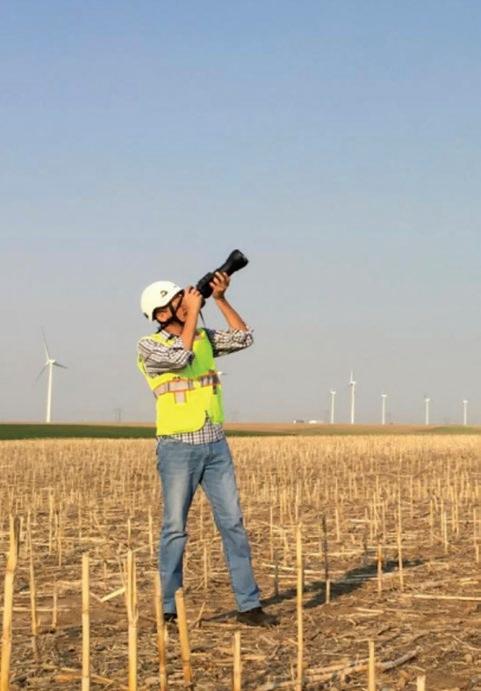 by Samuel B Tasker
by Samuel B Tasker
Supply Chain
As the Wind Industry matures, and OEMs face steep pricedriven market challenges, the notion of traditional risk models are changing. OEM competence and the capability to continue to adequately serve the market is questionable. Even with OEM warranty coverage, there are contract carve-outs for parts like blade wear-and-tear, caps on component failure rates, liability limits, and shortages that give reason for additional business considerations to owners.
The Wind OEM is primarily the designer and not the direct manufacturer; OEM platforms are less vertically integrated, with fewer IP barriers. Because OEMs depend more on sub-suppliers, the US Wind Industry supplier base has matured, and can provide services directly to owners.
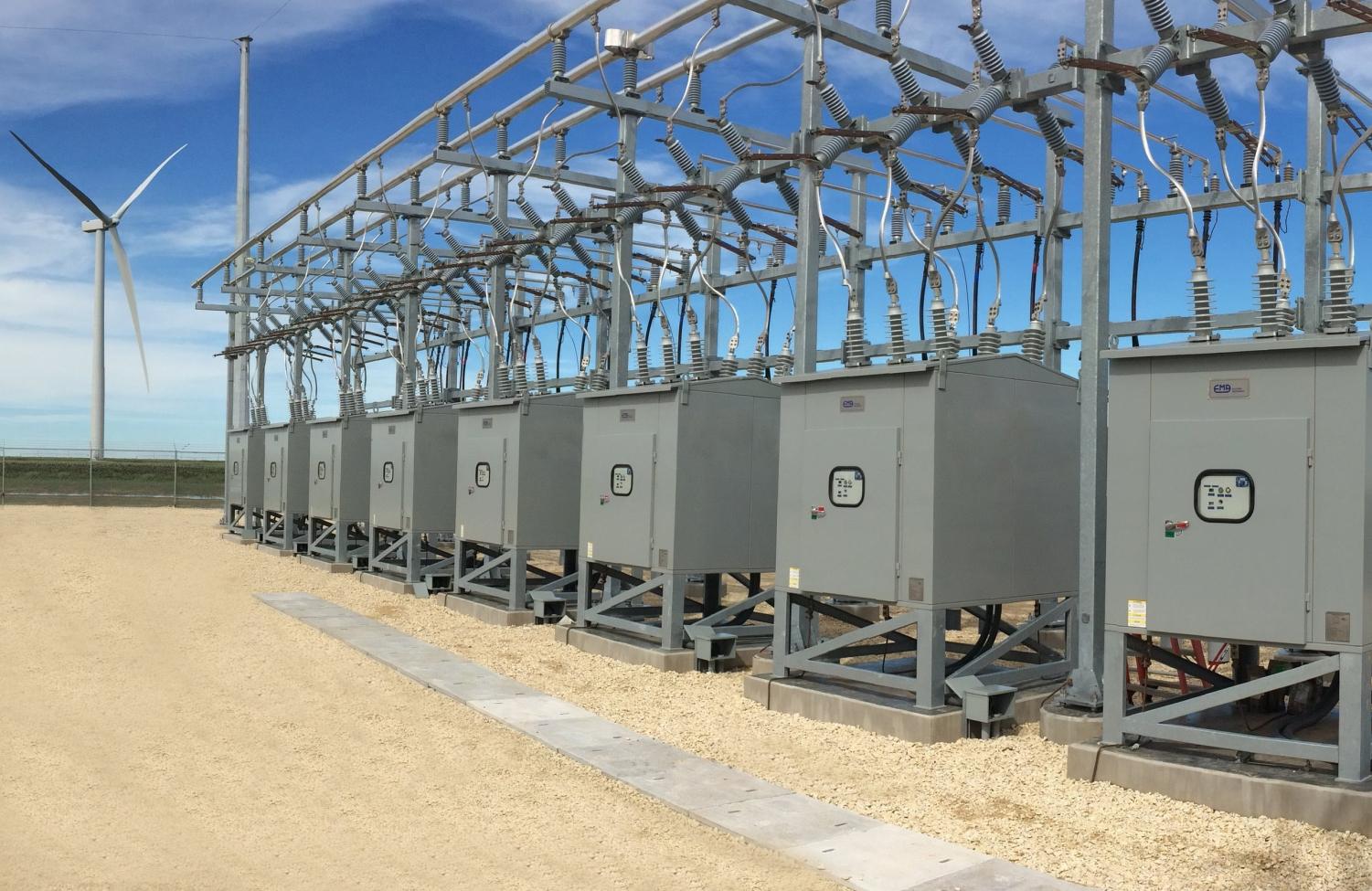
Wind OEMs also heavily outsource for service support in the market, which drives owners to seek support directly from sources or self-perform. The recent entrance of institutional investors into the services segment created consolidation of dozens of smaller suppliers into fewer large suppliers. These consolidated suppliers can tout an ‘all of the above’ offering. Where OEM support is waning, limited, or where economics and risk otherwise make more sense, owners can reasonably find quite capable non-OEM options.
In turn, the US Wind Industry employs a combination of operating philosophies, with perhaps only ~30 percent of the market self-performing some portion of their assets. The remaining work is contracted to suppliers.

Philosophies drive strategy
A procurement philosophy depends on the operating approach. Some companies will use OEM channels to operate as a primary supplier. OEM operating strategy, or simply a small operating footprint, may work without a procurement team. Other
companies that grow away from OEM dependence, or have a larger operating footprint, have more complex demands and require procurement strategies.
Traditionally low-risk and externally insured companies may be very reliant on the OEM for longer term warranty and services after the initial equipment purchase. This stems from investor models relying on the OEM to hedge risk. Such owners mitigate risks to the model with independent audits, and can use a limited management model to ensure the OEMs are delivering on obligations.
On the other hand, a traditionally higher-risk and often internally insured model is less reliant on the OEM for service and warranty after the initial equipment purchase. Such self-performers take on the risk internally with more robust teams for engineering, operations, analytics, and supply chain. In companies that are less reliant on the OEM as a supplier, a strong procurement arm is vital.
Value management
Procurement departments are included in business models when supplier management can be used to leverage value with multiple competitor suppliers. When employed, procurement teams are expected to drive the commercial activity and contracts involving company expenditures. Procurement teams are expected to attract and maintain supplier relationships when external resources are needed for special skillsets, preferred economics, or resource availability.
In short, procurement buys from and manages suppliers, but strong
WIND POWER
86 2022 SEPTEMBER• OCTOBER /// www.nacleanenergy.com
® and manufacturer of model VDH/GSMI combined 34.5 kV vacuum circuit breaker and high speed, mechanically interlocked grounding switch (aka “grounding breaker ”), +1 325 235-8000 16 Industrial Dr, Sweetwater, TX 79556 contact@emaeletromechanics.com www emaelectromechanics.com
EMA Electromechanics is the designer a unique and patented system specifically designed for switching and grounding of and feeder circuits. wind solar
VDH/GSMI®
34 5 kV Vacuum Circuit Breaker and High Speed Grounding Switch for Wind Power Substations
and experienced business acumen is required. Procurement functions at a crossroads with overlapping competencies that include EHS & Quality, Engineering & Operations, IT, Asset Management, Legal, and Compliance. They must be able to structure and standardize tools for multiple disciplinary scopes of work. Procurement leaders are trained to counternegotiate sales ninjas and create a level playing field to fairly and economically evaluate supplier offerings.
Handshakes and spreadsheets
The constrained labor market is ominous because it creates an environment which can introduce inexperienced workers, shortcuts, and mistakes that implicate quality and safe work. The mature procurement team knows that many qualities, not price alone, must be accounted for to achieve quality and safe work. While the mature supplier knows how important and challenging it is to build and maintain culture, not just provide warm bodies.
Supplier partnerships always start with a handshake evaluation of relationships and values. The leaders and the network tenure ensure champions are in place to work through future business issues together.
The supplier qualification process is subsequently orchestrated with a variety of tools to try to balance high efficiency with ‘doing the right thing’ – ideally both! Running the numbers through a procurement qualification process can seem tedious to all parties, but it is an inevitable step. And it’s critical to conduct a careful review of supplier metrics to seek quality and deep understanding of expectations, not merely a superficial spreadsheet comparison, especially with the growing trend to outsource suppler qualification services.
Hasty checklist qualification methods can overlook other supplier operating values, leading to a revolving-supplier-door limiting the ability for parties to grow and support each other
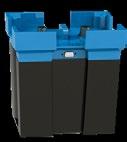


long-term. Such superficial checklist methods can also drive supplier system-gaming like price cutting and rubber stamping. For instance, if a new supplier does not have a safety record yet, they are unable to provide a history of TRIR and EMR , and unlikely to be qualified. Does this supplier get instantly rejected, conceal the record by partnering with another company, or explain the situation through a waiver process for special management considerations?
Find and tell the culture-story of the supplier as part of the screening process. A culture-story should be evidenced with examples such as proof of background checks, sample resumes of key technicians, and references from other customers. At a minimum, evaluate how desired behaviors are driven in the business (i.e., use of leading indicators for safe work, rework tracking for quality assurance). Together, the procurement and supplier relationship can catalyze the right working culture by setting strong expectations up front.
Despite fantastic supplier competition in the Wind services market, there is still a ‘perfect demand-storm’ of labor supply shortages, persistent equipment reliability trends, and ever-aging fleets. Supplier management is now more challenging than ever, and it puts procurement ‘front-and-center’ to support operating services’ business needs.

Sam Tasker is Managing Principal at Tasker Energy. After service as a Navy Surface Warfare Officer, Sam led in field operations during his time with NextEra Energy and Pattern Energy. Subsequently, he led the Aftermarket Sales & Marketing at SGRE, and has run Sales and Services with companies such as Windesco and other clients.
Tasker Energy /// taskerenergy.com




Preventive blade maintenance with lightning current monitoring


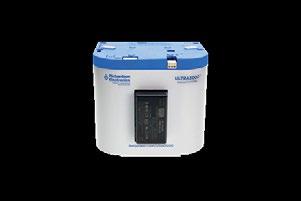
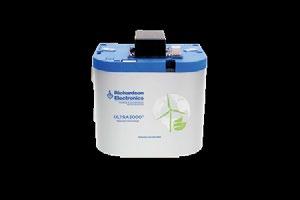

The Lightning Monitoring System (LMS) from Phoenix Contact detects and analyzes in real time the magnitude, duration, number, and other parameters of surge current events caused by lightning strikes. Detailed lightning analysis can be an effective input to asset management systems to optimize the inspection intervals for wind turbine blades, as well as appraise damage requiring immediate attention. This can result in performance improvements by reducing turbine downtime and increasing availability. This has important implications as wind turbines become larger and are located in more access remote areas such as offshore applications.
Phoenix Contact /// www.phoenixcontact.com
North American Clean Energy
ULTRADTM
Compliance with NERC = Higher Margins of Reliability


 by JC Culberson
by JC Culberson
Obviously, the NERC Reliability Standards (Standards) were developed with the intent of improving reliability of the Bulk Electric System (BES), but how does that directly translate to actual improved performance and reliability of the Facilities that make up the BES? As a Senior Auditor at NERC, I fielded this question multiple times. There is no easy answer. True, the intent of the Standards is to increase reliability. While there is no data to support the idea that the Standards are responsible for increased reliability of the BES, they do provide a rigid set of requirements that, if complied with correctly, absolute increase reliability. At the very least, they decrease the likelihood of diminished reliability of the BES. In addition to this very valuable benefit of compliance with the Standards, the motivation for many to comply with them also includes hedging against potential findings of noncompliance, and the dreaded fines that may be associated with instances of violations. With that being said, let’s take a look at some of the Standards that seem to be violated more than others.
Most violated Standards (and the associated risks)
Last year, CIP-007, CIP-010, and CIP-005 were the three of the most violated Standards, which begs the question, why are we, as an industry, having so many issues with these Standards? The easy answer is we are part of an industry that, for decades, has been focused on one mission - to generate, transmit, and distribute electricity. The added expertise needed for cyber and physical security isn’t something that has always been a fixture in our industry. The violation numbers suggest that more work is needed with compliance efforts for CIP Standards. What’s the risk? Well, there’s the risk of unwanted intrusions into our Facilities, our networks, our SCADA or EMS systems, etc. There’s no shortage of threat actors who would seize an opportunity to cause negative impacts on the BES; CIP Standards are designed to make it very difficult for that to happen. The CIP Standards have undergone more overall versions than the Operations and Planning Standards, signaling the fact that these requirements are changing to try and keep up with the ever-present cyber and physical threats. In simplistic terms, bad actors need only be successful once, while we must be successful every time there’s an attempted breach of security. The extent of damage could quickly move beyond one Facility to impact the entire system, which is why these Standards must be at the forefront of everyone’s compliance efforts.
In addition to the CIP Standards mentioned above, the list of O&P Standards that were violated most in 2021 include PRC-005, FAC-003, EOP-008, and PER-003. These particular Standards address protection system and relay maintenance, vegetation management, loss of control center functionality, and operating personnel credentials. These Standards and their associated requirements deal with very tangible issues that we must master in order to maintain a reliable BES. It’s not too difficult to understand how maintaining lines and relays, ensuring the control center is functional, and training operations personnel are essential to maintaining a functioning, reliable system.
The real question is why are these Standards finding their way on the list? Many times, there are missed deadlines for certain maintenance activities (such as battery testing in a substation
control house, or not keeping accurate training records). There are also occasions where it is found that a registered entity has incorrect relay settings, or there has been no inspection or maintenance of transmission lines, which can lead to devastating and expensive events for the local system – and potentially for the BES. As any good statistician will say, an increase in small, seemingly insignificant issues will eventually result in larger and more intense problems, should they go unchecked. Many of these violations were found during an audit or Spot Check. This leads me to the next point: catching these vulnerabilities or violations before they become a larger problem.
It is much better to identify these issues through a robust internal controls and program improvement effort that leads to self-reporting violations, rather than to be caught unaware during an audit. Yet, even in the case of uncovering a violation during an audit, there are mitigation efforts that are triggered to ensure the issue is properly resolved, and steps that are taken to ensure the issue will not continue in the future. This view on audits, although anxiety provoking, is a good way to correct issues that have the potential to wreak havoc on the BES. It is always better to identify and correct any potential issues through selfreporting, than to have an Auditor find the instance of non-compliance. On the flip side, the benefits of identifying these possible pitfalls far outweigh the approach of doing the bare minimum and hoping the Audit team doesn’t find any violations.
Building a culture of compliance
When taking a deep dive into a NERC compliance program, we inadvertently take a long look at the operations and planning departments and processes, leading to more reliable and compliant operations. By conducting an analysis to ensure any

WIND POWER
88 2022 SEPTEMBER• OCTOBER /// www.nacleanenergy.com Contact us today for more information about our Windblade Repair courses +1.775.827.6568 training@abaris.com www.abaris.com High Expectations, Higher Level of Skill Aerospace Methods Applied to Windblade Repairs R-5 Composite Windblade Repair R-15 Advanced Composite Windblade Repair
gaps in compliance are identified, an entity can greatly reduce the potential for greater fines, while increasing reliability. If, while already working to remedy the issue and develop a mitigation plan, an entity selfreports a violation, NERC and the Regional Entities view this as an indicator of a strong compliance program and a healthy culture of compliance.
Compliance staff partnerships with business units
There once was a common view of compliance personnel as people who make a job more difficult by enforcing regulatory requirements, while business units are just trying to do their jobs. Over the past decade or so, that paradigm has shifted in many entities, leading to a better partnership between operations and planning personnel and the compliance staff. Compliance should be viewed as a mechanism by which we improve processes and programs, becoming more efficient and reliable as a result. At many ISOs, transmission entities, and other utilities, the compliance department is now comprised of former System Operators, Analysts, and Engineers from the business units, which leads to a better understanding of how the work is being completed and how that complies (or doesn’t quite comply) with the Standards. By cultivating this partnership between ops and planning staff and compliance personnel, and achieving buy-in from all involved, there is a greater likelihood that mistakes will be caught and corrected, leading to an increase in reliability.
A Good Culture of Compliance is a Great Compliment to Existing Operations and Planning Departments





In our usual operations and planning duties, it is important to take the occasion to remember why we’re doing what we do. In order to keep supply and demand properly balanced at 60Hz, ensure all load is served, and maintain the systems, equipment, and facilities that make this possible, we need a framework of requirements to ensure there are no gaps in reliable operations. The NERC Reliability Standards are developed to do just that. By using industry volunteers to draft the Standards, we have a voice in the NERC process. This means that, using our best people to engage in the compliance process at the NERC and RE levels, we can help ensure that the Standards are being written well and will accurately address the issue the Standard is trying to resolve. In closing, it is very important that our industry stay on top of developments at NERC, including project meetings, steering committees, upcoming standards, and engage our best people in the compliance processes. By doing so, we will be better represented, and the reliability of the BES will remain high in the years to come.

JC Culberson is Director of NERC and Regulatory Compliance at Electric Power Engineers, Inc. He boasts a wealth of experience in the areas of NERC and regulatory compliance, transmission operations, RTO/ISO operations and planning, and ERO operations, with extensive NERC compliance consulting expertise related to the Transmission Operator, Reliability Coordinator, Balancing Authority, Transmission Owner, Transmission Planner, Generator Owner, and Generator Operator functional entities. JC has managed and led numerous compliance and operations departments in the energy industry, with a record of successful implementation of compliance processes and operations for these entities. Additionally, JC possesses a great deal of experience in ISO/RTO operations, training, and situational awareness. JC is fluent in English, and moderately fluent in the Arabic language.
Electric Power Engineers /// epeconsulting.com



North American Clean Energy 89 Don’t be let down by a lift. Installation and preventative maintenance by IUEC elevator mechanics will keep your elevators moving SAFELY and more EFFICIENTLY. We have more than 675 elevator companies ready to serve your elevator lift needs. Contact us today. Carisa Barrett cbarrett@eiwpf.org 410 -701-2206 Vance Ayres vayres@iuec.org 540-490-0476
Make Your Wind Turbine Last Longer

How foundation and tower monitoring can extend the life of a wind turbine

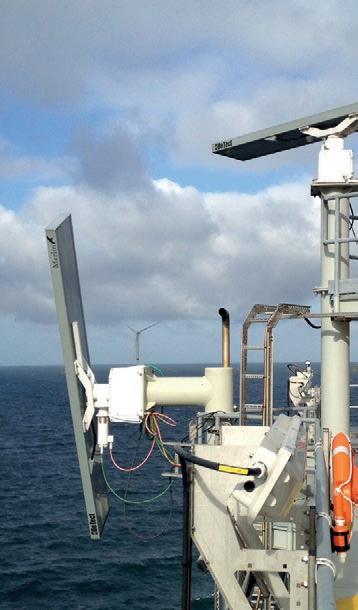
 by Ian Prowell
by Ian Prowell
Awell-maintained car will run for longer than a hard-driven, neglected one – and cost less over its life. Wind turbines are much the same. However, wind farms are multimillion-dollar energy generation assets, so keeping them running for longer means significant additional revenue for owners.
That’s why life extension is becoming more and more crucial as wind owners and operators seek to hedge against energy market uncertainty by extracting additional value from their existing portfolios. This requires a continuous investment into their turbines and fleets. With a best practice life extension strategy in place, operators can see useful asset life increased by up to 25 percent – with up to 12 percent higher sale prices if assets change hands.
Wind operators have an opportunity to transform their life extension strategies due to advances in monitoring technology. Although drivetrain monitoring remains a key component of profitable life extension strategies, predictive maintenance approaches now include all types of data. Data on pitch bearings, blades, rotors, as well as foundations and towers are coming into play, helping operators make the best possible decisions on component replacements and repowering work.
Life extension and repowering
Owners and operators have a strong incentive to extend asset life. A turbine pays for itself in the first 10-15 years of its life. Selling electricity produced after this, once O&M costs are considered, represents pure profit. This means that the largest factor affecting the value of a project is whether life can be extended, as the transformation of financial modeling from running assets for 25 years versus 20 years is significant.
There is another factor involved in intelligent life extension – reducing waste. Recently, the wind sector has begun to target carbon emissions in its supply chain more proactively. A move to a circular economy is within reach due to a better understanding of wind turbine technology and better materials. However, data on the remaining useful life of components is necessary to establish which parts can be refurbished, which should be replaced, and which can be left.
Historically, accurate and cost-effective monitoring has been restricted to the drivetrain, tackling the biggest cost failures first but neglecting crucial components such as towers, blades, and foundations. New advances in data analysis have led to a leap forward for operators, as they can now use their existing drivetrain vibration monitoring systems across the turbine.
This is particularly crucial during partial repowering, where larger rotors and generators are fitted to the existing towers to upgrade the capacity of a site. Understanding what is technically feasible during this process ensures that operators can push the boundaries without compromising safety.
The tower and foundation challenge
Partial repowering and life extension have given rise to towers and foundations with a potential service-life exceeding 40 years. Replacing this infrastructure is rarely economical, so wind farm operators need reliable data on degradation.
In many cases, lenders or independent engineers will require regular foundation monitoring for life extension beyond the theoretical design life of the wind turbine.
The evidence shows, however, that many foundations can perform far beyond their theoretical life, and can do so safely provided the data indicates structural integrity.
The current trend toward short-term subset monitoring may fail to capture a clear picture of foundation integrity, due to natural variation that can be more significant than that caused by damage. Additionally, with many foundations, damage only shows under higher load levels that aren’t captured by short-term monitoring campaigns.
Predicting the outlier foundations with low strength or high loads is error-prone, and can result in damage going undetected until serious incidents occur, such as collapse.
Unlocking the full potential of drivetrain CMS
MEMS accelerometers, used in leading
Condition Monitoring Systems, are extremely adept at monitoring low frequencies, such as structural frequencies for wind turbines. Lowfrequency capable CMS can deepen operators’ understanding of foundation health. These CMS are often already installed on projects, and, if not, the installation costs fall well below that of periodic foundation testing and inspections.
Early detection and clear decision criteria are vital when dealing with foundations. Solid, quantitative results allow operators to set decision criteria confidently, and projecting future conditions permits proactive action. Predicting developments in turbine health is essential to allow time to design possible foundation retrofits, as well as construction contracting and implementation, without incurring significant project downtime, or running turbines that might collapse.
With accurate foundation data, asset owners can take a smart approach to remedial work. Foundation strengthening is costly, but monitoring provides insight on foundation health to asset owners, who can defer strengthening work and implement targeted retrofits strategically.
A solid foundation for increasing wind efficiency
Wind energy is set to play a leading role in the energy transition. No MWh can be left on the table –ensuring that assets already installed can generate clean energy for longer is the fastest way to boost and maintain renewable capacity. Operators have the opportunity to use the latest technology to gain a holistic picture of turbine health, going beyond the drivetrain to inform better, more strategic decision-making, and, ultimately, longer turbine lifespans.
Ian Prowell is Principal Engineer at ONYX Insight, which provides advanced monitoring of all wind turbine components using multiple data points.

WIND POWER
ONYX Insight /// onyxinsight.com 90 2022 SEPTEMBER• OCTOBER /// www.nacleanenergy.com
MERLIN™ Advanced Bird Monitoring Systems Preconstruction bird survey, operational monitoring & mortality mitigation HARRIER™ Aircraft Detection Lighting Systems Radar-activated obstruction lighting systems Bird Monitoring & Mitigation Systems (BMMS) for Wind Energy Projects ONSHORE ADLS Over 600 systems delivered worldwide www.detect-inc.com See us at Wind Energy Hamburg, Sept. 27-30
OFFSHORE
WindCube® lidars
Proven. Accurate. Reliable.
Lidar is changing the wind energy industry, and WindCube is leading the way. Companies around the world use WindCube lidars in all phases and types of wind farm projects, onshore and offshore.

They are leading with lidar.
• Improve bankability and project success
• Increase efficiency and operational continuity
• Streamline WRA, PPT and other crucial tasks
• Use with all turbine types and heights
windcubelidar.com
Can Vibrations be Good for Business?
by David Futter
How much does condition monitoring save the typical wind farm?

This question was put to me during a recent conference on innovations in the wind industry. The question relates to the financial benefits of vibration analysis, otherwise known as the cornerstone of condition monitoring, compared with SCADA monitoring. As an engineer, I am well used to explaining the technical advantages of vibration technologies. But when asked to provide a cold, hard figure, I had to hesitate.
Not because I didn’t have an answer. But because it is actually a broader question that relates to a wide range of additional monitoring techniques. The application of condition monitoring must be expected to bring a return on investment in the short term. Otherwise, why apply it? But exactly how much ROI can a wind farm expect?
I was reminded of a study I conducted for a major European energy provider about ten years ago. I can’t go too deeply into the details, but I can discuss the methodology, and use published reliability datasets and my own industry knowledge to illustrate it. The method actually pre-dates, and was the basis for the flow chart in ISO 16079-21 related to the drivetrain monitoring of wind turbines; but the idea was based on the more general ISO173592.
According to most condition monitoring equipment suppliers, there are always specific, quotable examples of enormous savings delivered thanks to the successful early identification of a fault. But this does not paint a full picture. Not every installation will suffer from such costly failure mechanisms, and it is still possible that a particular fault will not be detected in time.

My method, therefore, surveyed a range of failures. For each individual failure, it identified the likelihood of that failure occurring on a given turbine, coupled with the probability of its detection by a particular condition monitoring technology.
The most challenging aspect was collecting a set of representative failure modes, and then assigning probabilities to these failures. Costs were then applied to these failure modes, as well as revised costs assuming that condition monitoring recommendations are implemented. Cost estimates included not only repair and replacement of parts, but also the cost of logistics and lost power generation.
In itself, the process did not differentiate between different monitoring types, so monitoring technology was additionally noted. Where multiple monitoring technologies were deployed, the probability of failure detection increased for some failure modes, but the initial and annual cost of monitoring also increased. Some external studies3,4 have gone as far as to conduct a detailed analysis about which technique makes the most difference.
But in this study, we calculated savings for two offshore wind farms (based on 2012 pricing), and two sets of published reliability data from the Reliawind5 consortium. Unfortunately, as this was an internal study, I cannot share specific values, although the published data is available from the WMEP database. I can also highlight the typical patterns of identified savings.
The results
We identified savings of over 250,000€ (around 251,000USD) per windfarm, per annum, in every case where a variety of monitoring techniques were applied.
It should be noted that the two specific wind farm cases predicted lower savings than the amalgamated cases from the external datasets, probably due to the newer turbines deployed on these farms, or possibly due to incomplete failure reporting in the datasets. Interestingly, the two offshore wind farms with turbines from different manufacturers foresaw savings in very different areas, even though the resulting figures were quite similar.
As part of the study, we found that several monitoring packages overlapped when it came to the type of failures they claimed to detect, with the exception of SCADA data analysis, which operates in different areas.
Monitoring techniques applied to the drivetrain (principally vibration analysis, acoustic
emissions, and oil analysis) all detect similar gearbox and drivetrain failures. Any increased savings from the application of two of these techniques is marginal compared to only one. There is a slight increase in detection probability and lead time, but no additional failure mechanisms are revealed. Of these techniques, vibration analysis delivers the widest range of failure detection, and can also be implemented for structural health monitoring.
SCADA analysis is more likely to detect failures such as blocked coolers, electrical, and control problems, as well as small efficiency losses, complementing the other techniques. Typically, the individual costs of failures detected by SCADA data analysis are low, but they occur relatively often, whereas the more significant failures detected by vibration analysis are very expensive, but less likely to occur.
The analysis of SCADA data accounted for around 20 percent of the overall savings, and improved detection rates in other areas by around 5-10 percent. Vibration analysis accounted for up to 70 percent of the overall savings, with the remainder made up of improvements in detection probability through other methods such as oil analysis.
So, when it comes down to it, vibration analysis really does generate the lion’s share of savings in a comparison between condition monitoring and SCADA analysis – although SCADA data is definitely beneficial in its own right because it detects different faults, and should therefore be used in addition to condition monitoring to access the full potential savings.
Since the study, wind turbine designs have improved significantly, but the cost of condition monitoring installations are also much lower. Taken together, I estimate little impact on the overall annual savings provided by a CMS system over the past decade, although recent market pressures are likely to have significantly increased potential savings from vibration analysis and condition monitoring.
But back to the original question about the actual savings. How did I respond?
“It depends”, was on the tip of my tongue, but based on this study and my confidence in the findings and capabilities of a modern CMS system, I could confidently reply: “At least a quarter of a million Euros per wind farm per year.” And that’s good news for everyone.
David Futter is a BINDT Vibration Analysis Cat IV practitioner, an Approved Training Coordinator, and Head of Condition Monitoring Consultancy, part of Bachmann Monitoring GmbH.
Bachmann Monitoring GmbH /// www.bachmann.info
1 ISO16079-2 Condition monitoring and diagnostics of wind turbines — Part 2: Monitoring the drivetrain
2 ISO 17359 Condition monitoring and diagnostics of machines — General guidelines
3 Coronado and Fischer: Fraunhofer IWES Condition Monitoring of Wind Turbines: State of the Art, User Experience and Recommendations, Jan 2015
4 May, Allan; McMillan, David; Thöns, Sebastian Economic analysis of condition monitoring systems for offshore wind turbine subsystems, Proceedings of EWEA 2014
5 Reliawind project Final Report: Reliability-focused research on optimizing Wind Energy system design, operation and maintenance: Tools, proof of concepts, guidelines & methodologies for a new generation
WIND POWER
92 2022 SEPTEMBER• OCTOBER /// www.nacleanenergy.com
Your home for wind training and certification

Give your technicians the training they deserve.





Training courses include, GWO Basic Safety, GWO Basic Technical and GWO Advanced Rescue. Plus, NFPA 70E certification and a range of technical courses designed to equip your team with the skills and knowledge to succeed.



www.safetytechnologyusa.com






TRAIN BETTER, WORK SAFER
GIS Speeds Up Site Selection
Finding suitable land is a familiar bottleneck for developers of renewable energy projects. Besides the usual considerations for industrial land projects — zoning, environmental issues, topography, wetlands — renewable energy installations need to be close to electrical grid substations and to electrical lines with the right voltage rating and capacity to take on more power. These sites may need to be hundreds of acres in size. They also need to be owned by someone who's open to entertaining proposals — too many projects get scotched halfway through by owners who were never likely to cooperate in the first place.
And so, one of the developer's first big tasks is to winnow down the list of potential site candidates by gathering information such as ownership and ownership interest, proximity to electrical grid infrastructure, and other requirements. The traditional method is to hire consultants who (hopefully) have strong local relationships, knock on doors, and amass a great volume of backand-forth email, text, and phone communications. All of this gets fed into an unwieldy spreadsheet.
This scenario begs for the kinds of technological solutions we've grown accustomed to in other industries. And they're starting to arrive. When seeking a partner for a renewable energy installation, developers shouldn't hesitate to ask their engineering firms what kind of technology a firm has on hand to give the project an edge.


GIS — an obvious application for land-based projects such as these — offers promising productivity improvements. Slick mobile, GIS-based software brings disparate bits of information together in one easy-to-see dashboard — much easier to review than a spreadsheet. Having everything in one spot, and multiple team members connected to it, allows you to short-circuit what previously had been lengthy step-by-step processes. Tasks that had been done one after another now can be done in parallel. Where before you may have hired a consultant, then a land acquisition company, then an engineer (and then a person to study everything done so far), now you can get everyone involved earlier to get results more quickly.
Streamlining all these tasks and activities typically cuts site selection time by half.
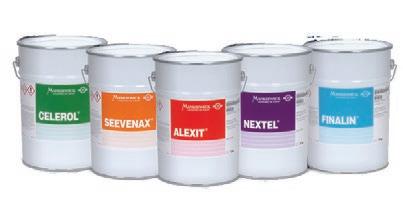

With a team all using such mobile-enabled software, they can enter very specific information about parcels that are candidates for a project. GIS-based systems can be used in such a way that a developer, before ever talking to any owners, first pares down the best site candidates from among hundreds identified. This means that reaching out to owners will stand a greater chance of success, when compared to the scattershot approach so often used.
Unlike a spreadsheet, GIS allows Google Maps-like functionality but, in this case, customized to display land by parcel and with information about the parcels. If you're looking for sites near a substation, this is the way to do it. Engineers and technicians in the field can then go out and gather more information to enter into the mobile app. Only when the best sites have risen to the top does your team reach out to have conversations with owners.
As team members gather more details about the property, including specifics from conversations with owners, they enter these details into the system. When users select a given parcel, they can see these details, right down to the person who entered them and at what time, as well as photos and video if desired.
Say a company is looking to develop a wind farm over a large area, such as an entire state, and is under competitive pressure to bring it to market quickly. Having the ability to narrow down the list of potential candidates from hundreds of thousands of sites, down to dozens or hundreds, represents a powerful competitive advantage. The system draws a clearer and clearer picture of real, pragmatic possibilities. In this way, the developer does not waste time chasing down parcels that were never meant to be. For those parcels that rise to the top of the list, important information-gathering work happens faster. The jumble of email, text, and phone messages is gone. Instead, everything is automatically in one place. This can be shared with the client directly, and even the client's investors and other outside parties who want to see status and progress updates.
One of the easily overlooked benefits of systems such as these comes after these early needs are met. The system built and data gathered for the project isn't tossed away at the end of this first step; it can be further built upon during the construction phase, and then once operations get underway. A good system at the start begets a better and longer-term system.
This level of clarity also serves you well for another hold-yourbreath moment: seeking approval from the regional independent system operator (ISO). ISOs approve the all-important interconnection agreements that allow energy projects to feed power into the grid. If you come well prepared with information on how your power generation will impact the capacity on a given line, that is all the better in the eyes of the ISO that operates the grid relevant to your project. If the ISO is looking at a handful of competing proposals, and yours offers the utmost clarity, that certainly bodes well for your project.
Seek partners who are ready to bring you the latest technology. They just may have the competitive edge you need to make your renewable energy project a reality.

Spencer Francis is Executive Vice President of Bowman, an engineering services firm delivering infrastructure solutions to customers who own, develop, and maintain the built environment. Spencer is a licensed professional civil engineer with comprehensive technical and leadership experience in a variety of markets, including economic development, transportation, stormwater, water/wastewater, energy, and land development. He oversees right-of-way and land services, civil engineering, transportation engineering, and water/ wastewater engineering operations throughout the U.S.
Bowman /// bowman.com
WIND POWER
In the race to deploy renewable energy, more and more inefficiencies are being wrung out of an industry that remains comparatively young. One that is still easy to spot comes early in the stages of a renewable energy project: obtaining land.
The push to decarbonize energy infrastructure is a race against the clock. GIS offers a way to jump ahead.
94 2022 SEPTEMBER• OCTOBER /// www.nacleanenergy.com North America: +1 (843) 654 7755 Europe: +49 (0) 40 / 75 10 30 www.mankiewicz.com Whether you need a system for wind blade production or repairs, contact us today to learn how Mankiewicz can provide your complete coatings solutions. MW_third.indd 1 10/18/2018 11:23:36 AM
by Spencer Francis
Improve your long-term competitiveness with TotalEnergies

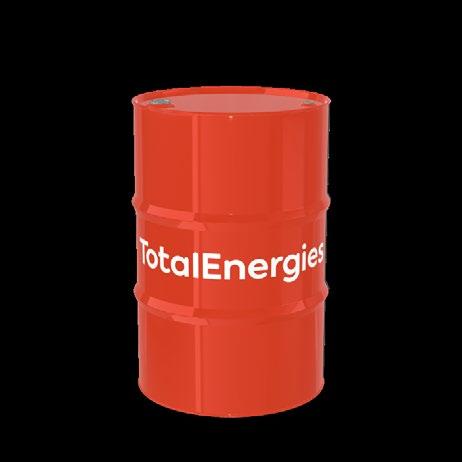
Committed to better energy, TotalEnergies is providing innovative solutions to companies in the wind sector keen to reduce their operating costs. Decrease the number of costly operations required to lubricate your gearboxes with Carter WT 320. Carter WT 320 offers exceptional service life of 10 years while improving the reliability of your gearboxes. It was formulated to provide the optimum balance between low ageing and gear longevity.

North American Clean Energy 95
Gauging the Wind
Floating lidar and new wind energy frontiers
 by Matthieu Boquet
by Matthieu Boquet
Renewable energy sources are a vital component in ensuring a sustainable future. Although we’ve understood the value of energy derived from natural sources for years, costs have traditionally made it difficult to rely on these resources. However, technological advancements have made it more cost-effective to leverage renewable energy like wind power, increasing its ubiquity by huge margins. In fact, according to the International Renewable Energy Agency, global installed wind generation capacity has increased by a factor of 75 in the last two decades. As we expand this capacity, we can continue to explore offshore wind applications, which are often rich in previously inaccessible resources.
Wind resource assessment (WRA) is a vital part of planning and building offshore wind farms efficiently, as it provides valuable insights into wind conditions, and shows what kind of equipment is needed in what locations. Fortunately, various technologies can offer reliable data for an offshore WRA, even in the deepest waters.
The Importance of Wind Resource Assessment
The wind energy sector is constantly evolving. Offshore wind farms are not only being built in deeper water farther from shore, but also on a larger scale with bigger turbines. As the wind energy industry strives to harness abundant, more robust, and more consistent offshore wind resources, floating wind turbines are also increasing in popularity for offshore measurement campaigns. All of these advancements incur higher costs, meaning the stakes are higher than ever before when choosing a location and proper equipment. Without reliable data, money and time can be wasted on inefficient projects. Therefore, a WRA must be appropriately conducted to validate any offshore wind energy project.
To get the most out of a WRA, one must employ a solution that reliably provides a thorough picture of wind conditions. Since the offshore environment presents unique challenges — which are exacerbated in environments where floating turbines could be deployed — solutions specific to this application are crucial. After all, these challenging offshore environments may have the most abundant wind resources.
The New Standard
Increasingly, lidar is becoming standard for wind measurement. Vertical profiling lidar is perfect for providing direct wind assessment, and reduces measurement uncertainty to improve project bankability. Vertical profiling lidar is a lower-cost option that can make a WRA more accessible. Scanning lidar can provide an even more complete look at real-time wind data by providing 3D spatial mapping of the wind field affecting multiple potential turbines. Employing dual scanning lidar can also increase the area that can be mapped, and the accuracy and efficiency of offshore wind assessments in areas with difficult-to-assess wind phenomena. Lidar technology is increasingly used worldwide to validate new wind farm projects.
Fixed position lidars have many benefits, but their range is such that they aren’t ideal for floating wind turbine installations, as these must take place far from shorelines. Consequently, wind farm project owners and operators will require innovative technologies to properly assess and characterize available wind resources.
That’s where floating lidar comes in.
The Floating Frontier
Floating lidar is a unique option that enables operators to deploy marinized vertical scanning lidar on buoys that support the system, as well as lighthouses, substations, and vessels, allowing for WRA in even the deepest water. Providing a rugged, versatile option specifically designed to float, floating lidar is a crucial tool where there may be no available fixed platforms. With robust casing that ensures the movement of the waves does not create errors in the data, most floating lidar instruments deliver reliable insights vital to validating the time and expense of a deep water or floating wind turbine installation.
Floating lidar was recently used on a site in Australia for precisely this purpose. Because the proposed wind farm site was distant from the shore and in very deep water, floating lidar was the perfect solution to the challenge of conducting a WRA. Deployed for two and a half years, the lidars collected a wealth of data about the environment and average wind conditions at the proposed site, confirming that the project area experiences strong and consistent winds, and is a suitable location for generating electricity from the wind. Additionally, floating lidars have been deployed in conjunction with a recent wind energy project in France. Again, the location was too challenging for other WRA tools like met masts to be deployed effectively. Floating lidar closed the technological gap, ran without using vast amounts of energy, and provided reliable insights in a timely manner. These insights helped define the capacity of future wind farms in the area, and positioned France well in a competitive European wind energy market.
Because both the Australian and French governments were interested in increasing their wind power usage, these floating lidar-enabled WRAs were a crucial step in understanding the offshore wind resources, siting and operating the wind farms, and developing the infrastructure that will lead to a more sustainable future.

As governments and policymakers across the globe focus their attention on addressing the negative impacts of climate change, renewable energy sources like wind power will be increasingly imperative to power our planet for generations to come. Wind resources must be properly assessed to ensure reliable and efficient construction of wind energy infrastructure. Technological advancements have made this process faster, easier, and more cost-effective than ever. With vertical profiling, scanning, and floating lidar solutions, wind energy will no longer seem like a costly inconvenience but a promising endeavor for good.
Matthieu Boquet is Head of Market and Offering – Wind Energy at Vaisala. In this role, he drives Vaisala’s renewable energy offerings to meet the industry’s high-level expectations while helping customers continually generate value from their projects.

Vaisala /// www.vaisala.com

WIND POWER
96 2022 SEPTEMBER• OCTOBER /// www.nacleanenergy.com
© Jacques Vapillon, Akrocean
Trusted by the Largest Wind Energy Operators World-wide.
Unlocking the Value of Wind Assets

WindESCo is the global leader in wind plant optimization, helping owners and operators turn their data into value. Our solutions are improving the efficiency, reliability and availability of wind assets at scale, resulting in $8-$10M* in additional revenue per gigawatt.
windesco.com/optimizationatscale




*5 year NPV of expected increase in revenue from Find, Fix, Measure subscription
Strength and clamping force
The New Flat Jaw Locking Pliers by Snap-on Industrial provides fastening power with its Power Ring that increases thread strength and delivers a clamping force up to 5000lbs. The Flat Jaw Locking Pliers features pinned and brazed upper jaw that ensures a superior bond between the upper jaw and the pliers body, even under extreme use; unique broaching technique that creates the sharpest teeth; oversized adjustment screw with a wide head that provides a comfortable gripping surface, making adjustments easy on hands; an adjustment screw that accepts a 5/16'' hex key for added versatility while adjusting clamping pressure; smooth and polished trigger for easy release; textured body and lever that increases the grip when working with dirty, oily hands; and bright nickel finish for a classic look and feel. The Flat Jaw Locking Pliers come in two sizes and with an optional cutter.

Innovative wrench design

Wright offers the Wright Grip 2.0 wrench design that has more steel-to-fastener contact in high-stress areas to stiffen the jaws, increase tool strength, and reduce permanent jaw spread. The new design keeps the wrench from slipping to ensure the user’s safety. Wright Grip 2.0 provides more torque with less fastener damage, distributing stress evenly over a larger contact area and away from the fastener corners. The design incorporates a series of strategically placed teeth or grooves on the insides of the wrench’s two jaws. These teeth allow for a better seating of the wrench on a fastener. One fastener corner locks into the groove so the fastener won’t slip or twist out of the wrench under load. Wright Grip 2.0 is constructed with added premium Wright alloy steel for increased strength and precision broaching for consistent quality and tolerances. Precision-placed protrusions are custom engineered for each wrench size to keep it seated on the fastener, increase torque, and reduce slippage.
Foundational American built work boot
The new Independence series from KEEN Utility introduces a work boot built with quality materials, American ingenuity, and get-it-done grit. With an abrasion-resistant, supple leather upper, the Independence series brings the performance, safety, and comfort features of KEEN Utility. Product highlights of this medium-duty boot include a KEEN.DRY waterproof, breathable membrane for dependable dryness, Luftcell midsole infused with nearly 100,000 air bubbles per cubic centimeter for all-day support, and asymmetrical carbon fiber toes which are 15% lighter than steel. The Independence series is also EH rated and features KEEN.Toughsole, an oil- and slip-resistant outsole that is light weight and durable. The Independence is part of the American Built collection, assembled in the Pacific Northwest using carefully-sourced materials from around the world. Designed to perform and built for how wearers work, the Independence series
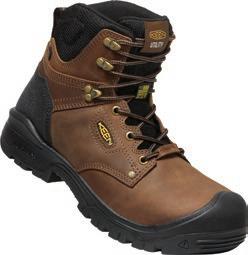
MOVING ENERGY FORWARD.
The Port of Corpus Christi has massive capabilities for wind energy, starting with a 47-foot-deep channel that is currently being dredged to 54 feet. Dockside rail loading and truck transfer can get items where they need to go, fast. Add in three Class I rail carriers (KCS, BNSF, and UP) and a new short line serviced by Watco, and you’re all set to meet wind energy demands—wherever your projects take you.

WIND POWER
98 2022 SEPTEMBER• OCTOBER /// www.nacleanenergy.com
WHERE COLOSSAL, LOW-SPEED BLADES MEET EFFICIENT, HIGHVELOCITY CARGO HANDLING

Twenty years ago, a 16-meter wind turbine blade was considered a long blade. The Port of Vancouver USA recently handled 78-meter-long blades—the longest ever imported into North America—nearly 5x longer than blades from two decades ago. Wind turbine size has increased in parallel with demand for wind components throughout North America. Any shipper’s list of port selection criteria has to include the laydown capacity to safely and efficiently handle such oversized cargo.


With its combination of favorable West Coast location, available laydown space, exceptional equipment and infrastructure and experienced labor force, the Port of Vancouver USA has a track record of success for handling wind energy components into the US and Canada.
Location and capacity
Just over one hundred miles up the Columbia River from the Pacific Ocean, the Port of Vancouver USA enables shippers to bypass the congestion of other coastal ports. In addition, the port lies at the nexus of two interstate highways and a continent-spanning rail network, providing direct access from Asia to the US Midwest and Central Canada.
In contrast to most other West Coast ports, the Port of Vancouver USA also has vast amounts of acreage available for marshaling and short-term storage of large wind components. The port’s Terminal 5 facility features more than 80 acres of laydown space immediately adjacent to the deep-draft shipping channel.
Experience and flexibility
The Port of Vancouver USA has more than 20 years of experience handling the transit of wind components bound for Eastern Washington, Oregon and Canada. In-depth knowledge of handling procedures, fixture types and other manufacturer-specific requirements allows the port to rapidly, efficiently and safely accommodate the full array of component types, sizes and designs.
Velocity and certainty
The Port of Vancouver USA offers logistics professionals the hard-to-find balance of fast and efficient cargo handling along with the peace of mind that components will be handled safely. The operators of the port’s two heavy-lift Liebherr cranes are experts in engineered and tandem lifts, plus representatives from heavy-haul trucking companies are on-site to manage cargo movement.
Considering all the advantages the Port of Vancouver USA offers the wind energy industry, it comes as no surprise that the port handles more wind energy shipments than any other US West Coast port.
Find out more at portvanusa.com
Cranes & Heavy Lift
SEE AD ON PAGE 81
From rough terrains to great heights, the equipment needed to get the job done safely and efficiently at a wind power construction site must be tough and durable. Here are some of the latest cranes and heavy lift options available today.

Deep South Crane & Rigging, LLC

Product: Heavy lift, heavy haul, heavy rigging

Description: Deep South Crane is a large heavy haul and lift company, specializing in complex turnkey jobs and providing solutions to the U.S. clean energy infrastructure buildout
Material: Ground bearing pressure
Work load limit: Up to 3000t
Swivel range: Job specific
Pivot range: Maximum main boom is 470ft, additional job can be added to increase tip height

Key Features:
• Provide solutions to the offshore wind industry including loading, staging, and reloading components from ship to shore;
• Own and operate the proprietary VersaCrane fleet with a capacity up to 3000t to support floating wind assembly.

www.deepsouthcrane.com


Liebherr USA, Co.
Brand: Liebherr
Model: LR 1700-1.0
Max boom length: 354ft (108m)
Max capacity: 770USt (700t)
Available attachments:
• 187USt (170t) Fixed Jib;
• 315ft (96m) Luffing Jib;
• Derrick with M-Wagon or Vario Tray;
• Hydraulic V-Frame for Vario Tray Adjustment.
www.liebherr.com

Modulift UK, Ltd.
Product: Spreader beams, lifting beams, and frames
Description: Located in the UK and with a global distribution network, Modulift are a manufacturer of high quality modular spreader beams, frames, and custom designed lifting beams and accessories. Modulift’s standard products are DNV Type approved up to 2000t capacity and are designed and manufactured in the UK. Modulift can offer a full engineering support package including design review, detailed rig drawings, and FEA analysis.
Material: Steel
Work load limit: 5000t
www.modulift.com


Zoomlion North America
Brand: Zoomlion
Model: T600-32R
Max boom length: 279ft (85m)
Manitowoc Cranes
Brand: Manitowoc
Model: MLC3000 with Wide Boom Plus kit
Max boom length: 429.8ft (131m)
Lampson International
Brand: Manitowoc
Model: 16000
Max boom length: 310ft (94.5m)
Max capacity: 440USt
Available attachments:
• Luffing Jib;
• Fixed Jib;
• Wind Attachment.
www.lampsoncrane.com
Tadano America Corporation
Brand: Tadano
Model: CC 38.650-1
Max boom length: 561ft (171m)
Max capacity: 715USt (650t)
Available attachments:
• Boom Extension: 39.4ft to 118.1ft (12m to 36m), 78.7ft to 315.0ft (24m to 96m);

• Boom Booster extends system length to 600ft.
www.tadanoamericas.com
Max capacity: 70,548lbs (32kg)
Available attachments:
• Anti-collision systems;
• Self-climbing capabilities. www.zoomlion-na.com
Max capacity: 386USt (350t)
Available attachments:
• Boom insert for added flexibility and increased reach.
www.manitowoc.com
Leavitt Cranes
Brand: Kroll
Model: K1650L
Max hook height: 589ft (179.5m)
Max capacity: 135t (297,000lbs)
Available attachments: Yes
www.leavittcranes.com
WIND PRODUCT SPOTLIGHT: CRANES & HEAVY LIFT
100 2022 SEPTEMBER• OCTOBER /// www.nacleanenergy.com
Transportation & Logistics
SEE AD ON PAGE 98
With all of the equipment, carriers, size, and specialized handling requirements, getting all of the right turbine components to the right project sites for construction can be a challenge in the wind industry. Safety and efficiency are important keys to ensuring projects and timelines run smoothly. Here we focus on some of the top Transportation & Logistics companies in the industry that provide the specialized services required for getting all of those wind power parts, components, and machinery where they need to be for a successful wind farm.
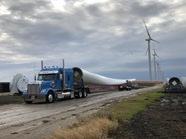
82
Key Features:
• The Port’s new Nueces River Rail Yard features 8 tracks each 8500ft long to accommodate 8 unit trains simultaneously;
• Three Class-1 railroads directly connected to the Port’s interchange yard and railroad system via short line railroad company;
• Dockside rail loading and truck transfer capability;
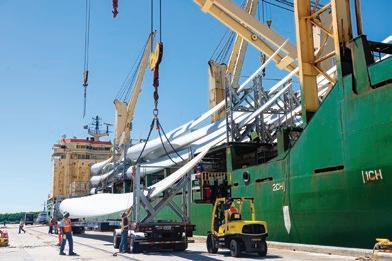
• Quick access to US 181 and other highways, and direct connector to Interstate 37 via the Joe Fulton International Trade Corridor;
• Home to the strongest open wharf on the Gulf of Mexico portofcc.com
Port Corpus Christi
Services: Public docks, storage and warehouses. Available land for long-term lease. With ample covered and open storage, this versatile, modern terminal is suitable for projects, roll-on/roll-off cargo, and other general and breakbulk cargoes including dockside rail or truck transfer capability.
Min/Max Loads/Tonnage: 122,000ft2 of shipside covered storage; 48-foot wide canopy over double rail tracks at the rear of Dock 9 warehouse; Roll-On/Roll-Off ramp designed to handle bow or stern ramp vessels; and over 120 acres of open storage and industrial development area.
Location/Logistics: Located on the Texas Gulf Coast, Port of Corpus Christi has a straight and uncongested ship channel; limited low visibility days, and provides access via three Class-1 railroads and Interstate highways to the US, Canada, and Mexico.
Qualifications: Port of Corpus Christi is a modern Port with diverse cargo handling capabilities and home to more than 50 industrial companies and Foreign Trade Zone #122. The Port attracts major investments from the US and foreign direct investments for construction of manufacturing facilities. The Port maintains an Environmental Management System, ISO 14001 certification, and is Green Marine certified.
Port Milwaukee
Services: Breakbulk and project cargo handling port with 330,000 sqft. of covered warehouse space


Min/Max Loads/Tonnage: Maximum capacity 300t
Location/Logistics: Positioned on the western shores of Lake Michigan and strategically located in the industrial center of the US. Access to international markets via the St. Lawrence Seaway system and the Gulf of Mexico via the Mississippi River inland system. Quality cargo management services and efficient terminal handling resources provided by highly-trained, safety oriented staff with a focus on superior customer support.
Qualifications/Certifications: Green Marine
www.portmilwaukee.com

C.H. Robinson Project Logistics
Services: C.H. Robinson Project Logistics has experience in developing and executing successful logistics plans for the transportation and management of heavy-lift and over-dimensional equipment, from pick-up to final site. After a proactive analysis of all requirements, they help their clients develop solutions and contingency plans to help ensure shipping schedules are consistently met. They offer several services, including: detailed route planning; part/full charters; aircraft chartering and emergency rush air freight; accurate documentation; timely status reports; and consulting services for complex letters of credit and bid documents. Their experienced team of professionals is available onsite at global locations to manage the successful completion of technically demanding projects.
Location/Logistics: Worldwide www.chrobinson.com
Port of Lake Charles
Services: Docks, cargo terminal, bulk terminals, industrial canal, industrial park Min/Max Loads/Tonnage: Scalable
Location/Logistics: Central U.S. Gulf Coast/Calcasieu Ship Channel
Key Features:
• The nation’s No. 12 deepwater port district, as measured by U.S. Army Corps of Engineers tonnage statistics;
• Connects to the central Gulf of Mexico via the Calcasieu Ship Channel, a 68-mile long, deep-draft commercial waterway;
• The port district owns the City Docks, a general cargo terminal, three bulk terminals, Industrial Canal property, and Industrial Park East property.
www.portlc.com
We’re the largest pure-play provider of logistics, field support, and technical repair services to the renewable energy industry.




WIND SERVICE SPOTLIGHT: TRANSPORTATION & LOGISTICS
SEE AD ON PAGE
North American Clean Energy 101
TPANDL.COM • GSSWY.com • renewenergy.com • airwayservicesinc.com Learn More at Takkion.com
SEE AD ON PAGE 101
Transportation Partners & Logistics
Services: TP&L provides comprehensive transportation and logistics management services, including transportation management, quality management, distribution services, and product maintenance to the renewable energy and industrial sectors across North America


Location/Logistics: Alabama, Colorado, Kansas, Nebraska, North Dakota, Oklahoma, South Dakota, Texas, and Wyoming
SEE AD ON PAGE 99
Port of Vancouver USA
Services: The Port of Vancouver USA specializes in handling wind energy cargo. It provides the equipment, facilities, space, trucking clearances, and labor needed to safely and efficiently move projects of any size through the facility.

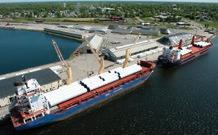
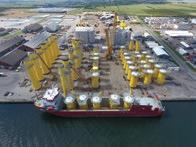
Key Features:
• Supporting rail, truck, crane, rigging, and distribution centers, TP&L's team of in-house engineers are top-load certified for any logistics and transportation needs;
• From port to pad, TP&L delivers economically, safely, and on time by managing every step of the supply chain;
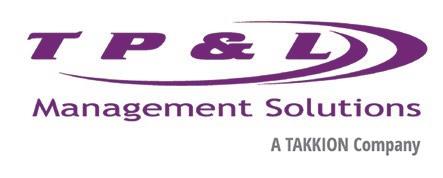
• Serving a variety of OEM's, project developers, and supply companies, TP&L's services can be introduced anywhere along a supply chain;
• TP&L's focus is largely on quality and they continually evaluate every step of the process to ensure high quality results and high satisfaction. www.tpandl.com
Martin Bencher Group
Services: International freight forwarding, project forwarding, and project management focusing on solutions to move oversized freight, with a focus on risk management, and cost procurement
Min/Max Loads/Tonnage: Unlimited
Location/Logistics: Domestic and international movements
Qualifications/Certifications: ISO 9001, ISO 14001, ISO 45001 www.martin-bencher.com
Emmert International
Services: Engineered transportation and rigging services specializing in wind components, both on and off highway

Min/Max Loads/Tonnage: 50T to 5000T

Location/Logistics: USA
Qualifications/Certifications: SO 9001, 14001 and 45001 Certified www.emmertintl.com
Qualifications/Certifications: Port of Vancouver USA has handled wind energy components for over 20 years. Long-term relationships with their customers have helped them develop the port’s facilities and make investments in the right equipment and training to respond to the modern challenges of moving all wind energy components.
Key Features:
• 80 acres of open laydown area;
• Two Liebherr mobile harbor cranes;
• Handling more wind energy than any US West Coast port;
• Trucking clearance for up to 78m long wind blades with plans to clear longer;

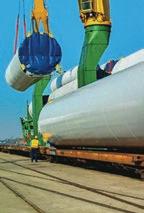
• Bonded storage. www.portvanusa.com
XL Specialized Trailers
Services: Design and manufacture of engineered and customized trailers, heavy haul transportation www.xlspecializedtrailer.com
Min/Max loads/tonnage: Two Liebherr mobile harbor cranes can operate at any breakbulk berth and have a lifting capacity of 140 metric tons each; 210 metric tons together. Terminal 2 offers a Paceco crane with a 51-metric-ton capacity and a 115foot outreach.
Location/Logistics: 106 river miles from the Pacific Ocean on the Columbia River. The BNSF Railway, Union Pacific Railroad, Canadian National Railroad, and Canadian Pacific Railroad have direct unit train access from mainline corridors. Primary freight arterials of the U.S. Interstate Highway network run north, east, and south.
Port of Ogdensburg, New York
Services: Wind turbine generator logistics
Location/Logistics: Ogdensburg, New York www.ogdensport.com
Totran Transportation Services
Services: Heavy haul transportation, project management, route feasibility study
Min/Max Loads/Tonnage: 150 USt
Location/Logistics: Calgary, AB and Conroe, TX
Qualifications/Certifications: SC&RA, CANWEA, AMTA, Comply Works, IS Networld www.totran.ca
CN

Services: CN provides shipping by rail and logistics services to get wind energy components to their destination safely and damage-free. They work with connecting carriers to design efficient routes throughout North America.
Min/Max Loads/Tonnage: Weight limits vary by equipment used
Location/Logistics: North America www.cn.ca/dimensional
Port of Stockton
Services: With 24/7 access to freight, the Port of Stockton is designed to quickly get cargo moving with flexible solutions for the renewable energy market. These include stevedoring, warehousing, inventory management, and transloading. Served by the UP and BNSF railways, the Port has 2.5 miles of on-dock rail with ample laydown area.
Min/Max Loads/Tonnage: The Port of Stockton has handled a wide variety of renewable energy shipments. It offers services for breakbulk and heavy lift shipments both large and small. With a 24/7 gate, they offer unique and flexible results for critical logistical issues.
Location/Logistics: Located in the extended San Francisco Bay Area, the Port of Stockton provides instant access to less congested highways including I-5, CA-99, and CA-4, and is an hour away from I-80.
Qualifications/Certifications: The Port of Stockton has been in operation since 1933 and handles a variety of cargo for dozens of clients. www.portofstockton.com
WIND SERVICE SPOTLIGHT: TRANSPORTATION & LOGISTICS
102 2022 SEPTEMBER• OCTOBER /// www.nacleanenergy.com
Deep South Crane & Rigging, LLC
Services: SPMTs, roll on/roll off solutions, jacking, skidding, gantries, steel matting, bridge systems, rocking bolsters, transport beams, and custom solutions
Location/Logistics: USA
Qualifications/Certifications:
Safety certified
Key Features:
• The Deep South team can custom-design and fabricate a solution for any project;

• Specialty transporters by Scheuerle, Cometto, Nicolas, and Goldhofer.
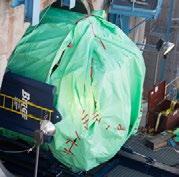
www.deepsouthcrane.com
Duluth Cargo Connect
Services: Duluth Cargo Connect provides seamless cargo handling, storage, distribution, and transportation logistics services for breakbulk, heavy-lift, and other project cargoes moving in and out of North America's heartland via the Port of Duluth.

Min/Max Loads/Tonnage: No minimum or maximum.
Qualifications/Certifications: 2019
Heavy Lift Port/Terminal Operator of the Year, two-time winner of the Railroad Industrial Clearance Association Port of the Year Award in recognition for heavy lift performance, BNSF Premier Transload Facility. www.duluthcargo.com
ATS
TRANSPORTATION,
MAINTENANCE STORAGE & CONSTRUCTION
STOCK ROLLS READILY AVAILABLE • VOLATILE CORROSION INHIBITOR
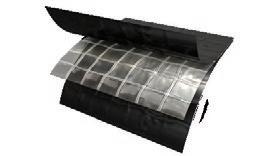
CUSTOMIZATION AVAILABLE • CONTINUOUS PROTECTION
PUNCTURE
Port of Longview
Services: Breakbulk cargo handling port, secure indoor and outdoor storage, 9 marine terminals, and customized services.
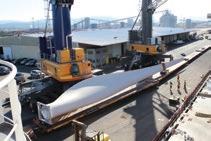
Min/Max Loads/Tonnage: 140 MT tandum lift
Location/Logistics: The Port's strategic location as a full-service operating port on the Columbia River in Washington State, a program of unique cargo services, an outstanding workforce, and fully equipped marine facilities make it an efficient and reliable terminalhandling facility.
www.portoflongview.com
Services: ATS is an asset-based carrier for wind energy transportation.
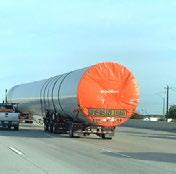
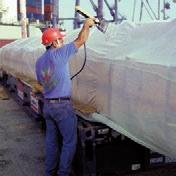
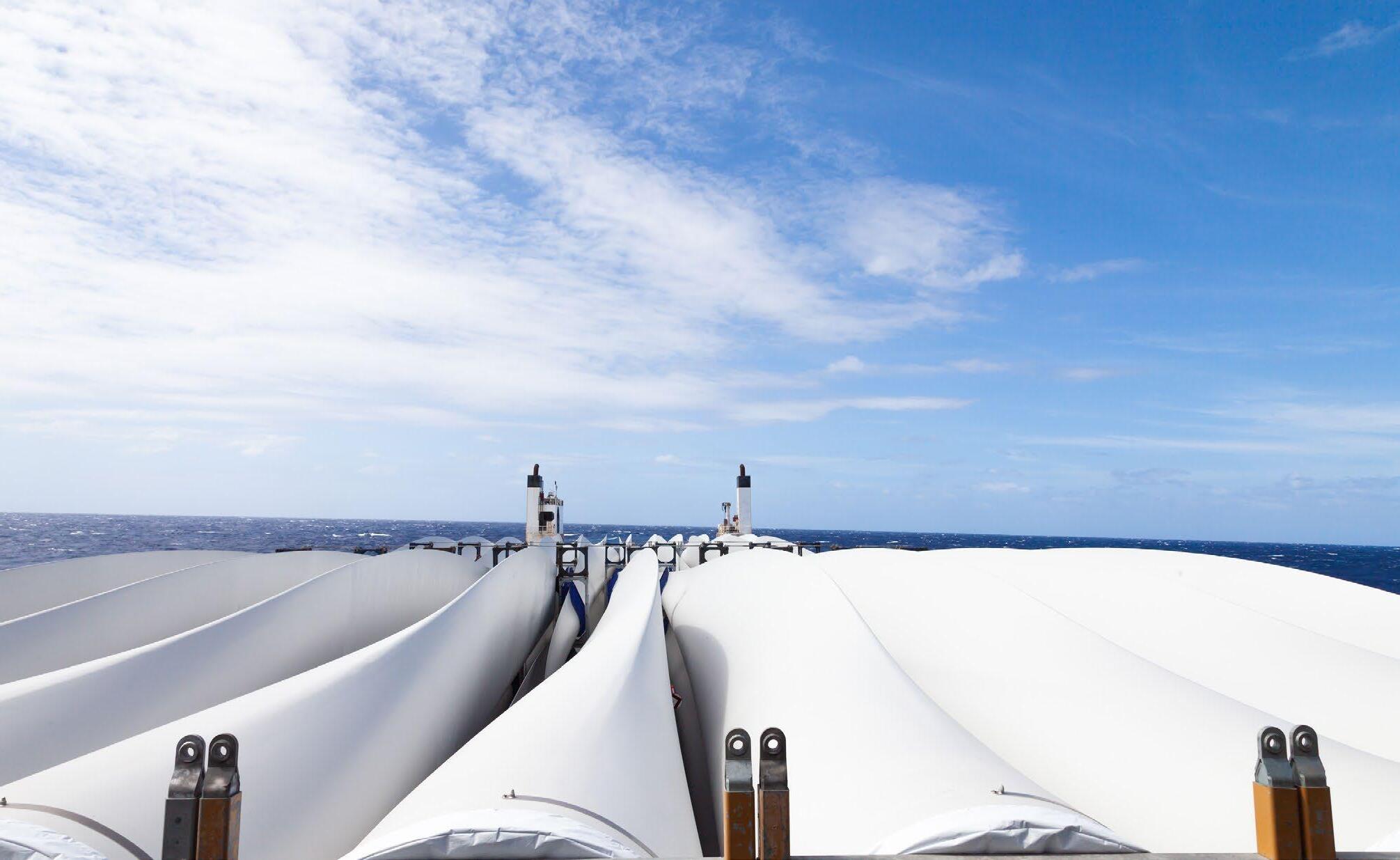


Min/Max Loads/Tonnage: Can do loads up to 155,000lbs for assets, and significantly more with brokerage.
Location/Logistics: Continental US, Alaska, Hawaii, Puerto Rico, Canada Qualifications/Certifications: 15+ years' experience in wind. Have executed hundreds of projects.

www.atsinc.com

WIND SERVICE SPOTLIGHT: TRANSPORTATION & LOGISTICS
SEE AD ON PAGE 81
North American Clean Energy 103
SHRINKABLE • UV
800.231.6074 • GRIFFOLYN.COM APPLICATIONS TURBINE COVERS • GENERATOR COVERS TRANSFORMER BAGS • ON-SITE STORAGE BLADE COVERS • OUTDOOR TRANSPORTATION WIND FARM CONSTRUCTION TRANSPORT CONTAINER COVERS DIVISION OF REEF INDUSTRIES, INC. GRIFFOLYN® ©2022 Reef Industries, Inc. Griffolyn® is a registered trademark of Reef Industries, Inc. 08/22. ENERGY, PROTECTED. GRIFFOLYN HAS YOU COVERED.
RESISTANCE • WATER RESISTANT HEAT
STABILIZED
How V2G Reduces Emissions

 by Aaron Huber
by Aaron Huber
V2G (vehicle-to-grid) technology is drawing a lot of attention in the electric vehicle (EV) charging world, but perhaps you are not exactly sure what it is and how it works. In simple terms, V2G is a bidirectional connection between an electric vehicle and the power grid that enables a two-way flow of power, to either charge the EV from the grid or discharge the vehicle, feeding power back into the grid.
Market signals from the grid are vital in deciding when to charge and when to put power back. During peak Time of Use (TOU) demand, the grid could draw from the stored energy in the EV battery to help meet demand, versus starting a peaker plant or other battery energy storage solution.
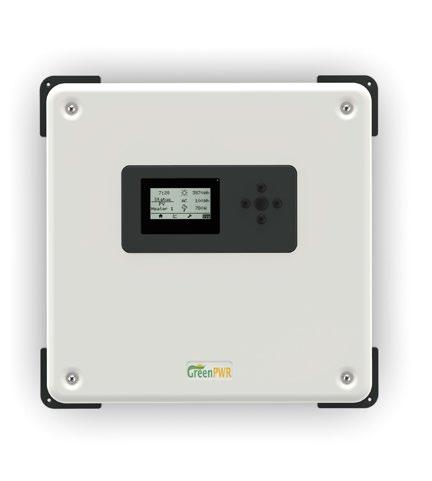
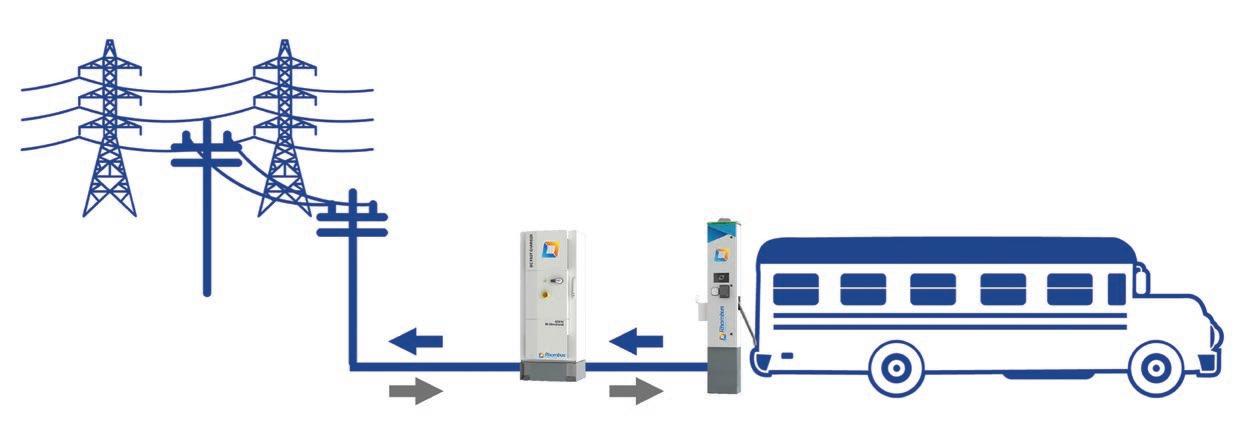
Strategically planning when to draw power from the grid will be crucial element for maximizing renewable sources and lowering emissions. Fleet vehicles are often uniquely suited to V2G applications due to their predictable usage patterns. Unused stored energy in their batteries can be utilized to either supply energy back to the grid during peak demand periods (an alternative to starting peaker plants), or during times when vehicles need a charge during a high TOU rate, while idle vehicles are available for energy transfer. This is the concept of peak shaving. Overnighting those vehicles that are off shift allows them to recharge when energy costs are at their lowest. Predictable charging patterns provide an ideal condition for V2G applications by using stored energy in batteries, while
planning enough time to charge vehicles again for the next day fully. School buses are a prime example of a fleet with predictable charging patterns, so this article will focus on the environmental impact of electrifying the nation’s yellow buses.
Lower Greenhouse Gas Emissions
With 480,000 buses carrying up to half of the nation’s children to school and back, school buses are the largest form of public transportation in the United States. Using V2G technology over the lifetime of a bus, fleet operators could eliminate an average of 1,000 metric tons of CO2-equivalent greenhouse gas per bus. This is the CO2 equivalent of taking 19 cars off the road (cars typically emit 4.6 metric tons of CO2 annually, for an average of 12 years).
One Bus Produces the Equivalent of 19 Passenger Cars Worth of CO2 Emissions, V2G can also eliminate air pollution from fossil fuel power plants working over capacity to accommodate high power demand fluctuations. Utilities rely on power from non-

ENERGY STORAGE
104 2022 SEPTEMBER• OCTOBER /// www.nacleanenergy.com SunHopper™-D greenpwr.com Store More Energy PV Domestic Hot Water No interconnection limits or hassles Uses weather data for a smart and reliable AC backup Works with existing electric immersion heater tanks- no sensors Smart Weather Dedicated Array Easy Installation See us at RE+ Booth 2966
renewable energy sources to meet demand during peak hours. Offsetting this power demand by using stored EV power can significantly reduce CO2 emissions.
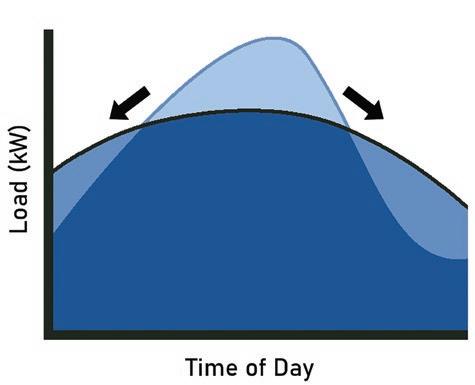
In a Columbian University study titled “Vehicle-Grid Integration in California: A Cost-Benefit Comparison Study,” Francisco Galtieri concluded that electric buses using V2G could mitigate energy production from natural gas “peaking” power plants. Galtieri states that fleets providing power for peak shaving can potentially manage energy demand and eliminate short-term spikes. His model proposes that a fleet of 1,550 electric buses could reduce CO2 emissions by 5,500 tons over five years, significantly reducing local air pollution.
Maximize Renewable Energy
Using the stored power in EVs, school bus fleet operators can play a key role in largescale integration of renewable energy sources (such as solar and wind) into the power grid; V2G-capable commercial vehicles can absorb renewable energy when it’s available, and discharge it back into the grid when not accessible.
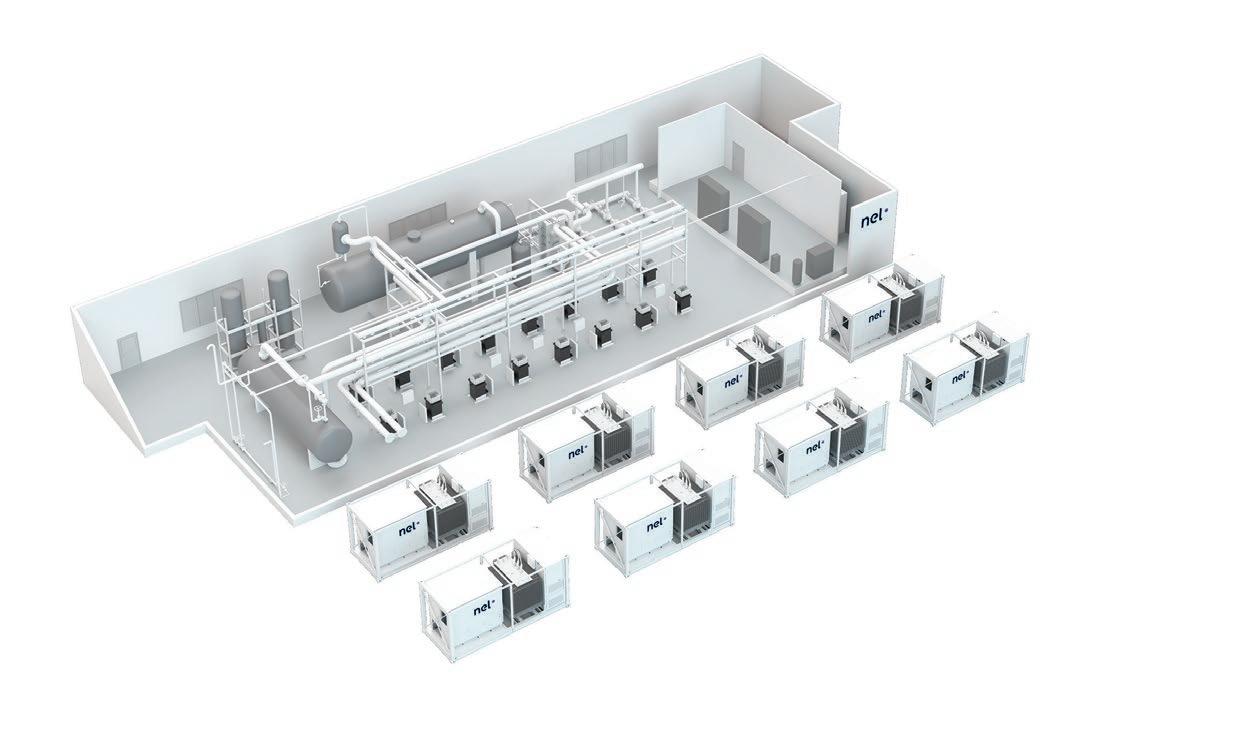
In 2018, the Environmental Research Letters published a study titled “The Neglected Social Dimensions to a Vehicle-to-Grid Transition: A Critical and Systematic Review.” The study analyzed the effect of V2G if applied to light-duty motor vehicles registered in the PJM Interconnection territory, the largest US power grid operator. The study concluded that “on a system operator scale, introducing V2G increases renewable energy development by 51 GW in the PJM Interconnection, an increase of nearly 30 percent compared to scenarios without V2G.”
V2G Infrastructure Considerations

Because V2G bi-directional charging is relatively new to the industry, commercial fleet operators must consider several factors when planning a charging infrastructure. Equipment is the first consideration. Fleets must be equipped with vehicles and Electric Vehicle Supply Equipment (EVSE) that can support bi-directional charging. Operators will need UL 1741-SA certified Level 3 DC fast chargers (DCFC) that run on 480 3-phase power.
Fleet operators should also reach out to a utility rep to establish an interconnect agreement that ensures they will buy power back. Utility reps will provide information about potential upgrades that may be required because of the new loads from EVSE, such as a new service line or an upgraded distribution transformer. Your local utility may also offer EVSE rebates to reduce the capital cost, so it’s recommended that you contact a rep early in the V2G infrastructure planning process. Other considerations include selecting a utility aggregator, determining site layout, future planning, and steps to mitigate installation costs. Once the system is in place, both fleet operators and their local grid will reap the long-term benefits afforded by this novel technology.
Aaron Huber is Marketing Manager at Rhombus Energy Solutions, which is developing technology and products for lower-cost, smaller form-factor silicon carbide-based systems, and switch-on/switch-off technology for efficient fleet charging systems.
Rhombus /// rhombusenergysolutions.com
Diagram Illustrating Shifting Load Away from Peak Hours Using Peak Shaving
North American Clean Energy 105
Growing the Lithium Industry in North America
 by Philip Gross
by Philip Gross
There are 300 electric car manufacturers in China, according to the latest research from Xinhua. It dominates the global EV market, and, in turn, dominates all aspects of the lithium-ion battery supply chain. In fact, there’s so much lithium in China that government regulators have capped production, yet it continues to control and dominate the global lithium market.
China is 10 years ahead of the world in every respect. However, now that the transition to electric vehicles is in full swing across Western Europe and North America, the demand for lithium has increased, and will continue to do so.
The world does not lack in actual lithium; it lacks mineable lithium. It also lacks the processing facilities to convert 6 percent lithium spodumene into a usable raw material (hydroxide or carbonate) for the battery industry. In North America today, there isn’t an integrated lithium producer or significant lithium mining. There has been lots of movement to remedy this, but solutions are still years away, and many of them will die on the drawing board.
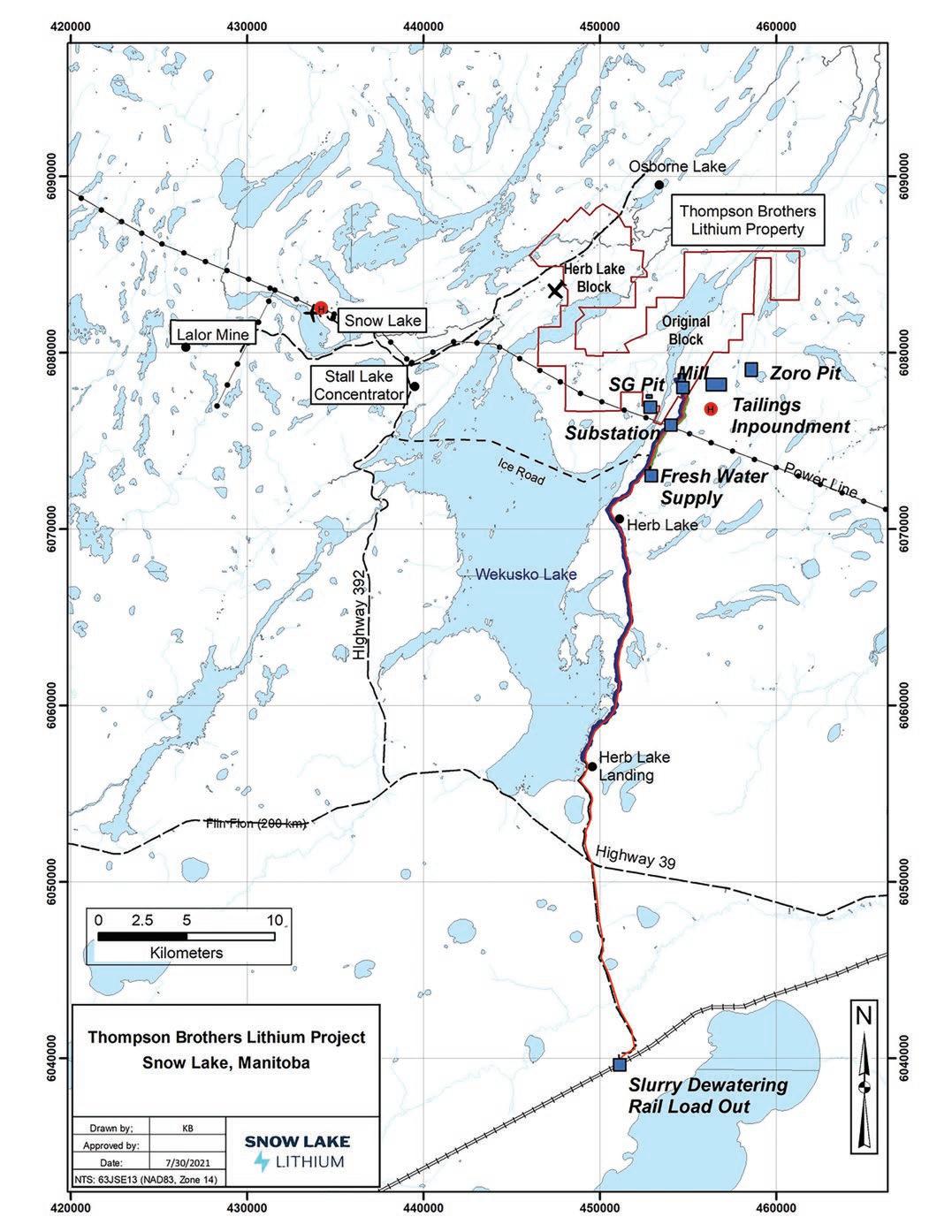
Whilst the US Geological Survey estimates China to be fourth in the world for lithium reserves (1.5m tons of lithium content), it has more than 70 percent of worldwide capacity for the supply of lithium-ion batteries. The United States is currently over-reliant on China for battery production, which is a risk on many levels.
Where does this leave North America, the birthplace of the massproduced car? Can it maintain its leading position over the course of the next decade and beyond?
In June 2021, The White House announced plans to secure an end-to-end domestic supply chain for advanced batteries. President Biden even said, “we need automakers and other companies to keep investing here in America, and not take the benefits of our public investments and expand electric vehicles and battery manufacturing abroad.”
PROVEN ENERGY STORAGE

US automakers are also recognizing the need to invest in North America battery and lithium firms. Only recently have we seen investments and subsequent announcements from household auto brands, promoting plans to build one of the world’s largest battery facilities in Ohio, and potentially building two more plants in the next four years. We have also seen plans from a big global tech conglomerate to boost production capacity of batteries for a well-known US automaker in Nevada, in an investment expected to exceed $100 million.
The issue automakers have in the United States is not just sourcing lithium, but also processing the raw materials.
Those who count on wind or solar power systems to run their businesses, homes − and lifestyles − turn to Crown for renewable power storage solutions. We’ve been at the forefront of energy storage innovation since 1926 and offer tough, earth-friendly and budget-wise batteries to meet the needs of today’s RE system owners.



Check out our RE Battery Basics video series and contact us for your energy storage needs. Visit www.crownbattery.com/webinars.
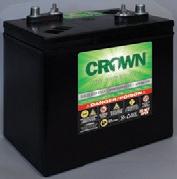
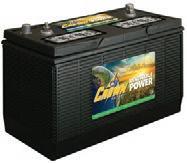
ENERGY STORAGE
WHEN YOU RELY ON RENEWABLE ENERGY, THERE’S NO ALTERNATIVE TO 95 YEARS. 100% PERFORMANCE. ON GRID OR OFF. CONTACT US FOR DETAILS: +1.419.334.7181 commercial@crownbattery.com www.crownbattery.com
mined, to the next level of the value chain. For this to work, a sustainable and fully integrated lithium hydroxide processing plant will need to be built in North America. This will allow tens of mining operations in Canada to actively pursue production of lithium for the North American auto industry.

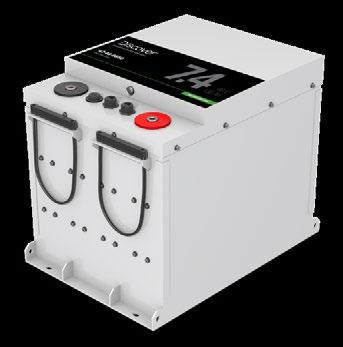




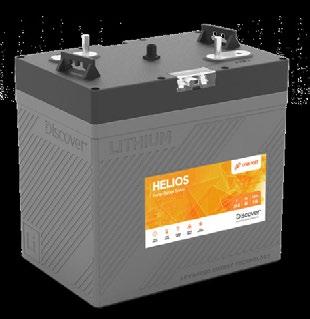

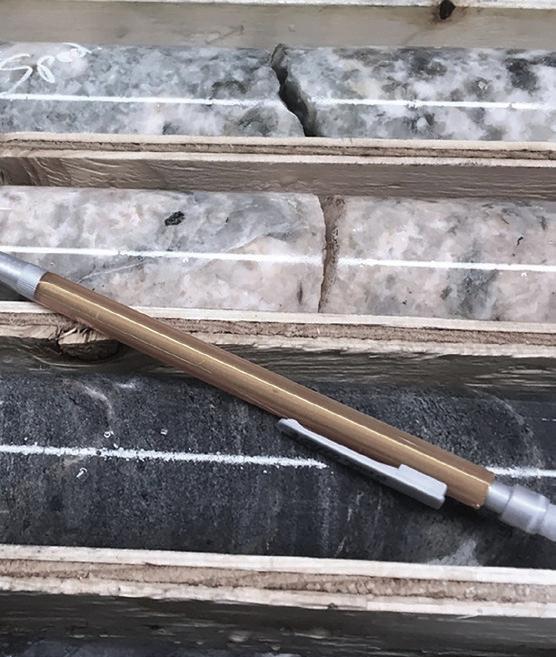
With more than two decades of experience advising resources and mining operations, Philip Gross has covered everything from base metals and precious metals, to hydrocarbons and agriculture. Philip has led a number of metals and mining investment firms and has spent a large portion of his career developing mining investments as an investor, CEO, Exec Director, and non-Exec Director for both public and private ventures across the globe, with a particular focus in North America, Europe, and Australasia. As CEO of Snow Lake Lithium, his ambition is for the company to become the first fully integrated, carbon-neutral lithium provider to the North American electric vehicle market.
snowlakelithium.com

North American Clean Energy 107 NEW PRODUCTS! Visit us at RE+ in booth 3180. discoverbattery.com #7 -13511 Crestwood Place, Richmond, BC, V6V 2E9, Canada info@discoverbattery.com + 1.778.776.3288 Unlock the full potential of Discover Lithium Batteries by enabling the BMS to optimize and dynamically manage the charging configurations of inverter-chargers. home backup power with indoor and A robust lithium solution for residential off-grid solar and tiny home power applications. A powerful lithium energy storage system for residential off-grid solar and whole home backup power.
Transitioning to Electric Equipment

 by Lars Arnold
by Lars Arnold
With electric construction equipment now hitting the market, many people have questions. Which machines can be electric? Do electric machines have the same power as diesel? What kind of charging and runtime are we talking about here?
What machines can even be electric?
While some machines, like aerial lifts and forklifts, have been electrified for years, electric earthmoving equipment, like excavators and wheel loaders, are just now becoming commercially available. So far, they’re mostly compact models because of current battery capabilities.

As advances continue in research, development, and charging infrastructure, battery power and battery life will improve to allow for the electrification of bigger machines (such as excavators closer to the 20-ton range). Electrification is under the spotlight now, so we expect great advancements in the not-so-distant future.
What is required to charge an electric compact machine?

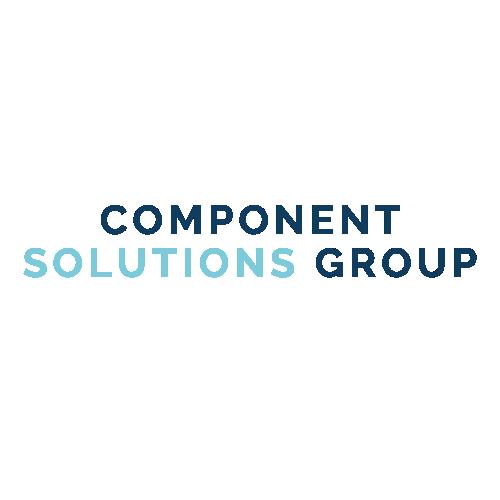
The more power you can put in, the faster it will charge — kind of like filling your car

As an example, an electric compact wheel loader charging on a 240-volt, Level 2, AC setup should be done in about six hours, empty to full. A common household outlet would do the job in 24 hours.

There are also options like off-board fast chargers and solar-powered chargers that will gain popularity in the coming years. What I would not suggest is charging with a gaspowered generator, because that defeats the main purpose of electric equipment: to be more environmentally friendly.
How long will it hold a charge? Will that affect my workday?


It depends. A compact wheel loader or excavator can be used in so many ways. Different applications can affect how long the batteries last. For most models out there today, you can expect four to six hours of actual work. It’s important to remember that, while a crew

ENERGY STORAGE
Sustainable Products. Sustainable Partnership. Going Green Together. www.componentsolutiongroup.com sales@componentsolutionsgroup com | (937) 433-7200 Design Assist Eng. Cable Management Fastening Systems Precision Machining Assembly Global Sourcing


The Story Begins with Energy Throughput
by Todd Hayes
Energy Throughput gives the amortized energy in and out of a battery over its entire life cycle. Energy Density is important, but not as important as Energy Throughput.

What is Energy Throughput? Add up all the cycles a battery is capable of. For a back-of-the-envelope comparison, use 10,000 for LFP, and 2300 for NMC. Multiply this by the sum of energy for all those individual cycles. That is the more valuable metric for a battery instead of energy density. Energy Density and related metrics of rated capacity of batteries only apply - in general - to the battery at the Beginning of Life (BOL). At the End of Life for a battery (EOL), we generally calculate this as when the energy capacity falls below 80 percent of rated capacity. There are, of course variations in the calculations, but the 80 percent figure is a good rule of thumb, and works well for business calculations such as return on investment, and amortization over a certain period of time for long term investing.
For example, your phone battery will die in 2-3 years if it is NMC, yet it will last at least three times that with LFP. The only thing you notice is that each charge does not last as long, but the battery life is greatly extended past 2-3 years. The simplified graph shown gives an illustration of the phenomenon.
NMC at beginning of life looks better than LFP. However, NMC declines at a rapid rate, and LFP soon overtakes NMC in the long run.
EV manufacturers know that the LFP battery will last at least 3 times longer than the NMC. Thus, when pack replacement comes around, it will be further into the future than with the NMC. Thus, the amortized cost per kilowatt hour over the life of the pack is better with LFP, even though, at first glance, the energy density of the NMC beats LFP. Would you rather replace your EV battery after 10 years, or after 3 years? That is the offering with LFP.

It must be noted, however, that there are still applications for NMC. Specifically, in performance vehicles where the life of the battery is not expected to go beyond 2-3 years. There are “hot rods” or racing vehicles that fall into this category. Also, some luxury brands may not be as concerned with the short battery life of the NMC chemistry, when the owner can expect to upgrade more often to get the expected luxury performance of the vehicle.
John Goodenough, a researcher at the University of Texas, invented the LFP cell around 1996. Owners of the patents included A123, Hydro-Quebec, and the University of Texas. The main patents expired in 2017, according to the US Patent office.
At the time of the patent expiration, China activated dozens of gigafactories that produced LFP in unheard of quantities. This action by the Chinese factories made LFP affordable across the board internationally. We can now purchase consumer LFP batteries off Amazon thanks to these Chinese gigafactories. One factor that influenced this decision by the Chinese was that China decided to convert all their buses to electric around that time, and LFP was one way of making this happen on
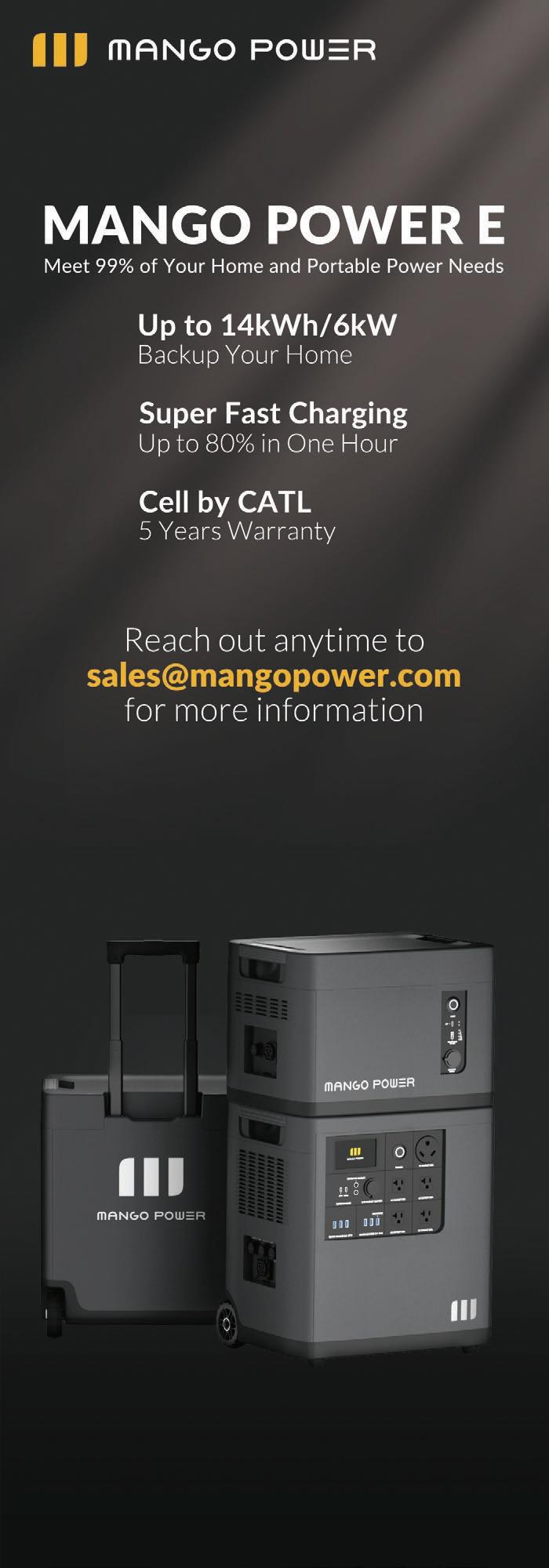

ENERGY STORAGE
110 2022 SEPTEMBER• OCTOBER /// www.nacleanenergy.com
the cell level. Also, for EVs in China, NMC was not allowed because of safety reasons, and so LFP was the obvious choice EV manufacturers began to integrate LFP into their EV architectures in 2020 and 2021. Before this point, the Energy Storage System (ESS) markets were the only big players purchasing the LFP cells. Large players in the EV market are converting their fleets to LFP.
The EV players chose to integrate LFP in their systems around 2020 and 2022, because the remainder of certain patents for the technology expired in Europe in 2020, and in North America in 2021. Thus, factories around the world began an enormous effort to make available the LFP cell for the EV market. Today, the EV manufacturers account for approximately 80 percent of the LFP demand. Within a two-year period, most of the major the EV

manufacturers switched from NMC to LFP.
How did this play out? This extreme change in the world market for cells completely disrupted the supply chains. The ESS market had integrated the LFP cells in various designs for over a decade. The above graph explained why. Amortization of assets over a long time period is extremely important in utility applications. Utilities make calculations in terms of decades, and, preferably, in terms of three decades (where possible) for expensive and large grid assets.
Furthermore, within a chemistry, there are different electrolyte recipes for a power dominant application versus an energy dominant application. For the ESS world, the focus is on energy dominant chemistries. For the EV world, the focus is on power dominant chemistries, since there are major current spikes in any EV drive cycle. ESS current draw curves tend to be more stable than the EV drive cycle models. Certain suppliers have dedicated production lines for ESS electrolyte recipes; long term partners can secure dedicated ESS LFP production lines for these special business relationships. However, since 2020, EV cells have been sneaking their way into the ESS supply chain, due to the enormous increase in demand.
Up until 2020 ESS manufacturers enjoyed a very stable cell market. The EV players came in and, within a two-year period, took up around 80 percent of the supply chain that was formerly the domain of ESS. This is a very big phenomenon. Today, ESS accounts for 13 percent of LFP demand. This is a major reorganization of the entire global supply chain for battery cells. IHS Market projects that, by 2025, EVs will have 90 percent of the LFP cell demand.
Projections of pricing predict that the price increases will not stabilize until 2024, when several LFP factories begin to come online and relieve the pressure of the supply chains due to the exponential increase in demand from the EV market.
At the moment, those in the ESS business without long term

supply agreements cannot find LFP cells. This means that hose just entering into the ESS market cannot source LFP cells. There are certain manufacturers that are focused on the ESS market for their production lines and supply chains. Those in the ESS business that have nurtured the relationships with their cell suppliers, who are dedicated with allocated production lines for ESS with the proper LFP electrolyte recipes, are in a better position to continue supplying their customers.
Those who have developed these close, and established relationships with top tier global suppliers have lead times of a couple of months. Those without these close relationships have lead times out 12-13 months. Those using LFP with dedicated ESS suppliers, combined with proprietary software management tools, are in a good position to avoid disruption in their supply chains with LFP cells.
The energy storage world has been revolutionized within the last 5-10 years. The electric vehicle world has also been revolutionized. Now, as opposed to 5-10 years ago, we are at the stage where such industries are profitable. For those of us who have participated in these industries over the past 20 years, it has been a long time coming. All of our efforts over the years have now paid off. It is indeed chaotic at this moment, but things will settle down in about 2 years or so. By then, our industry will have been established as something total new and profitable, and also a major player on the world economic stage.
Todd Hayes is President and CEO of e-On Batteries, which designs, assembles, and integrates Smart Battery Energy Storage Systems (SmartBess), with a focus on long-term reliability and safety throughout the United States, and beyond.
e-On Batteries /// www.e-onbatteries.com
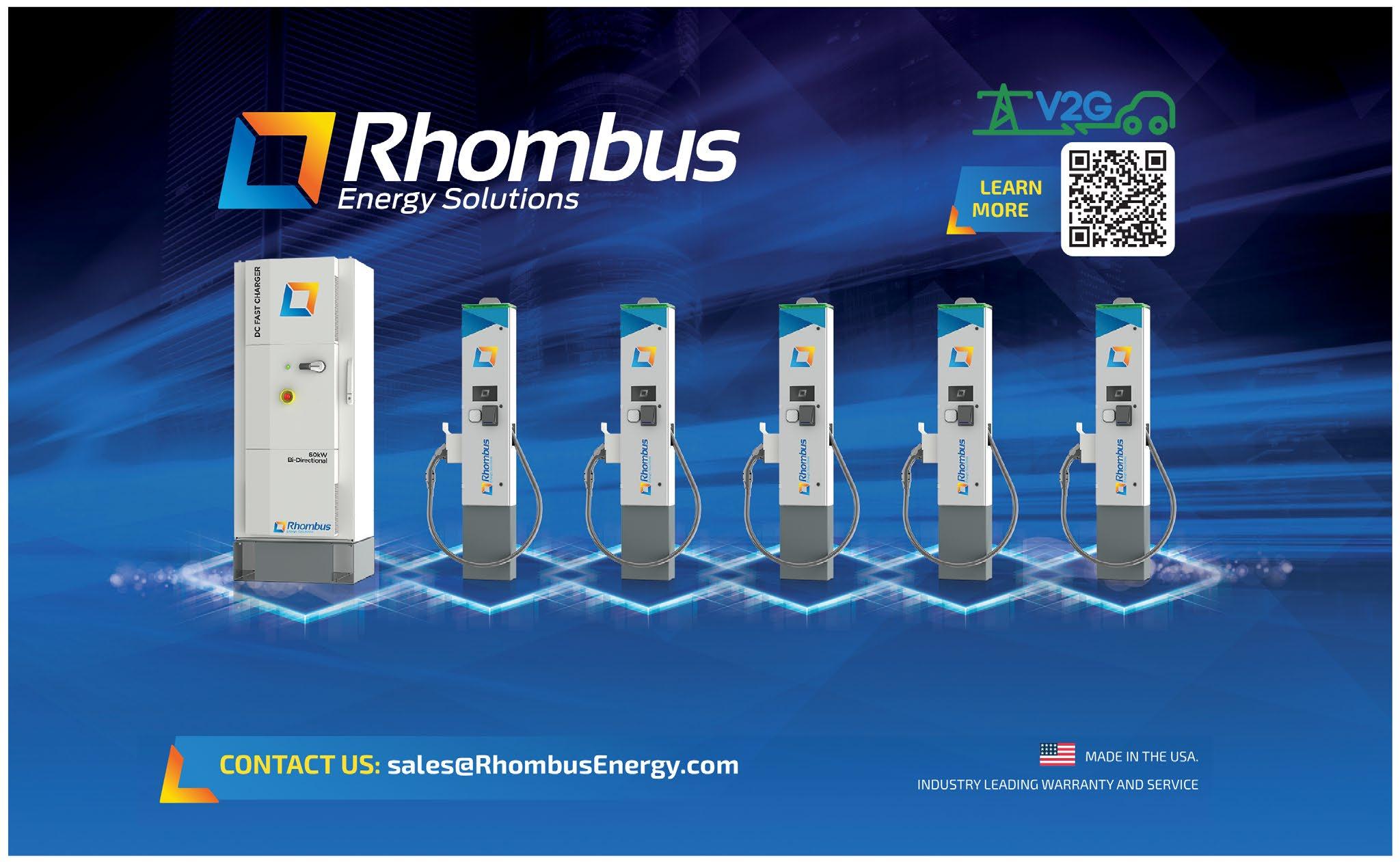
North American Clean Energy 111
Power Outages, Resilience & Energy Storage
Safety & transparency in battery energy storage systems (BESS): UL 9540A & 9540
by Catherine Von Burg
The Department of Energy estimates that centralized, top-down utility power outages cost U.S. businesses approximately $150 billion in direct losses annually. Indirect losses make the cost much higher. As a Berkeley Lab study highlighted across 6 states, state officials and utility executives characteristically neglect to calculate the social and economic costs of longer and more frequent power outages arising from indirect impacts, such as school closings, food spoilage, supply chain disruptions, and deleterious health outcomes. The U.S. now has more power outages than any other industrialized nation, with the number of annual outages doubling from 50 to more than 100 over the past 5 years. Significantly, both the frequency and duration of grid failures is at the highest level since 2013, as extreme weather events ravage antiquated and ill-maintained utility infrastructure. While 40 states are currently experiencing longer grid outages, California, Louisiana, and Maine are at the forefront, with a greater than 50 percent increase in power outage duration.
Centralized power outages are, in large part, being driven by severe weather and climate disasters. NOAA reports that during 2021, there were 20 different billion-dollar weather and climate disasters in the U.S., costing a total of $152.6 billion in damages. In December, NOAA noted that the temperature of the contiguous 48 states was the warmest on record, measuring 6.7 degrees Fahrenheit above average. As of June 2022, there have already been 9 separate billion-dollar weather and climate disasters in the U.S. Back in April, the White House announced that extreme climate-driven floods, drought, heat waves, wildfires and hurricanes could cost the U.S. federal budget approximately $2 trillion per year by the end of the century. The Office of Management and Budget also projected that the U.S. government could spend an additional $25 billion to $128 billion per year in “areas such as coastal disaster relief, flood insurance, crop insurance, health-care insurance, wildland fire suppression and flooding at federal facilities”.

These mounting numbers are almost too large to comprehend, but clearly suggest that climate driven disasters are increasing in number and severity, eroding our economic wellbeing, destroying property, causing deaths, and undermining our ability to access reliable and safe power 24/7. If utilities and power companies are to make the necessary investments to reduce CO2 and GHG emissions driving climate-driven disasters, increase their portfolio of renewable generation, and ‘harden’ the centralized power grid to withstand mounting hurricanes, heat waves, severe winds, and flooding, they will have to spend trillions of dollars.
A more efficient, timely, and costeffective solution

Distributed customer-sited, behind the meter battery energy storage systems (BESS) + solar can help solve these issues. All over the U.S., utility customers are choosing to install batteries as back-up, as well as to discharge daily during utility-based high-rate periods, such as Time-Of-Use (TOU), or to participate in demand charge management programs – all of which serve to lower utility bills, prevent losses from power outages and, in aggregate, decrease overall electrical loads on the grid. Without distributed energy storage, renewable sources of energy are intermittent and unreliable. So, too, is the centralized grid in emergency and extreme weather events during which the centralized delivery of power fails. Distributed and customer-sited energy storage eliminates that intermittency, providing stored power when people need it, long after the sun has set, the wind has stopped blowing, or the grid has failed (or been willfully shut off by the utility during PSPS events). Distributed energy storage is critical to creating energy security and resilience in homes, businesses, hospitals, schools, and communities. Energy storage plays a vital role in the transition to a higher percentage of renewables in our energy portfolio, and provides reserves through the worst climatic conditions and weather events.
The 2020s were predicted to be “the energy storage decade”, with the world exceeding a terawatt-hour of installations. While multiple lithium-ion chemistries are being developed and deployed across the energy storage industry, experts are bullish on lithium ferro phosphate (LFP) surpassing cobalt-based lithium-
ENERGY STORAGE
112 2022 SEPTEMBER• OCTOBER /// www.nacleanenergy.com
ion alternatives, such as manganese cobalt (NMC). Given the sheer number of significant battery recalls over the past several years due to “thermal events” (in which cobalt-based lithium-ion batteries (NMC & NCA) overheat, catch fire, and even explode) it is no surprise that the non-cobalt based LFP chemistry is being adopted by manufacturers and customers alike. If consumers, Fire Marshals and

What is the UL 9540A FireSafety Test Method?


UL 9540A is a series of progressive tests in which the cell, battery module, and larger unit or full installation level components are forced into a state of thermal runaway, using heaters with thermal and gas analysis, to document and characterize the performance profile across different lithium-ion chemistries (LCO, NMC, NCA, LFP) and form factors (pouch, prismatic, cylindrical) used by battery manufacturers. During a test, the equipment being tested is put into safe, controlled environments, where there are “witness boards” that collect shrapnel and other materials if smoke, fire, and/or explosions occur. Test results demonstrate that not all chemistries, form factors, and manufacturing processes provide the same results with an equal level of risk, hazard, and safety.

Why is transparency with UL 9540A test results so important?






Transparency is crucial so customers can make informed decisions about the BESS they are purchasing, and the risk profile that comes along with it. Many manufacturers are choosing the least costly

option to develop their technologies and gain market share, which can pose a higher risk profile and price for customers on the back end when a BESS fails.
Not all “lithium-ion” batteries carry the same hazard and risk profile. With more transparency on behalf of manufacturers – identifying publicly the chemistry, form factor, and manufacturing processes behind the energy storage solutions they

produce - all stakeholders in the energy storage industry can begin to understand the different risk profiles available across the range of “lithium-ion” chemistries in the market. This type of disclosure will serve to drive innovation and propel the entire energy storage industry forward, which is so critical in the face of mounting climate change, severe weather events, and centralized utility power outages.
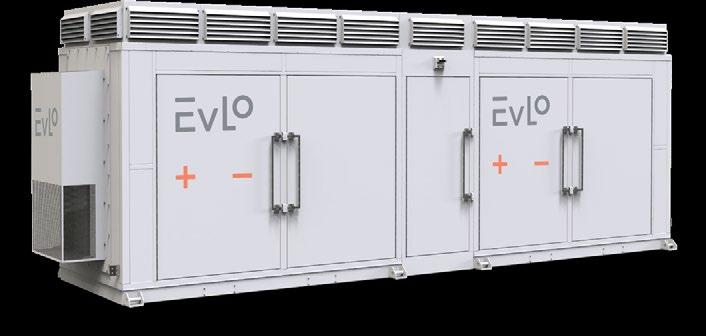
Catherine Von Burg is CEO & President at SimpliPhi Power, which manufactures safe, reliable, and affordable energy storage solutions to empower people and communities globally to generate, store, and utilize power on their terms.

SimpliPhi Power /// simpliphipower.com North American Clean Energy 113 INSTALL FORTRESS POWER SOLAR BATTERY STORAGE CONTACT US FOR MORE INFORMATION www.fortresspower.com | sales@fortresspower.com | (877) 497-6937 Also available, the DuraRack Fortress Power’s new indoor/outdoor, NEMA 3R rated battery cabinet NEW! MAXIMIZE YOUR SOLAR INVESTMENT ACHIEVE ENERGY INDEPENDENCE PROTECTION FROM POWER OUTAGES Self-designed BMS Equipped with automotive grade chips by TI system Double protection by master chips. When the main chip fails, the back-up chip keeps protecting the system Real-time temperature, current, voltage measuring and monitoring Accurate SoC and SoH calculation ® E-BOX-48100R UL1973/ IEC62619/ CE/ UN38.3 Certificates TÜV, SGS, BV International Certified Cooperative Testing Laboratories Sol-Ark listed Quality Assurance E-BOX series, the new generation LFP battery for home energy storage system. It provides safe,well-designed and high-performance standard LFP battery pack for you. The battery pack is compact, easy to install, free of maintenance, and could be deployed to the building block of energy storage system by being assembled in parallel. It is widely applied in home applications, small commercial and industrial energy storage system as well as Telecom stations. Cells& Packs The olivine structure and the stability of P-O bond of LFP cells guarantee much higher safety than those of NCM cells 17 years experiences of pack R&D ensure longer cycle life of the battery Service Local service and local warehouses in Seattle,LA and Dallas 6000circles,10years warranty up to 280kwh in parallel Cycle Quick Response Quick local after-sales response/ 24hours*7days 24*7 UL1973 CEC Listed UL9540 UL9540A https://www.pytesgroup.com A BESS technology for safer intelligent power system operations Safe, sustainable, scalable energy storage systems evloenergy.com info@evloenergy.com
Residential BESS

Inheriting the stability and reliability of US2000C and US3000C, US5000 is the latest Pylontech 48V LFP battery with bigger capacity at 4.8kWh modular and stronger functions for high current strike endurance, dual active protection, remote upgrade feature, widely internal compatibility up to 16 modules per single string, and flexible DIY installation with standard 19 inch brackets/rack/cabinet. Certification: UL9540A/IEC6269/CE/UL1973
Pylon Technologies, Co., Ltd. /// www.en.pylontech.com.cn
Let’s Make Power Plants Obsolete
Full-cell batteries from coal composite

Ultra-fast battery charging in solar applications

Discover Battery, a SOLV4EX company, headquartered in Richmond, British Columbia, introduces LYNK II Communication Gateway to enable closed-loop integration with its AES LiFePO4 and HELIOS ESS batteries. LYNK II Gateway facilitates closed-loop communication for Discover Lithium batteries with power conversion equipment to deliver ultra-fast charging performance, battery system balancing, improved life, and functionally safe system integrations. The LYNK II Communication Gateway aggregates and displays the real-time State-ofCharge for Discover AES LiFePO4 Solar and HELIOS ESS batteries. LYNK II unlocks the full potential of Discover Lithium batteries for solar applications by enabling them to optimize the charging configurations of Schneider Electric, Sol-Ark, Victron, Outback, Studer, and SMA off-grid inverter-chargers, facilitating up to a 40% improvement in their 0% to 100% SoC recharging times. Additionally, with three built-in programable relays, LYNK II can trigger vital systems on-off such as generators, air conditioners, or heating mats based on real-time battery information.

Discover Battery /// www.discoverbattery.com
Vertically integrated energy storage system
Briggs & Stratton Energy Solutions has launched its first SimpliPhi-branded energy storage system after acquiring the energy storage system provider last year. The SimpliPHI Energy Storage System consists of three core components: a 6-kW inverter, a 4.9-kWh battery, and the EnergyTrak management software. The SimpliPHI ESS can be AC- or DC-coupled and the inverter can scale up to nine units. The 4.9kWh battery uses lithium iron phosphate (LFP) chemistry and can scale up to 72 modules for a total energy storage capacity of 358.5kWh. Both the SimpliPHI inverter and battery are IP65 rated so they can be installed indoors or outdoors. The SimpliPHI ESS also features EnergyTrak, a monitoring and control software platform that allows users to manage their energy usage through a mobile app that delivers real-time status and updates to home and business owners.
SimpliPhi Power /// www.simpliphipower.com
X-BATT has combined coal with its low-cost, resin-based technology to create full-cell batteries. Early tests in full coin cells show that the company’s batteries, utilizing this coal composite anode material, have reached over 400 cycles. X-BATT has also scaled-up this technology, with the help of the Battery Innovation Center, into single layer pouch cells that have surpassed 100 cycles and are continuing to perform well. The benefits of this new material don’t stop at its increased performance, this technology could also lead to a domestic source for anode material, helping the United States reduce reliance on foreign countries for the critical materials necessary to support the increased demand for electrification.

To help further its research, the Department of Energy’s National Energy Technology Laboratory (NETL) awarded Semplastics, X-BATT’s parent company a $1 million contract to produce polymer derived ceramic composite anodes using coal as a carbon source for lithium-ion batteries. The company has discovered that adding a carbon source, such as coal, to the PDC material offers stability and normalizes charge / discharge behavior, improving cycling life and decreasing nominal voltage.
X-BATT /// www.x-battinc.com

AC coupled battery storage
Generac Power Systems has updated its PWRcell products that enables AC-coupled battery storage, as well as AC generator integration. Through a new firmware update, Generac PWRcell battery storage products will now accept up to 7.6kW of AC power generated by third-party PV inverters, giving consumers the opportunity to increase their energy independence and help protect themselves from outages. The same firmware update also unlocks the opportunity for a new or existing Generac Guardian home standby generator to connect to a PWRcell solar + battery storage system. The AC-powered Guardian units provide extended protection during power outages when battery power has been exhausted, and by combining an air-cooled generator with battery storage, customers can enjoy the value of clean energy, along with the reliability of a home standby unit.

Generac /// www.generac.com

ENERGY STORAGE
114 2022 SEPTEMBER• OCTOBER /// www.nacleanenergy.com info@peakpowerenergy.com 1-888-PEAK-088 (732-5088)
Your C&I buildings are key to the clean energy revolution. The future of electricity is decentralized, decarbonized, and democratized. Is your building ready to participate in the grid of the future? Find out how your journey to net zero can be profitable. PeakPowerEnergy.com

North American Clean Energy 115 ACCELERATING THE ENERGY TRANSITION Actionable education, invaluable networking— and an immersive expo hall experience. Join us February 14-16, 2023 in Long Beach, CA for Intersolar North America and Energy Storage North America, the premier US-based conference and trade show focused on solar, energy storage, and EV charging infrastructure. FEBRUARY 14-16, 2023 / LONG BEACH, CA / #ISNAESNA23 Produced by: REGISTER NOW FOR EARLY BIRD PRICING
One constant of the climate crisis has been that every year, extreme weather events show the threat that rising temperatures pose to people across the world, as well as to the electrical grids we rely on to power our societies. Even with several months left in 2022, this year has proven to be particularly brutal. Challenges that have persisted for years have continued with no end in sight, such as the drought in the American West draining hydropower capacity, and demand outstripping supply on Texas’ beleaguered grid.
Perhaps the most headline-grabbing climate event of the year, though, was the crippling heatwave that struck Europe over the summer. Even in southern European countries used to fairly hot summers, temperatures soared past 40°C (104°F) and even approached 50°C (122°F) in some places. Meanwhile, typically mild northern European countries like the United Kingdom saw their infrastructure buckling as they experienced the hottest days ever recorded. When the worst of the heat had subsided by August, thousands of tragic deaths could be attributed to the heat.

Here in Canada, we’ve had a relatively mild summer, but we experienced our own recordbreaking heat in the summer of 2021, when our Western provinces grappled with the “heat dome” that hovered over Western North America. Lytton, British Columbia recorded Canada’s highest ever temperature (49.6°C/121.3°F) shortly before a wildfire destroyed the town; across the West, over 800 deaths could be attributed to the heat.
Grid Operators Prepare for the New Normal
by Matthew Sachs
Both this year’s European heat wave and last year’s in Canada struck parts of the world not normally accustomed to sweltering summers. This is especially true at home. In most of Europe, air conditioning is exceedingly rare, with less than 5 percent of homes in Germany, France, and the UK having it. A/C is more common in Canada, installed in over 60 percent of homes, though this has traditionally been much lower in provinces with mild summers. This compares to nearly 90 percent of homes in the United States.
The lower usage of A/C speaks to how both of these regions have reasonably been more concerned with keeping warm in the winter. Many homes are illequipped to deal with scorching heat. This will have to change soon as the cold countries in the northern hemisphere seek to head off deaths related to heat waves, and avoid the crippling heat that can bring these societies to a halt. While global A/C usage is expected to surge in the coming decades as families in emerging economies gain the means to install units, cold countries in the global north also need to prepare for the grid consequences of higher A/C usage, and generally higher summer demand. Some countries are already confronting this; in July, in a bid to conserve electricity, Spain announced that public buildings could not set their A/C below 27°C/80.6°F.
Grid operators in Canada and Europe should take these heatwaves as a warning of things to come. As summer heatwaves grow in intensity and duration, and temperatures in general rise, more families will turn to A/C to cope. With HVAC systems being the

biggest energy consumers of homes, this will lead to greatly increased electricity demand. This will naturally result in the need for more supply, but increasing summer demand isn’t the only way operators will need to change how they run grids. Many utilities in Canada and Europe plan for scheduled maintenance in the summer, while the greater stress on the grid is bringing aging infrastructure to its breaking point sooner than expected. In a vicious cycle, higher summer demand will also come as drought ripples through many regions of Canada and Europe, reducing the capacity for hydropower as rivers and reservoirs dry up. This is an especially acute concern in Canada, where hydro makes up the largest proportion of electricity generation.
How are grid operators to prepare for the higher summer demand in years ahead in countries where demand typically peaks in the winter? While higher generation will be necessary, greatly expanding power supply requires massive infrastructure investments. These projects can take years, if not decades, to come to full fruition. There is also the matter of the grid’s capacity; transmission and distribution networks can only carry so much electricity before operators must curtail generation. This is a particular concern for intermittent sources like solar and wind, which must make up the bulk of new generation facilities to meet clean energy goals. Grid capacity will especially need to increase in Europe, which hosts both aggressive renewable initiatives and grid infrastructure that’s decades old.
The good news, for both grid operators and their customers, is that there are immediate ways to improve grid capacity. Operators in Canada and Europe can turn to software-based solutions to maximize their existing assets while they plan for long-term upgrades to the grid. Energy management software can optimize energy use when demand is highest, and pairs particularly well with energy storage, sending intermittent solar and wind to storage when demand is low or the grid is nearing capacity. Cleantech software can also give operators and developers the means to aggregate distributed assets while they wait for utility-scale
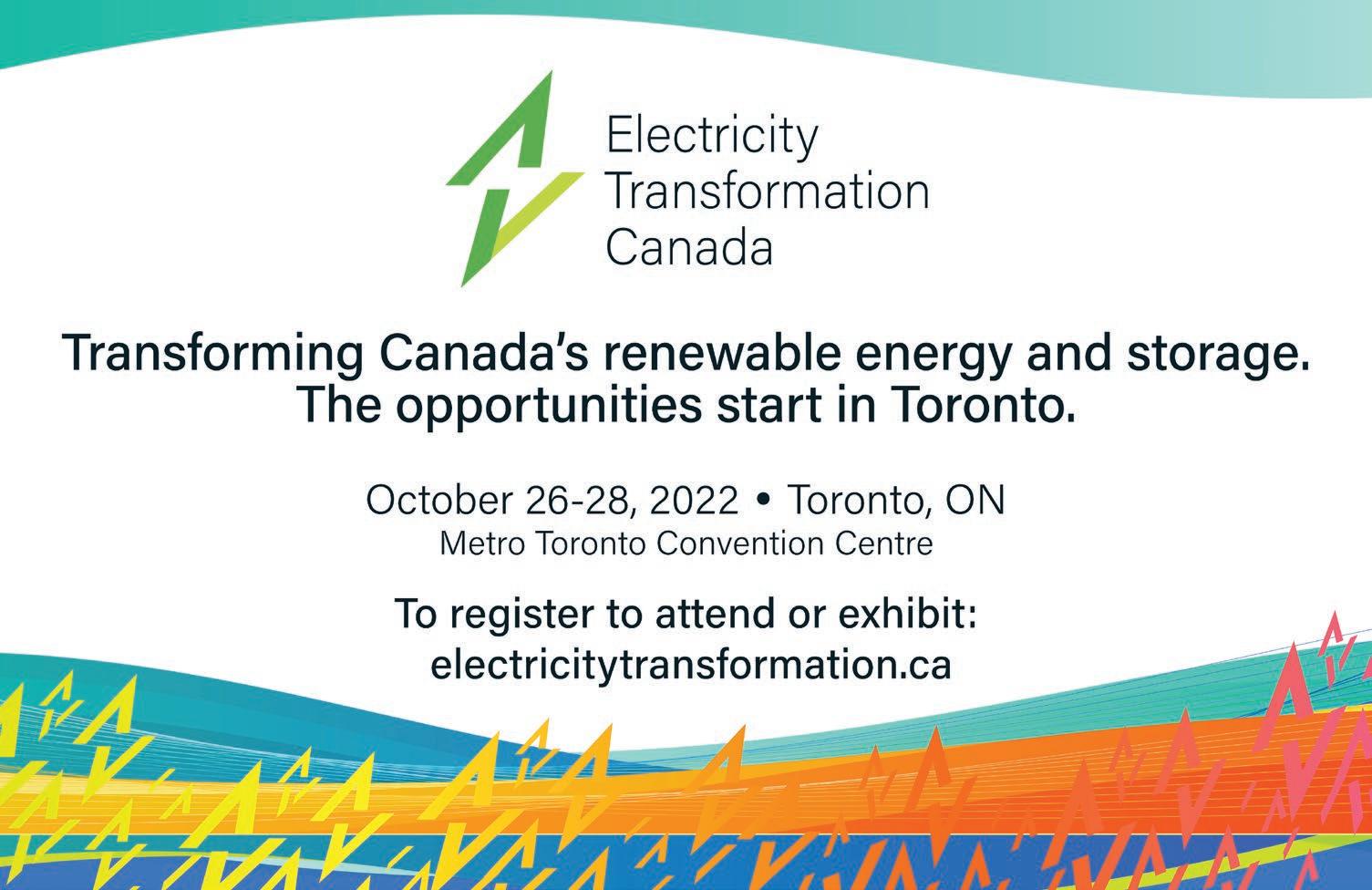
generation facilities to come online, helping communities increase capacity while meeting their clean energy goals.
The surge in A/C across the globe is one of many impacts of the warming climate; homes will inevitably increase their energy usage so residents can survive the summer. Utilities and grid operators can do their part to ensure this demand is met from clean sources. However, that will require expanding the capacity of the grid, especially in the global north where millions of homes have the means to immediately install an A/C but have avoided it up to now. Cleantech software is the key to bridging the gap to increased utility-scale clean power generation, and can even make small, distributed assets meet a community’s energy needsincluding those home A/C units.
ENERGY EFFICIENCY
Peak Power /// peakpowerenergy.com 2022 SEPTEMBER• OCTOBER /// www.nacleanenergy.com 116
Matthew Sachs is Chief Operating Officer of Peak Power, a Canadian climate tech company with a core focus in energy management and energy storage.
Powering the clean energy transition
SEPTEMBER 19-22, 2022
ANAHEIM, CA
Powering the clean energy transition



















SEPTEMBER 19-22, 2022
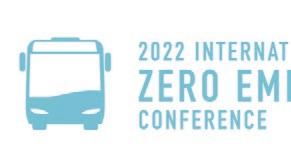

































ANAHEIM, CA
POWERED BY
co-locating with
POWERED BY






















































































































EVENTS CALENDAR EVENTS CALENDAR
SEPTEMBER
07-08 Renewables, Wholesale Electricity Markets & The Energy Transition TBD – Houston, TX; infocastinc.com
07-09 ACP Resource & Technology Conference TBD – Las Vegas, NV; cleanpower.org
11-14 American Floating Offshore Wind Technical Summit Westin Harbor View – Portland, ME; www.afloatsummit.com
19-22 RE+ 22 Anaheim Convention Center – Anaheim, CA; www.solarpowerinternational.com
26-30 SolarPACES Conference Albuquerque Convention Center – Albuquerque, NM; www.solarpaces-conference.org
OCTOBER
11-12 RE+ Florida
Doubletree by Hilton Miami Airport Convention Center – Miami, FL; events.solar/florida/
13 ACORE Grid Forum
1777 F Street NW – Washington, DC; acoregridforum.org
18-19 Offshore WINDPOWER Conference and Exhibition 2022 Rhode Island Convention Center – Providence, RI; cleanpower.org/events/offshore-windpower-2022/
26-28 Electricity Transformation Canada Metro Toronto Convention Centre – Toronto, ON; electricitytransformation.ca
NOVEMBER
02-03 Mountain West Clean Energy Summit Radisson Hotel Salt Lake City Downtown – Salt Lake City, UT; infocastinc.com
30-02 Southeast Renewable Energy Summit Omni Charlotte Hotel – Charlotte, NC; infocastinc.com
DECEMBER
08-09 Sustainable Aviation Futures North America Intercontinental Hotel – San Francisco, CA; www.safcongressna.com
JANUARY 2023
24-25 Projects & Money Royal Sonesta New Orleans – New Orleans, LA; infocastinc.com
FEBRUARY 2023
07-08 Operations & Maintenance & Safety Conference 2023
Kalahari Resorts and Conventions – Round Rock, TX; cleanpower.org/events/operations-and-maintenance-and-safety-conference-2023/
14-16 Intersolar North America (ISNA) Long Beach Convention Center – Long Beach, CA; www.intersolar.us
14-16 Energy Storage North America (ESNA) Long Beach Convention Center – Long Beach, CA; www.esnaexpo.com
22-23 RE+ Northeast Westin Boston Seaport District – Boston, MA; re-plus.events/northeast/
MARCH 2023
12-15 Solar + Wind Finance & Investment TBD – Phoenix, AZ; infocastinc.com
Send us your clean energy show and event listings. Email information to the editor at editor@nacleanenergy.com
Page Company Website 88 Abaris www.abaris.com 72 ACE Clamp aceclamp.com 19 ACE NY www.aceny.org 31 Allied Tube & Conduit atkore.com 79 American Clean Power cleanpower.org 31 American Earth Anchors americanearthanchors.com 57 American Ground Screw www.americangroundscrew.com 13 American Helios Constructors, LLC www.americanhelios.com 76 American Polywater www.polywater.com 43 American Wire Group buyawg.com 3 APA www.apasolar.com 37 Aptos Solar Technology, LLC www.aptossolar.com 71 Aurora Solar www.aurorasolar.com 8 Axitec, LLC www.axitecsolar.com 85 Bachmann Electronic Corp www.bachmann.info 5 Baja Carports bajacarports.com 14 Bioenno Power www.bioennopower.com 96 Bird Control Group www.birdcontrolgroup.com 30 BladeRanger Ltd www.bladeranger.com 52 Borrego www.borregoenergy.com 68 Brent Scarbrough & Company www.brent.us 49 Briggs & Stratton's briggsandstratton.com 77 Buffalo Turbine www.buffaloturbine.com 12 c3controls www.c3controls.com 70 CAB Products www.cabproducts.com 108 Component Solutions Group www.componentsolutionsgroup.com 68 Continential Control Systems ctlsys.com 54 Cornerstone Systems cornerstone-systems.com 106 Crown Battery www.crownbattery.com 81 DeepSouth www.deepsouthcrane.com 47 Depcom Power depcompower.com 90 Detect www.detect-inc.com OBC DEWESoft, LLC dewesoft.com 107 Discover Battery discoverbattery.com 67 e-On Batteries www.e-onbatteries.com 20 Electric Power Engineers epeconsulting.com 77 Electrical Consultants, Inc. eciusa.com 116 Electricity Transformation Canada www.electricitytransformation.ca 89 Elevator Industry Work Preservation Fund www.eiwpf.org 86 EMA Electromechanics www.emaelectromechanics.com 45 & 56 Epec Solutions, Inc. epecsolutionsinc.com 10 ETI Energy Tools, LLC www.etienergytools.com 113 EVLO evloenergy.com 66 Fibox fiboxusa.com 84 Flash Technology www.flashtechnology.com 21 Fluke Solar solar.fluke.com 113 Fortress Power fortresspower.com 48 Ginlong Technologies Co., Ltd. solisinverters.com 28 Granite Construction Inc graniteconstruction.com 104 GreenPWR greenpwr.com 17 Gripple Inc. www.gripple.com 64 Hammond Power Solutions hammondpowersolutions.com 40 Heico Fasteners www.heico-lock.us 50 Heyco www.heyco.com 27 HuksefluxUSA Inc www.huksefluxusa.com 62 ICC Evaluation Service, LLC solar-rating.org 25 IHI Terrasun Solutions, Inc. ihiterrasun.com 60 IMT Solar imtsolar.com 46 Indji Systens www.indjiwatch.com 22 Infra Metals www.infra-metals.com 115 Intersolar www.intersolar.us 27 ISO-CAL North America www.isocalnorthamerica.com 29 KG Technologies, Inc www.kgtechnologies.net 26 Kinetic Solar www.kineticsolar.com 31 Kong USA www.kong.it 78 Lemoine lemoineland.com 64 LEOCH BATTERY www.leoch.us 68 Lock Joint Tube ljtube.com 80 Logisticus Group logisticusgroup.com 62 Longi www.longi.com 110 Mango Power www.mangopower.com 94 Mankiewicz Coatings www.mankiewicz.com 83 Mistras sensoriawind.com 69 MK Battery mkbattery.com 105 Nel Hydrogen www.nelhydrogen.com 56 Nevados Engineering www.nevados.solar 70 Nine Fasteners www.ninefasteners.com 7 Nucor Corporation www.nucor.com 53 OMCO Solar omcosolar.com 23 OMG Roofing Products www.omgsolar.com 39 Panasonic Eco Systems North America na.panasonic.com 114 Peak Power www.peakpowerenergy.com 66 Polar Racking polarracking.com 98 Port of Corpus Christi www.portofcc.com 82 Port of Lake Charles portlc.com 99 Port of Vancouver portvanusa.com 55 Power Electronics www.power-electronics.com IBC Powering America www.powering-america.org 78 Premier Water Cleaning www.premsc.com 11 Primoris Renewable Energy www.primoriscorp.com 32 & 33 Prysmian Group na.prysmiangroup.com 41 PV Hardware www.pvhardware.com IFC PV Labels PVLabels.com 74 PXiSE Energy Solutions pxise.com 61 Pylon Technologies Company en.pylontech.com.cn 113 PYTES Energy www.pytesgroup.com 9 QuickBOLT quickbolt.com 75 Rainwise Inc. www.pvmet.com 48 Raptor Maps, Inc. raptormaps.com 117 RE+ RE-plus.com 103 Reef Industries griffolyn.com 15 Resa Power, LLC resapower.com 111 Rhombus Energy Solutions www.rhombusenergysolutions.com 87 Richardson Electonics rellpower.com 73 Rolls Battery rollsbattery.com 18 RPM Rollformed Metal Products www.rpmsteel.com 72 S-5! www.s-5.com 93 Safety Technology USA LLC www.safetytechnologyusa.com 77 Schletter Solar GmbH www.schletter-group.com 109 Siba Fuses www.siballc.net 112 Sinexcel www.sinexcel.us 76 Sol-Ark www.sol-ark.com 24 Solar Connections International solarconnections.com 75 Solar Mounts www.solarmounts.com 58 Solidification Products International, Inc. www.oilbarriers.com 42 Sollega www.sollega.com 64 Solmetric www.solmetric.com 60 Solo LLC www.gosolo.io 59 Soltec soltec.com 51 Staubli www.ecs-ecart.com 78 Tech Products www.techproducts.com 44 TECSI Solar tecsisolar.com 16 TectoniCorp www.iroof.solar 63 Terrasmart terrasmart.com 52 TorcSill torcsill.com 95 TotalEnergies www.totalenergies.com 50 Trachte trachteusa.com 101 Transportation Partners and Logistics LLC tpandl.com 30 U.S. Battery www.usbattery.com 91 Vaisala windcubelidar.com 30 VelociWrapper www.velociwrapper.com 65 Wago www.wago.us 97 WindESCo windesco.com 76 Word Rock Drills wordrockdrills.com 74 Zilla zillarac.com
ADVERTISERS’ WEBSITE DIRECTORY ADVERTISERS’ WEBSITE DIRECTORY 118 2022 SEPTEMBER• OCTOBER /// www.nacleanenergy.com
ALL ELECTRICAL PROJECTS. ALL RE+ TECHNOLOGIES. EVERY TIME.














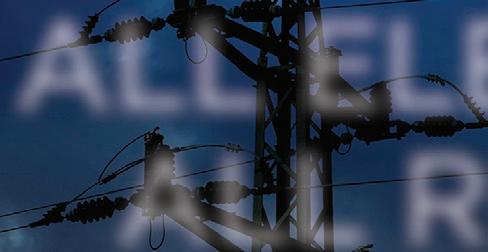
TRUST THE POWERING AMERICA TEAM FOR EXPERTISE, INTEGRITY, AND RESPONSIBILTY


Powering America’s professional team of IBEW craftsmen and their signatory contractors—including those who are members of the National Electrical Contractors Association—has the workforce with the training, expertise, and certifications to help you deliver any solar, wind, or other clean energy project safely, on time, and to the right specifications.
We’re the one place to bring all your renewable energy challenges. Because we deliver the best solutions for a cleaner, e cient, and bright future.

Visit us at RE+ Booth 3291.

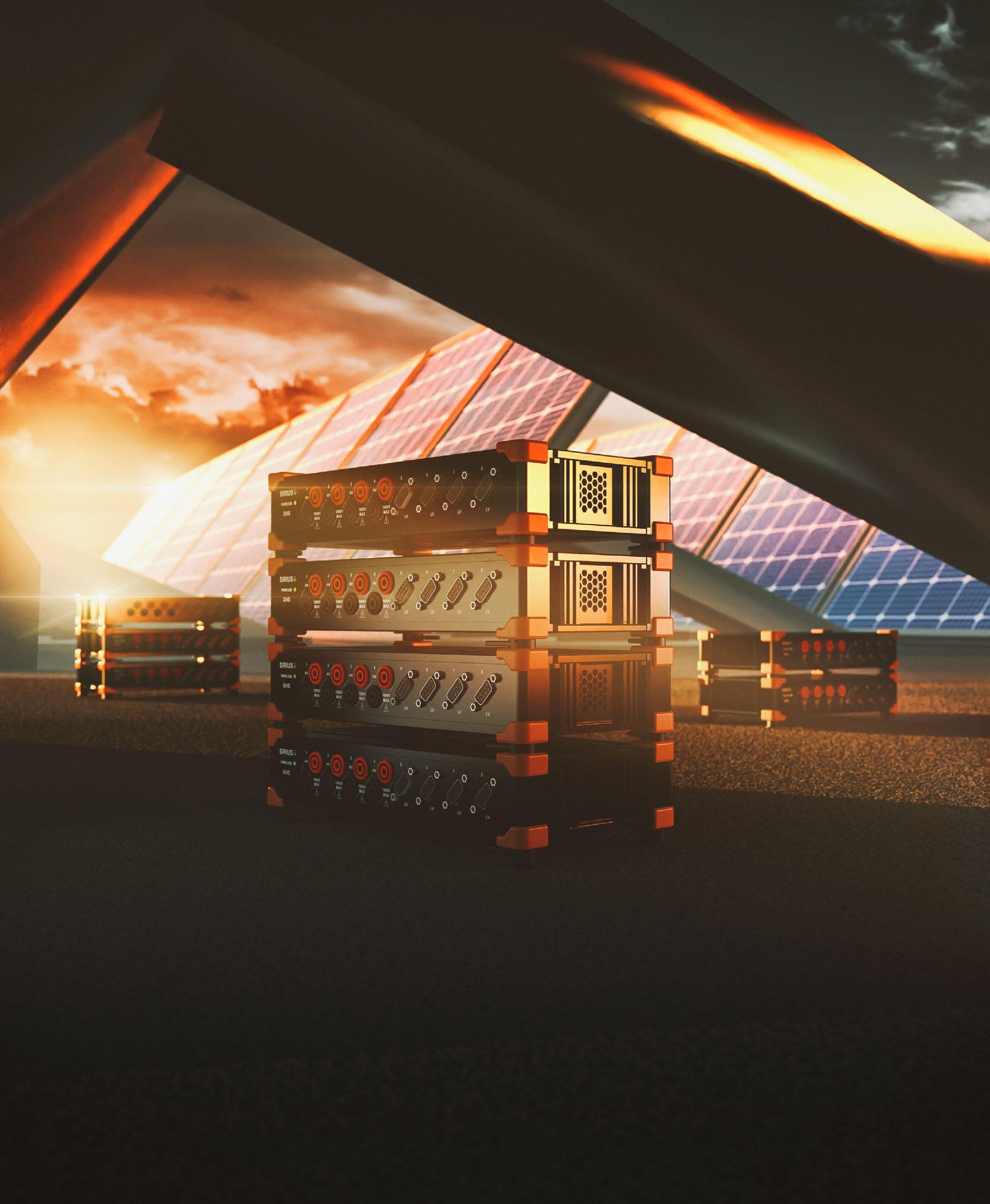
DEWESOFT DATA ACQUISITION AND ANALYSIS power measurements | power quality measurements | converter/overall efficiency direct/diffused solar radiation evaluation | IEC-61000-4-30 Class A compliance Dewesoft LLC (Sales & Support) | 10730 Logan Street, Whitehouse, Ohio 43571 dewesoft.com | +1-855-DEWE-NOW (339-3669) | sales.us@dewesoft.com





















































































 by Allan D. Evora
by Allan D. Evora











 by Sam Everett
by Sam Everett





 Courtesy of Capeway Roofing Systems
Courtesy of Capeway Roofing Systems

































 Richard Pantel, P.E., is President of TectoniCorp, which offers the Instant Roof Framing Analysis iRooFA engineering service. His can be reached at rpantel@iroof.solar / 908-507-5500.
Richard Pantel, P.E., is President of TectoniCorp, which offers the Instant Roof Framing Analysis iRooFA engineering service. His can be reached at rpantel@iroof.solar / 908-507-5500.

 by Greg Fasullo
by Greg Fasullo

























































































































































































































































































































































































































































































































































































































 by Samuel B Tasker
by Samuel B Tasker
















 by JC Culberson
by JC Culberson













 by Ian Prowell
by Ian Prowell


























 by Matthieu Boquet
by Matthieu Boquet


























































 by Aaron Huber
by Aaron Huber






 by Philip Gross
by Philip Gross


















 by Lars Arnold
by Lars Arnold




































































































































































































